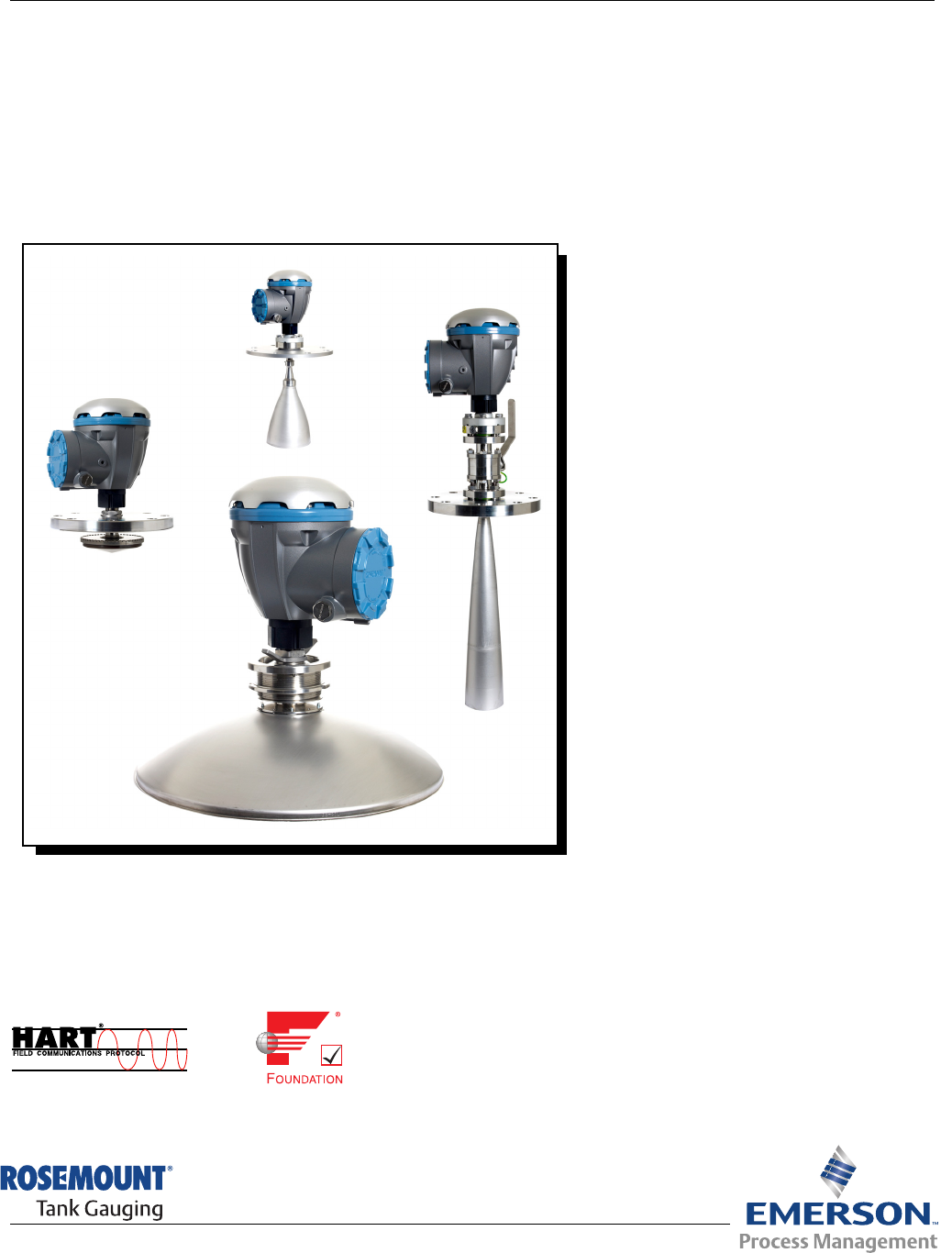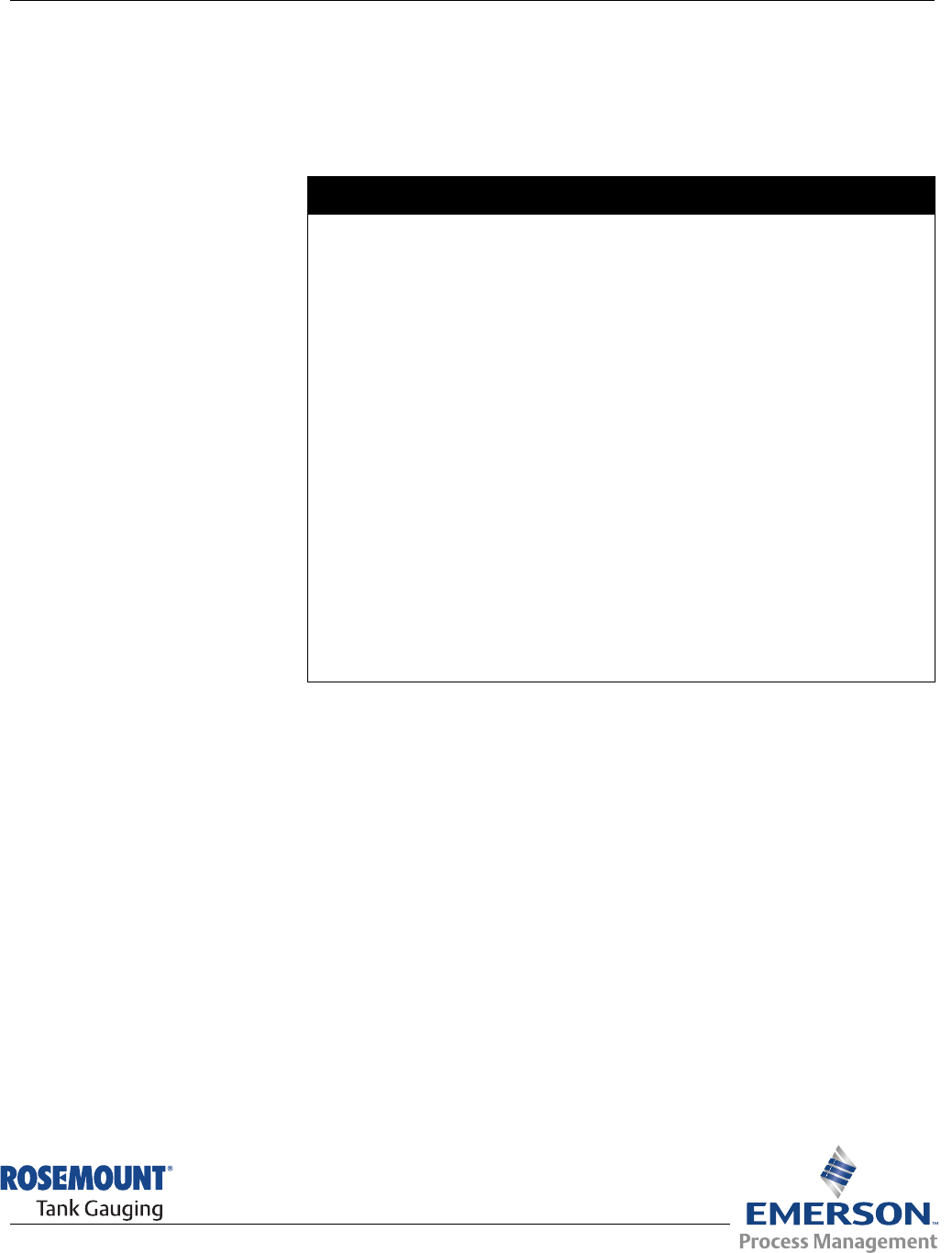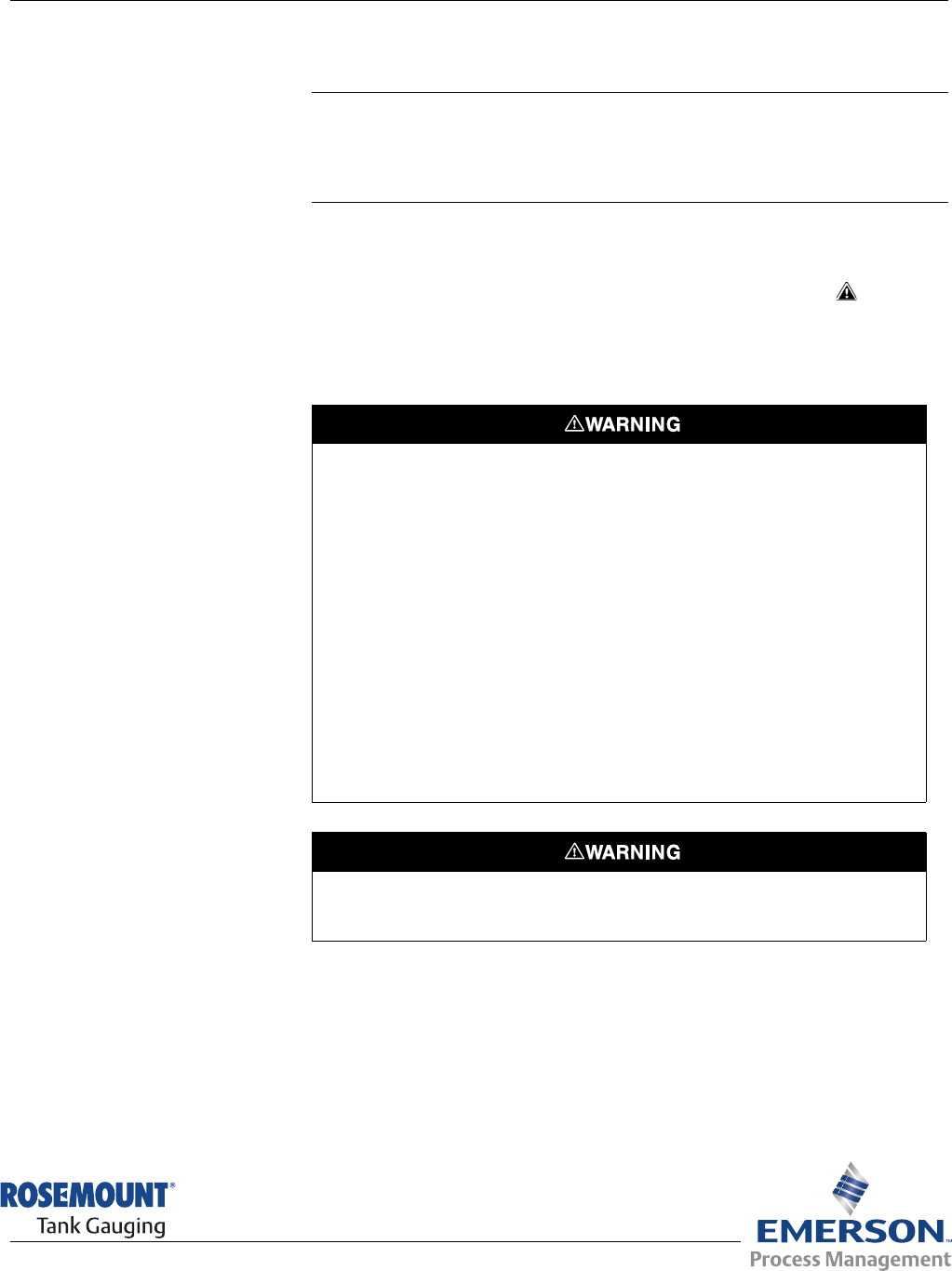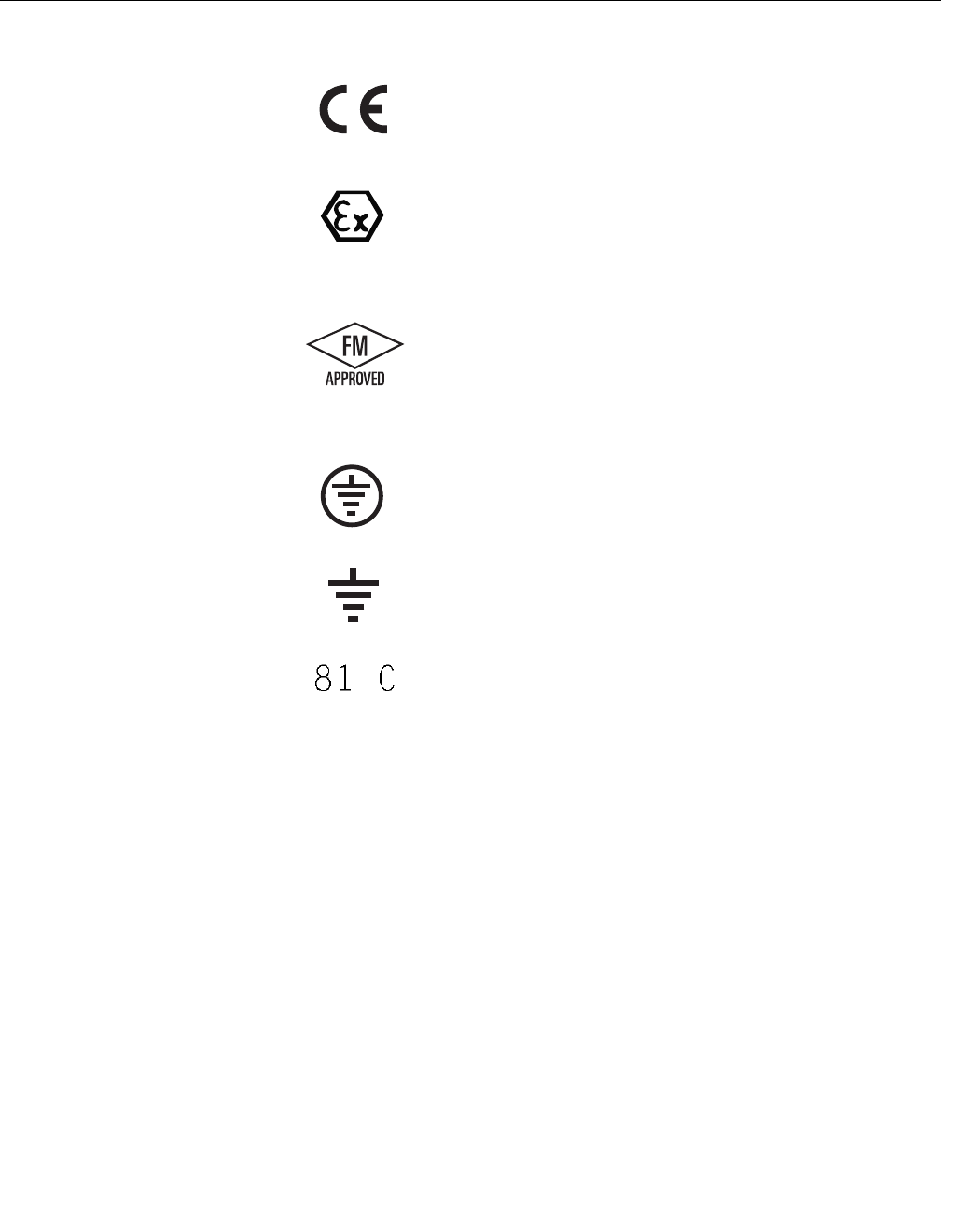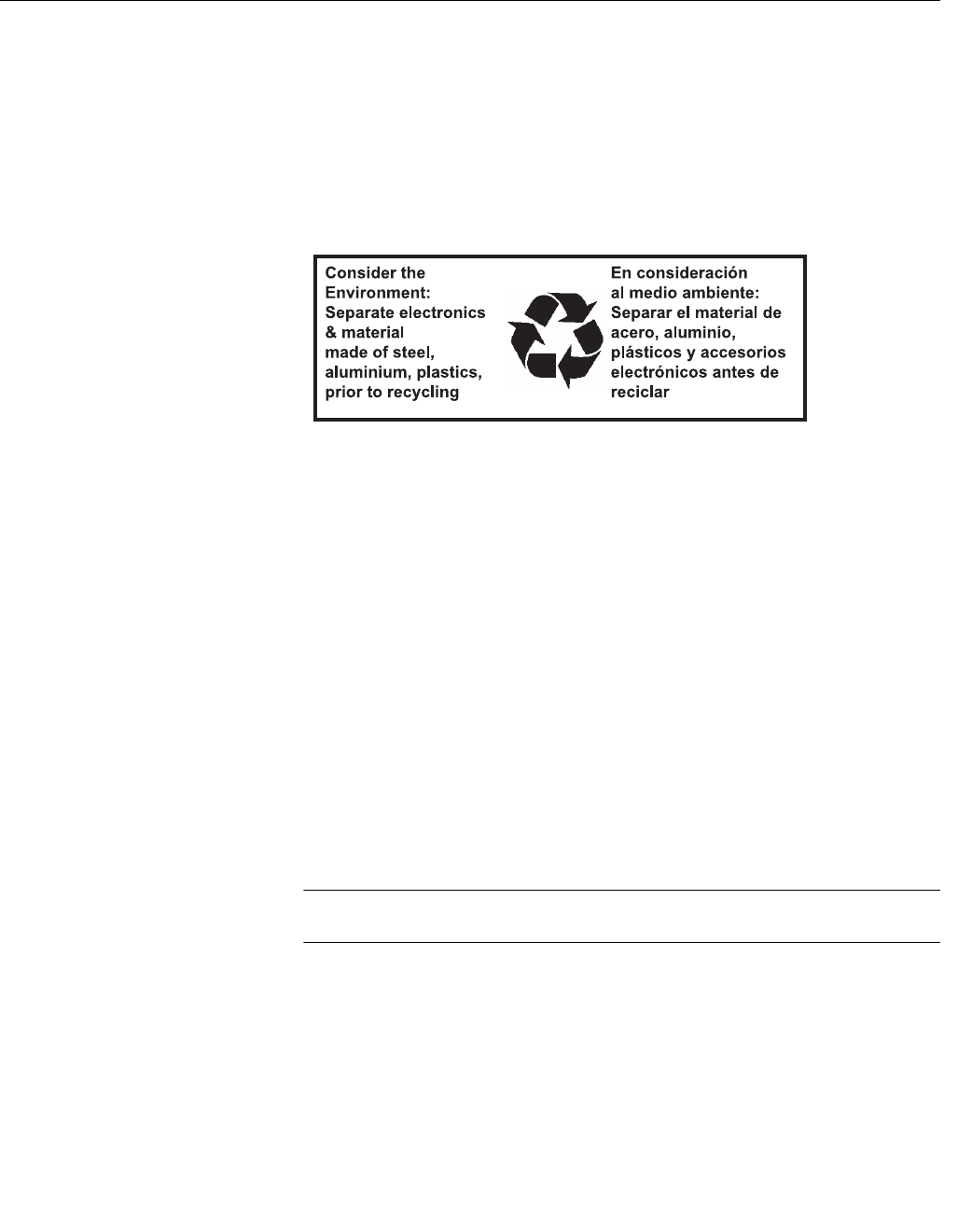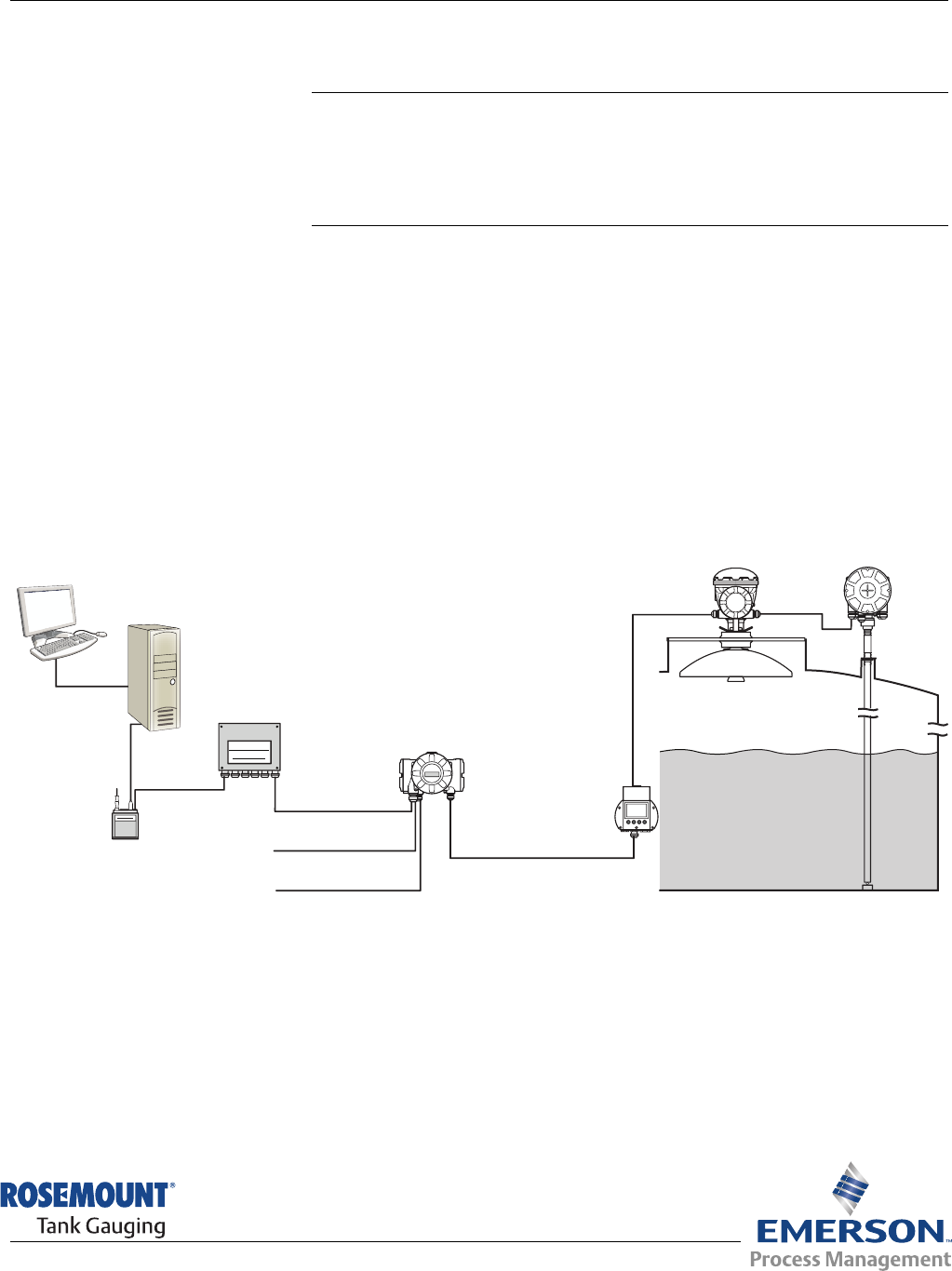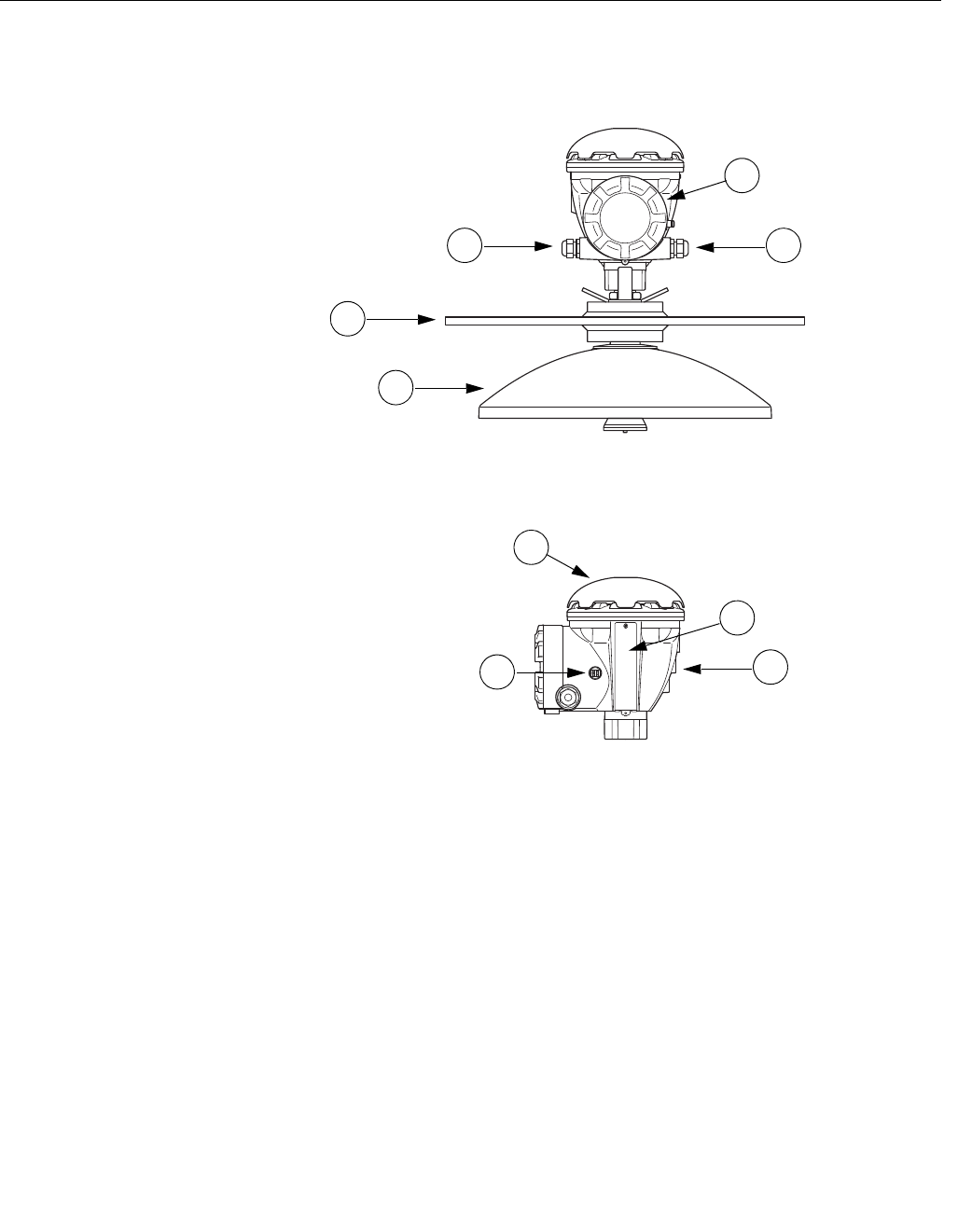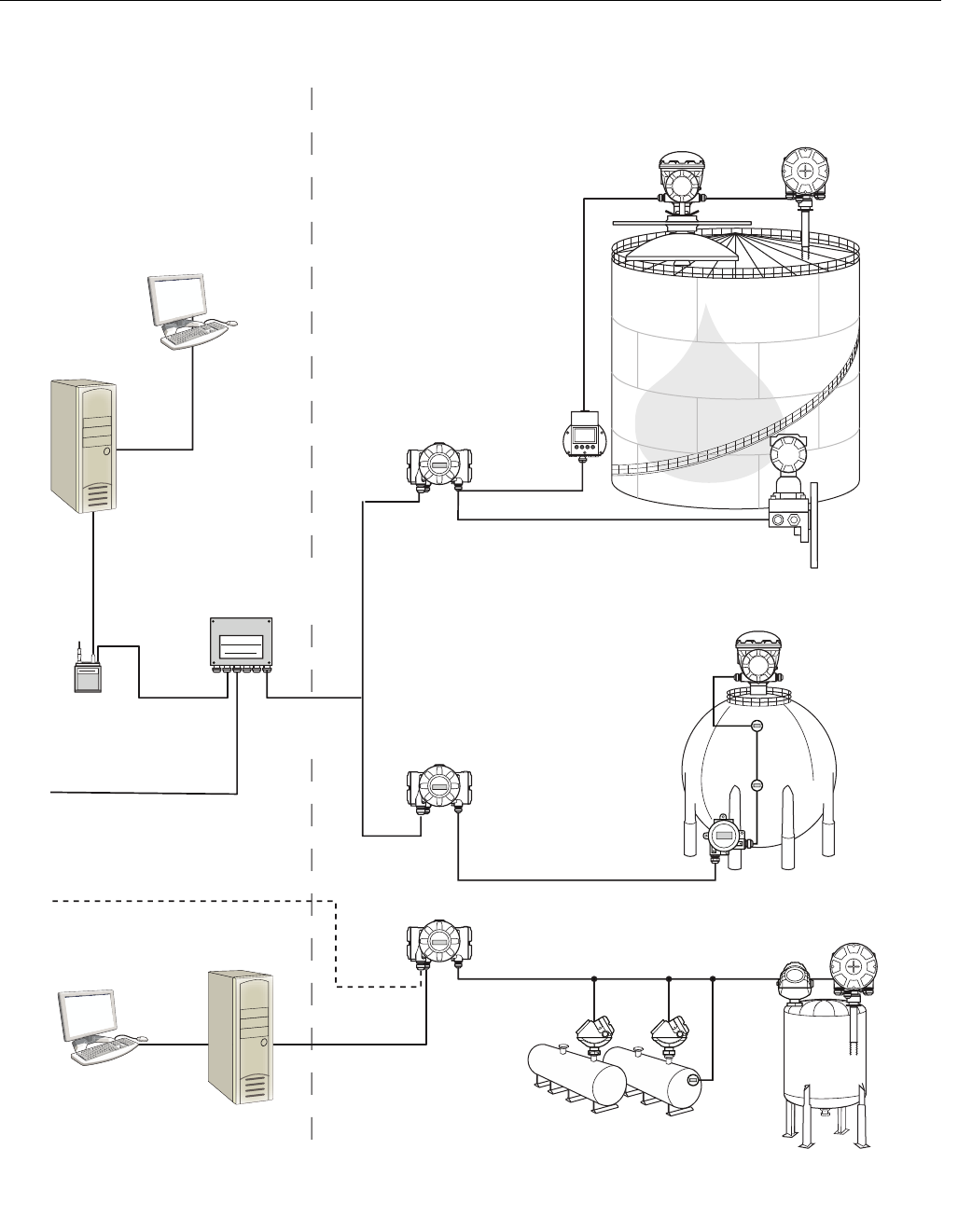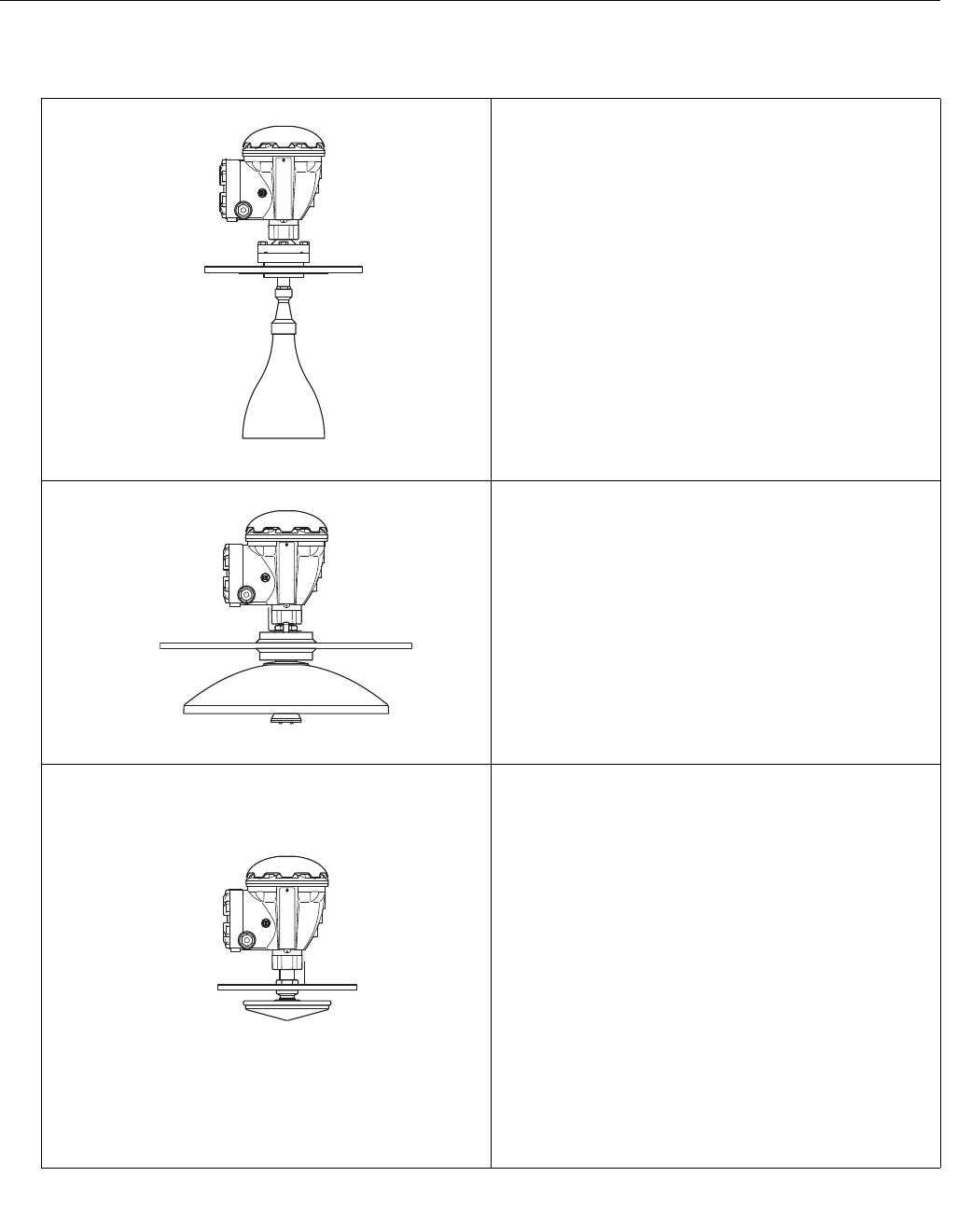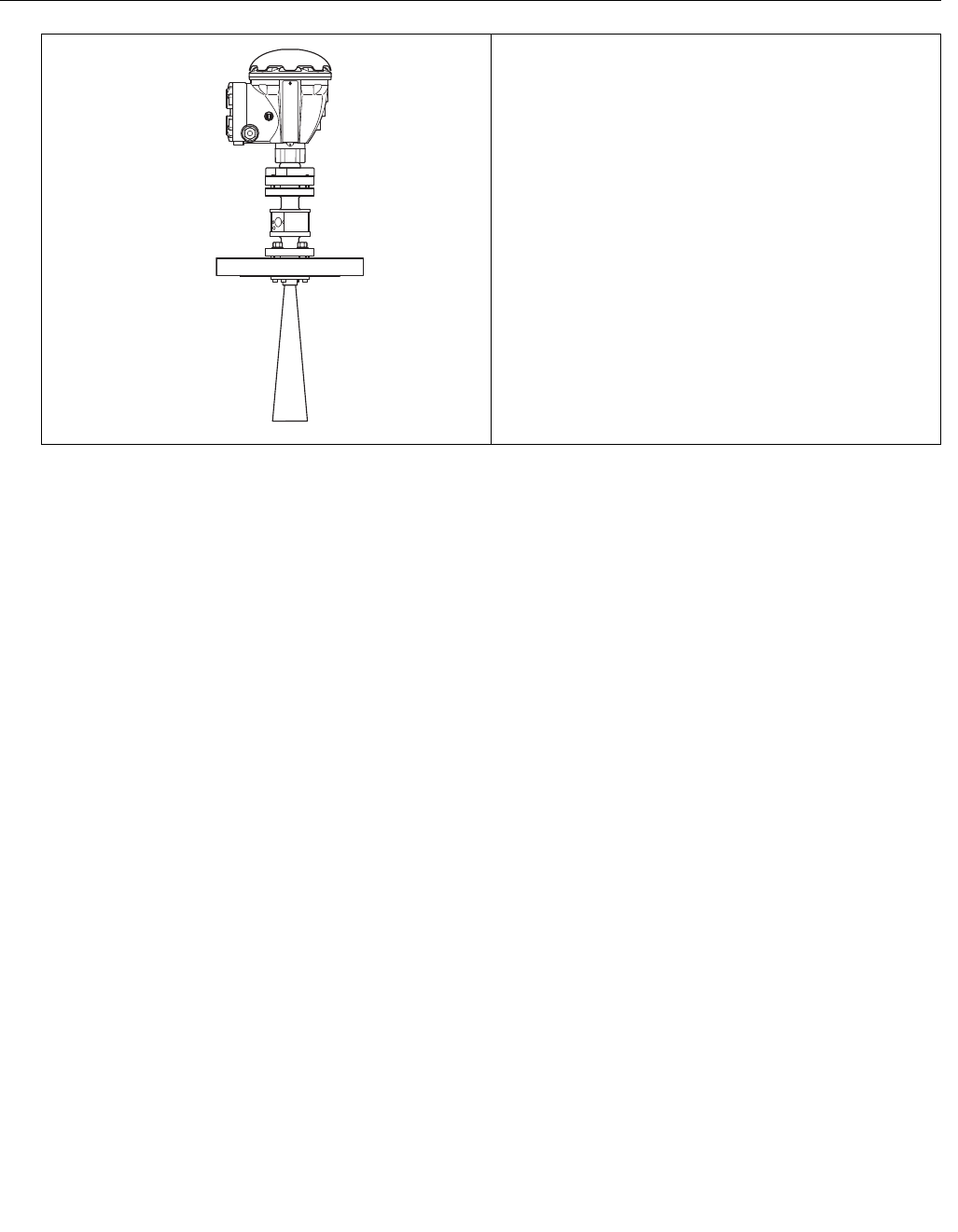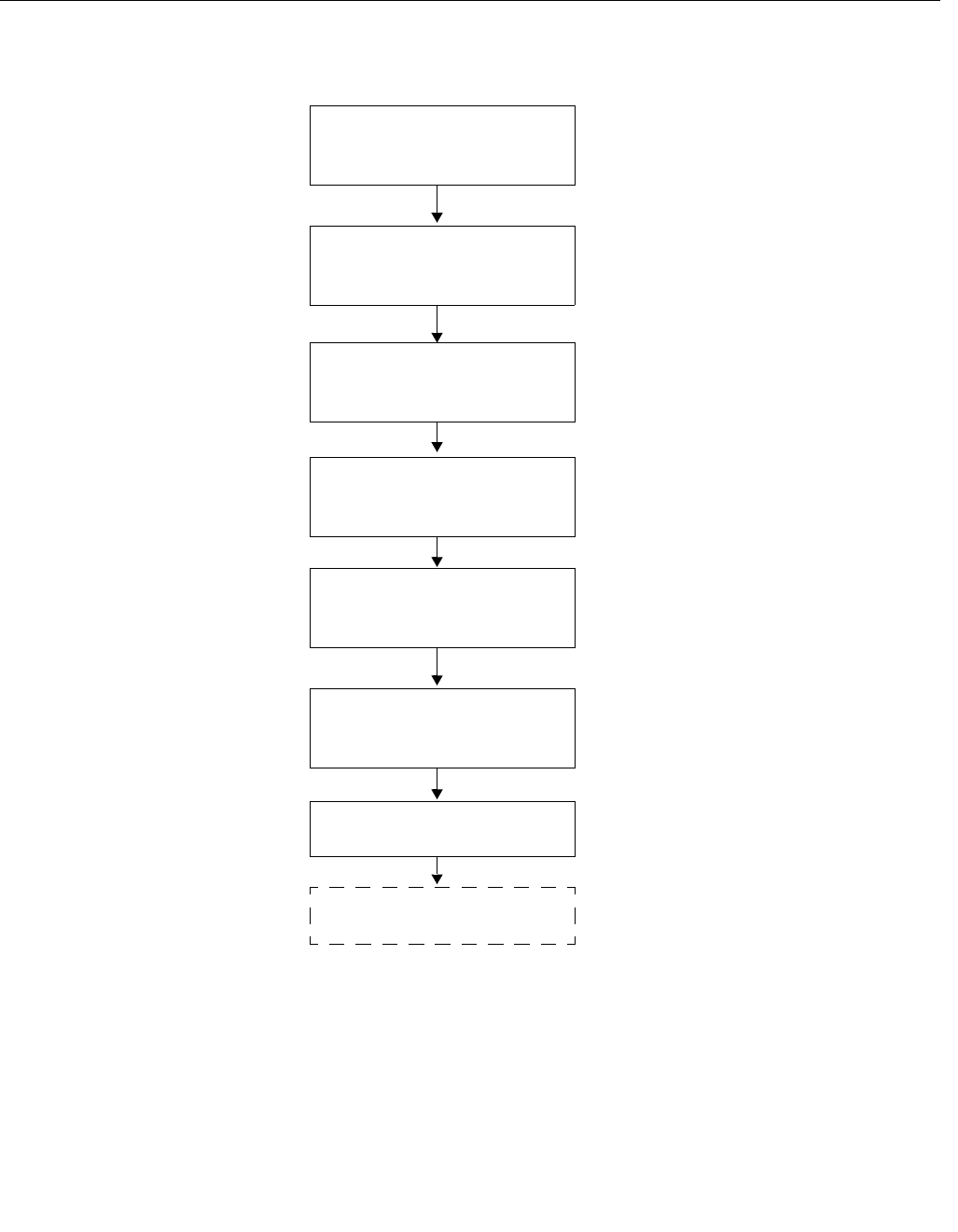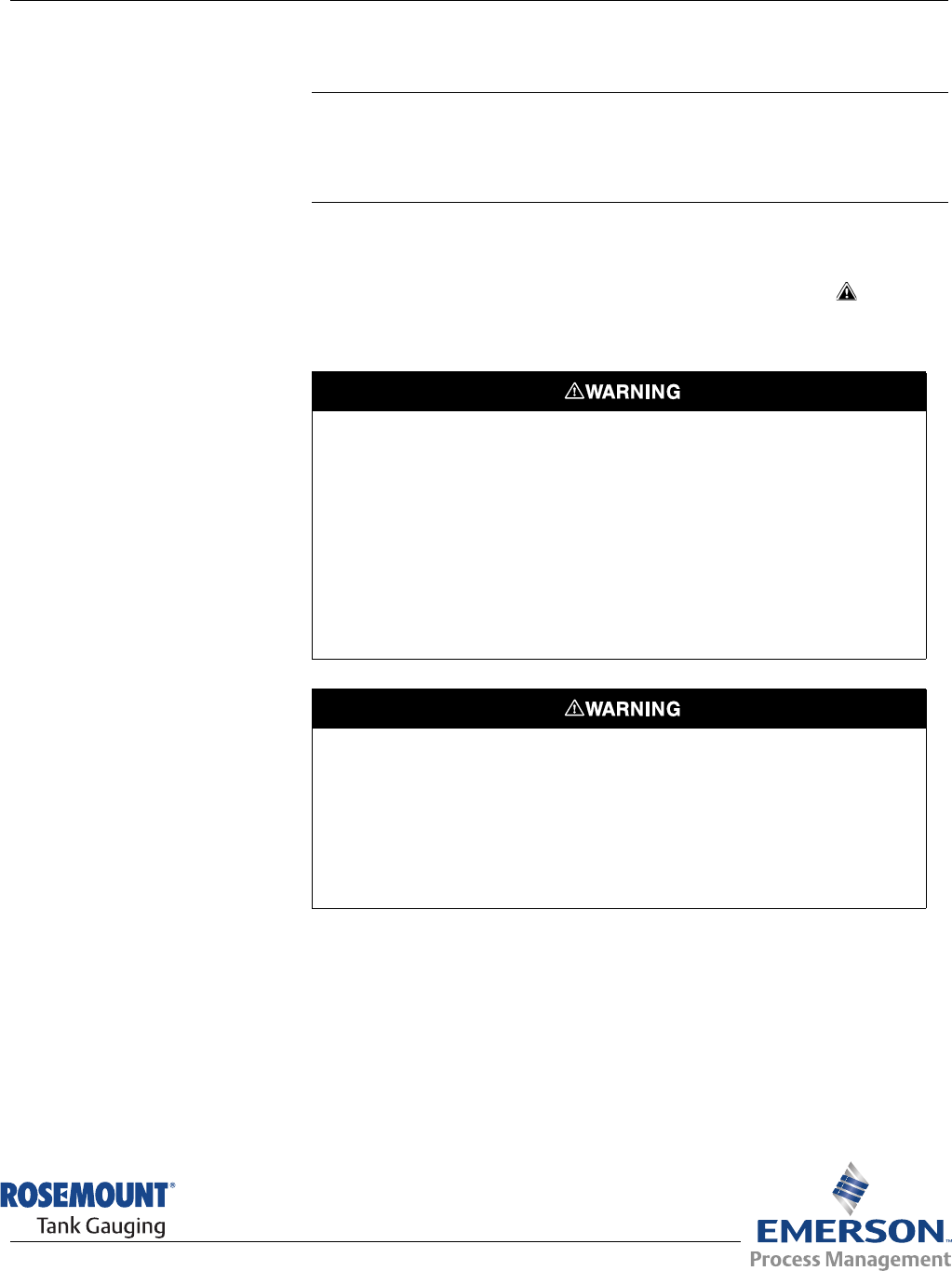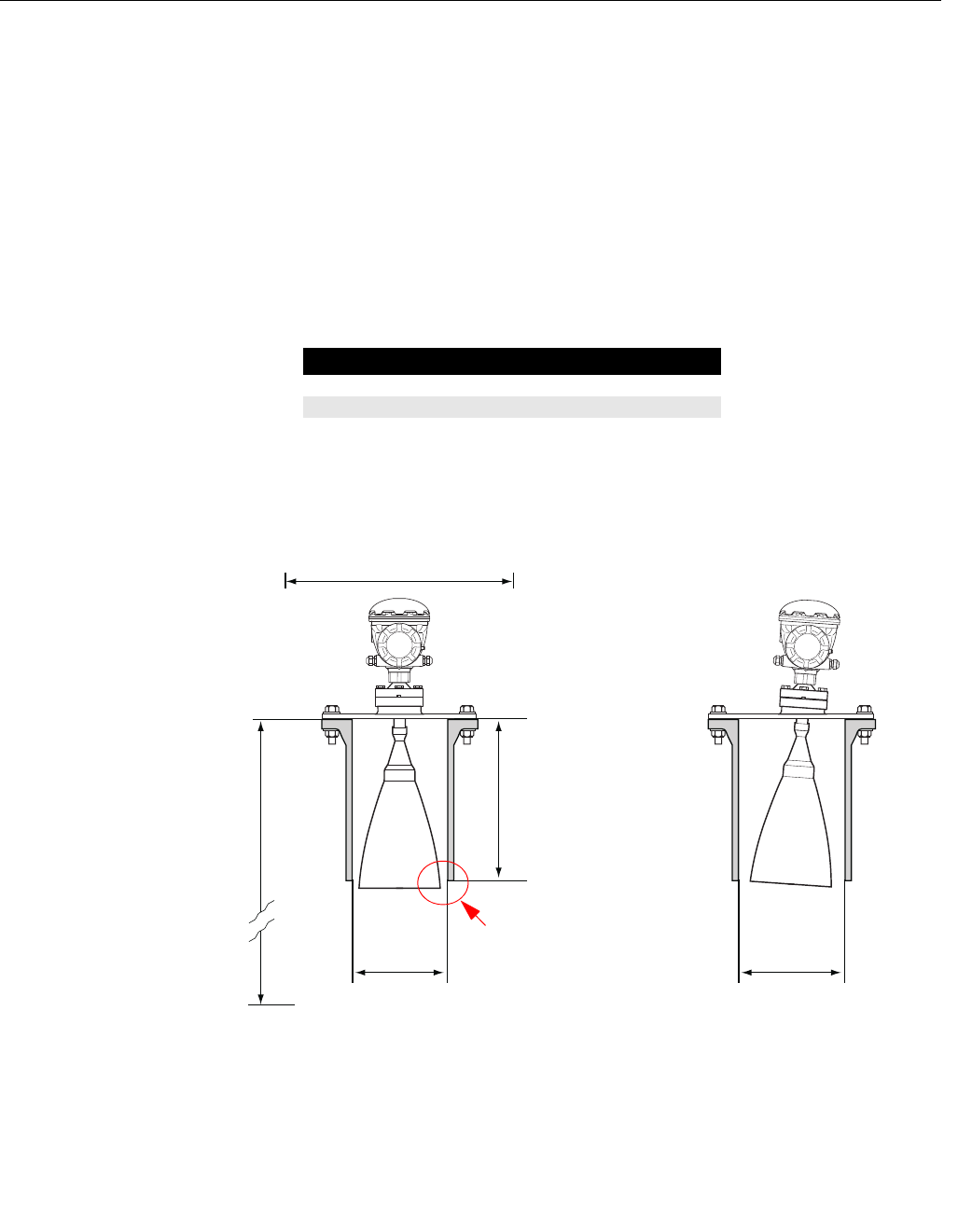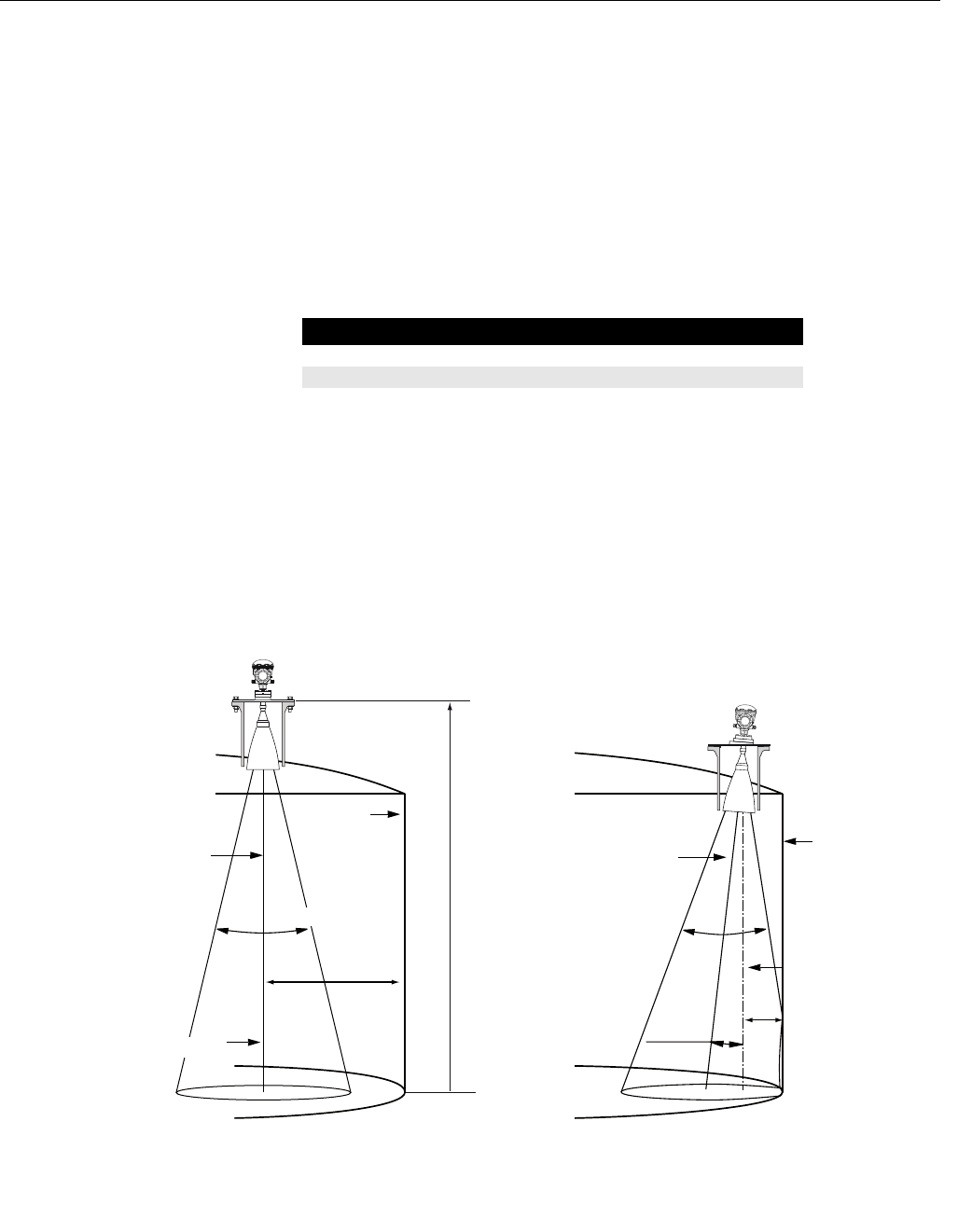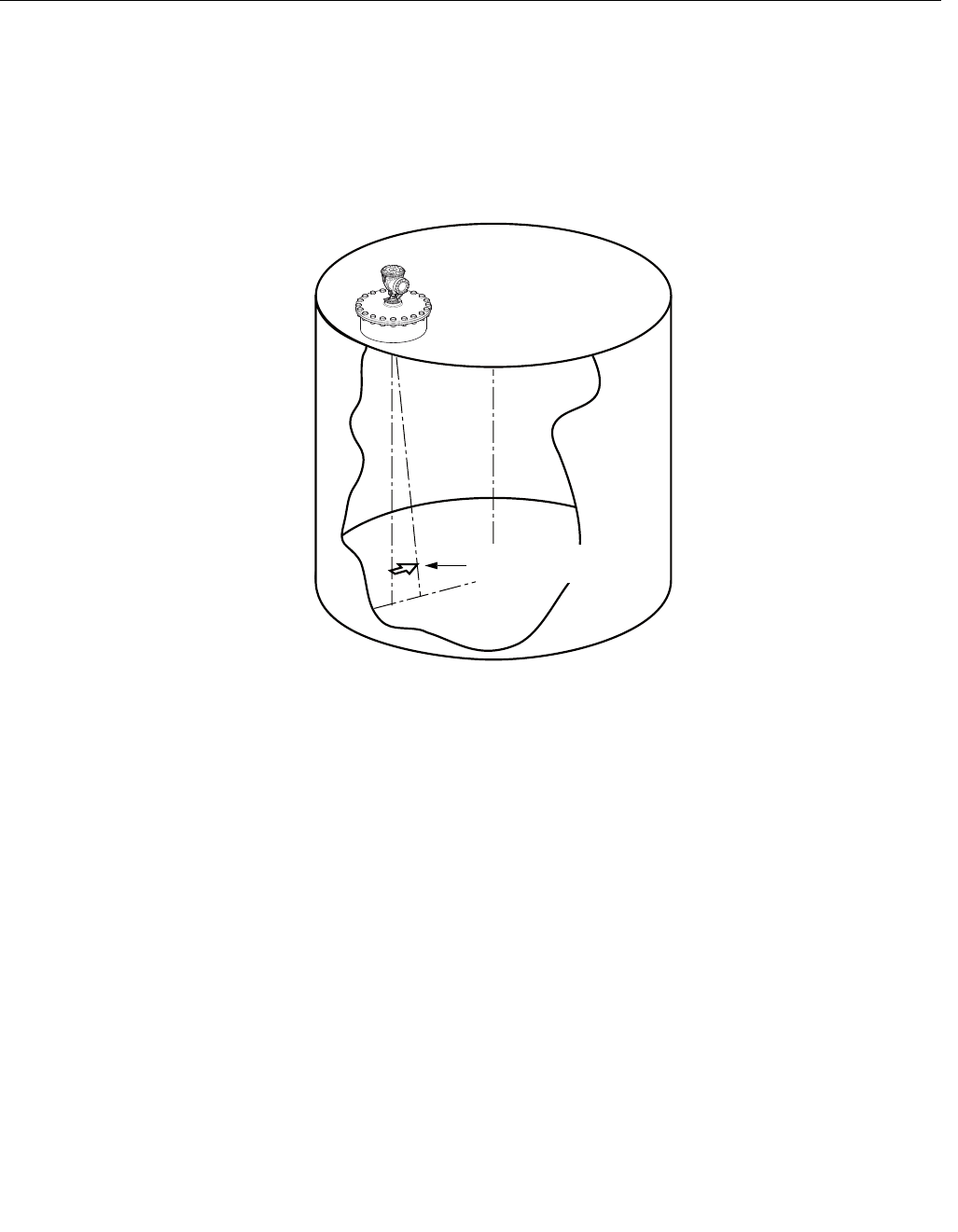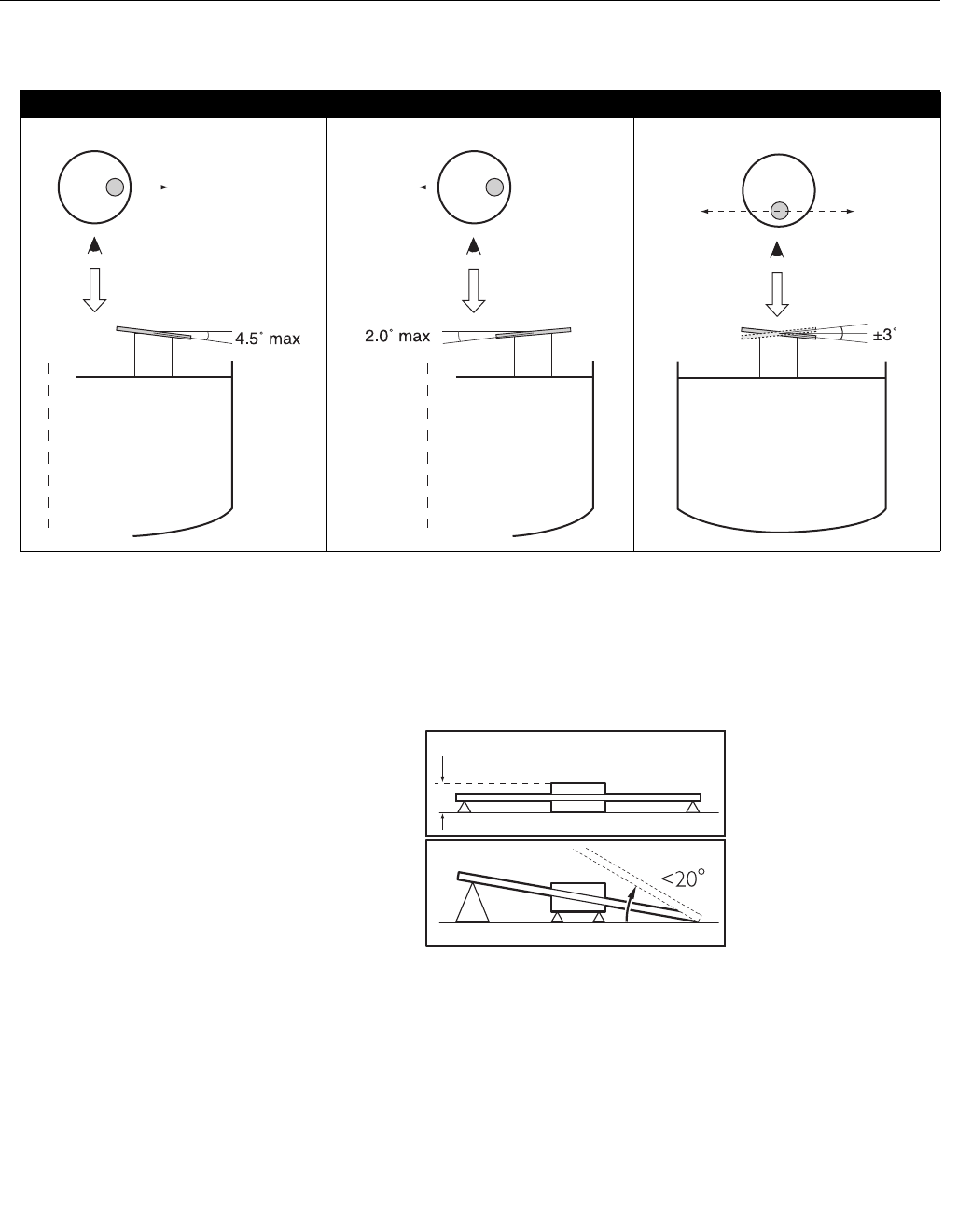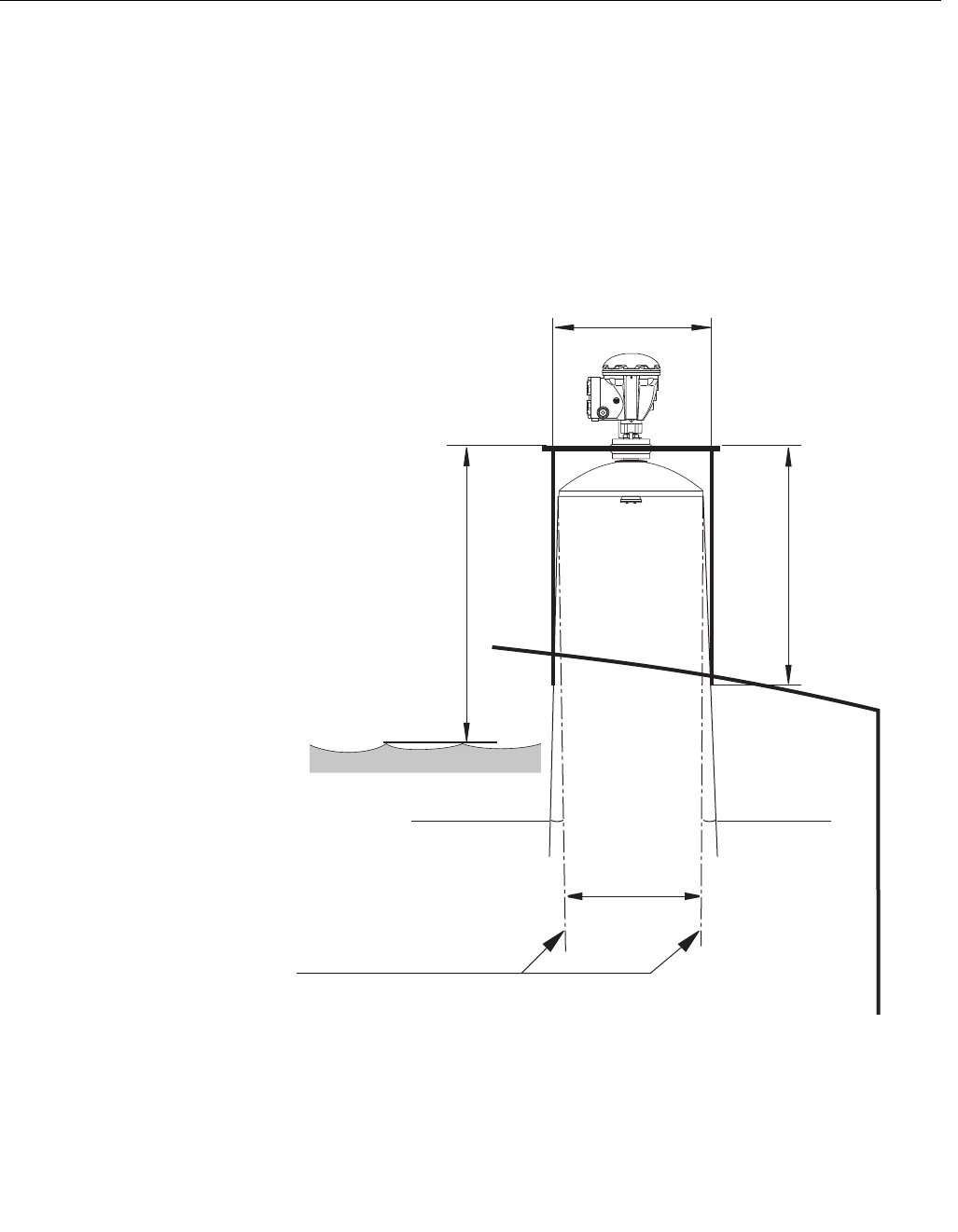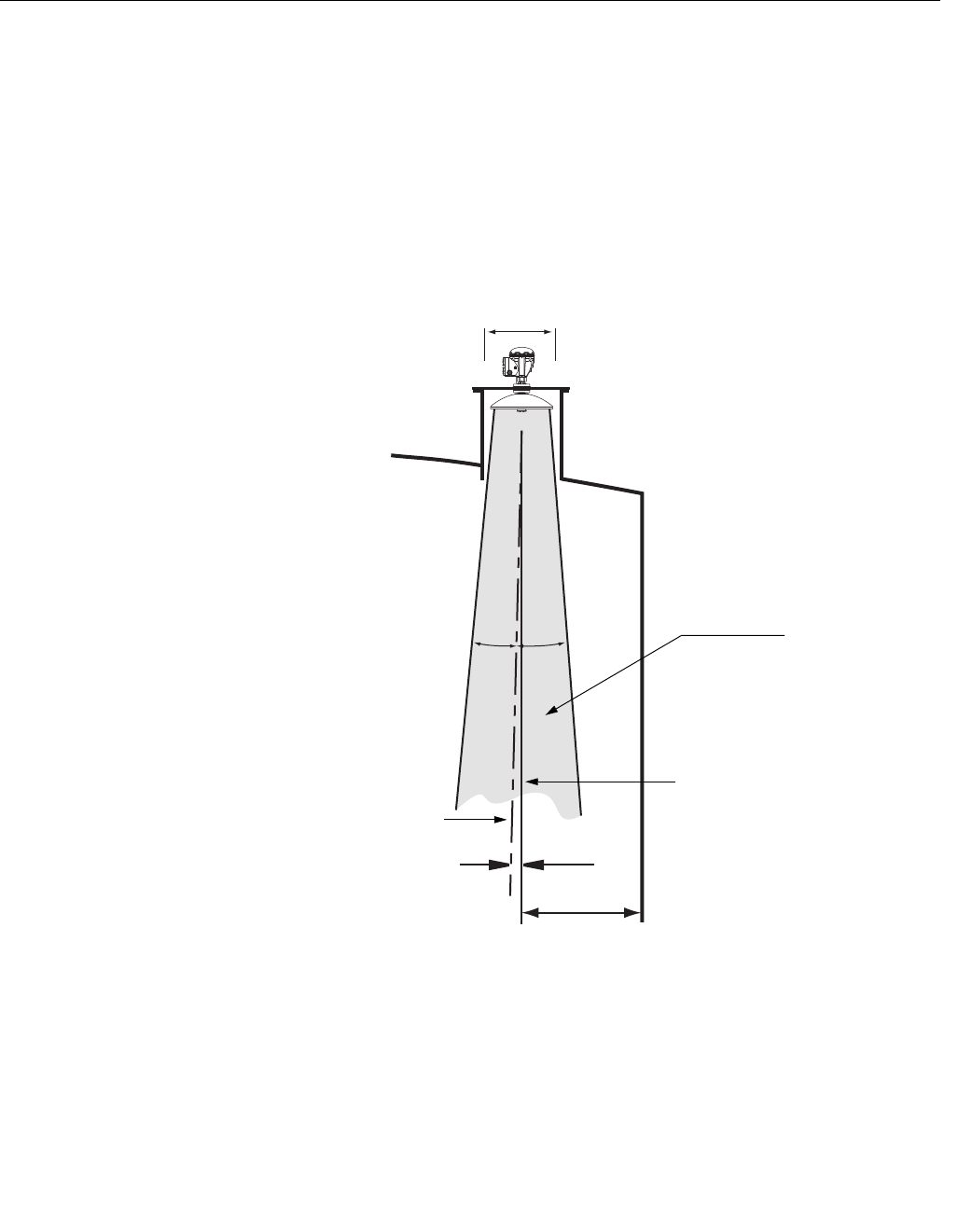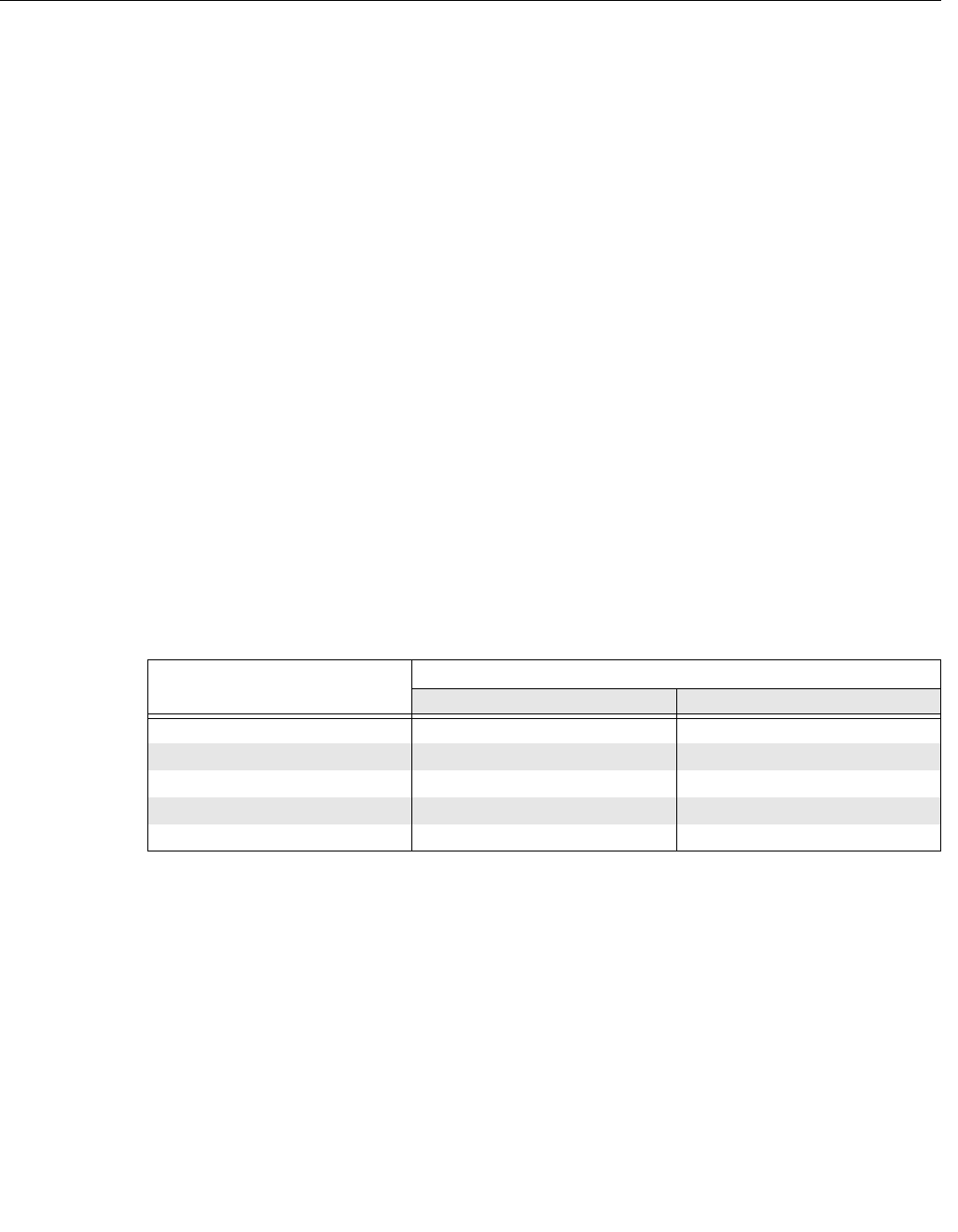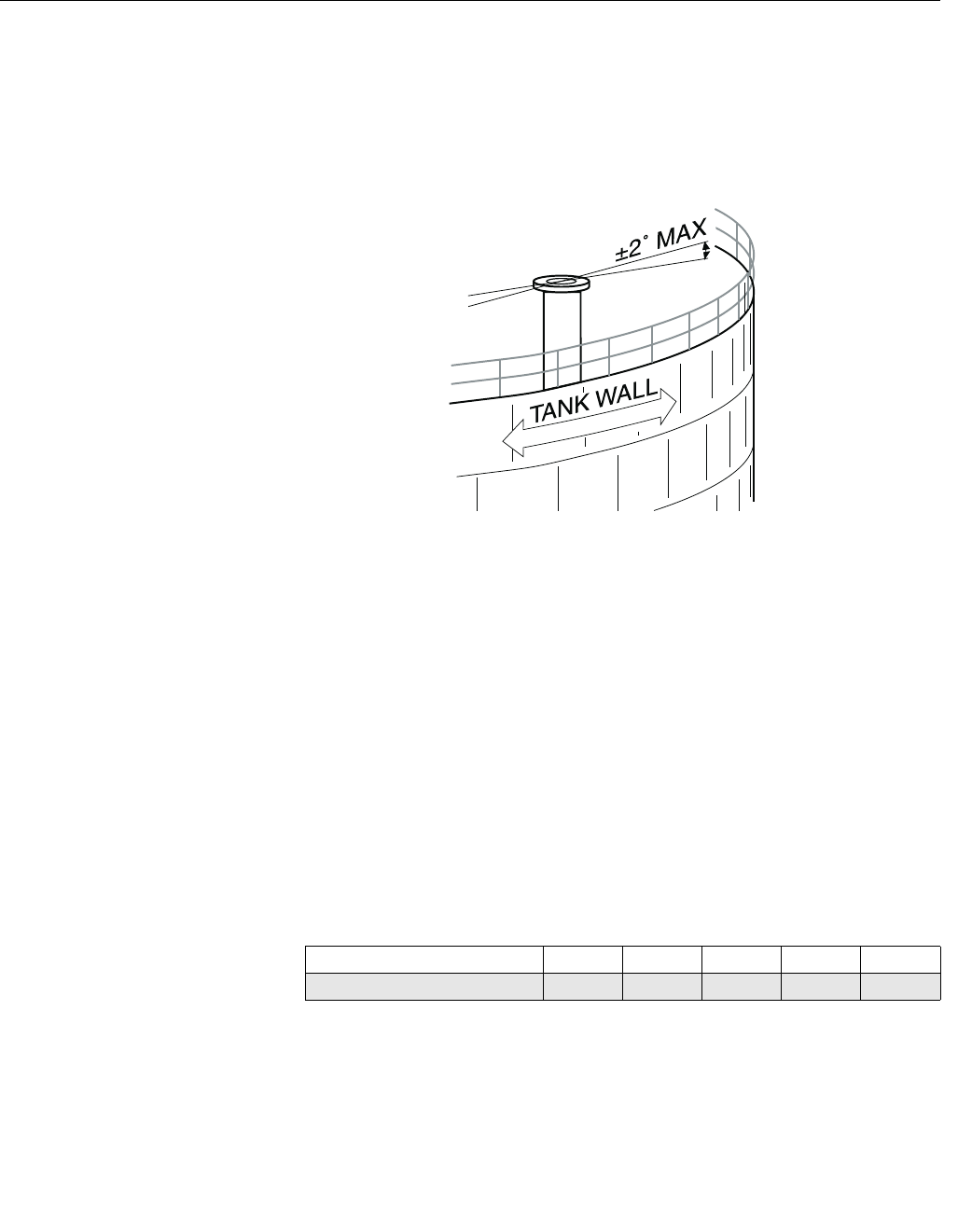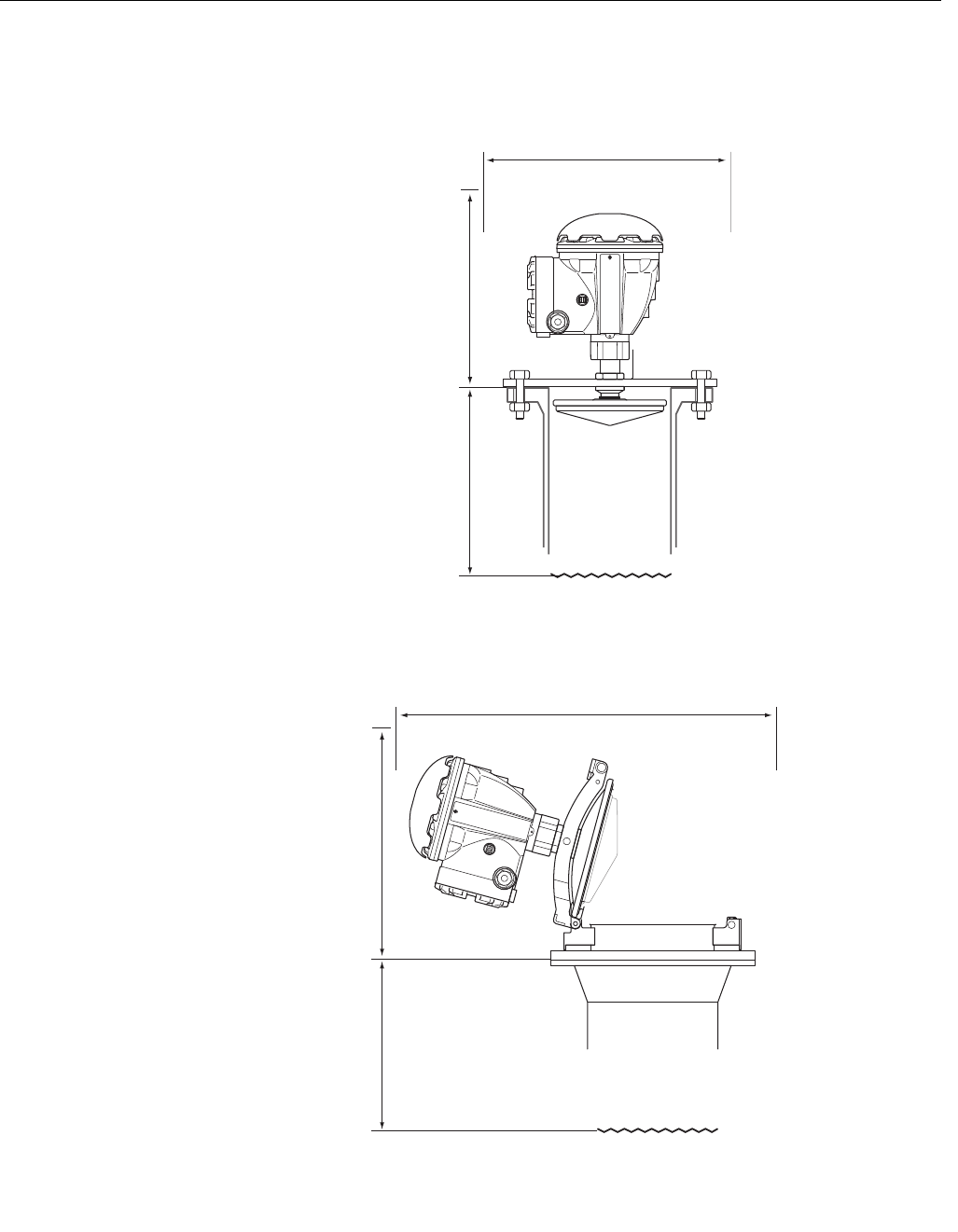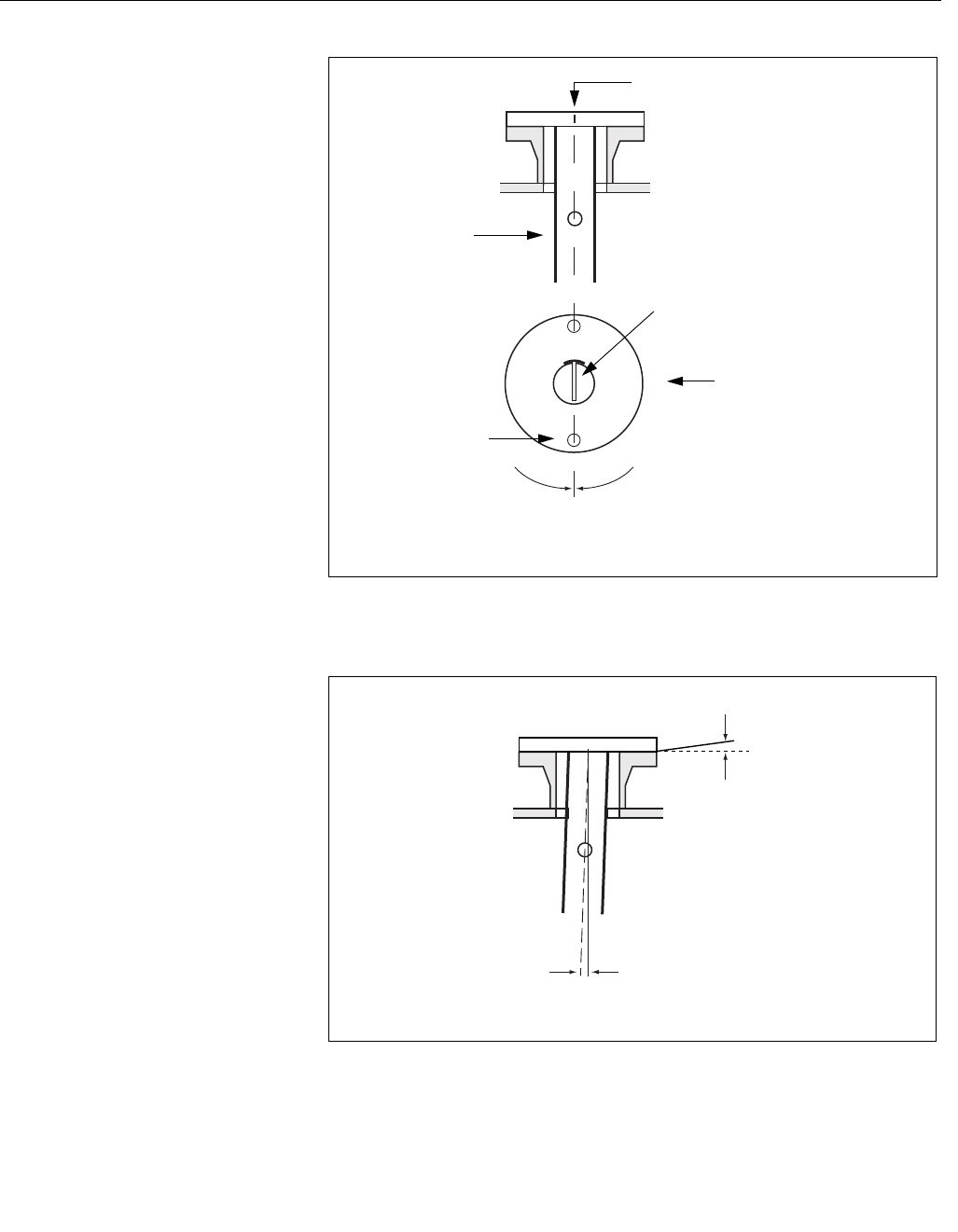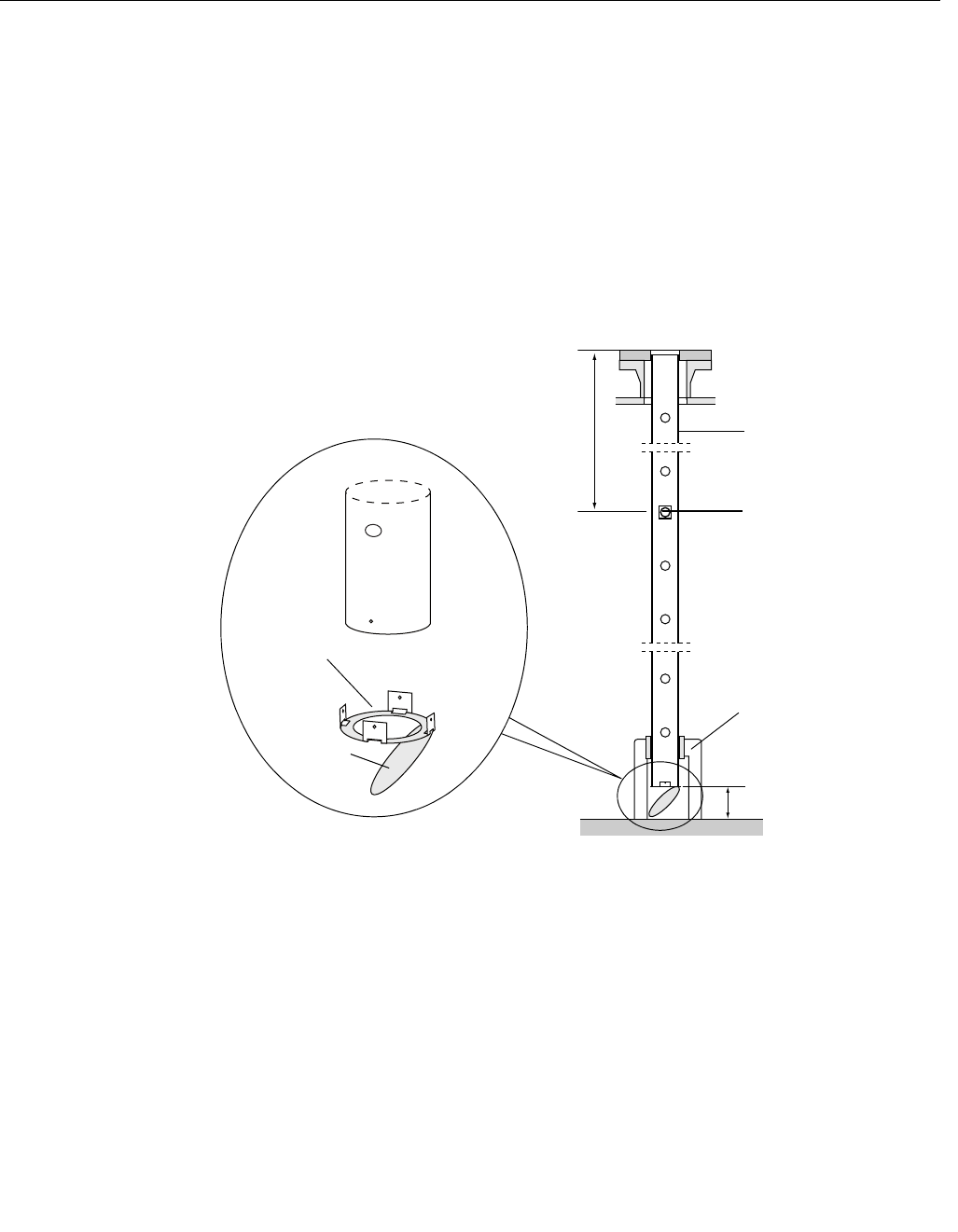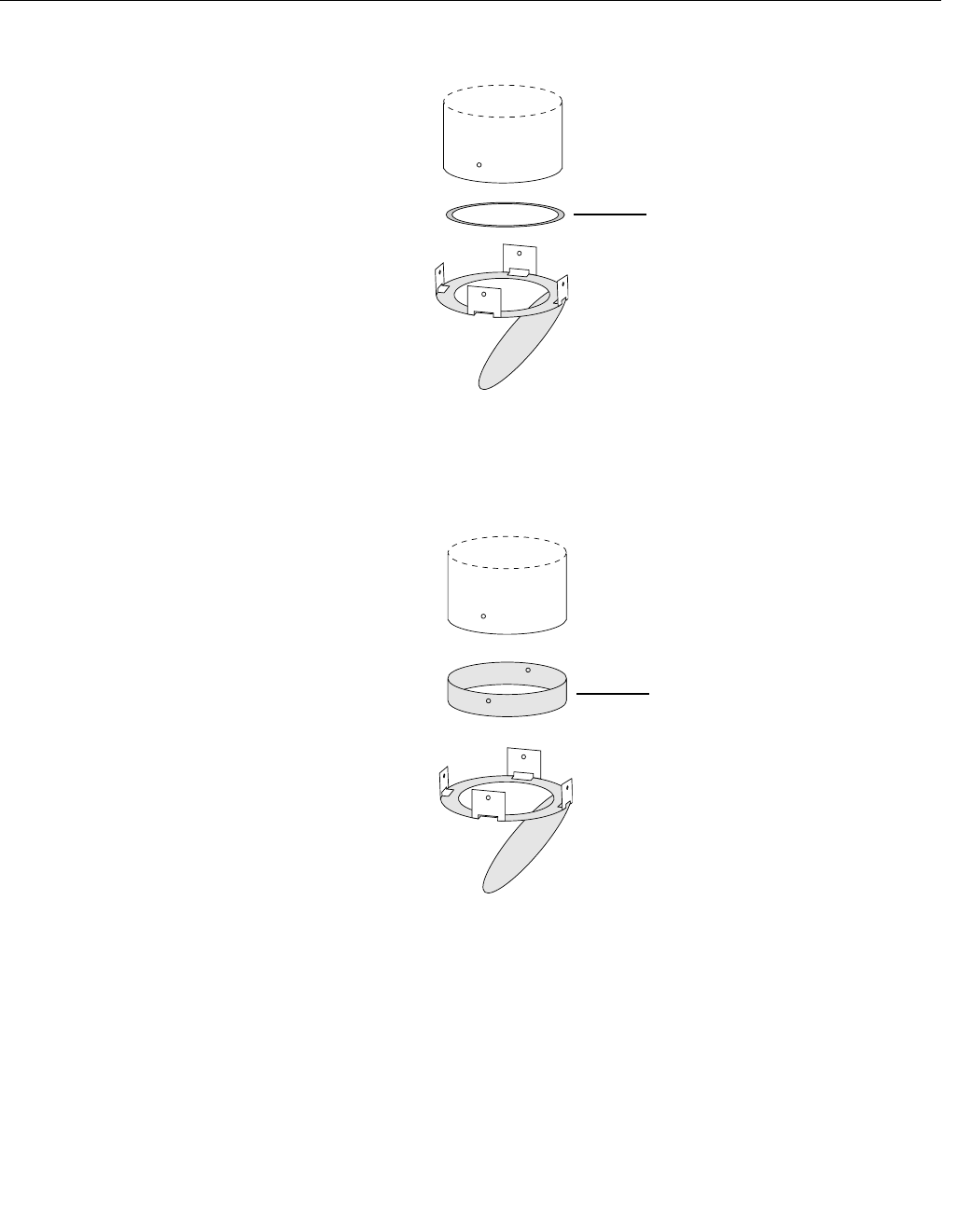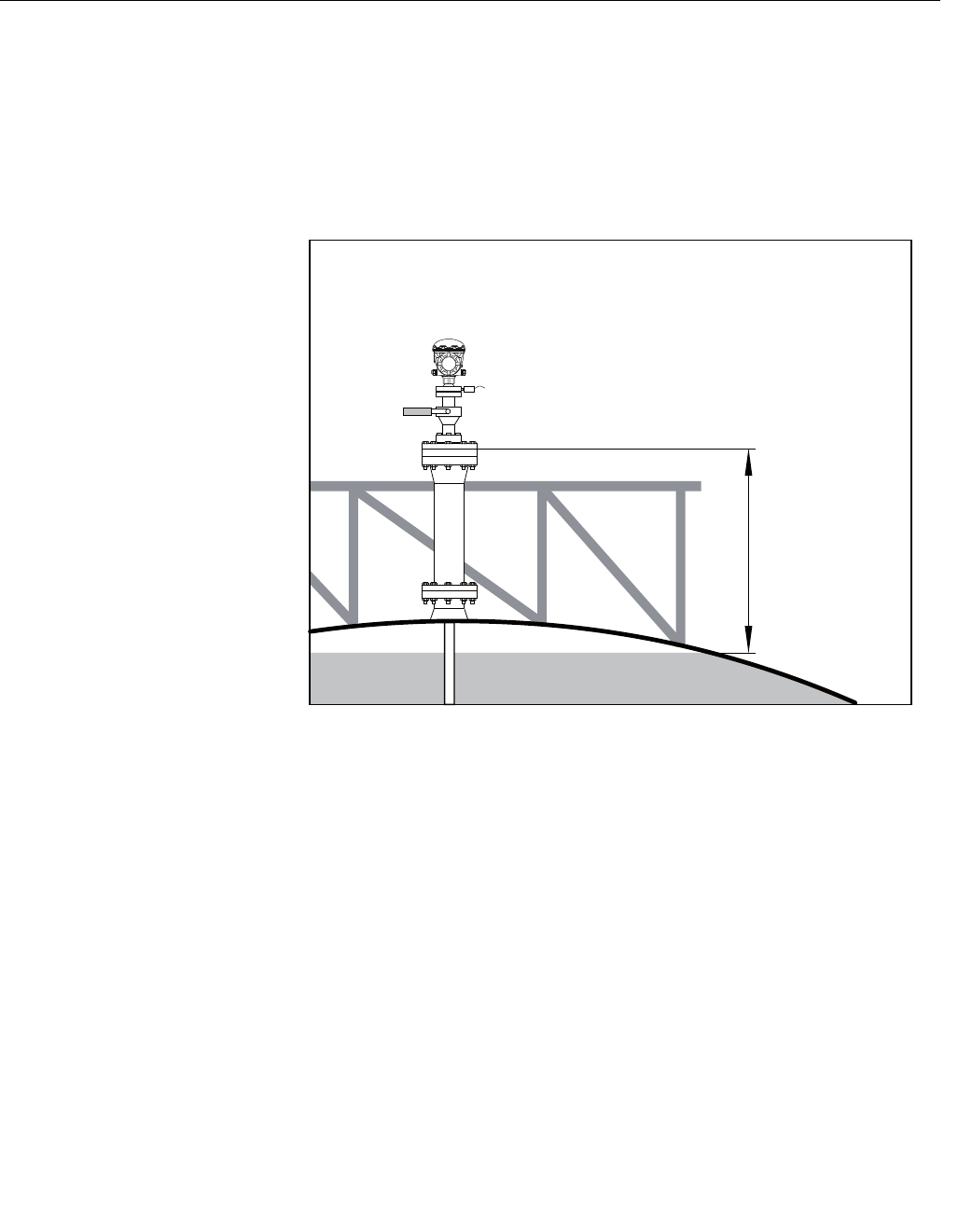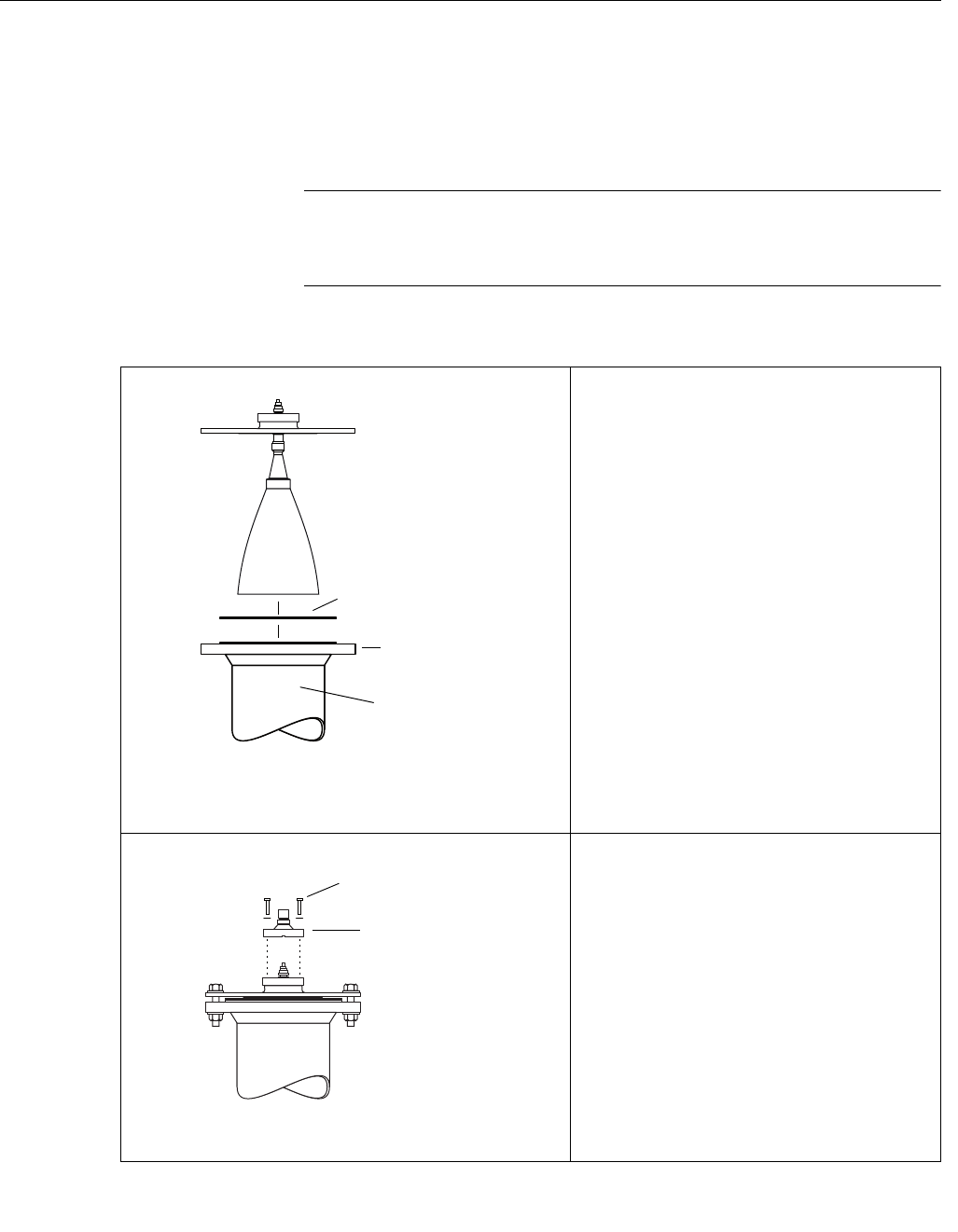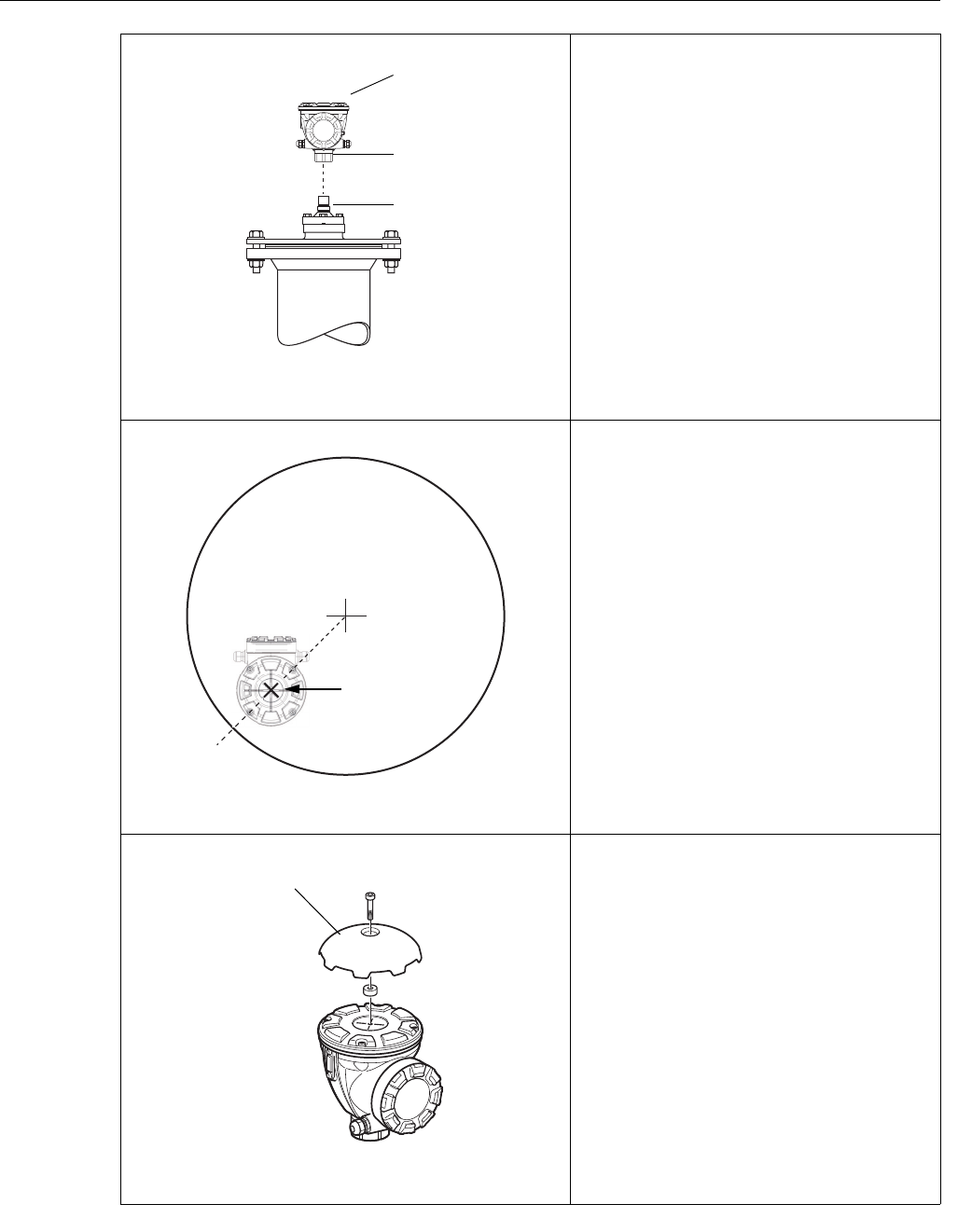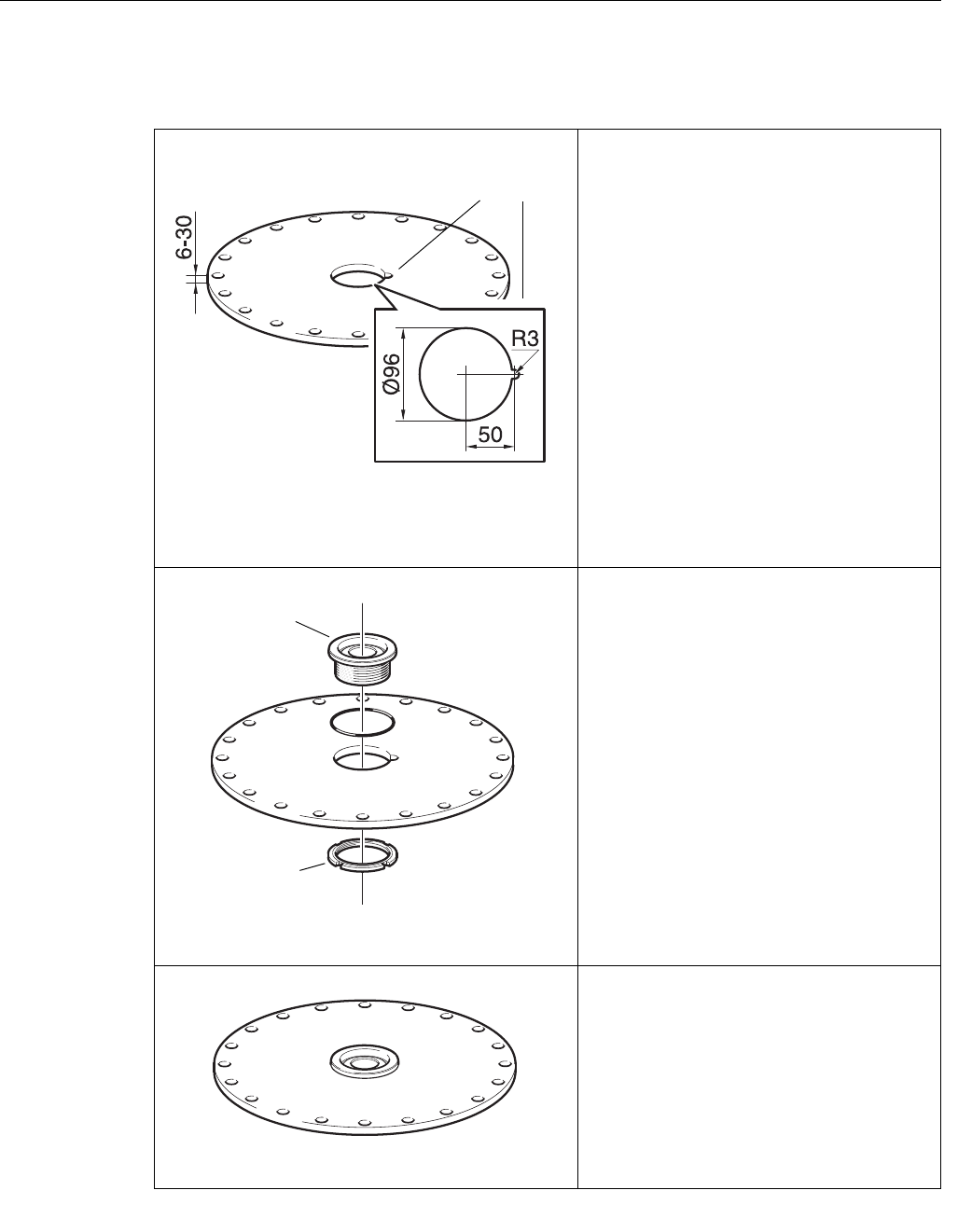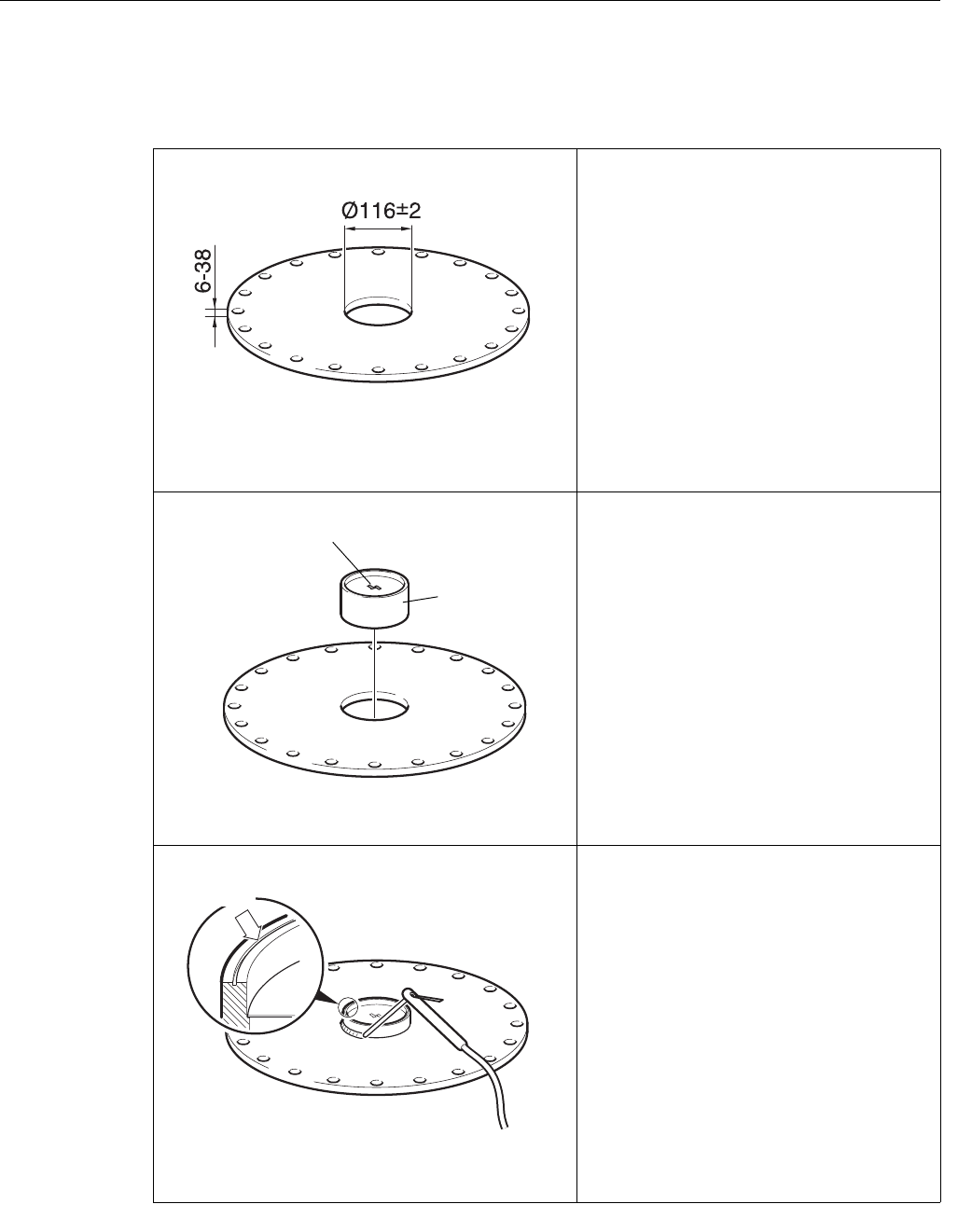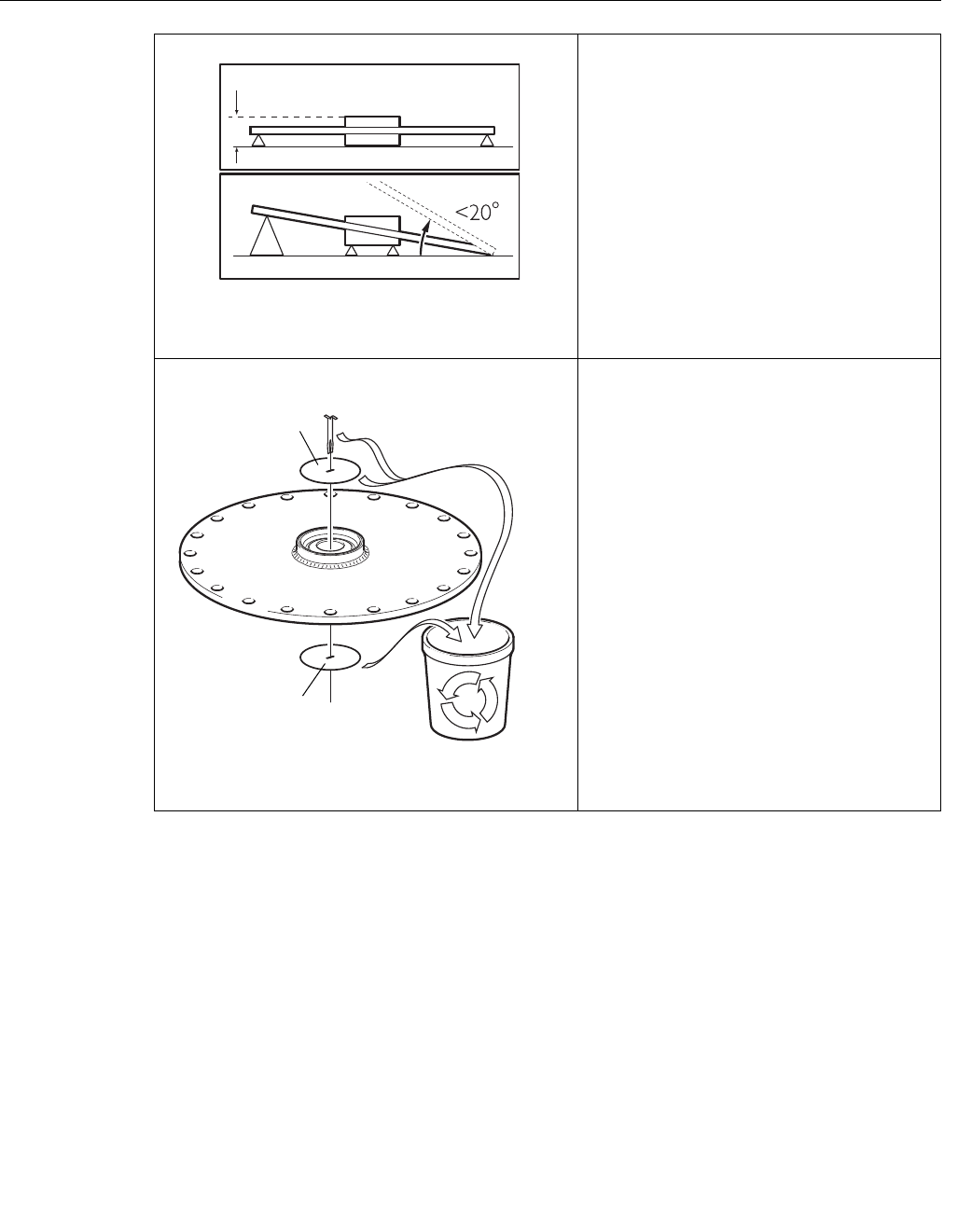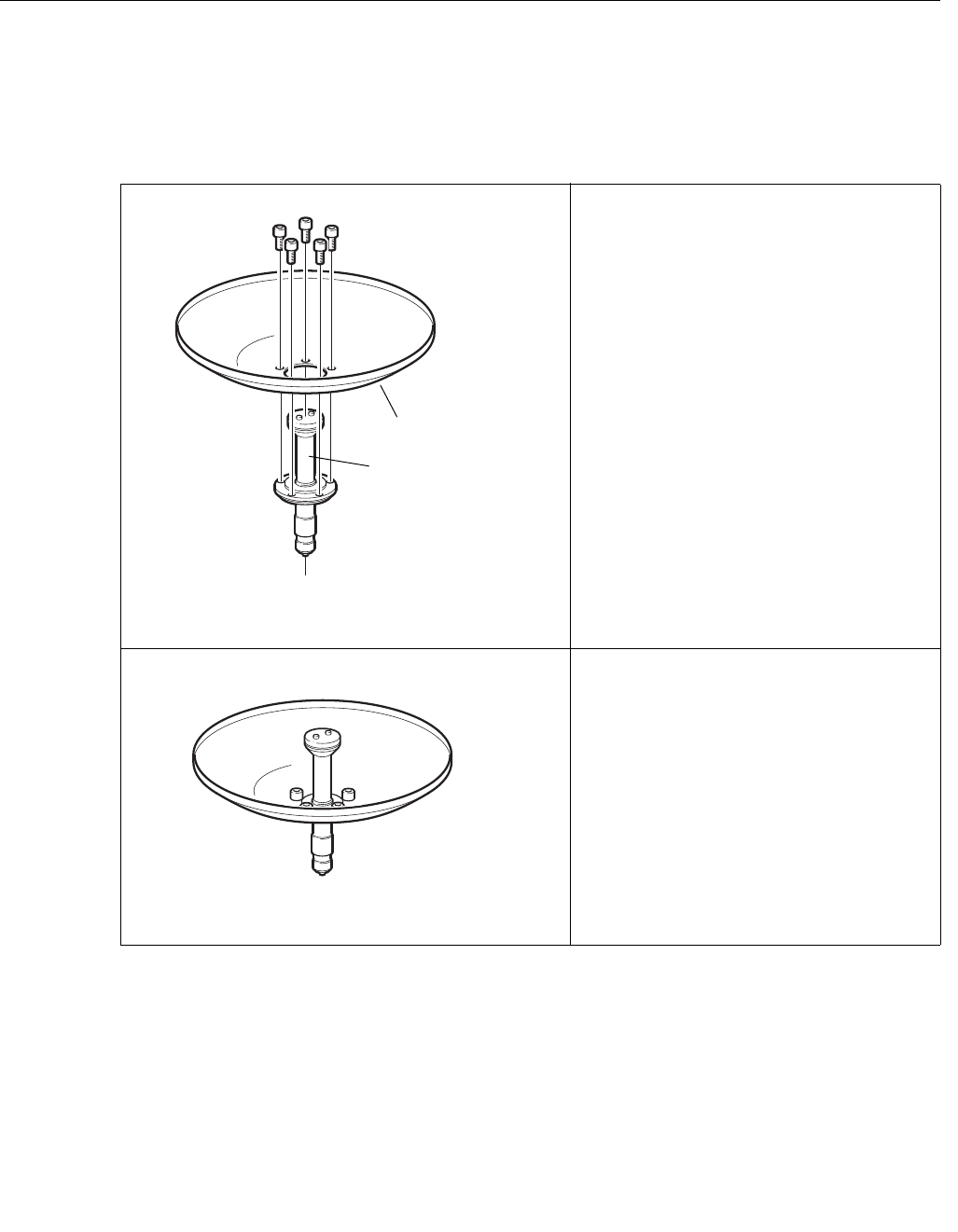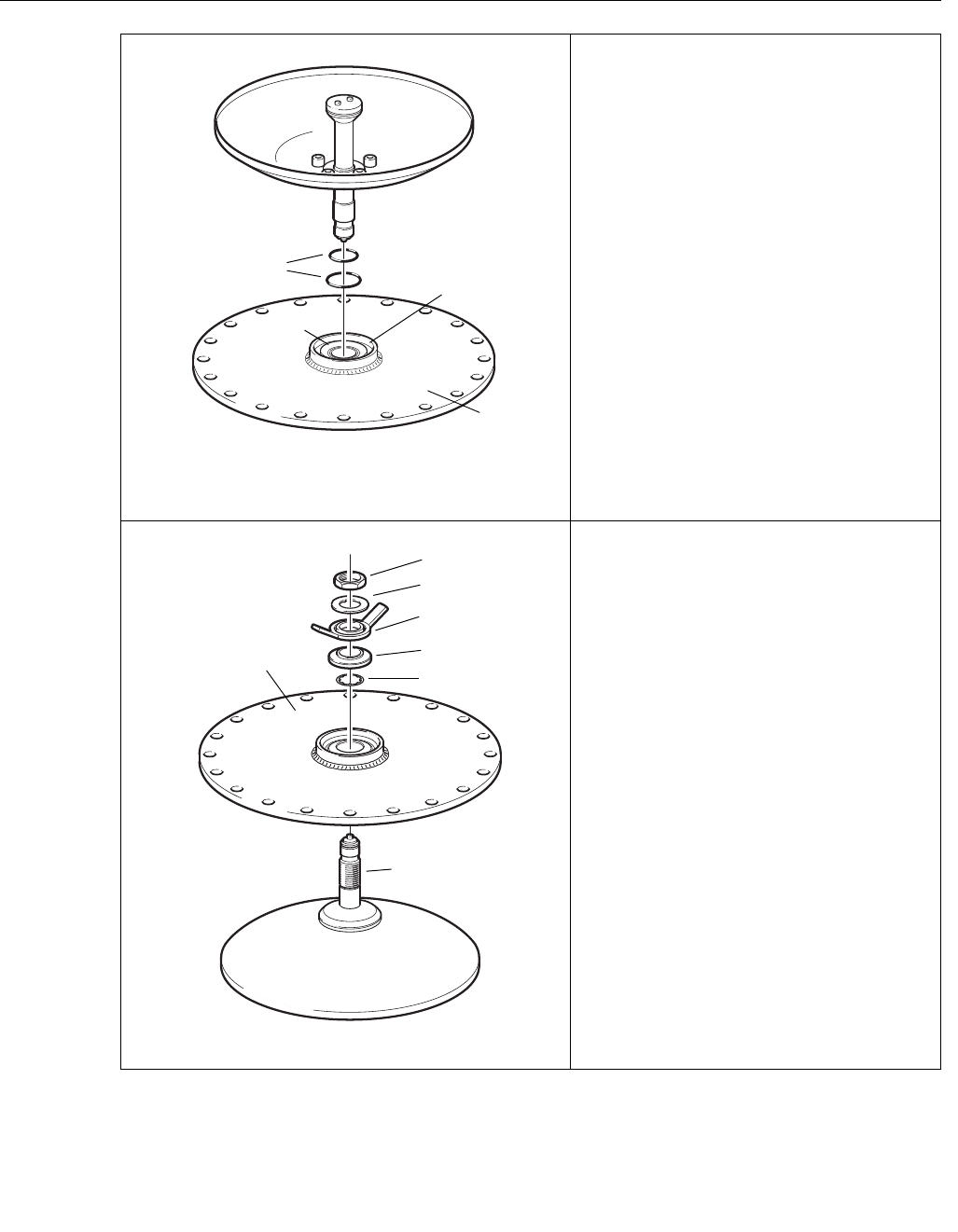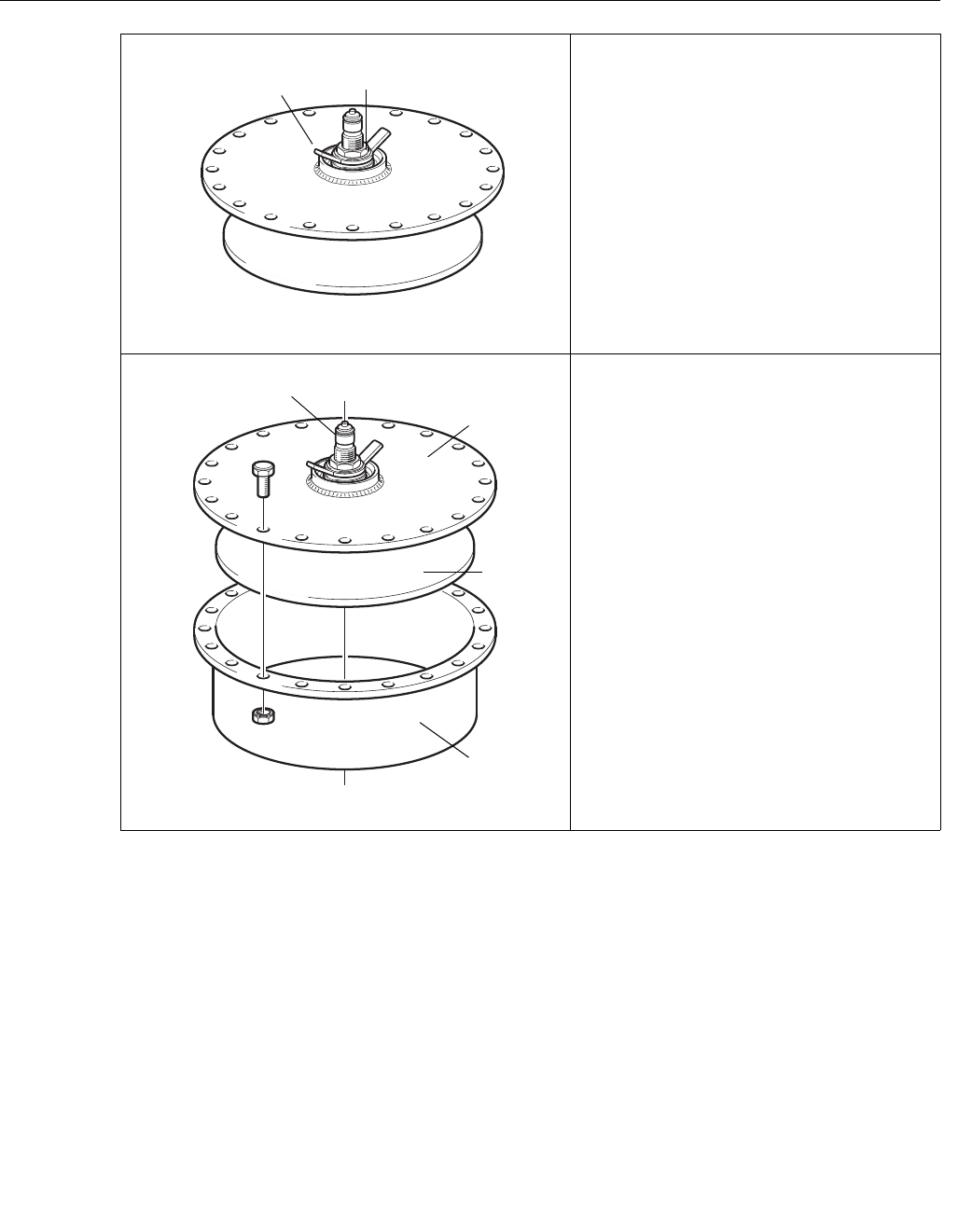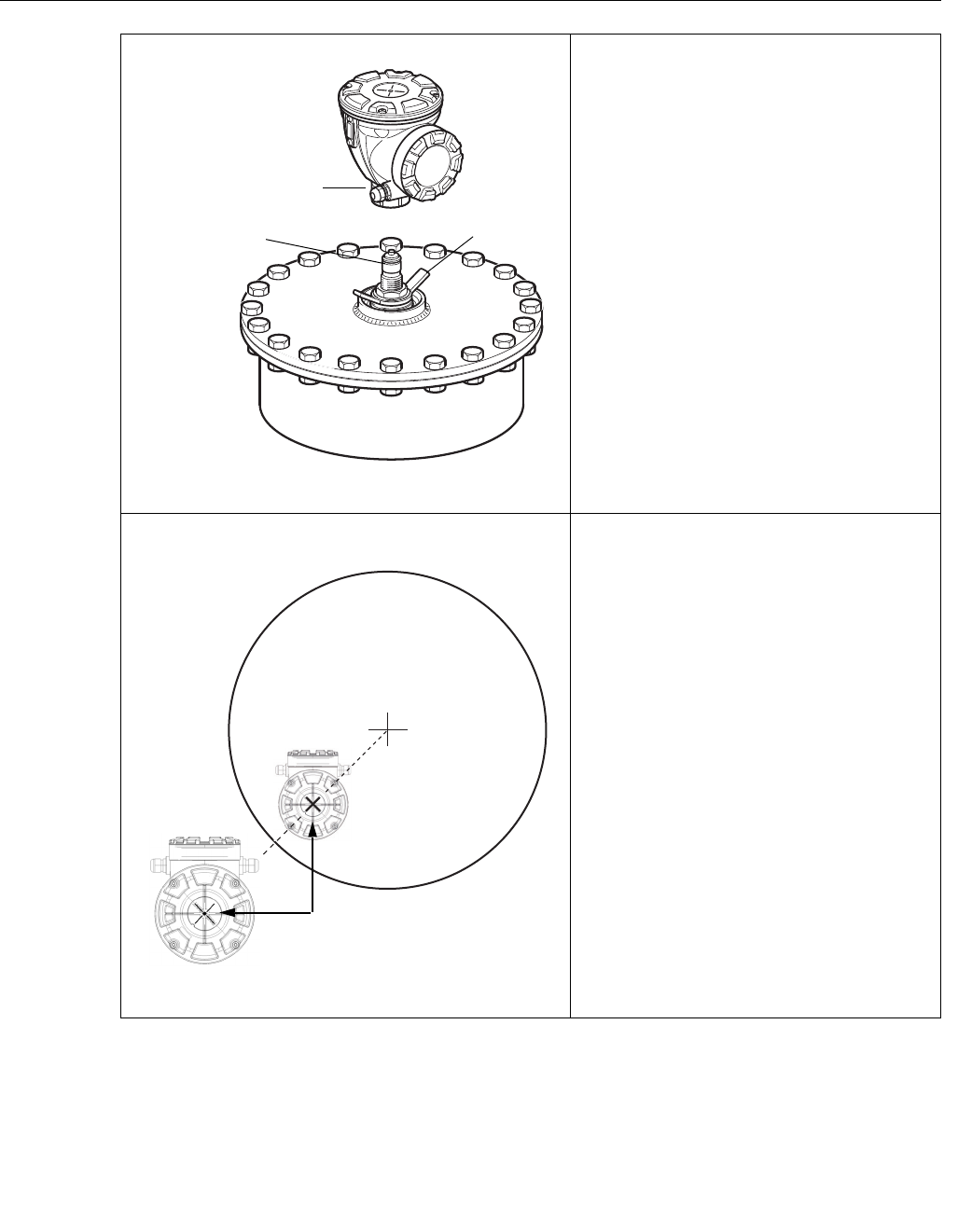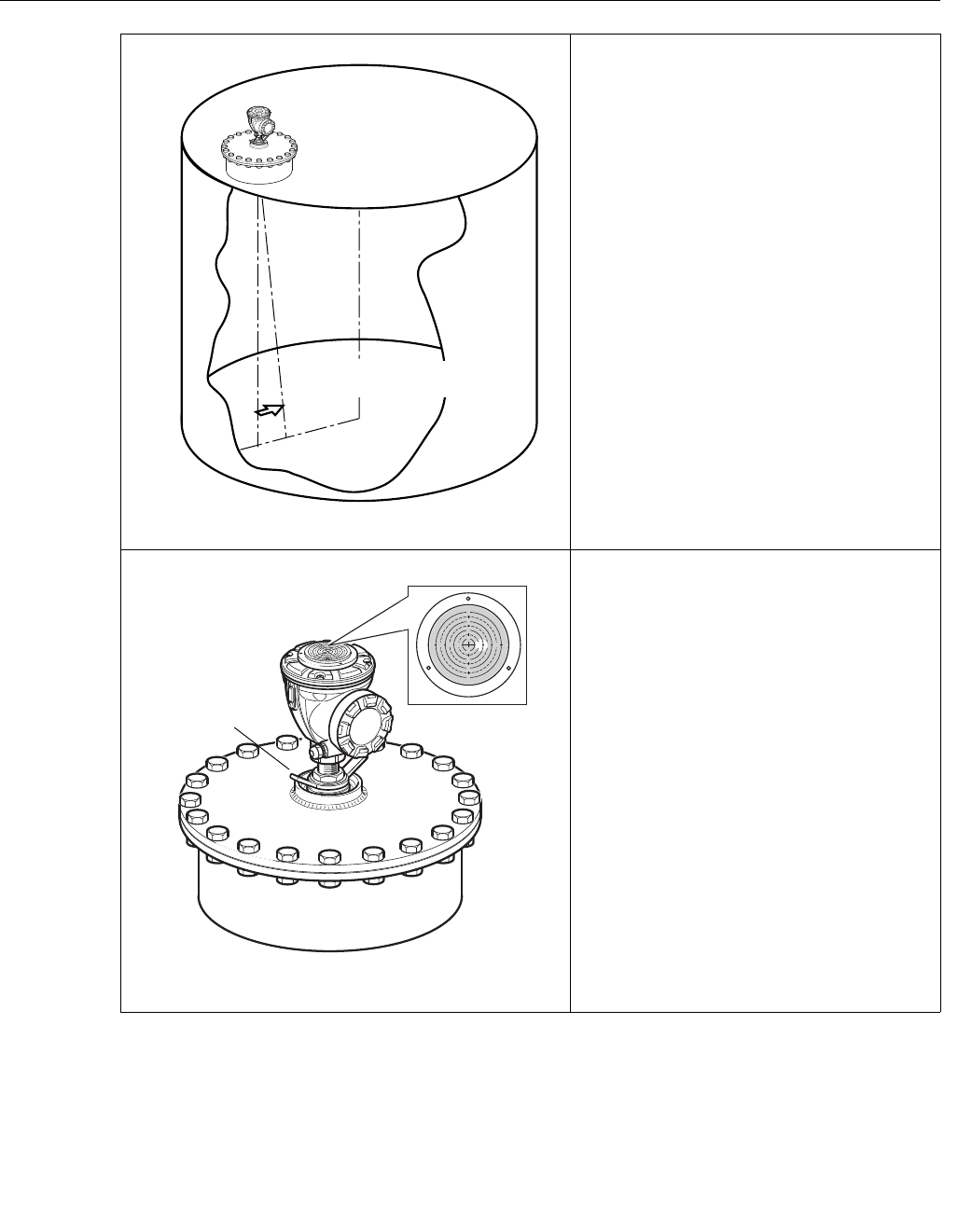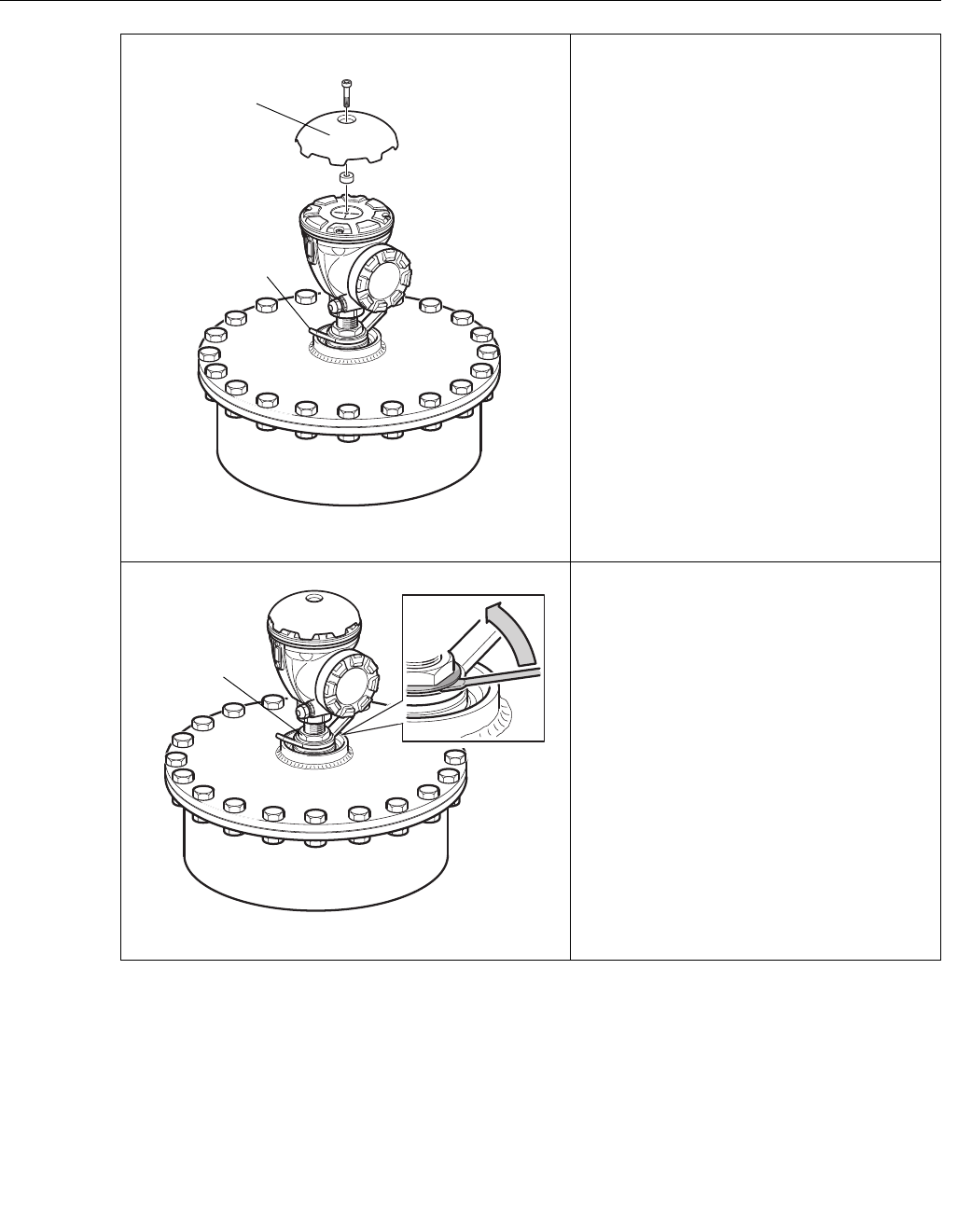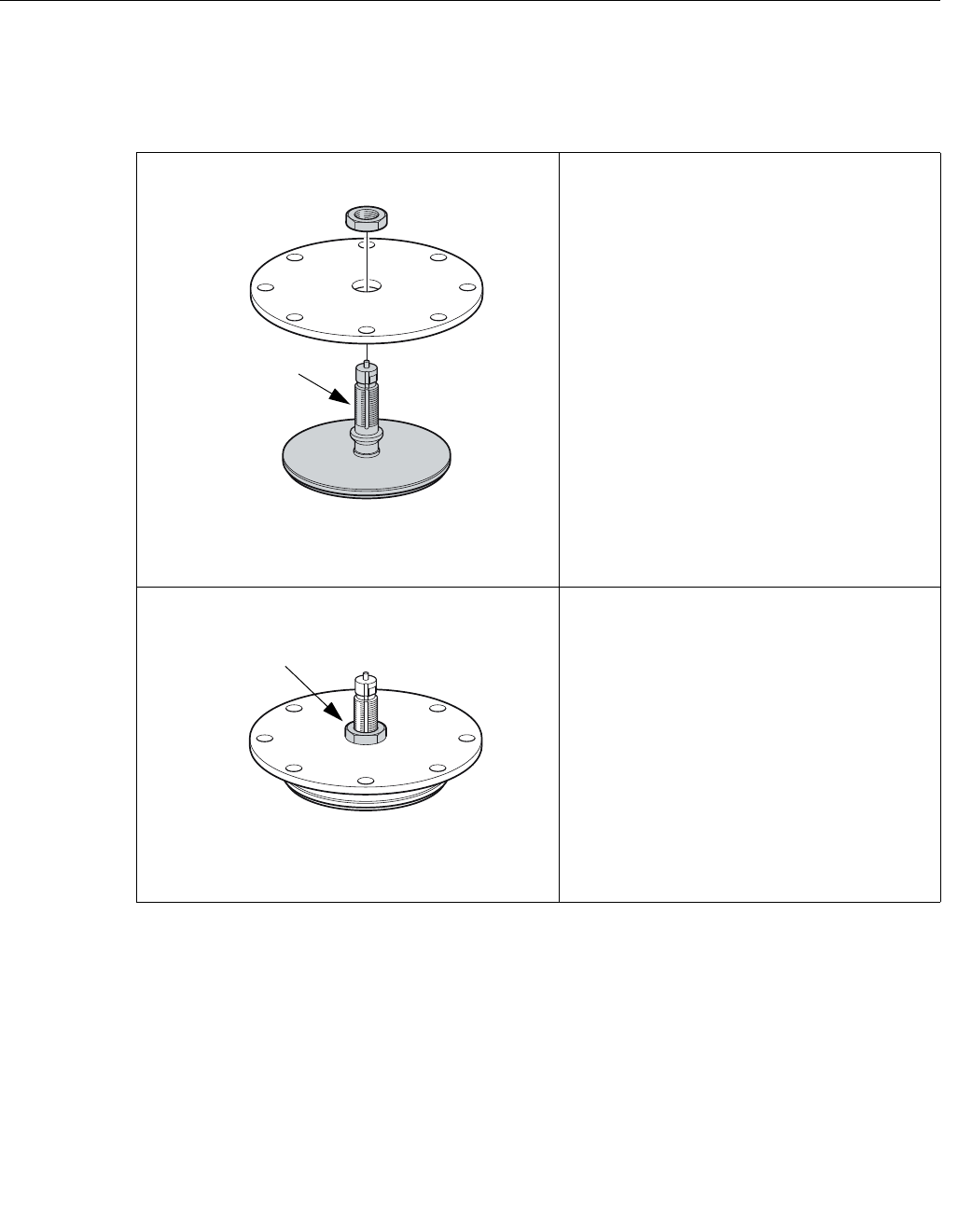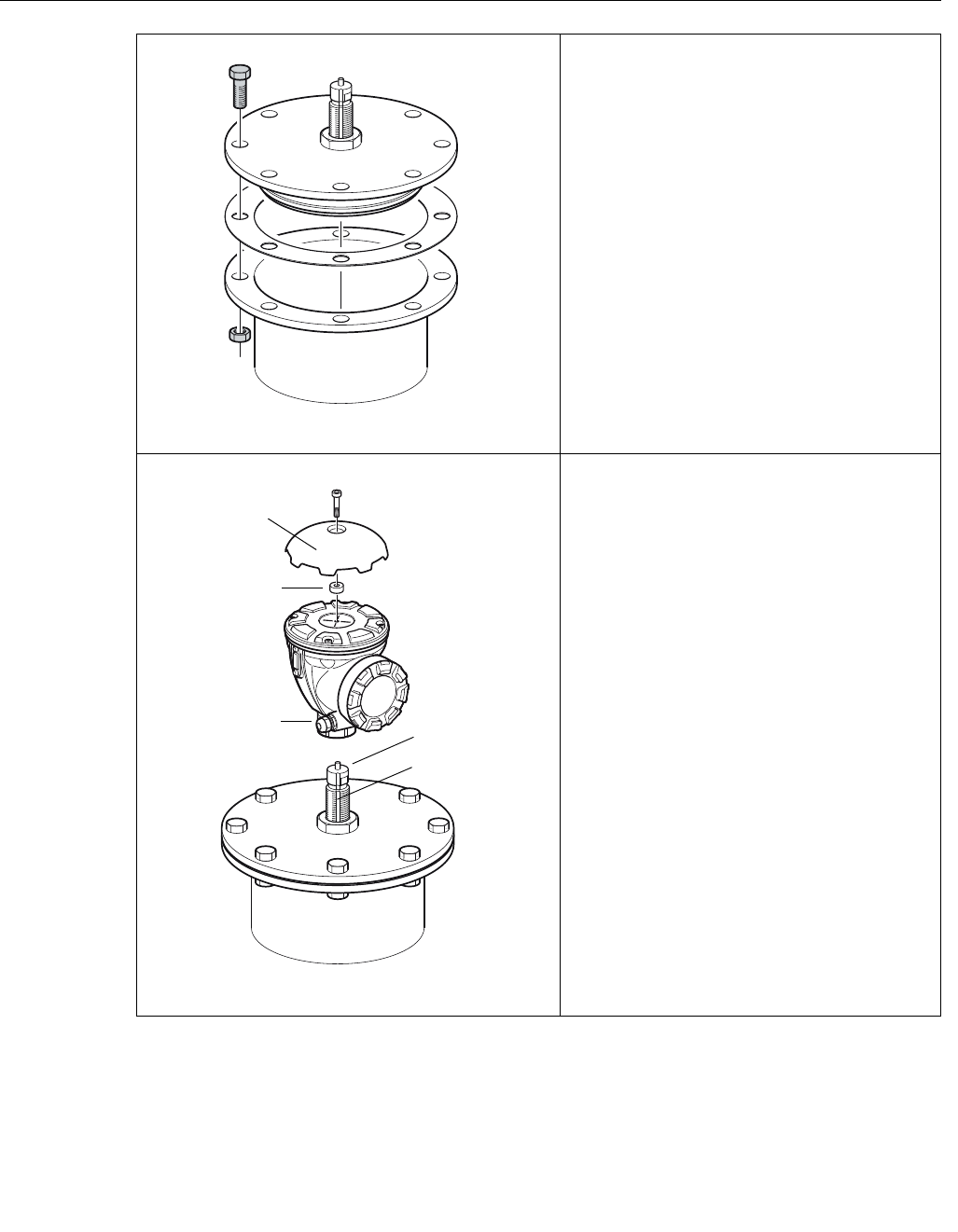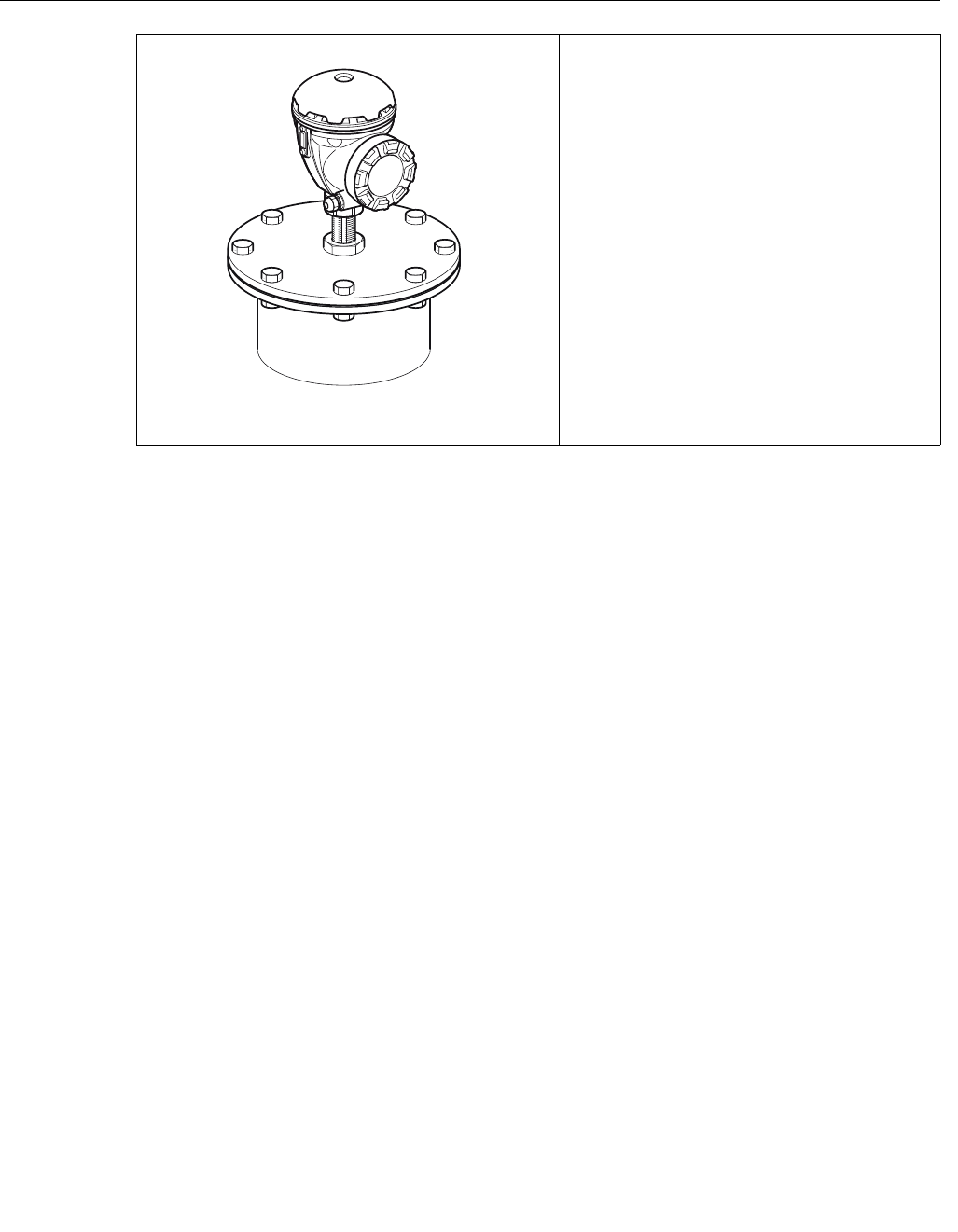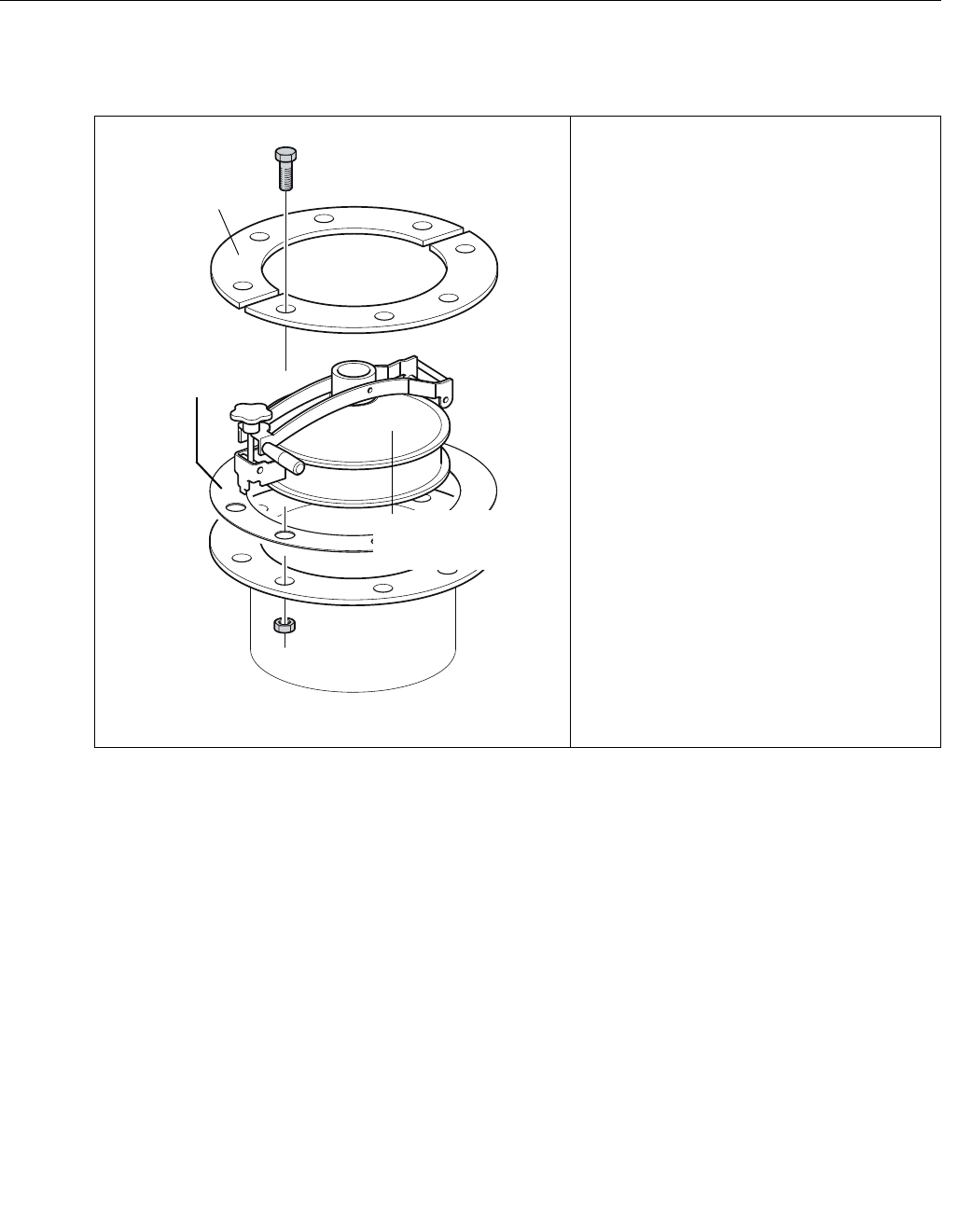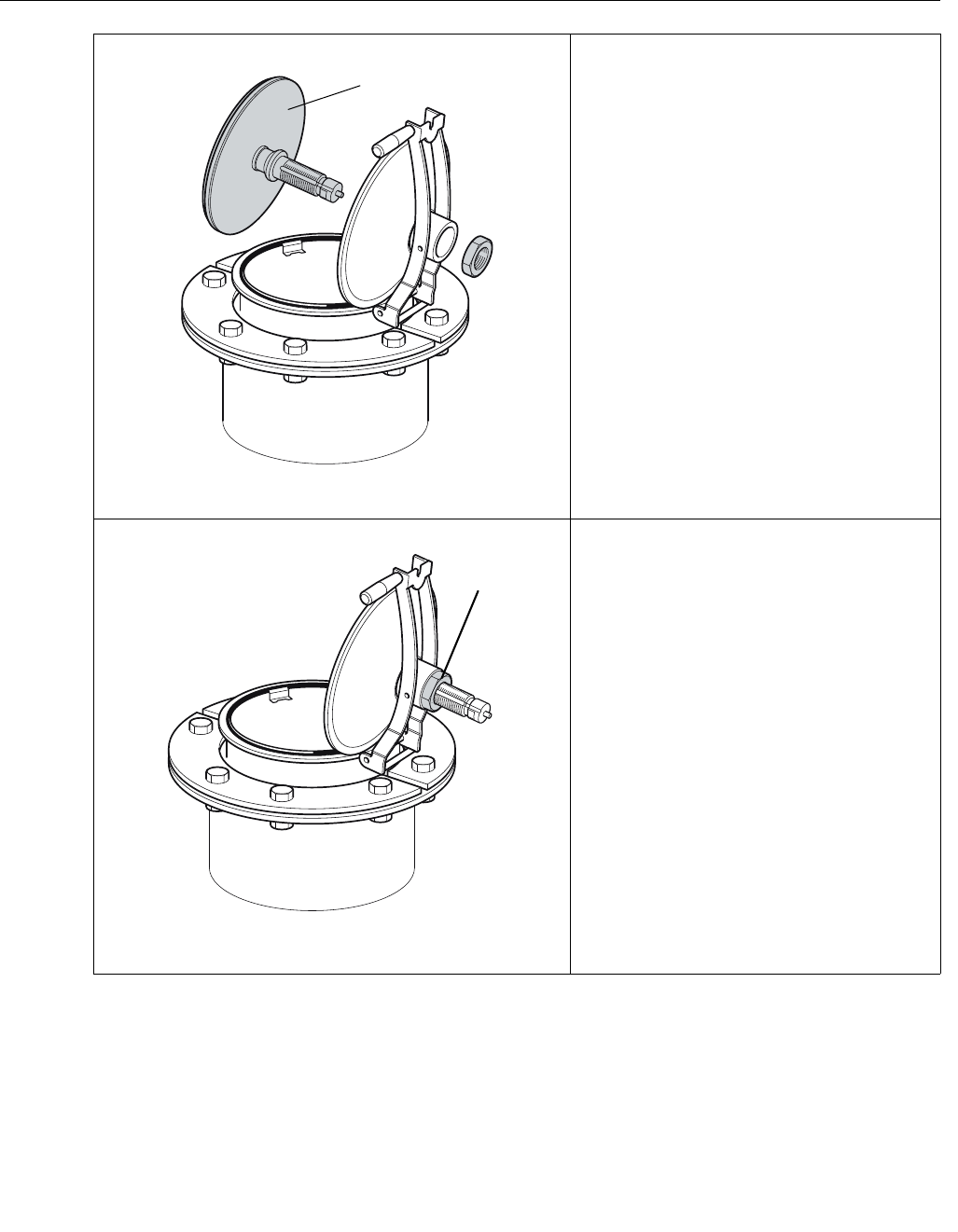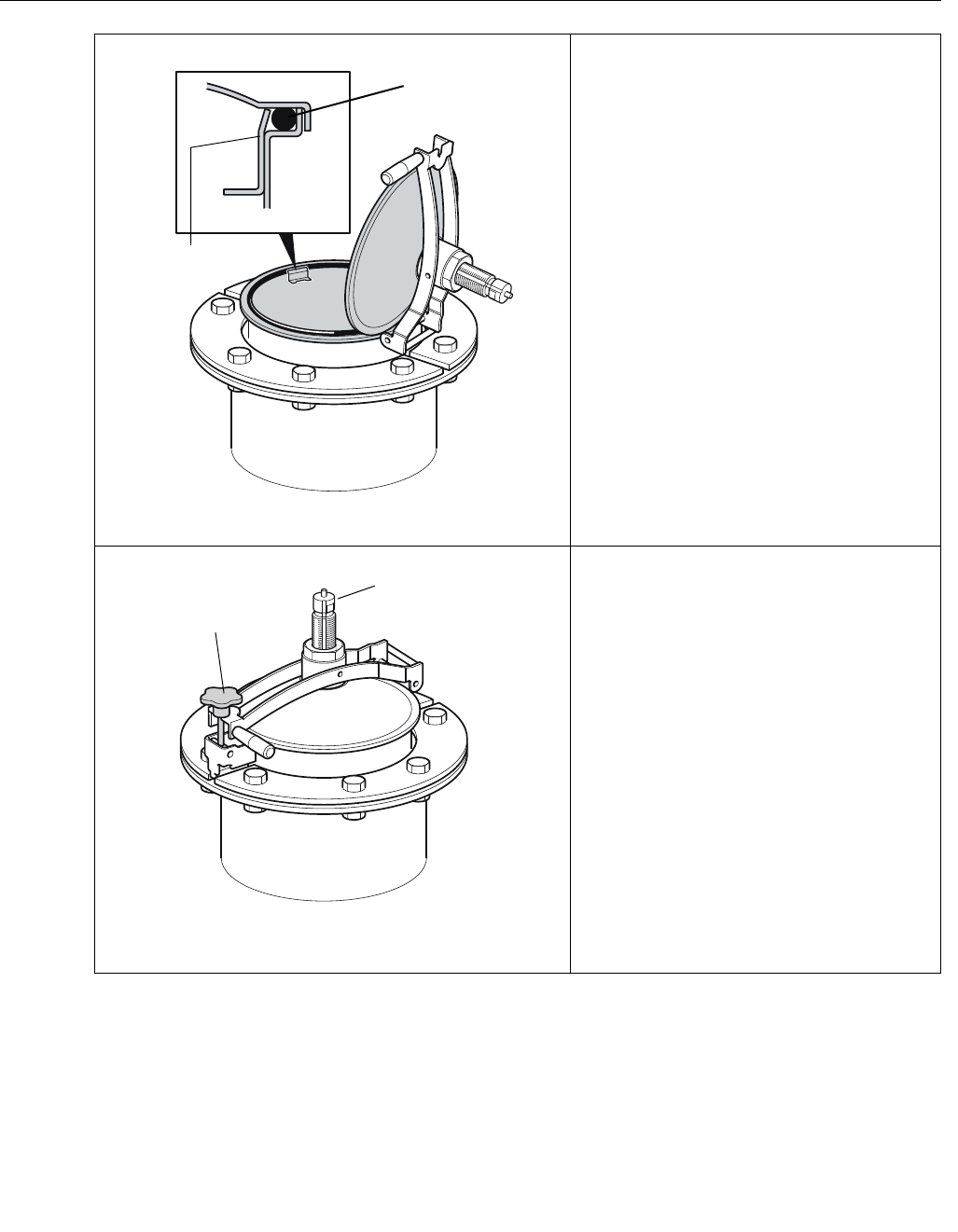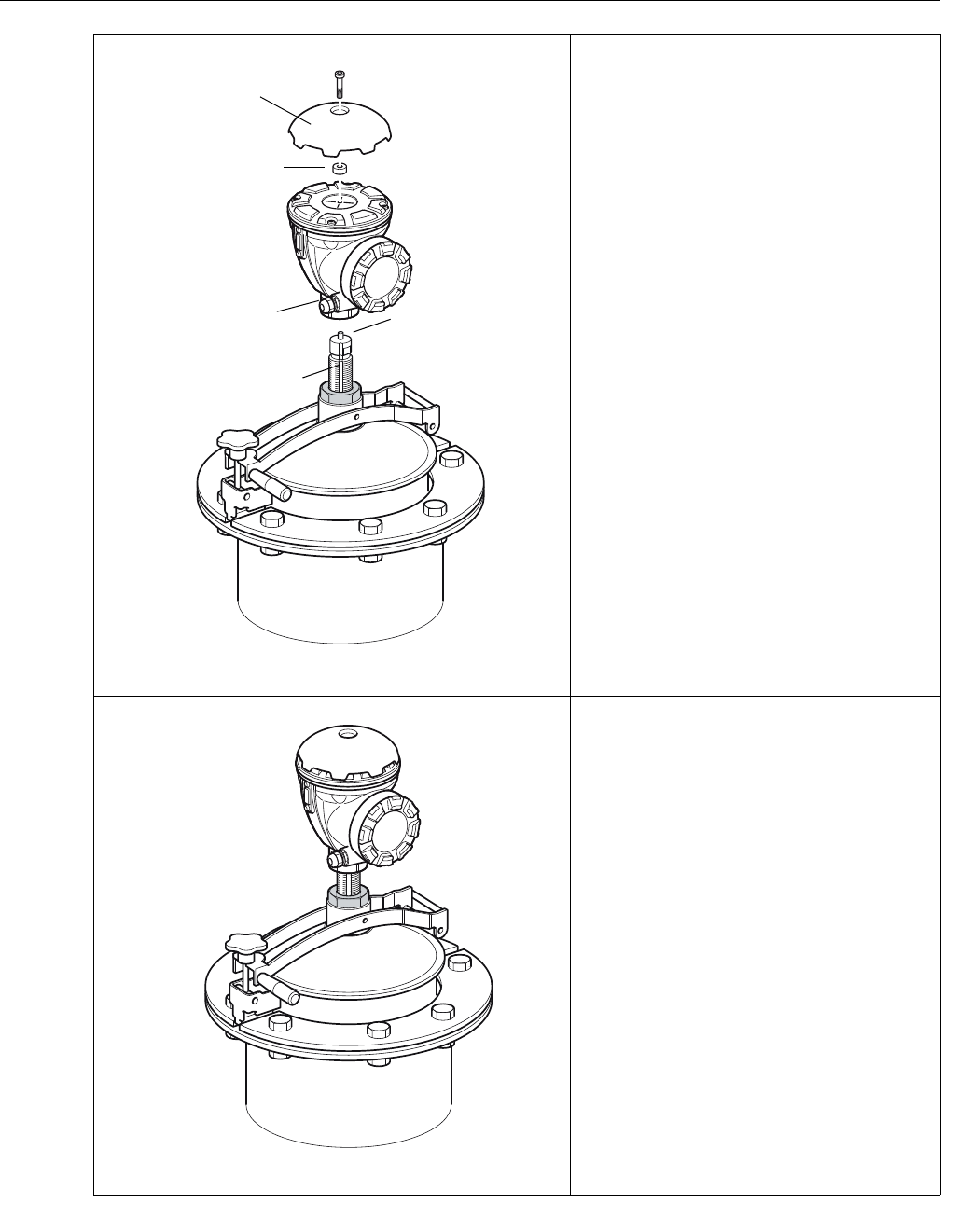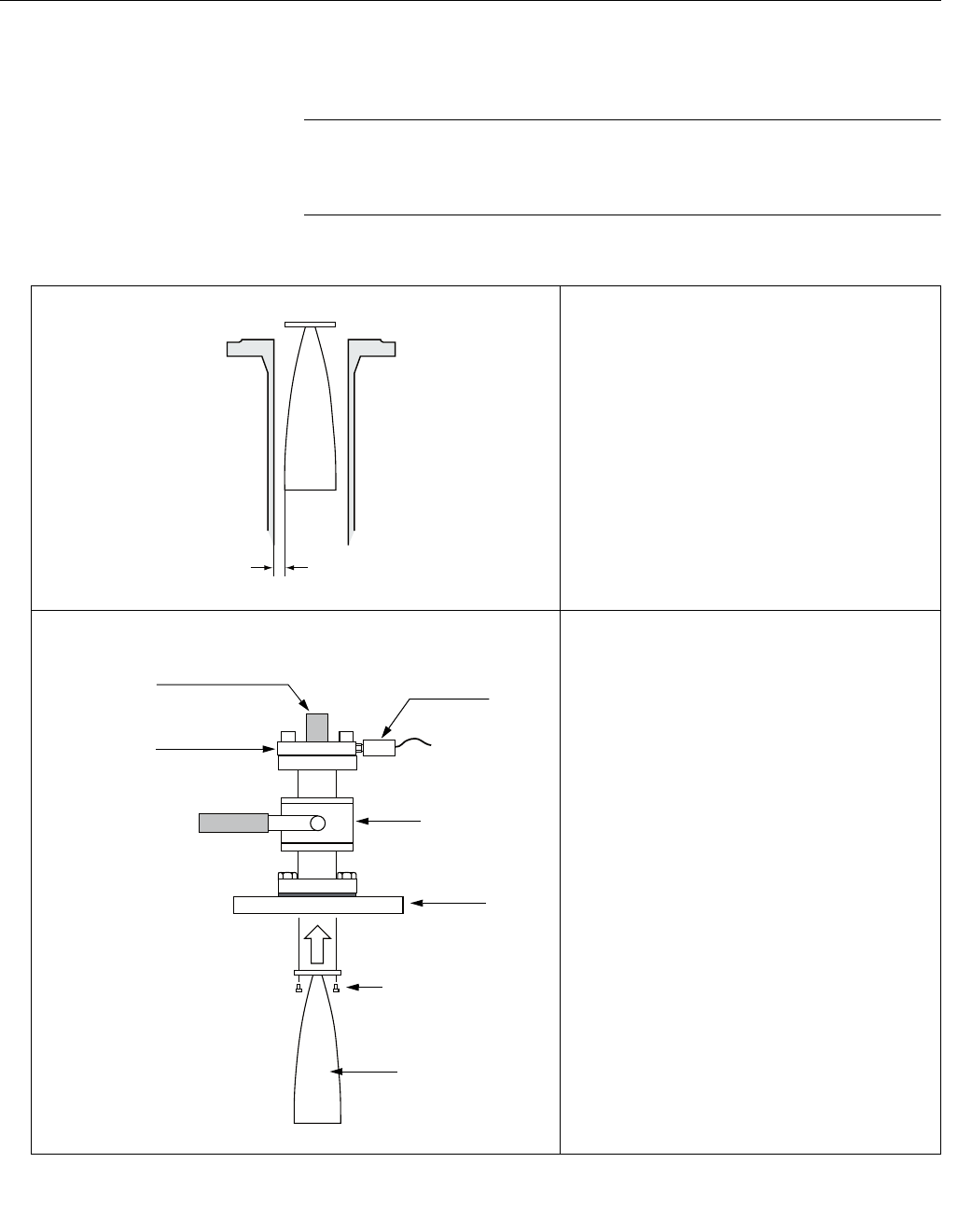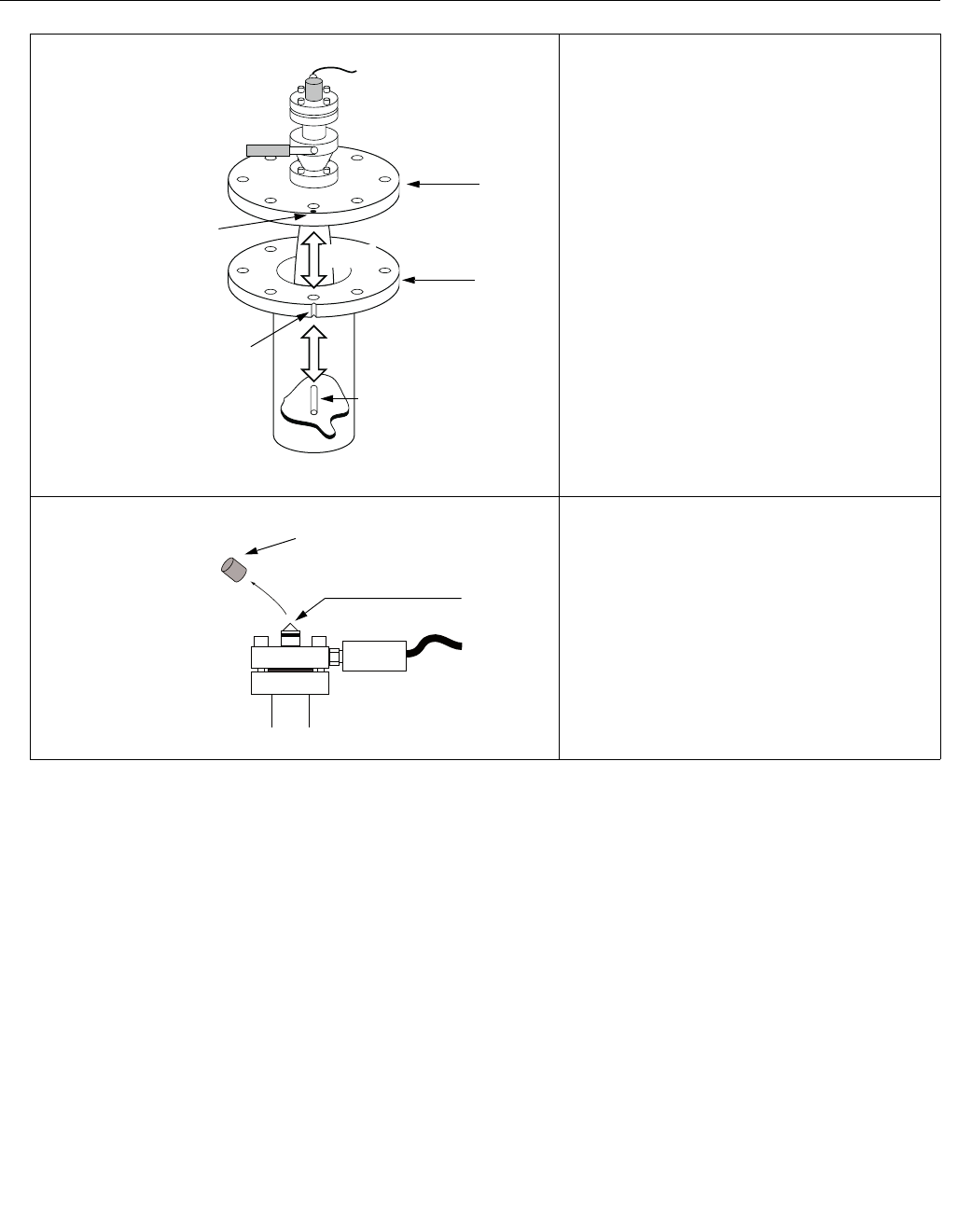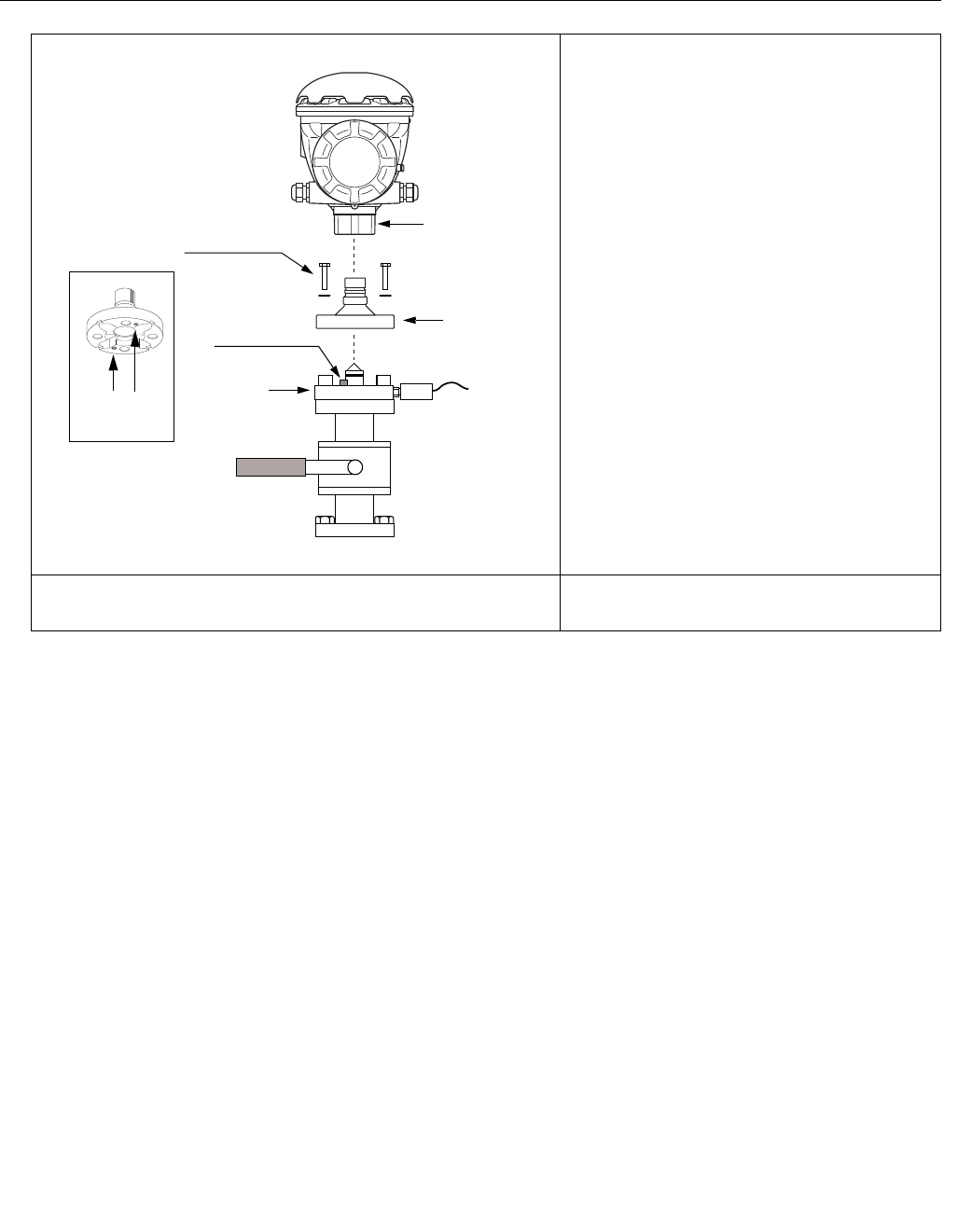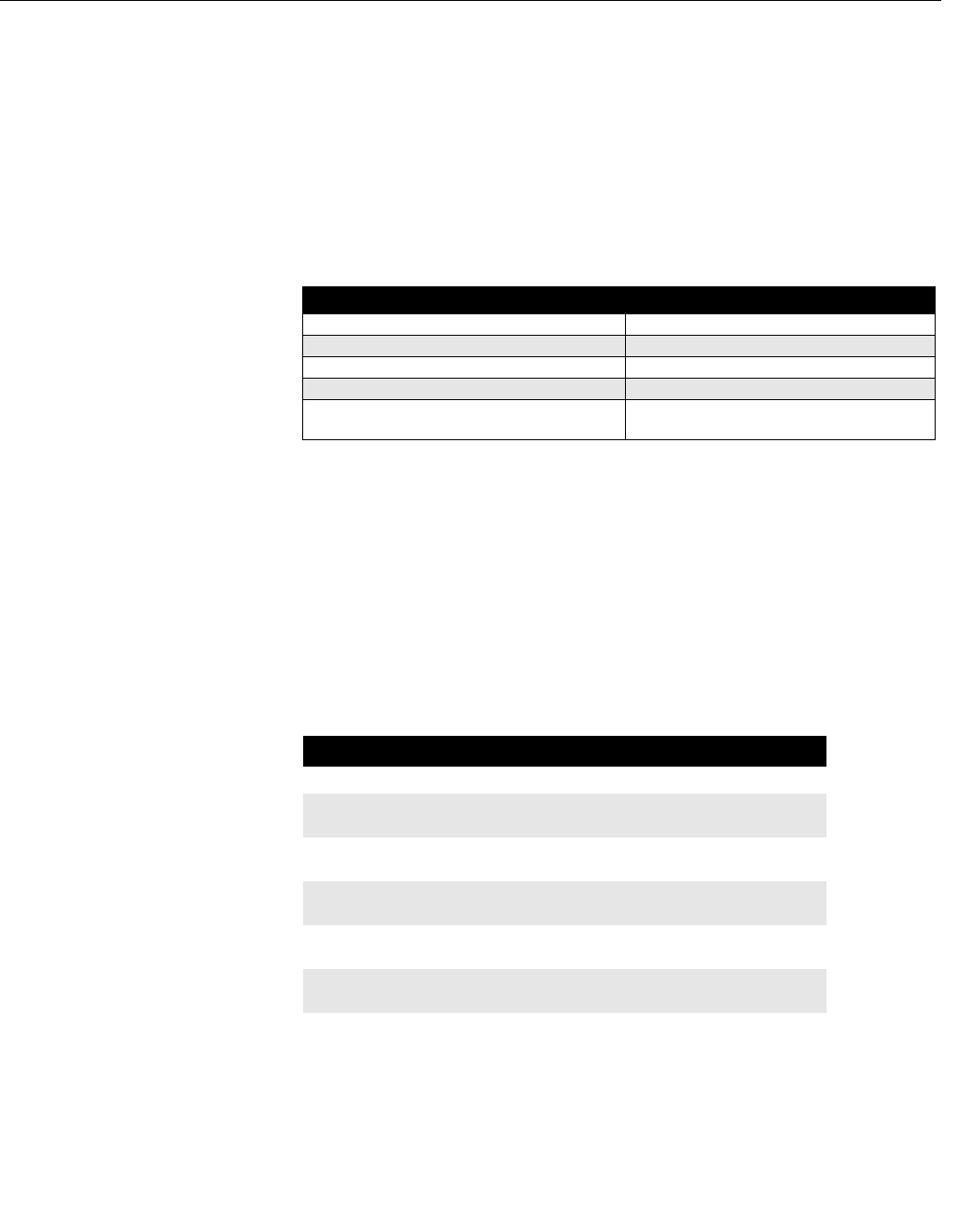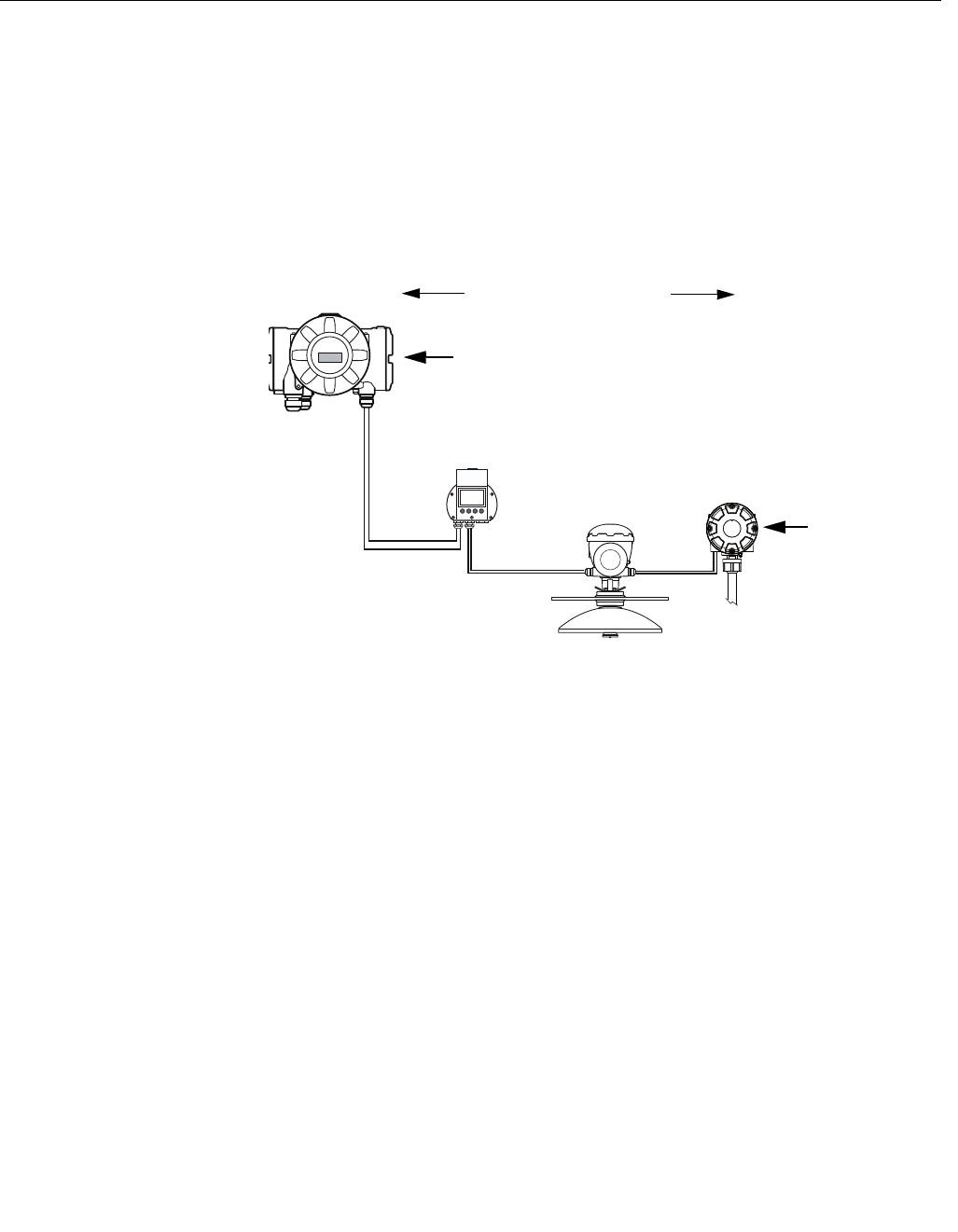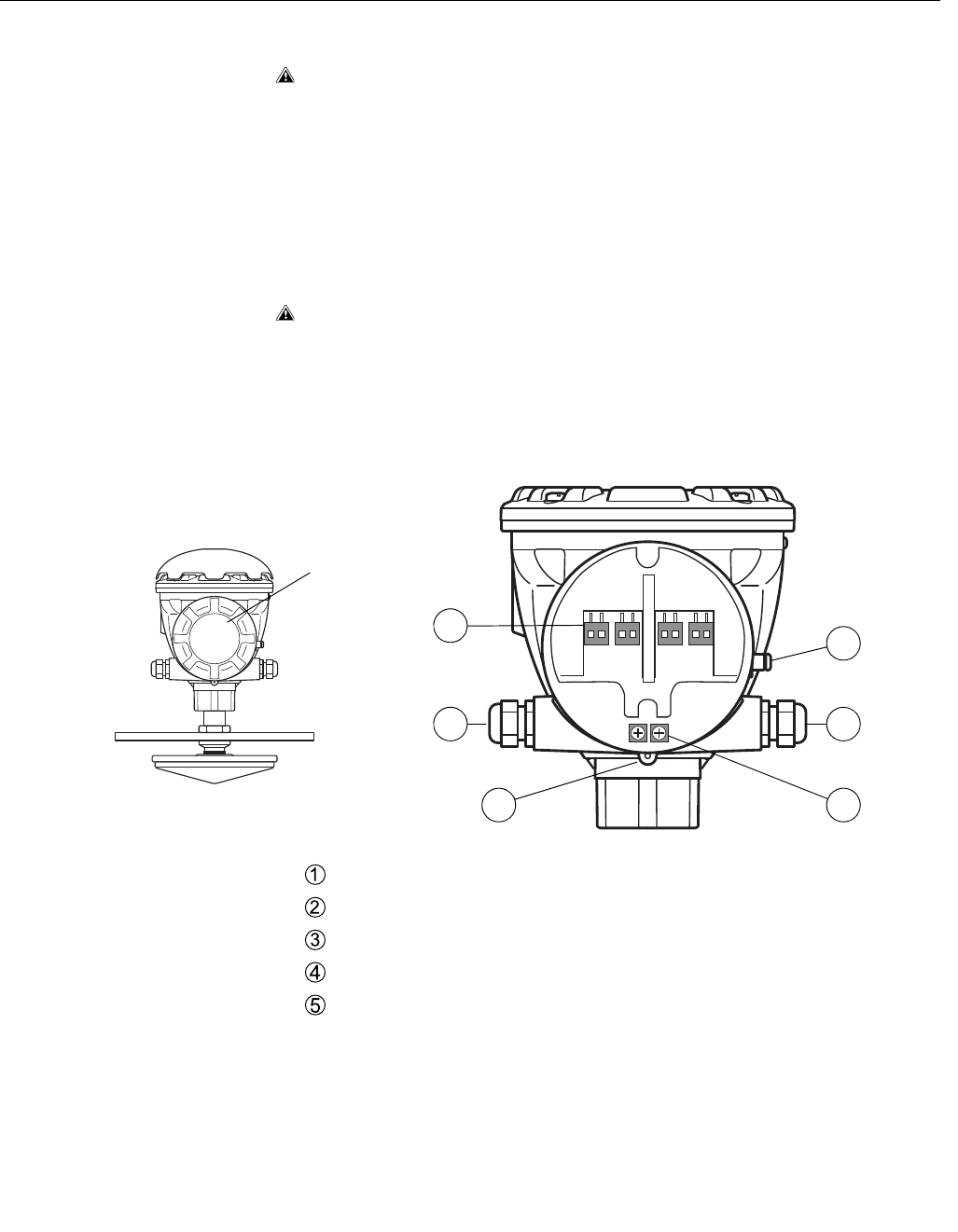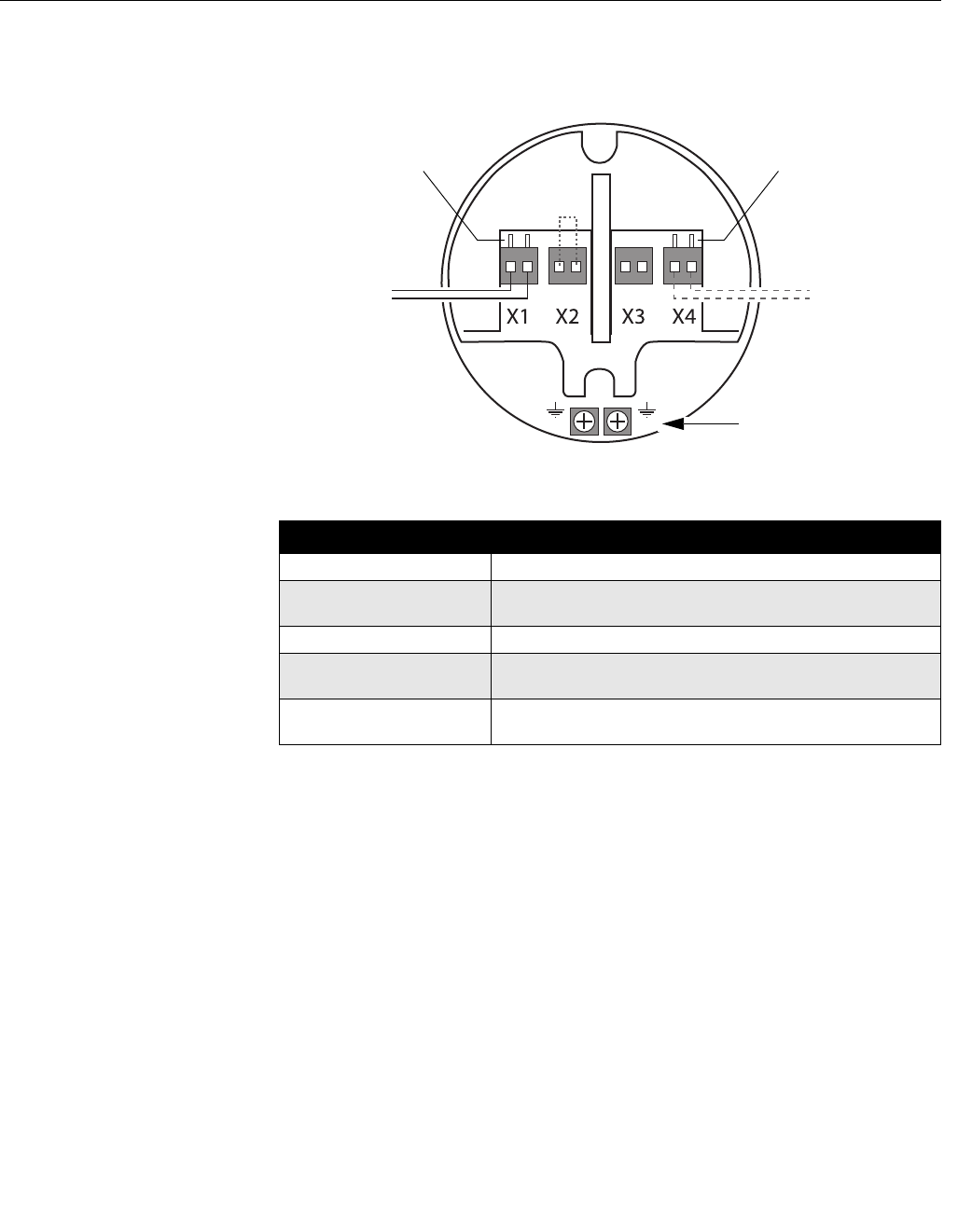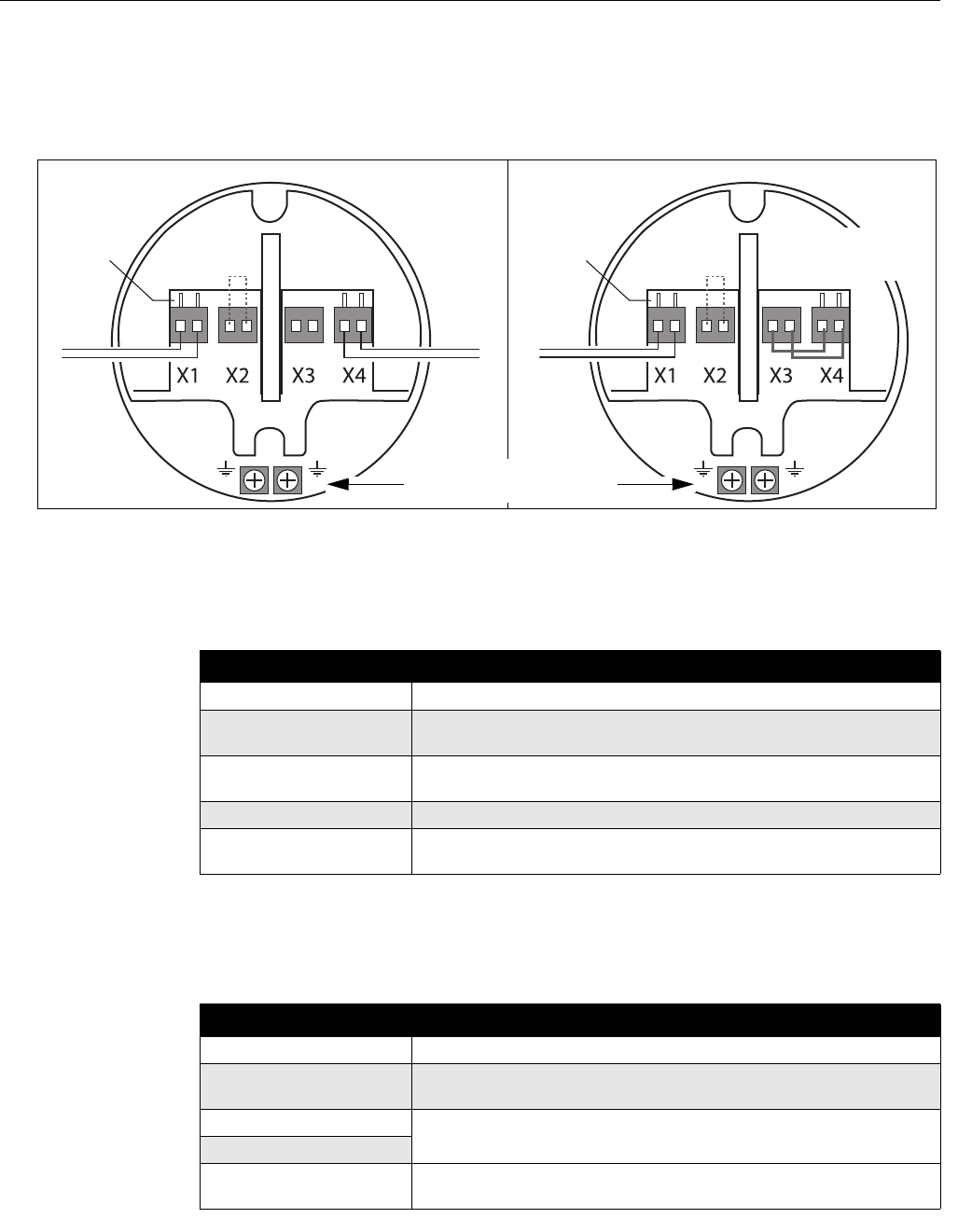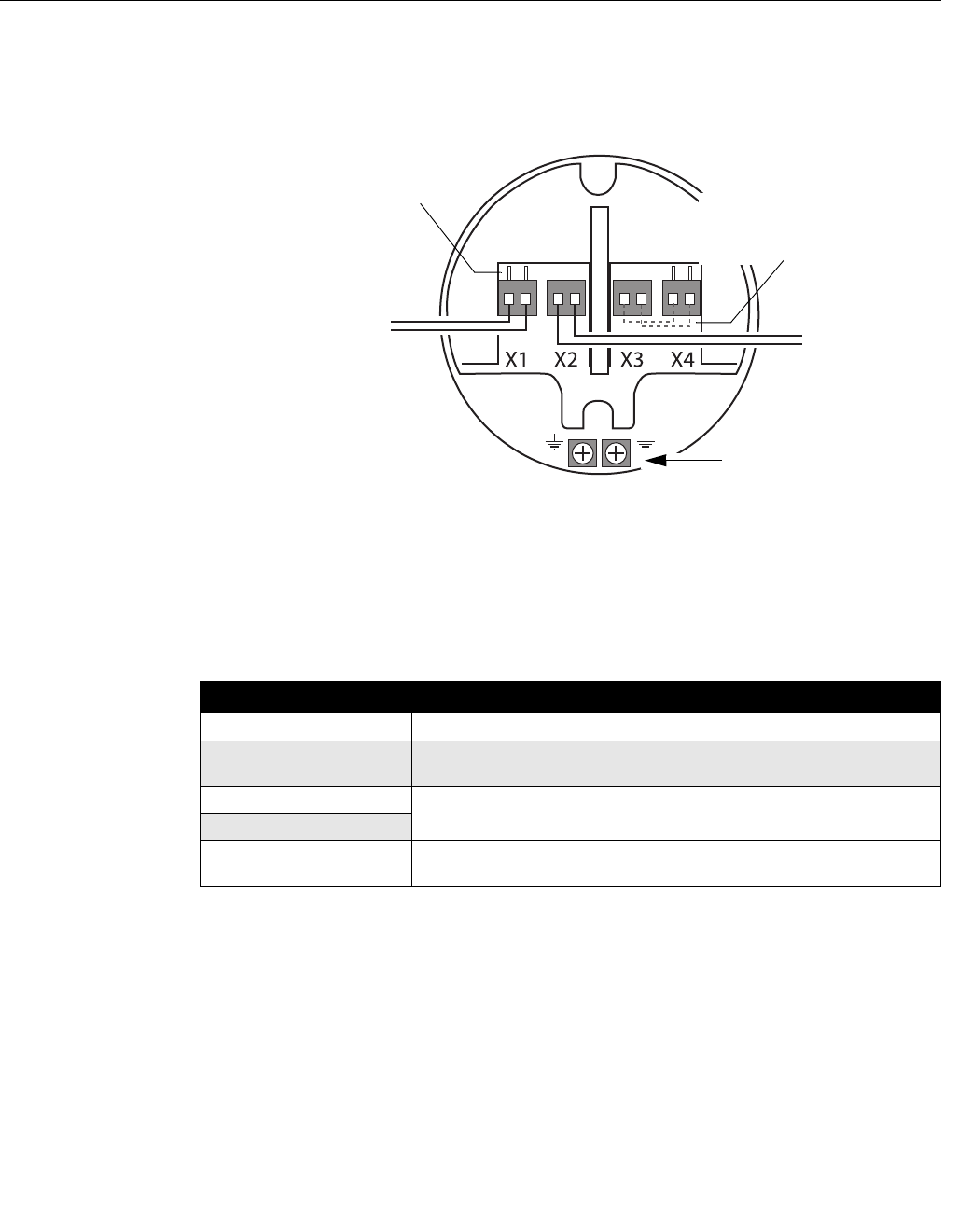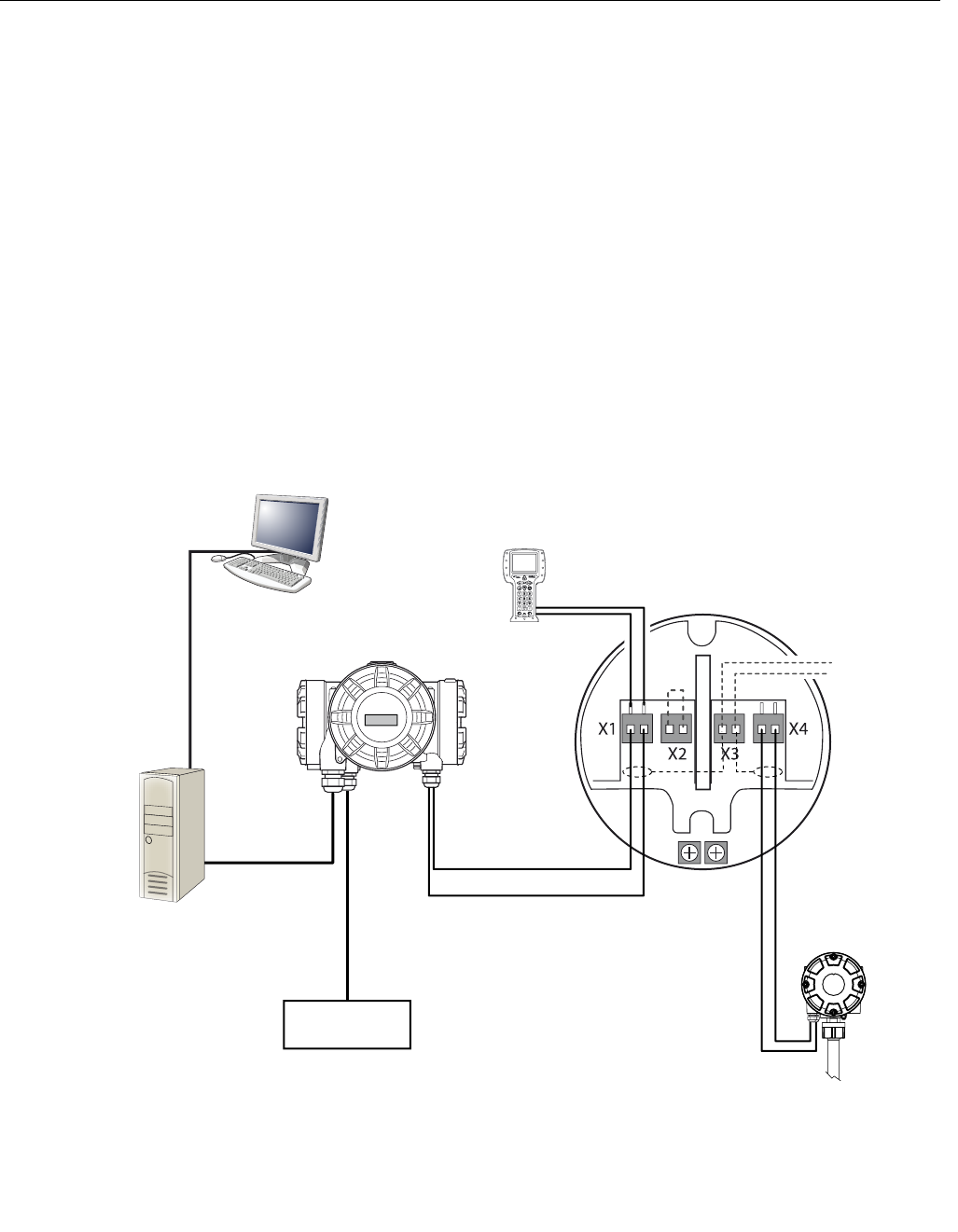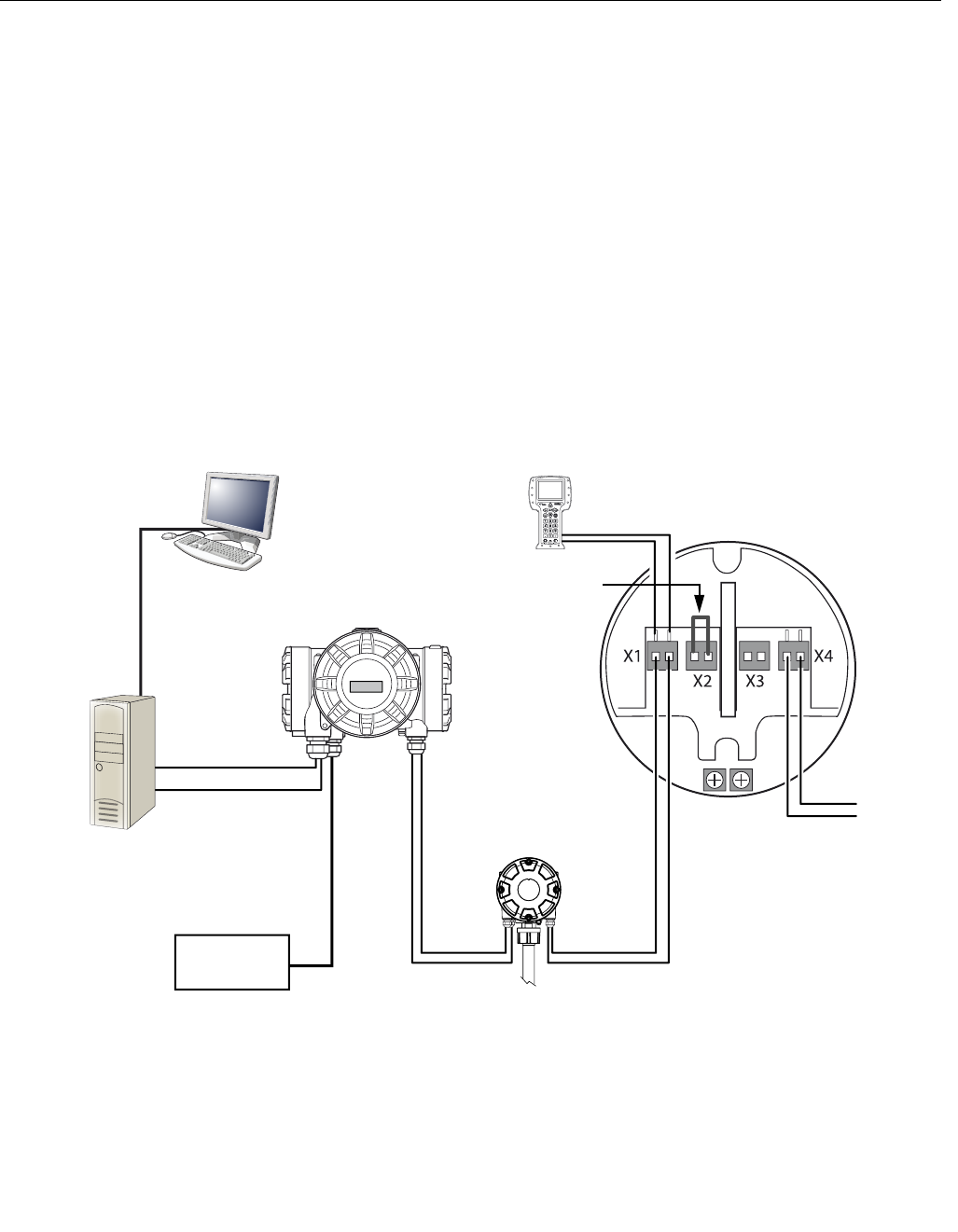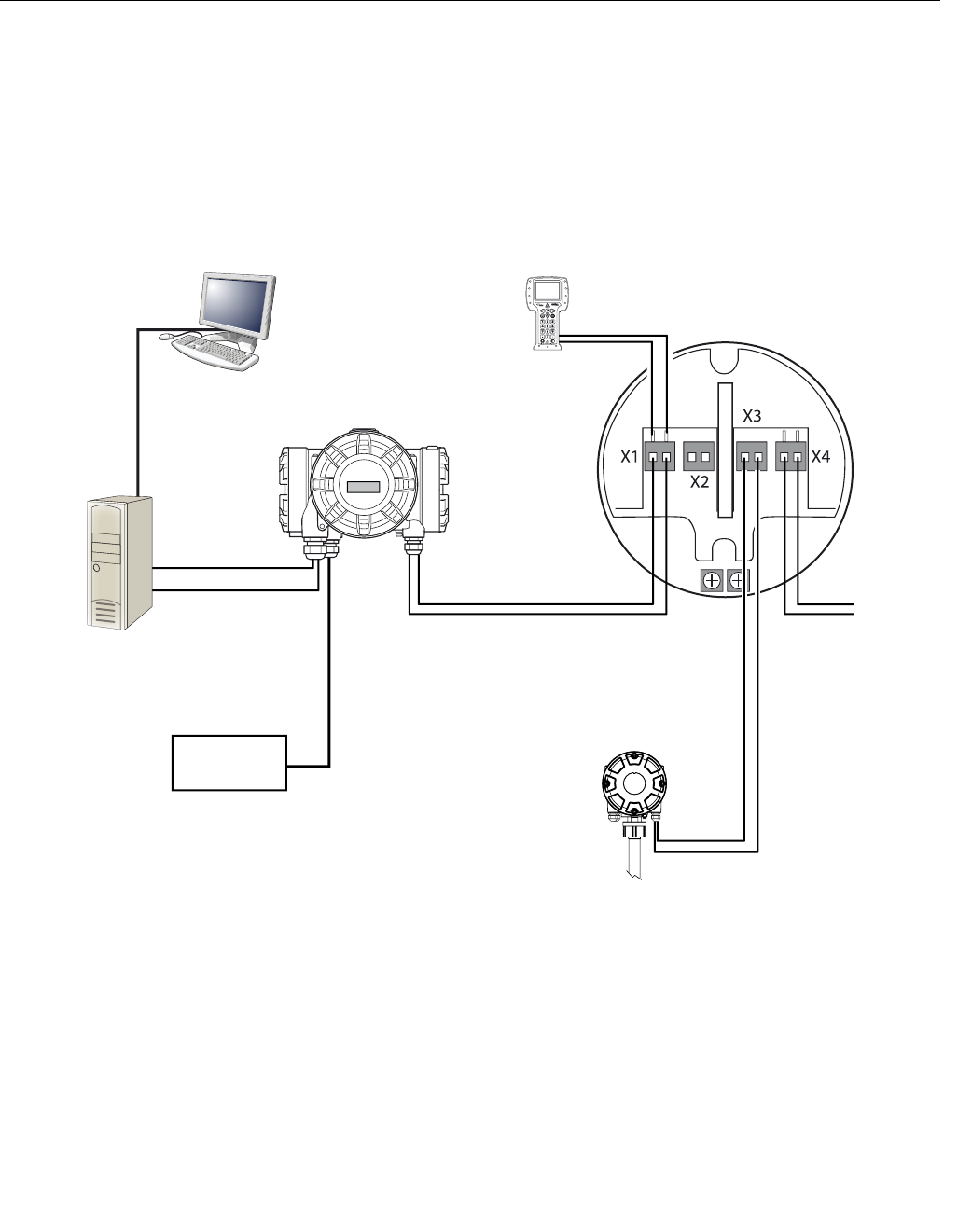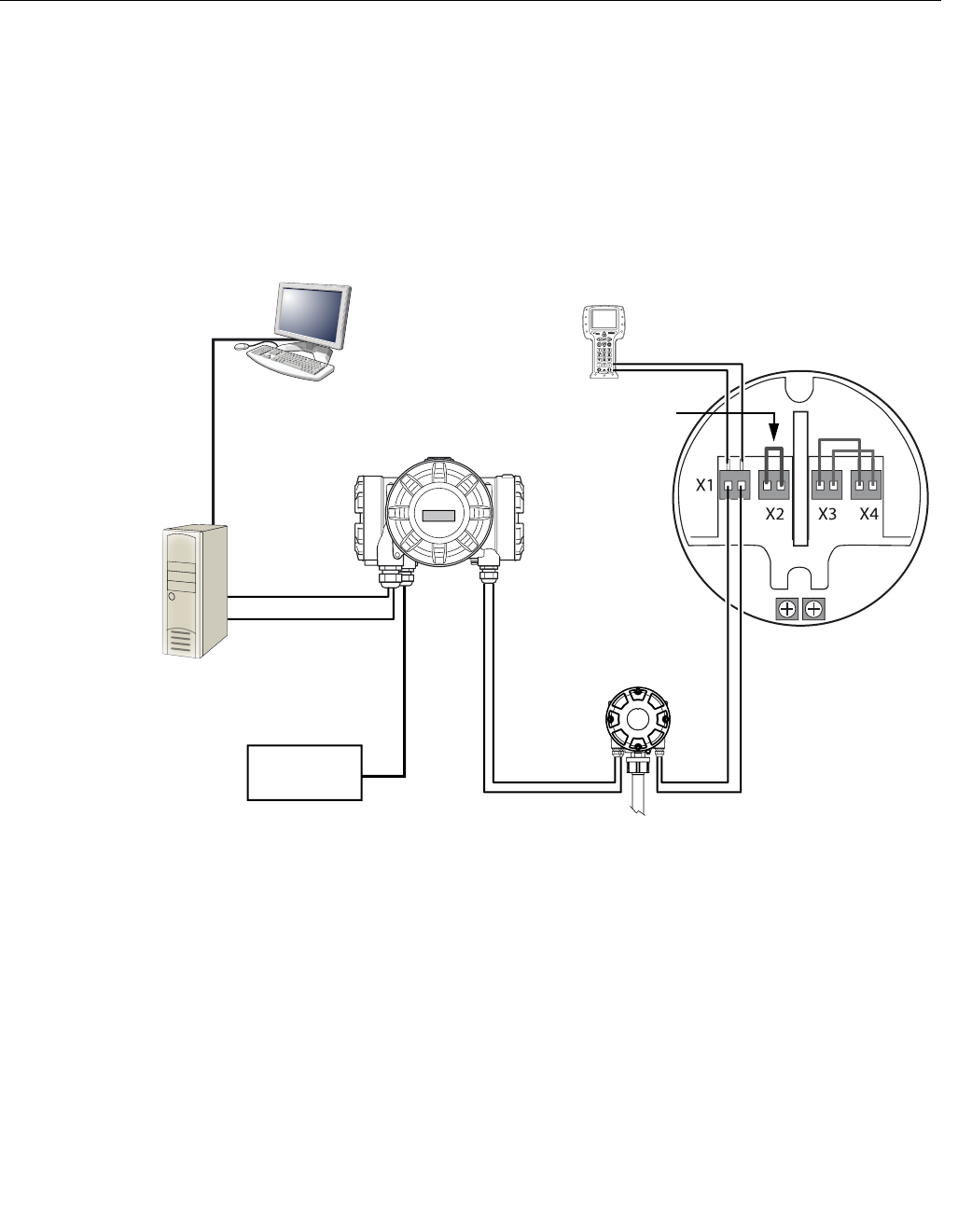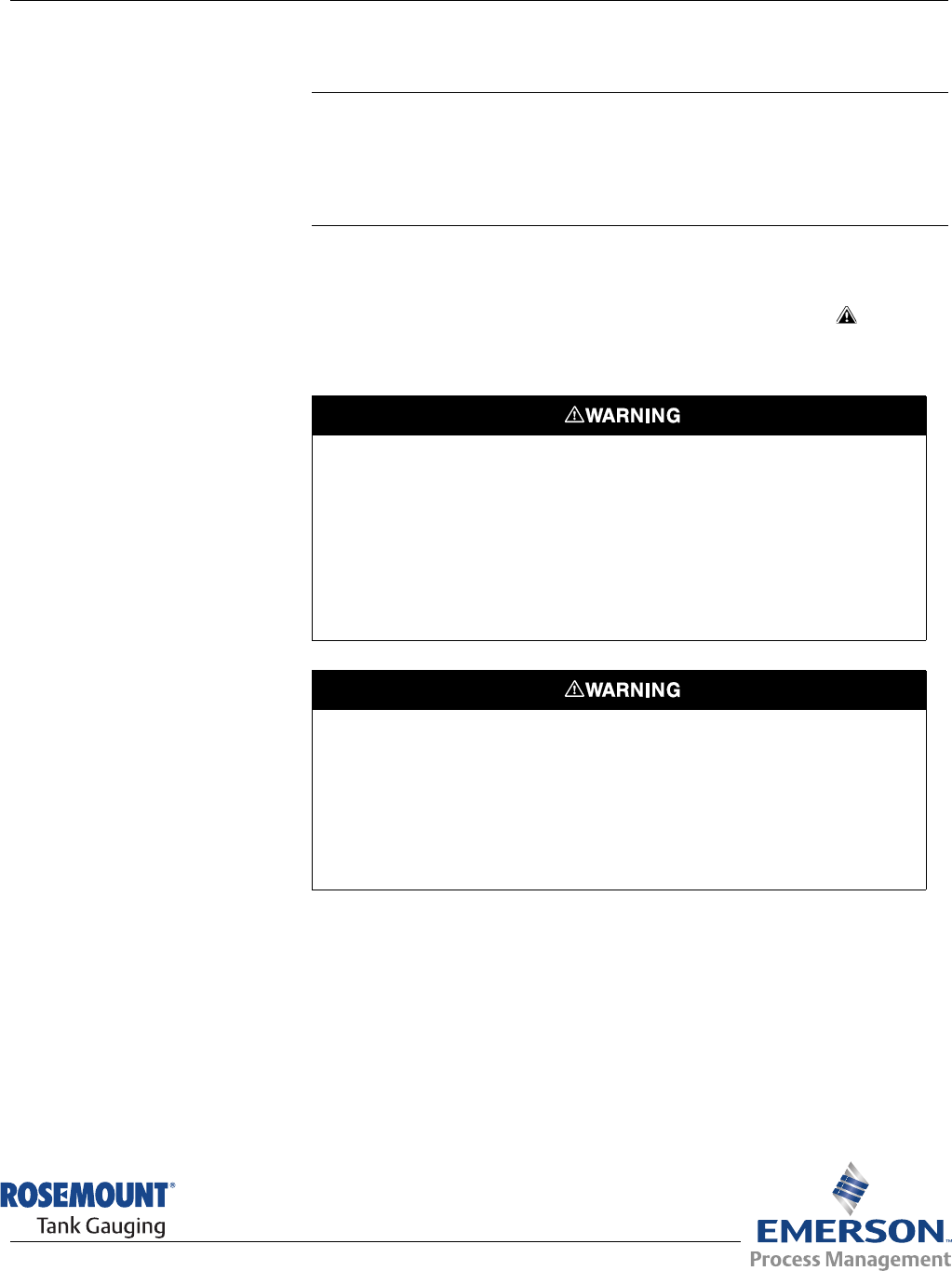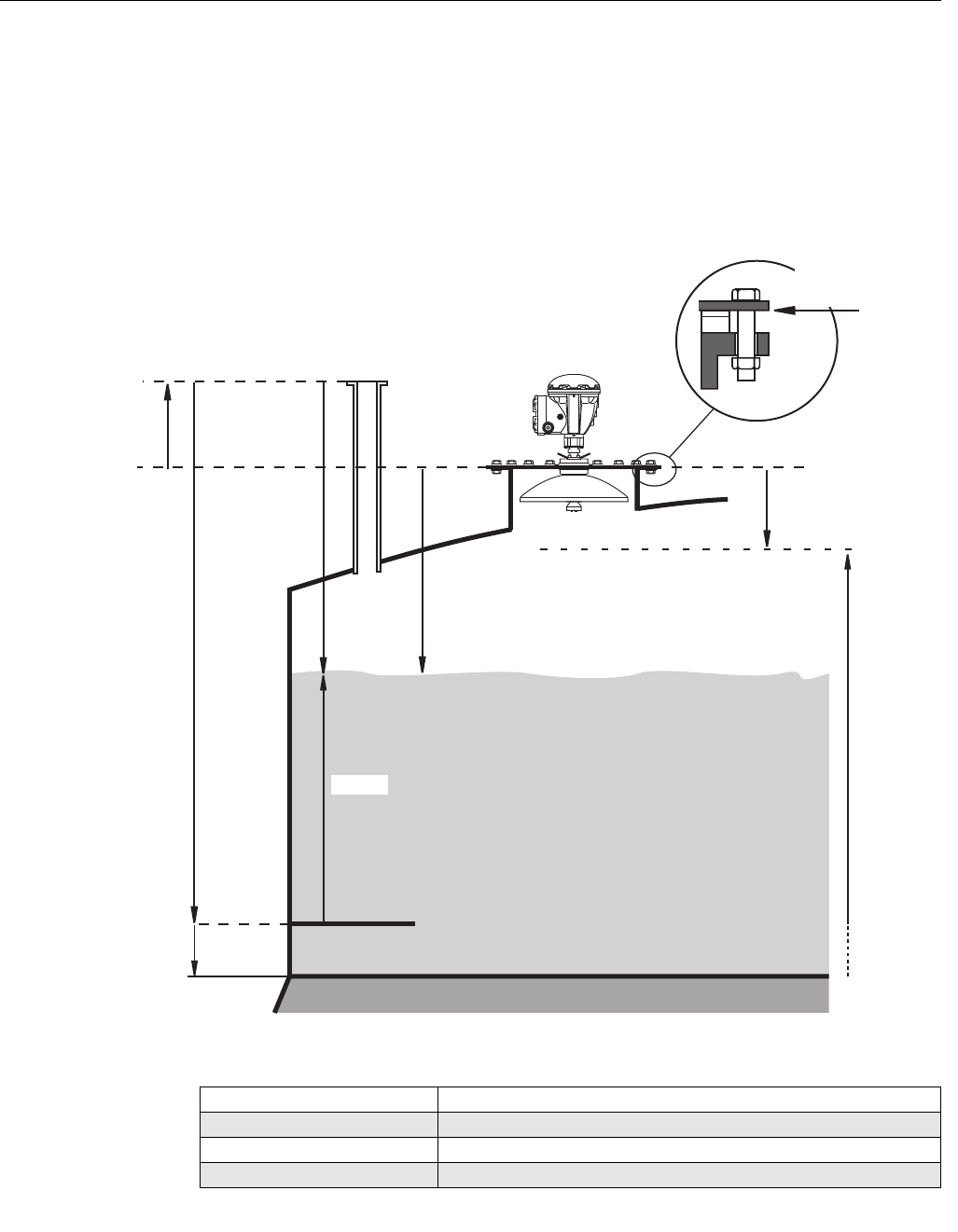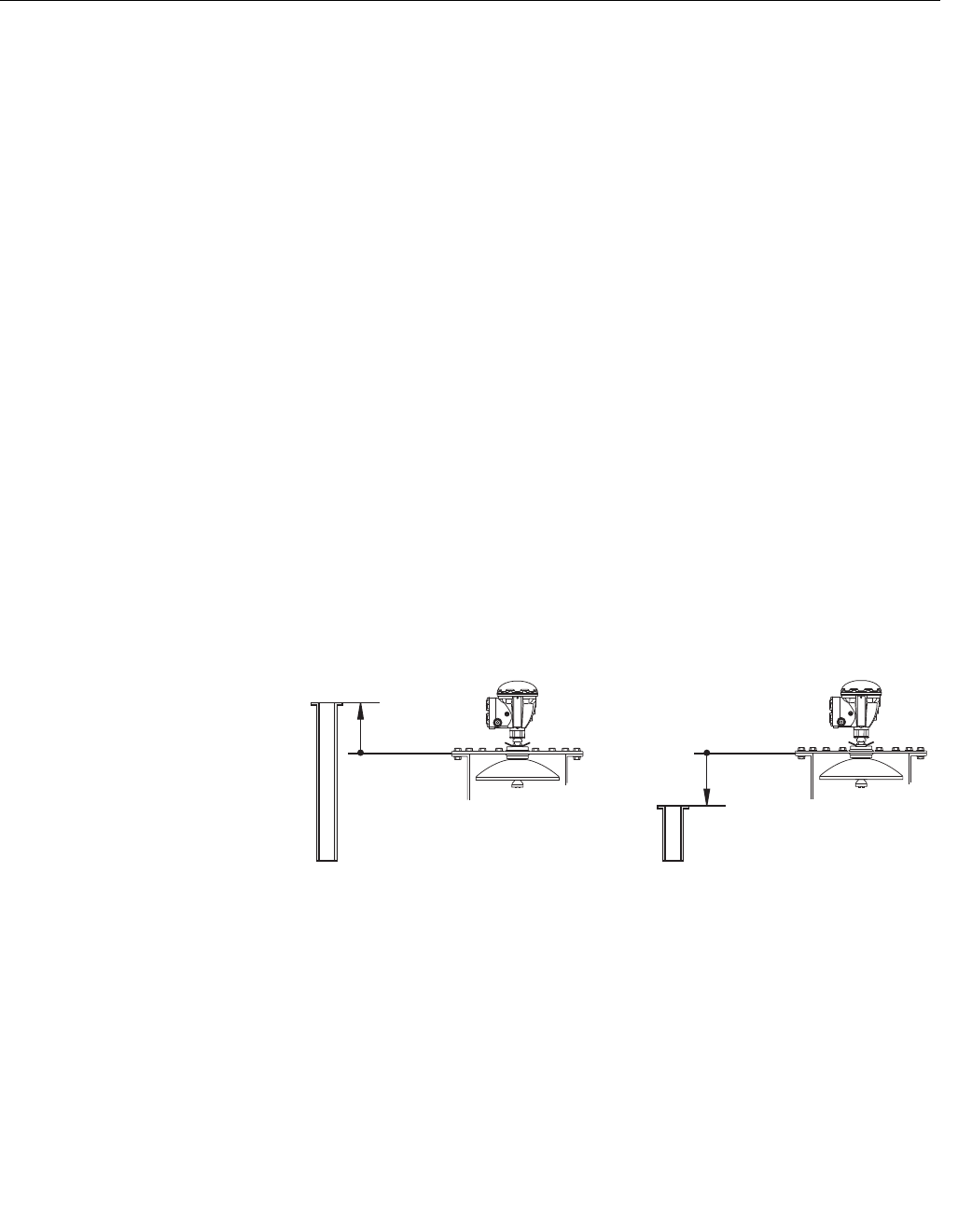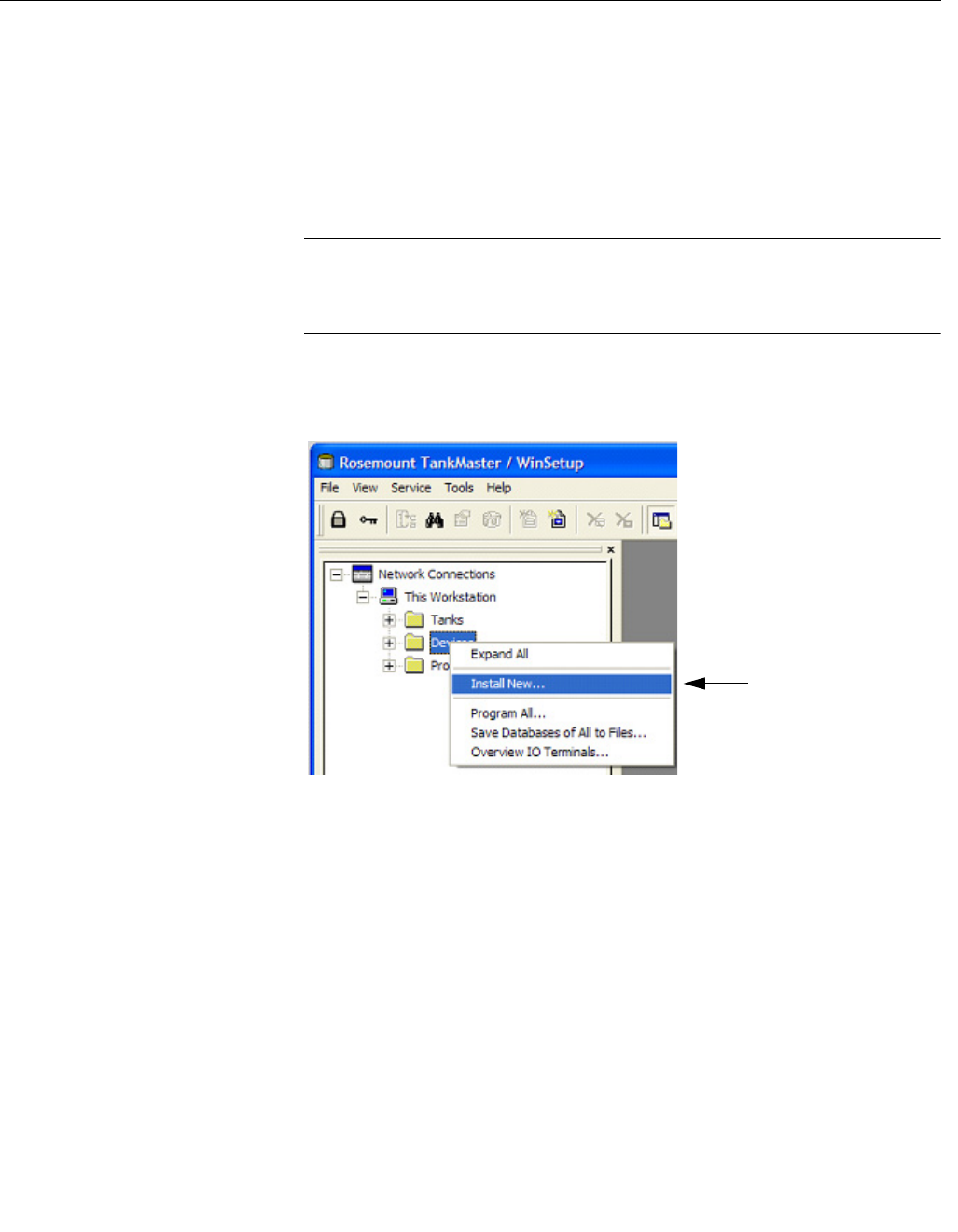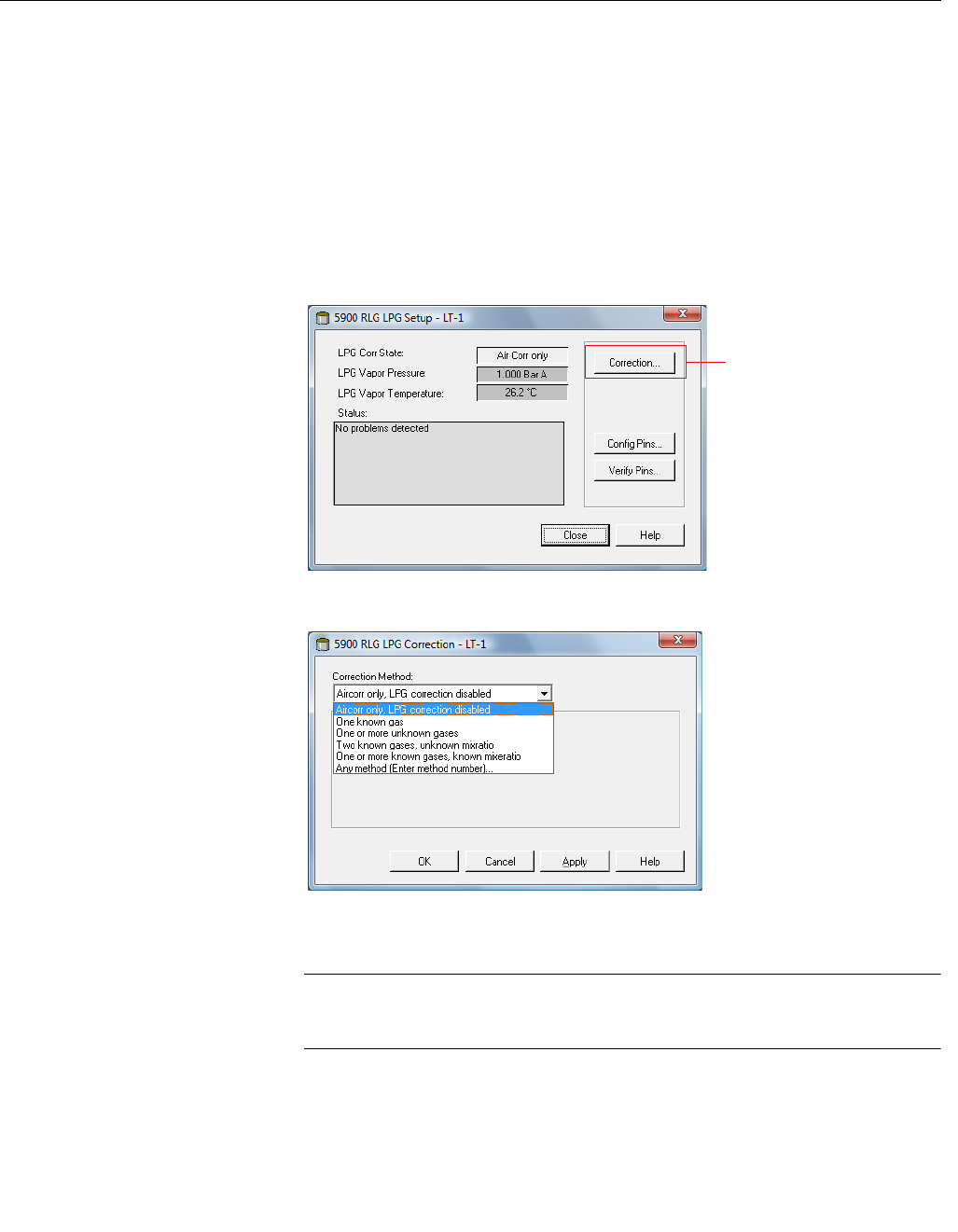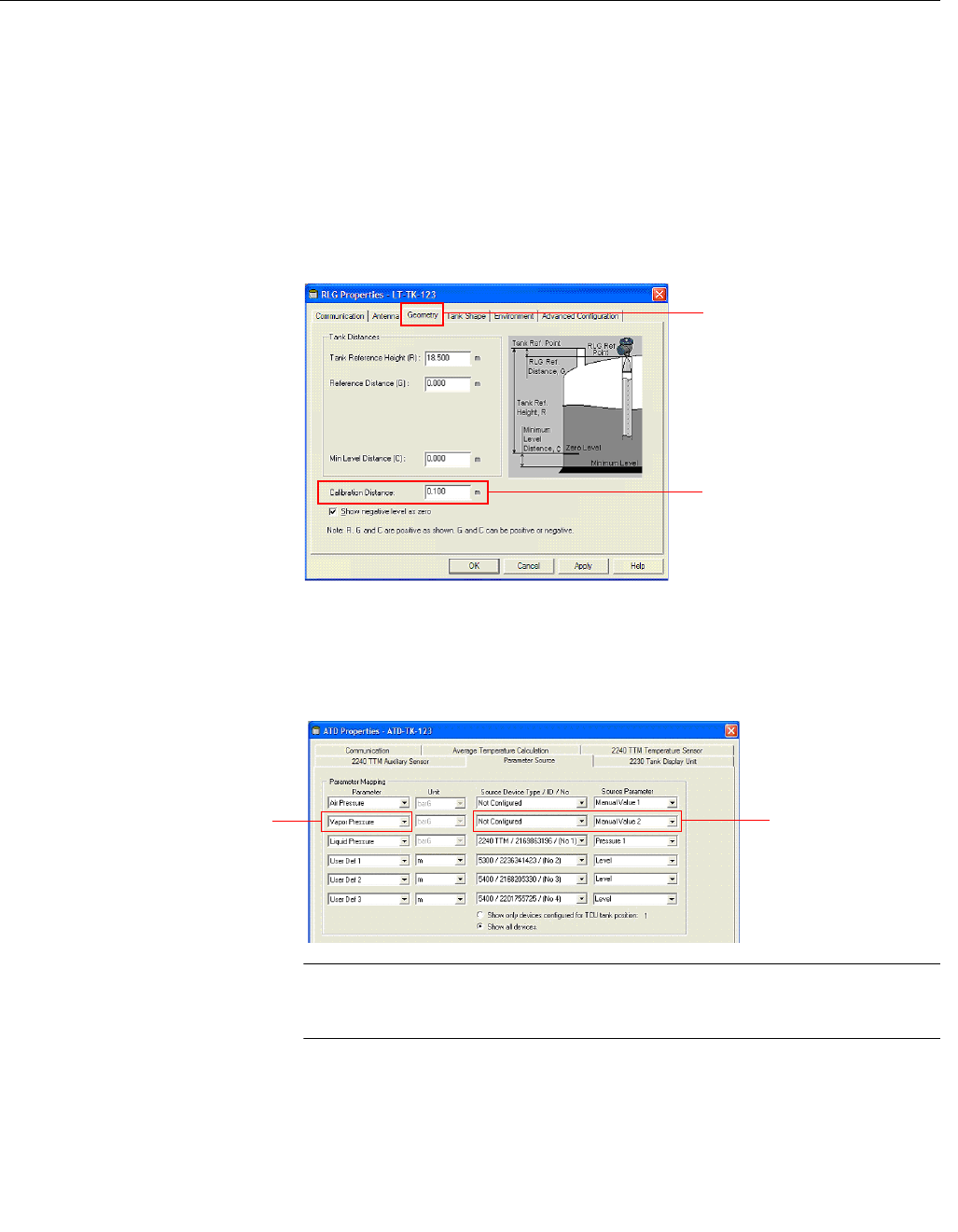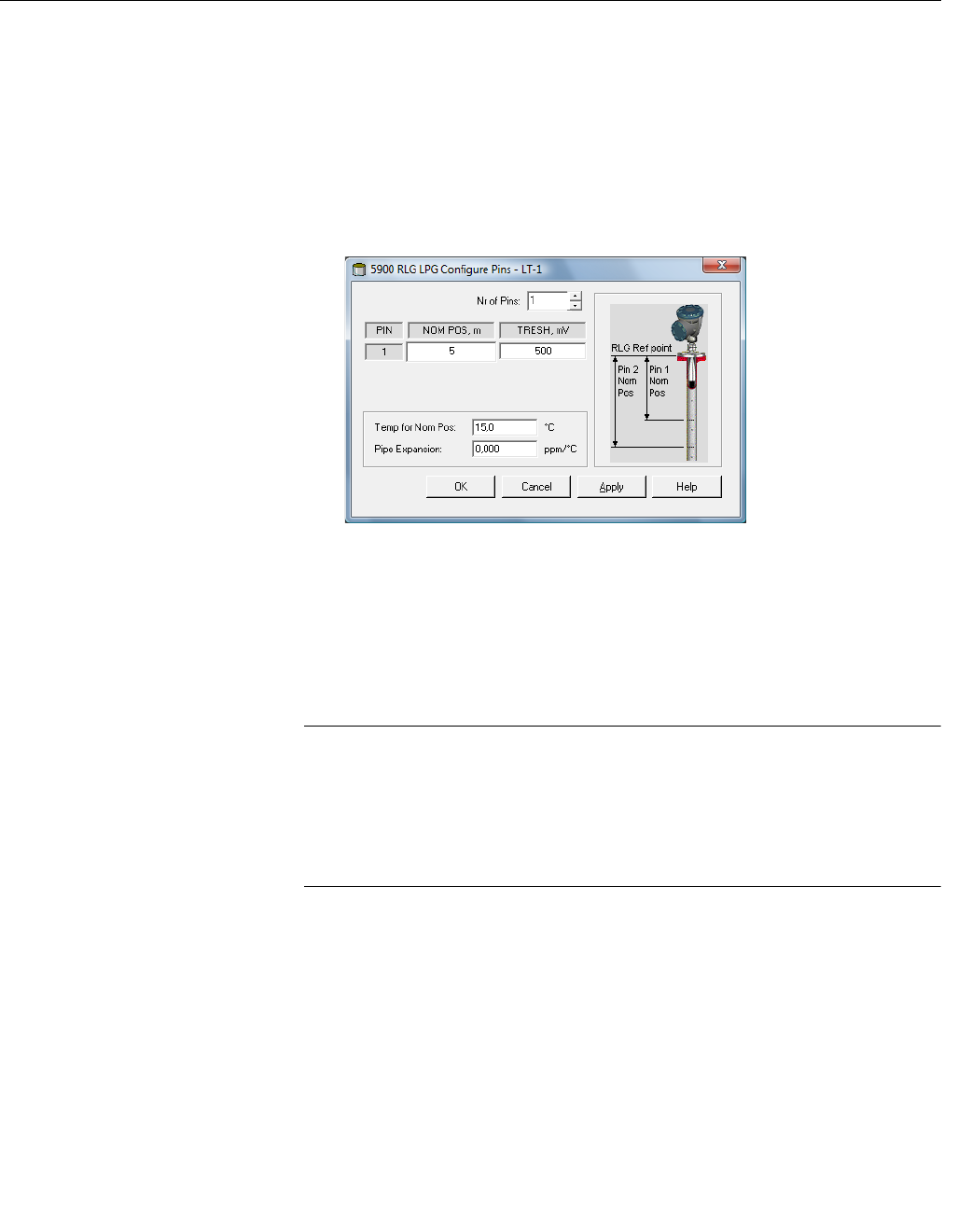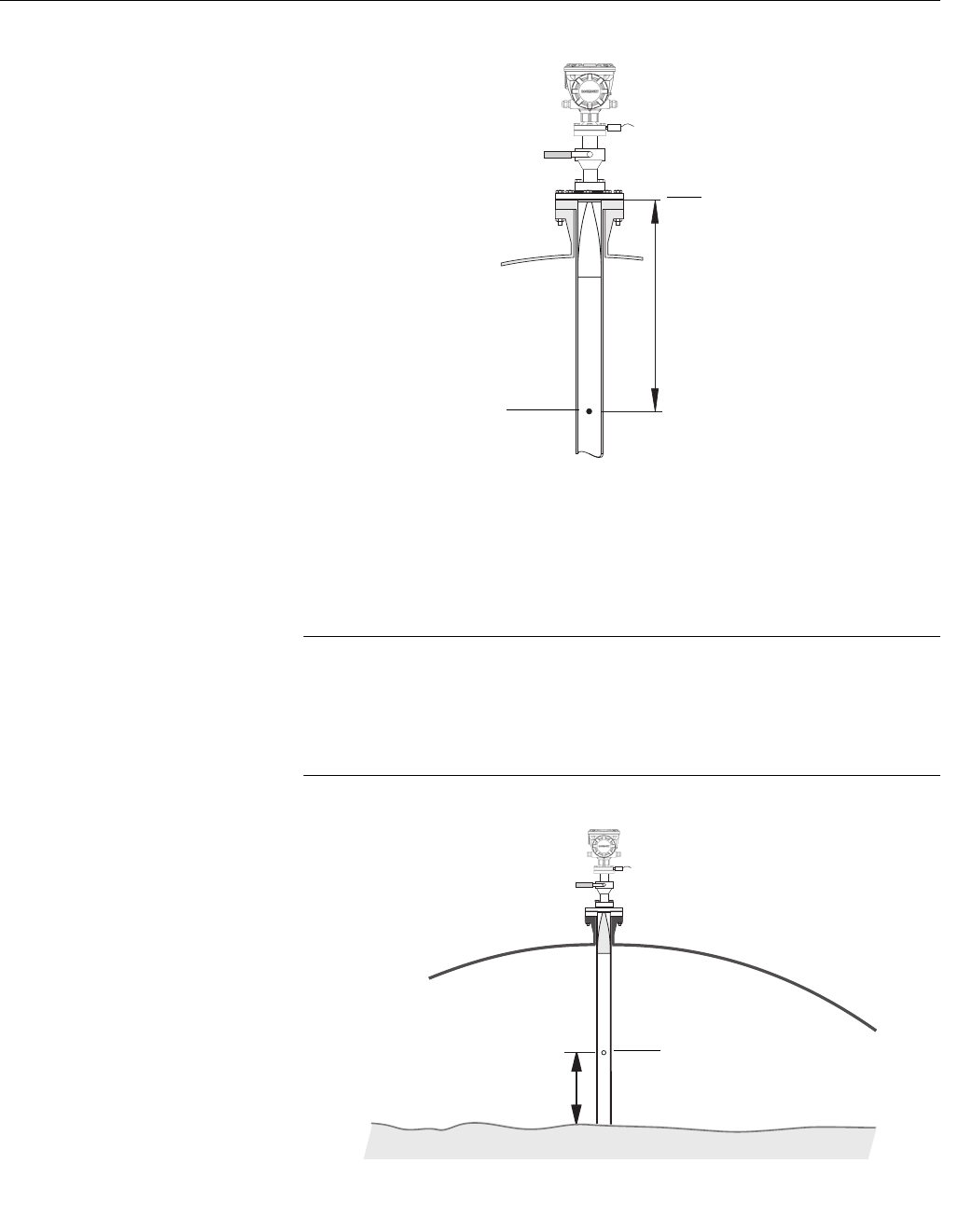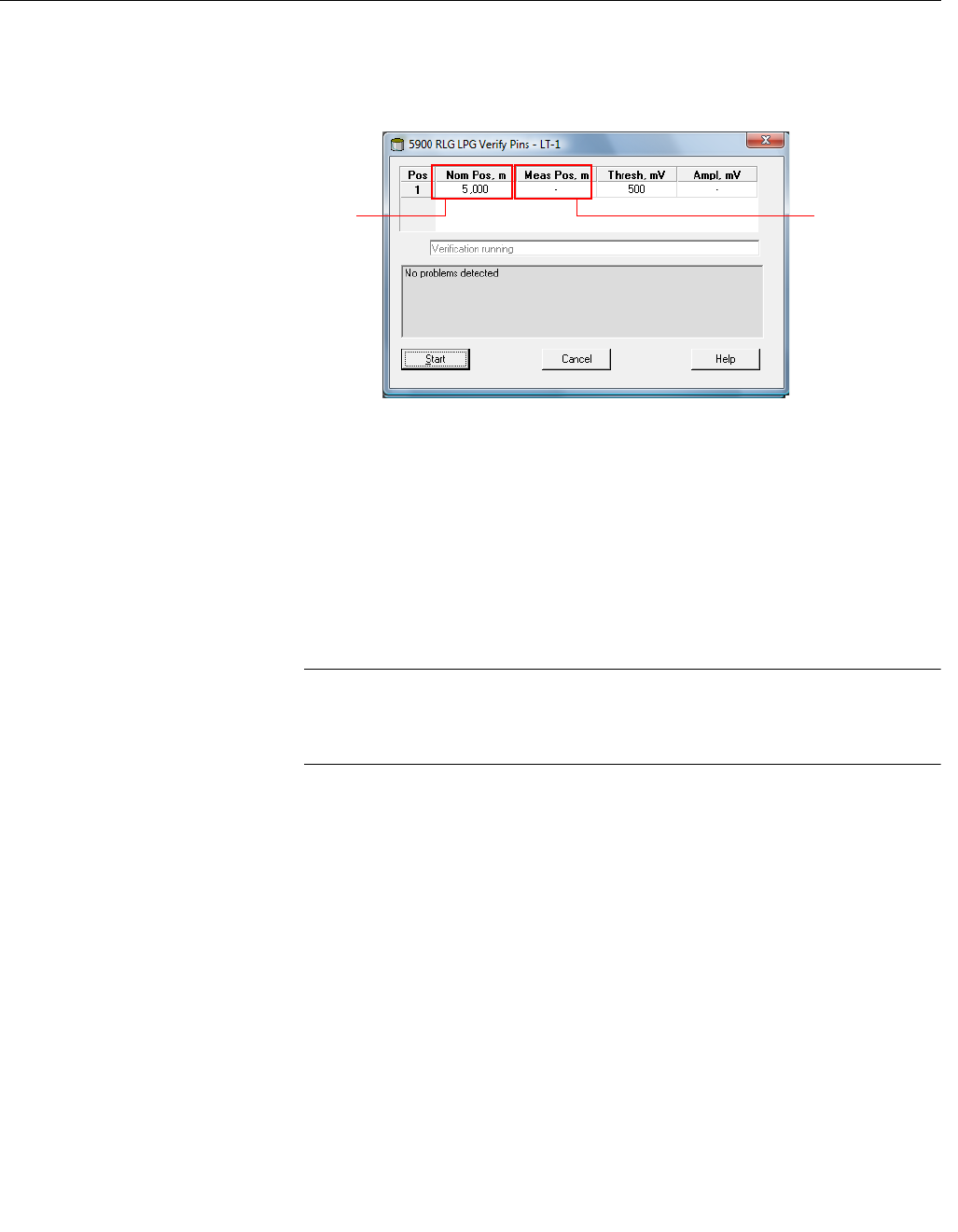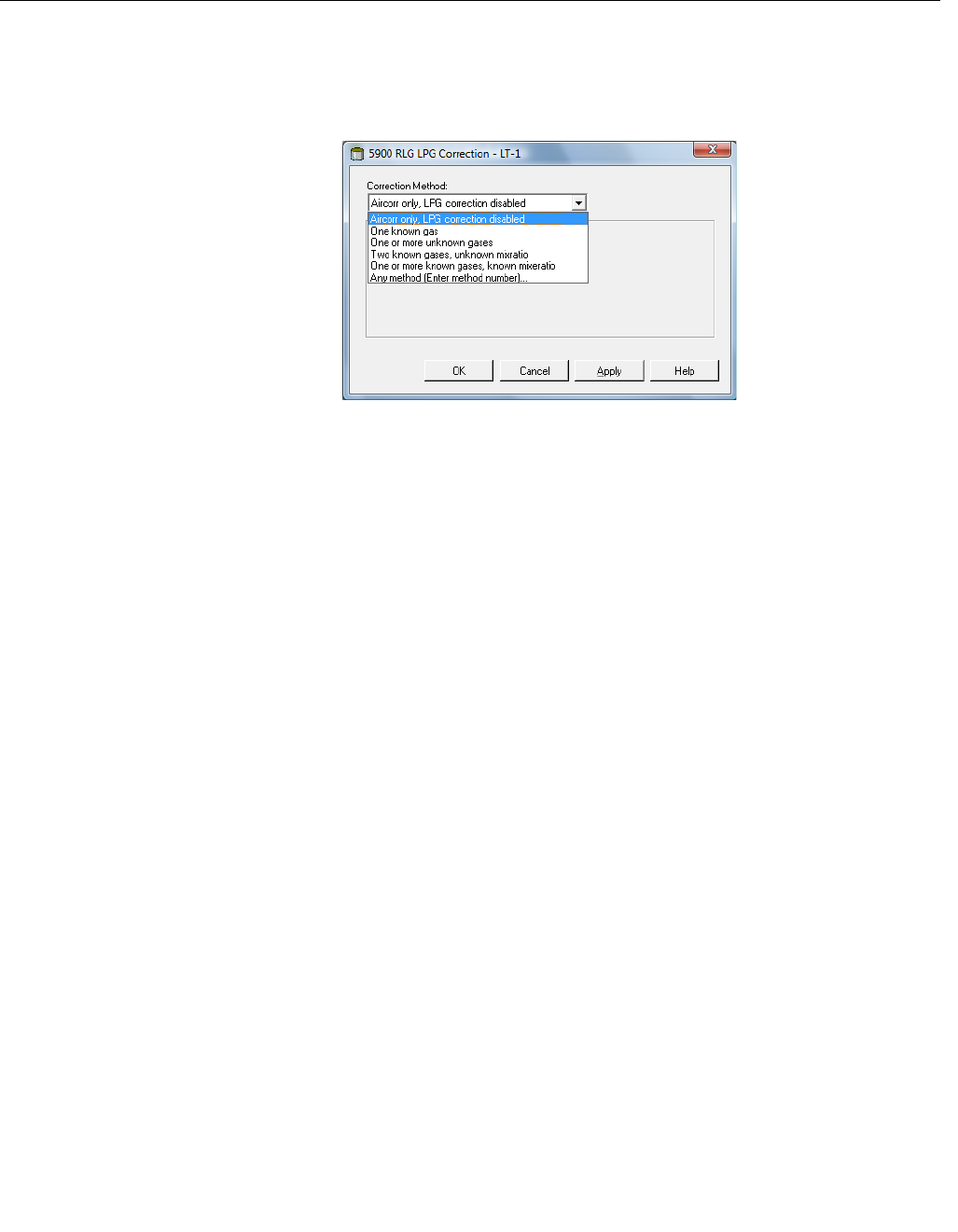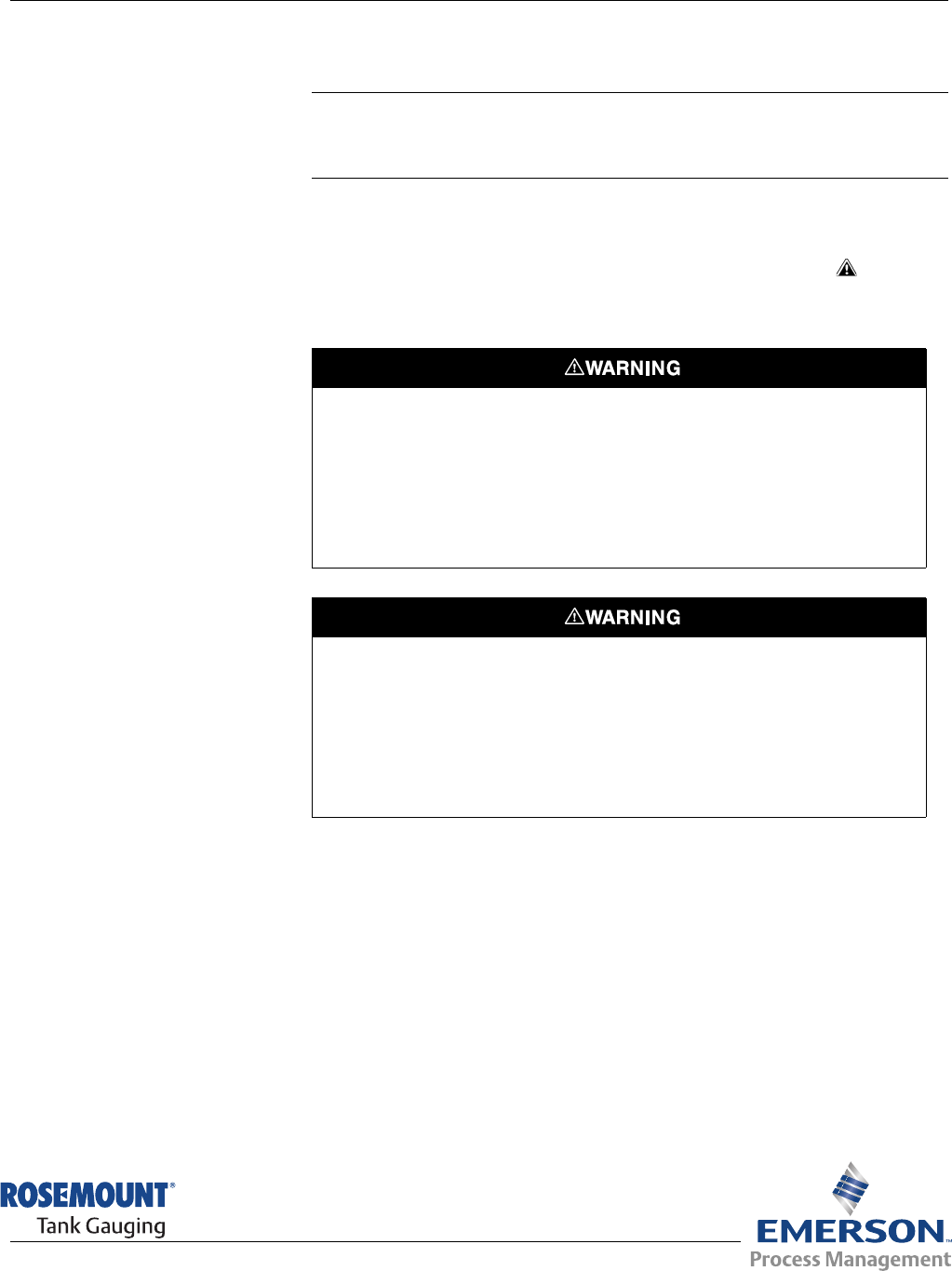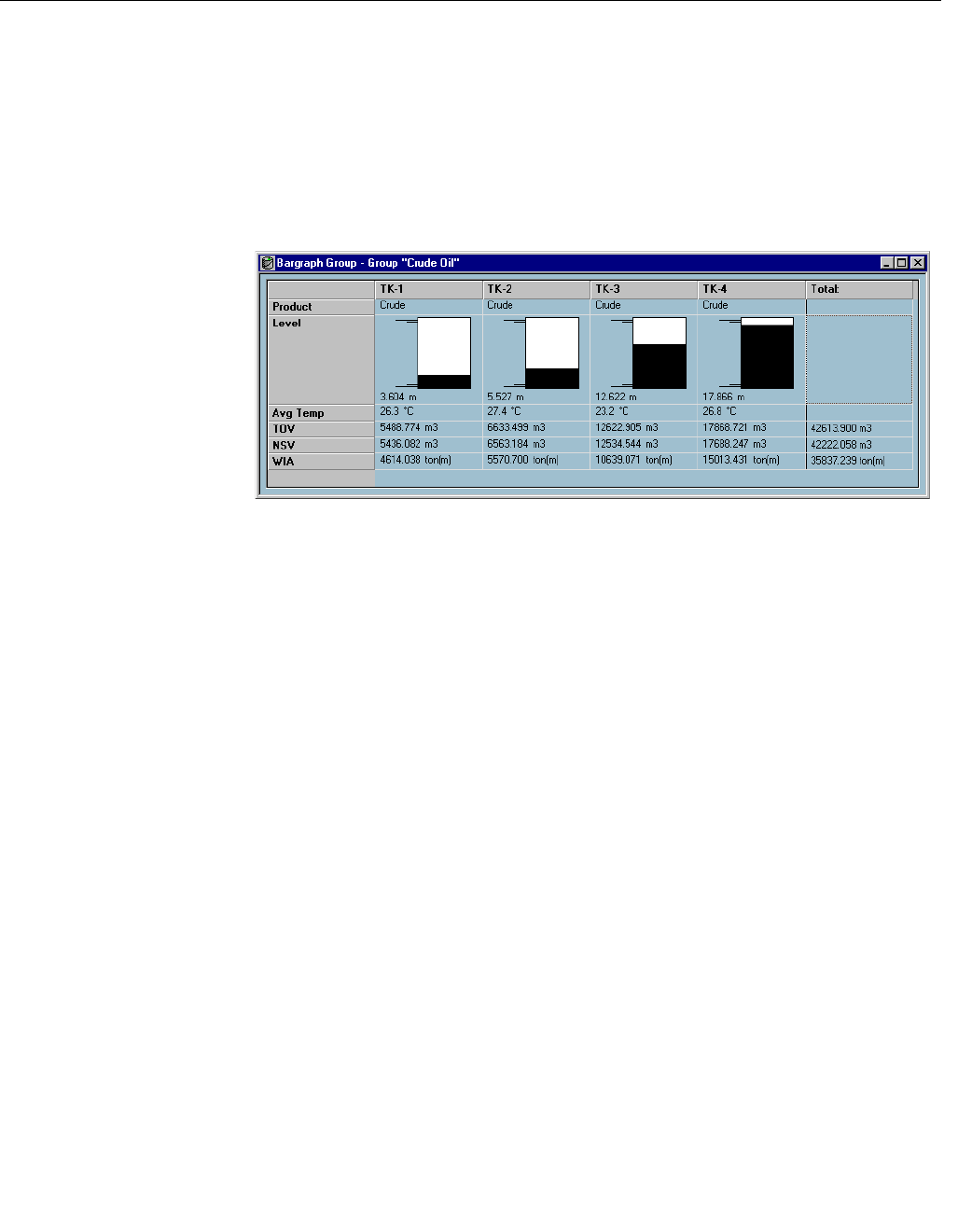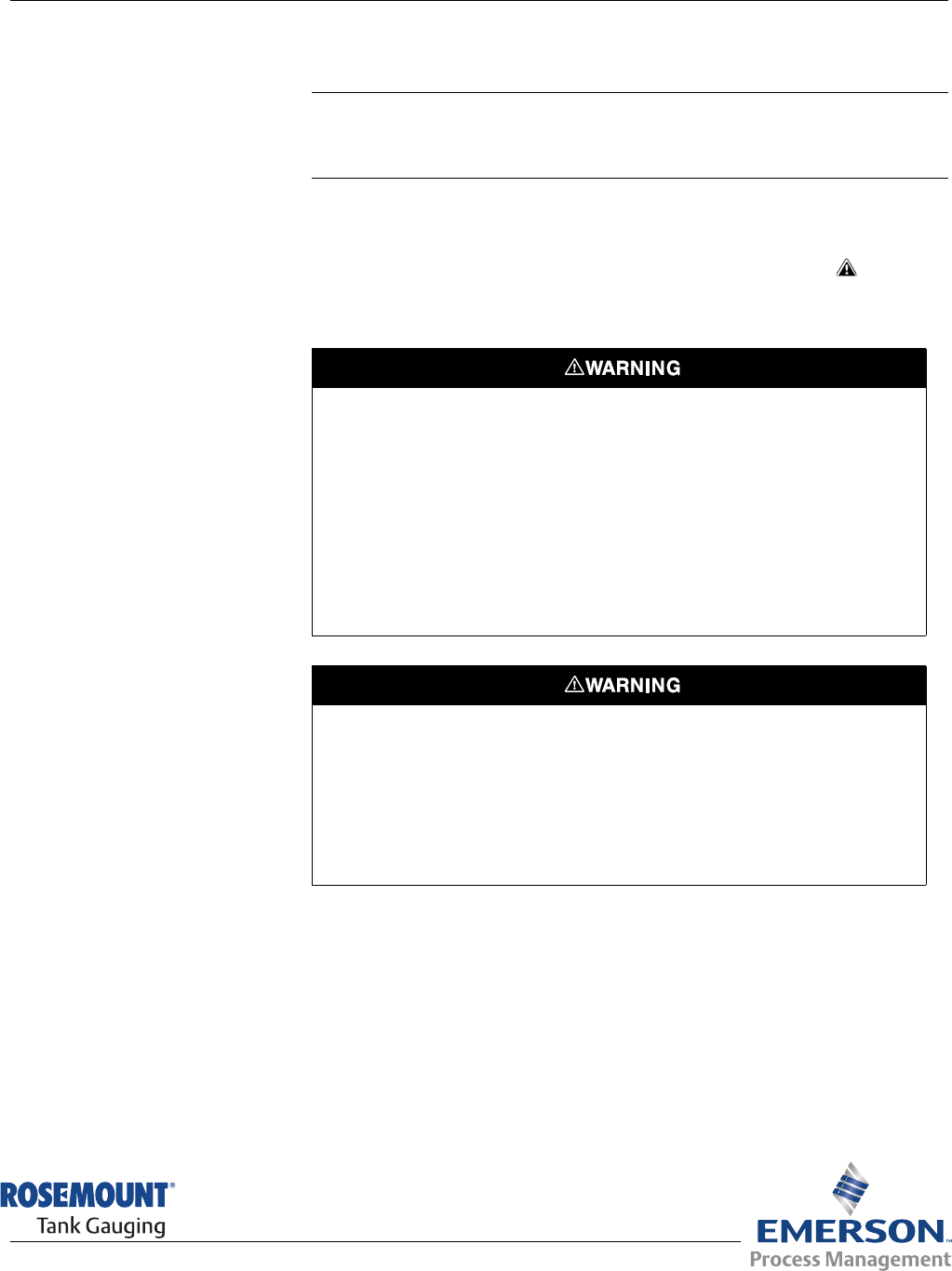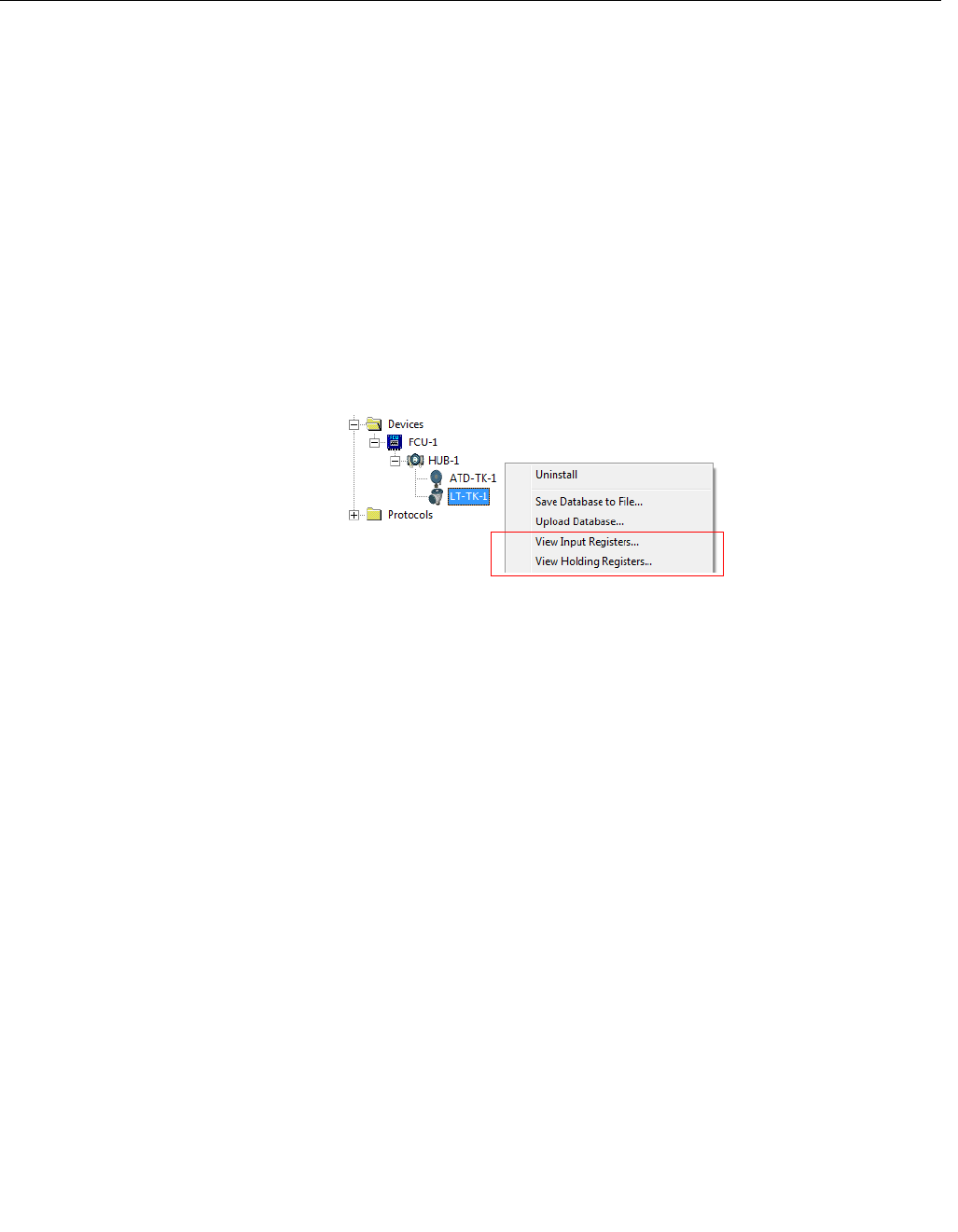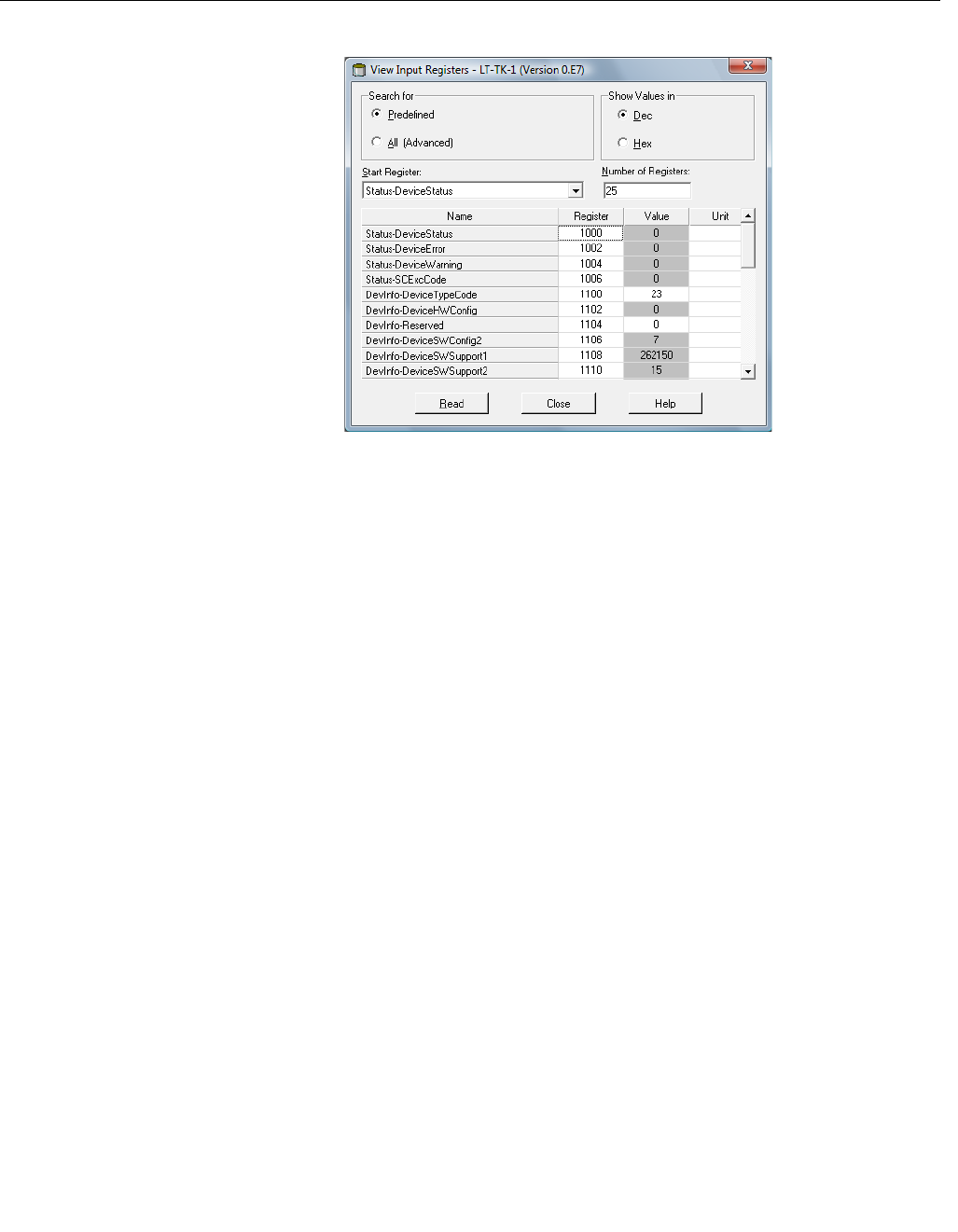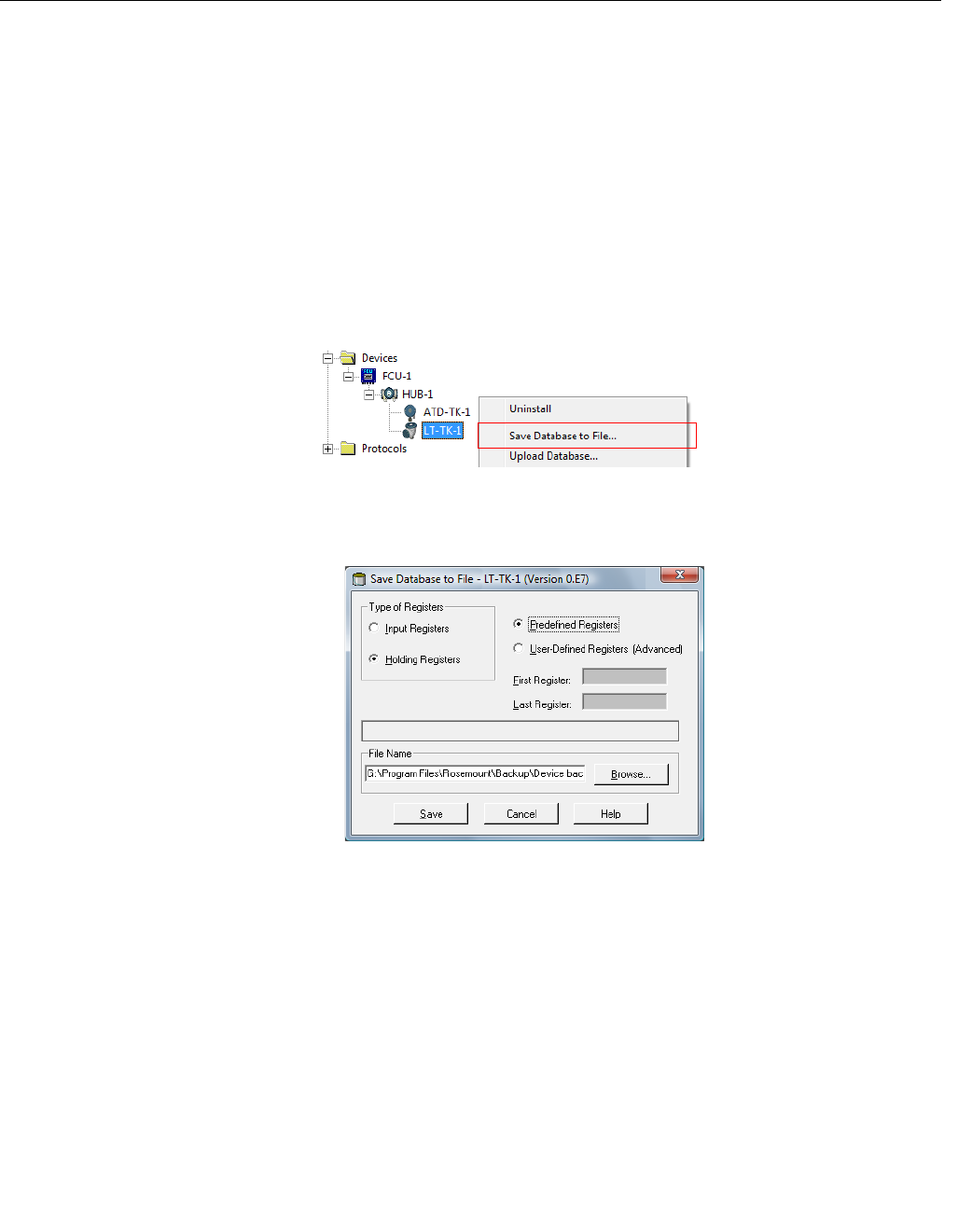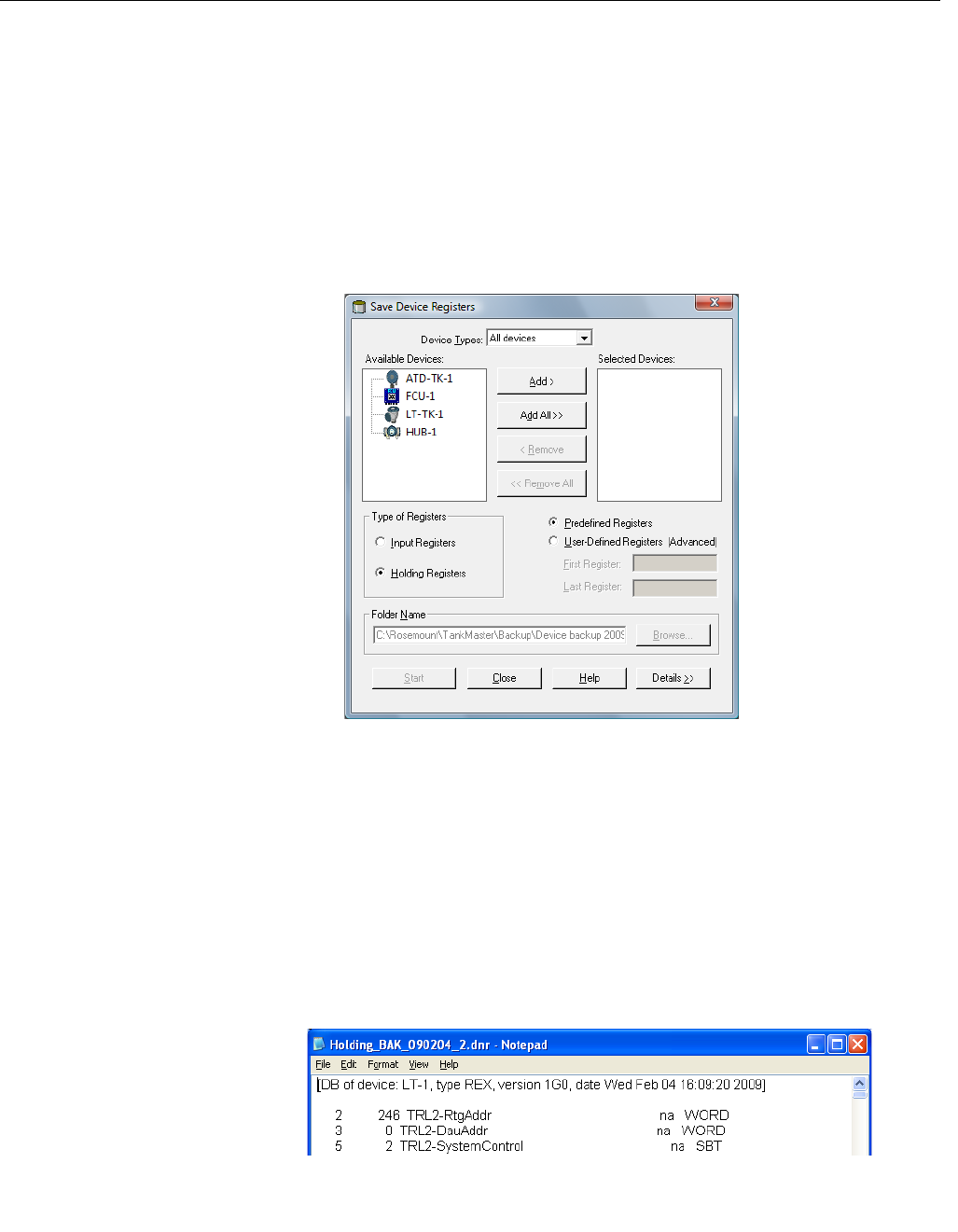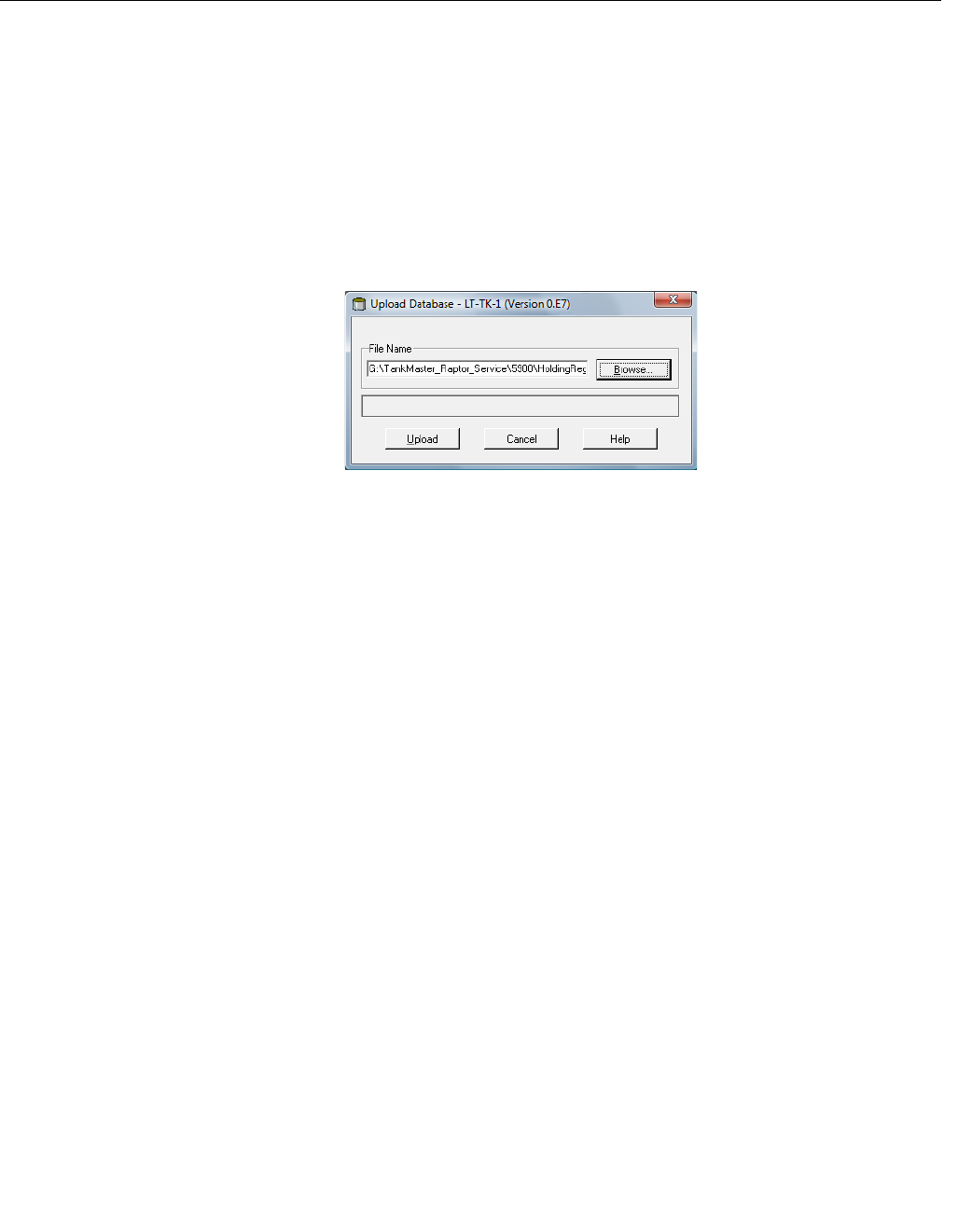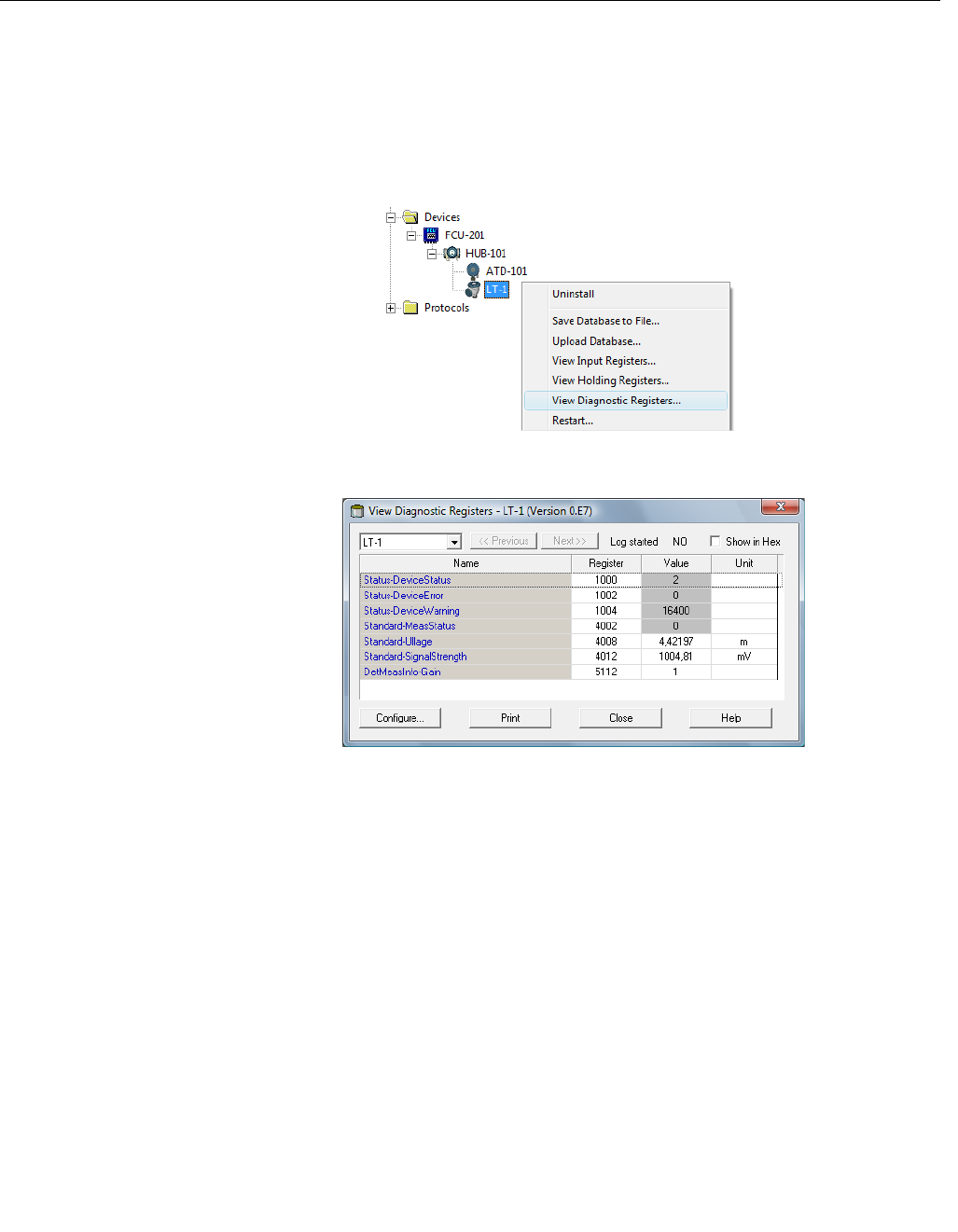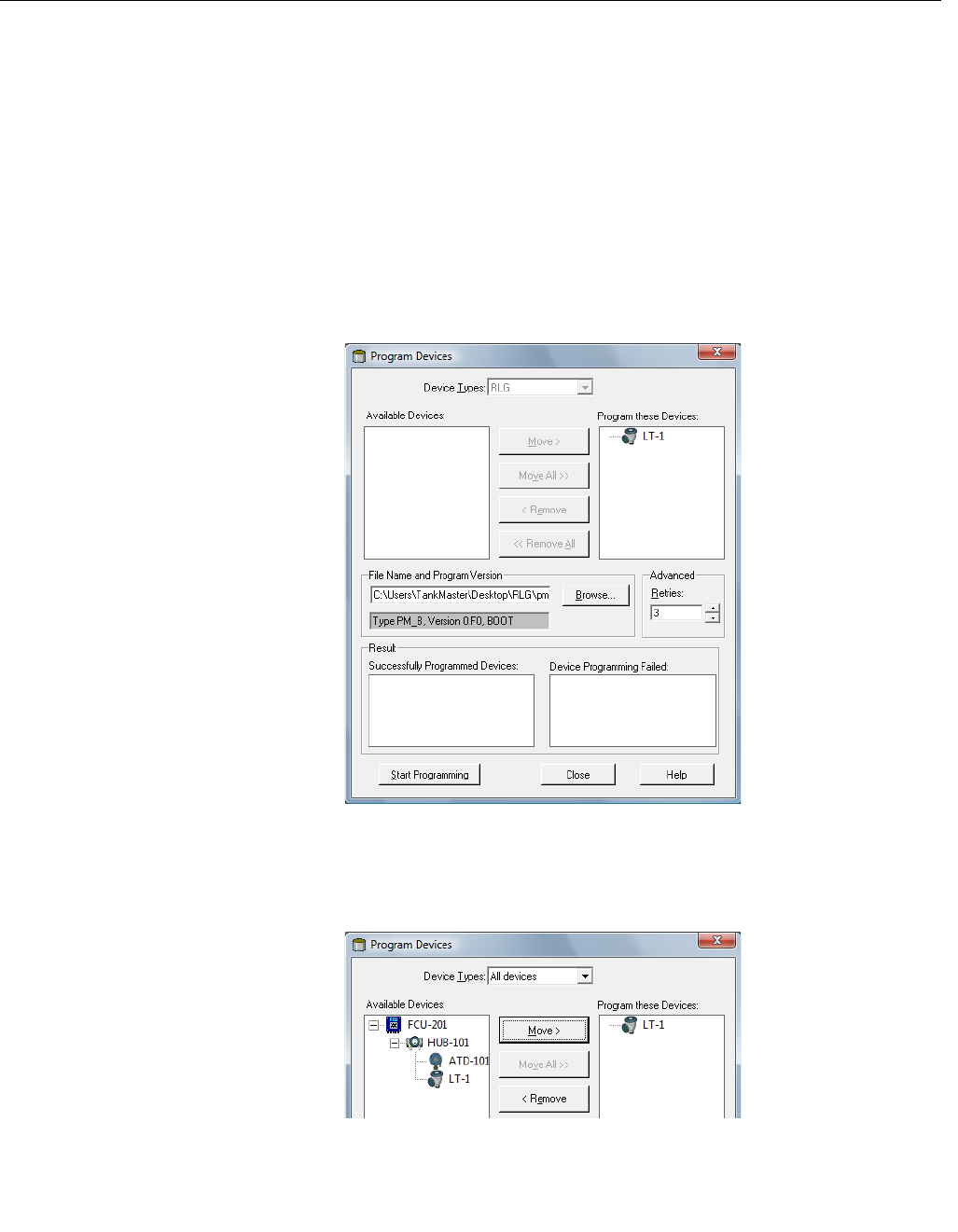-
Contents
-
Table of Contents
-
Troubleshooting
-
Bookmarks
Quick Links
Reference Manual
00809-0100-5900, Rev EA
September 2019
™
Rosemount
5900S
Radar Level Gauge
Related Manuals for Emerson Rosemount 5900S
Summary of Contents for Emerson Rosemount 5900S
-
Page 1
Reference Manual 00809-0100-5900, Rev EA September 2019 ™ Rosemount 5900S Radar Level Gauge… -
Page 2
Specific ETSI Requirements (Europe) The Rosemount 5900S is required to be installed at a permanent fixed position at a closed (not open) metallic tank or reinforced concrete tank, or similar enclosure structure made of comparable attenuating material. Flanges and attachments of the Rosemount 5900S equipment shall provide the necessary microwave sealing by design. -
Page 3: Table Of Contents
4.9 Device capabilities……………………137 4.10 General block information………………….138 4.11 Analog Input block……………………140 4.12 Analog Output block……………………147 4.13 Resource block……………………… 149 4.14 475 Field Communicator Menu Tree……………….154 4.15 Configuration using AMS Device Manager……………… 155 Rosemount 5900S Radar Level Gauge…
-
Page 4
A.4 Electric……………………….226 A.5 Mechanical………………………226 A.6 Environment……………………..228 A.7 Rosemount 5900S SIL 2 version (SIS option code S)…………..229 A.8 Rosemount 5900S SIL 3 version (SIS option code 3)…………..229 A.9 Rosemount 5900S with parabolic antenna………………. 230 A.10 Rosemount 5900S with horn antenna………………231 A.11 Rosemount 5900S with still-pipe array antenna…………….. -
Page 5
C.3 Analog Output block……………………277 C.4 Measurement Transducer block………………..279 C.5 Volume Transducer block………………….286 C.6 Register Transducer block………………….287 C.7 Advanced Configuration Transducer block………………. 289 C.8 LPG Transducer block ……………………293 C.9 Supported units……………………… 296 Rosemount 5900S Radar Level Gauge… -
Page 6
Contents Reference Manual September 2019 00809-0100-5900 Reference Manual… -
Page 7: Chapter 1 Introduction
Physical security is an important part of any security program and fundamental to protecting your system. Restrict physical access by unauthorized personnel to protect end users’ assets. This is true for all systems used within the facility. Rosemount 5900S Radar Level Gauge…
-
Page 8: Symbols
Introduction Reference Manual September 2019 00809-0100-5900 Symbols Table 1-1: Symbols The CE marking symbolizes the conformity of the product with the applicable European Community Directives. The EU-Type Examination Certificate is a statement of a Notified Certification Body declaring that this product meets the Essential Health and Safety Requirements of the ATEX directive The FM APPROVED Mark indicates that the equipment is approved by FM Approvals according to applicable Approval Standards and is applicable for…
-
Page 9: Manual Overview
Manual overview This manual provides installation, configuration, and maintenance information for the Rosemount 5900S Series Radar Level Gauge. The manual is based on a typical Rosemount Tank Gauging system with a Rosemount 2410 Tank Hub connected to supported devices ™…
-
Page 10: Technical Documentation
Rosemount Tank Gauging System Configuration Manual (00809-0300-5100) • Rosemount 2460 System Hub (00809-0100-2460) • Rosemount 2410 Tank Hub (00809-0100-2410) • Rosemount 5900S Radar Level Gauge (00809-0100-5900) • Rosemount 5900 Proof Test with Reference Reflector (00809-0200-5900) • Rosemount 5900C Radar Level Gauge (00809-0100-5901) •…
-
Page 11: Service Support
Introduction 00809-0100-5900 September 2019 Service support For service support contact the nearest Emerson Automation Solutions /Rosemount Tank Gauging representative. Contact information can be found on the web site www.Emerson.com. Product recycling/disposal Recycling of equipment and packaging should be taken into consideration and disposed of in accordance with local and national legislation/regulations.
-
Page 12
Introduction Reference Manual September 2019 00809-0100-5900 Reference Manual… -
Page 13: Chapter 2 Overview
The Rosemount 5900S is an integral part of the flexible Rosemount Tank Gauging system. The advanced and robust design makes it suitable for a vast range of applications. It is designed for high accuracy level measurements as well as handling complex tank shapes and obstacles in the tank that may interfere with measurement signals.
-
Page 14
Overview Reference Manual September 2019 00809-0100-5900 by a Rosemount 2460 System Hub, and is distributed to a Rosemount TankMaster PC, or another host system, whenever the system hub receives a request for data. Reference Manual… -
Page 15: Main Label
Reference Manual Overview 00809-0100-5900 September 2019 Main label Figure 2-2: Rosemount 5900S Main Label A. Model Code B. Tag number C. Serial number D. Manufacturing date E. SIL Baseline F. Device Id G. IC Id H. FCC Id I. Explosion protection J.
-
Page 16: Components
Overview Reference Manual September 2019 00809-0100-5900 Components Figure 2-3: Rosemount 5900S Components A. Terminal compartment B. Cable entries (½ — 14 NPT, M20 x 1.5 adapters) C. Flange D. Antenna E. Grounding terminal F. Weather protection hood G. Label H. Transmitter head with signal processing electronics…
-
Page 17: System Overview
The flexible Rosemount Tank Gauging system supports several combinations to achieve redundancy, from control room to the different field devices. Redundant network configuration can be achieved at all levels by doubling each unit and using multiple control room work stations. See documents IEC 61158-2 Rosemount 5900S Radar Level Gauge…
-
Page 18
Figure 2-4: Rosemount Tank Gauging System Architecture Non-hazardous area Plant Host Computer Hazardous area TRL2 Modbus Rosemount 5900S Radar Level Gauge Segment coupler Rosemount 2240S Temperature Transmitter Rosemount 644 Temperature Transmitter Rosemount 2230 Graphical Field Display Rosemount 5300 Level Transmitter… -
Page 19
D. Emerson Wireless 1420 Gateway E. Rosemount 2410 Tank Hub F. Tankbus G. Emerson Wireless 775 THUM Adapter H. Rosemount 5900S Radar Level Gauge I. Rosemount 2240S Temperature Transmitter J. Rosemount 3051S Pressure Transmitter K. Rosemount 2230 Graphical Field Display L. -
Page 20
OUNDATION Non-hazardous area Rosemount 644 Temperature Transmitter Hazardous area Fieldbus Power Supply OUNDATION Rosemount 5900S Radar Level Gauge Segment coupler Rosemount 2240S Temperature Transmitter Rosemount 5300 Level Transmitter Rosemount 5400 Level Transmitter Rosemount 2230 Graphical Field Display Custody transfer / Inventory tank gauging… -
Page 21
The Rosemount 2410 Tank Hub acts as a power supply to the connected field devices in the hazardous area using the intrinsically safe Tankbus. The tank hub collects measurement data and status information from field devices on a tank. It has two external buses for communication with various host systems. Rosemount 5900S Radar Level Gauge… -
Page 22
5900S is in actual contact with the product in the tank, and the antenna is the only part of the gauge that is exposed to the tank atmosphere. The 2-in-1 version of the Rosemount 5900S Radar Level Gauge has two radar modules in the same transmitter housing allowing two independent level measurements using one antenna and one tank opening. -
Page 23
By using a Rosemount 3051S Pressure Transmitter near the bottom of the tank as a complement to a Rosemount 5900S Radar Level Gauge, the density of the product can be calculated and presented. One or more pressure transmitters with different scalings can be used on the same tank to measure vapor and liquid pressure. -
Page 24: Antennas
2.5.1 Horn antenna The Rosemount 5900S with Horn Antenna is designed for an 8 inch antenna to be used in small size openings on fixed roofs tanks. The Rosemount 5900S is designed for measurements of a variety of oil products and chemicals.
-
Page 25
September 2019 2.5.3 Array antenna The Rosemount 5900S with Still-pipe Array Antenna is used on tanks with still pipes and with all products suited for still pipes, except Methanol, for which the other antennas are better suited. The gauge uses a low-loss radar propagation mode which virtually eliminates the influence of the still pipe condition. -
Page 26: Installation Procedure
Overview Reference Manual September 2019 00809-0100-5900 Figure 2-10: LPG/LNG Antenna Installation procedure Follow these steps for proper installation: Procedure 1. Review installation considerations. See Installation considerations. 2. Mount the gauge. See Mechanical installation. 3. Wire the gauge. See Electrical installation. 4.
-
Page 27: Chapter 3 Installation
Avoid contact with the leads and terminals. • Make sure the main power to the transmitter is off and the lines to any other external power source are disconnected or not powered while wiring the gauge. Rosemount 5900S Radar Level Gauge…
-
Page 28
Installation Reference Manual September 2019 00809-0100-5900 NOTICE The device is designed for installation in complete enclosed container to prevent unwanted RF emission. Installation must be in accordance with local regulations and may require local radio approvals. Installation in open air applications may be subject for site license approval. Installation shall be done by trained installers, in compliance with the manufacturer’s instructions. -
Page 29: Installation Considerations
3.2.1 Horn antenna requirements The Rosemount 5900S with Horn Antenna must be installed so that there are no pipes or other obstacles that could prevent the radar beam from reaching the tank bottom unobstructed. There are two flanges available; a horizontal flange for vertical installation, and an inclined flange for installation close to the tank wall.
-
Page 30
In case a vertical antenna axis installation is not possible without the tank wall penetrating the radar beam, the Rosemount 5900S has to be directed away from the wall by using the 4° flange. The inclination is necessary to ensure maximum accuracy. -
Page 31
Horizontal flange Rx0.2 (R=tank reference height) 4° flange In exceptional cases the Rosemount 5900S with Horn Antenna can be installed closer to the tank wall if required. Please contact Emerson Automation Solutions/Rosemount Tank Gauging for advice. In certain cases, when maximum accuracy is not required, the horizontal flange can be used even if the wall intrudes into the radar beam. -
Page 32
Parabolic antenna requirements Inclination The inclination of the Rosemount 5900S with Parabolic Antenna should not exceed 1.5 ° towards the center of the tank. For products with high condensation such as bitumen/ asphalt applications, the radar beam should be directed vertically without any inclination. -
Page 33
Figure 3-3: Maximum Inclination with Parabolic Antenna A. Maximum inclination 1.5° Flange requirements The Rosemount 5900S with Parabolic Antenna is mounted on the tank nozzle by using the Flange Ball. It is designed for easy adjustment of gauge inclination within the specified limits. -
Page 34
< 17° Nozzle requirements When installing the Rosemount 5900S with Parabolic Antenna on a 20 inch nozzle, the nozzle height must not exceed 600 mm (24 in.). There has to be a free passage for the radar beam within a 5° angle from the edge of the parabolic reflector to the lower end of the nozzle. -
Page 35
F. 5° minimum Free space requirements The radar beam of the Rosemount 5900S with Parabolic Antenna is 10° wide. Obstacles (construction bars, pipes larger than Ø 2″, etc.) within the radar beam are generally not accepted, as these may result in disturbing echoes. However, in most cases, a smooth tank wall or small objects will not have any significant influence on the radar beam. -
Page 36
The antenna axis should be located at least 800 mm (31 in.) from the tank wall for best performance. For evaluation contact Emerson Automation Solutions/ Rosemount Tank Gauging. Figure 3-7: Free Space Requirements for the Rosemount 5900S with Parabolic Antenna 5°… -
Page 37
Still-pipe requirements The Rosemount 5900S Still-pipe Array Antenna fits 5, 6, 8, 10 and 12 inch flanges and pipes. The adaptation is accomplished by selecting a suitable Still-pipe Array Antenna. The still-pipe must be vertical within 0.5°… -
Page 38
September 2019 00809-0100-5900 Flange requirements The Rosemount 5900S with Still-pipe Array Antenna fits flanges of size 5, 6, 8, 10 and 12 inch. The gauge has a flange for sealing the tank. The tank flange must be horizontal within ±2°. -
Page 39
Installation 00809-0100-5900 September 2019 Free space The following free space is recommended for mounting the Rosemount 5900S with Still- pipe Array Antenna: Figure 3-9: Free Space Requirements for Rosemount 5900S with Array Antenna Fix Version Table 3-5: Free Space Requirements… -
Page 40
Installation Reference Manual September 2019 00809-0100-5900 Figure 3-10: Free Space Requirements for Rosemount 5900S with Array Antenna Hatch Version Table 3-6: Free Space Position Free Space Table 3-7 Recommended space 500 mm (20 in.) for installation and service Minimum 800 mm (31 in.) for highest accuracy Minimum 500 mm (20 in.) with reduced accuracy… -
Page 41
The Verification Pin allows you to verify Rosemount 5900S level measurements when the tank is pressurized. It is mounted on the still-pipe in a hole oriented 90 degrees to the other holes. -
Page 42
Installation Reference Manual September 2019 00809-0100-5900 Figure 3-11: Installation of Verification Pin and Inclination Requirements for Flange and Still-pipe 1000 < L < 2500 mm (39 < L < 98 in.). G. The Verification Pin is directed towards the bolt hole at the pipe flange marking. Recommended: 1200 mm (47 in.) Min. -
Page 43
For pipe dimensions 4 inch SCH 40 and DN 100, an extra ring is needed for the Deflection Plate as illustrated in Figure 3-13 Figure 3-14. LPG configuration and the Rosemount Tank Gauging System Configuration Manual further information on how to configure the Rosemount 5900S for LPG/LNG measurements. Rosemount 5900S Radar Level Gauge… -
Page 44
Installation Reference Manual September 2019 00809-0100-5900 Figure 3-13: Mounting the Deflection Plate on Pipe 4 inch SCH 40 A. Ring is marked 4” SCH40 Figure 3-14: Mounting the Deflection Plate on Pipe DN 100 A. Ring is marked DN100 Reference Manual… -
Page 45
00809-0100-5900 September 2019 Free space The following free space is recommended for mounting the Rosemount 5900S with LPG/LNG Antenna: Figure 3-15: Free Space Requirements for Rosemount 5900S with LPG/LNG antenna A. Recommended space 550 mm (22 in.) for installation and service B. -
Page 46
September 2019 00809-0100-5900 Extension pipe for minimum distance The Rosemount 5900S Radar Level Gauge should be placed such that there is a minimum gap of 1200 mm (47 in.) between the flange and the maximum product level (see Still- pipe and Verification Pin). -
Page 47: Mechanical Installation
00809-0100-5900 September 2019 Mechanical installation 3.3.1 Mounting the Horn antenna This section describes how to install the Rosemount 5900S withwith Horn Antenna. Follow this instruction to install the Horn antenna and transmitter head assembly on a tank. Prerequisites • Check that all parts and tools are available before carrying them up to the tank roof.
-
Page 48
Installation Reference Manual September 2019 00809-0100-5900 3. Put the adapter on the flange. The groove on the adapter should be directed approximately 90° to the line of sight from the nozzle to the center of the tank. A. Four M10 screws and washers B. -
Page 49
12. In case the Weather Protection Hood was removed, put it back on top of the head and tighten the screw. A. Weather Protection Hood 13. Wire the gauge and configure by using the Rosemount TankMaster WinSetup software (see the Rosemount Tank Gauging System Configuration Manual). Rosemount 5900S Radar Level Gauge… -
Page 50
Installation Reference Manual September 2019 00809-0100-5900 3.3.2 Parabolic antenna Mounting the clamped Flange Ball Follow this instruction when installing the clamped Flange Ball on a flange. Prerequisites 1. Use a flange of thickness 6 — 30 mm. 2. Make sure that the diameter of the hole is 96 mm. Make a small recess at one side of the flange hole. -
Page 51
A. 116±2 mm B. 6-38 mm In case the flange requirements in chapter Parabolic antenna requirements are not met, the hole needs to be machined to an oval shape prepared for inclined welding of the Flange Ball. Rosemount 5900S Radar Level Gauge… -
Page 52
Installation Reference Manual September 2019 00809-0100-5900 Procedure 1. Let the protection plates remain on the Flange Ball until welding is finished. These plates protect the surface of the Flange Ball from welding sparks. A. Protection plate B. Flange Ball 2. Make sure that the Flange Ball is mounted in such a way that the grove is directed upwards when the flange is mounted on the tank nozzle. -
Page 53
4. Remove the protection plates when the Flange Ball is welded to the flange. A. Protection plate Mounting the parabolic antenna This section describes how to install the Rosemount 5900S with Parabolic antenna. Follow this instruction to install the Parabolic antenna and transmitter head assembly on a tank. -
Page 54
Installation Reference Manual September 2019 00809-0100-5900 Procedure 1. Fit the Parabolic Reflector onto the Antenna Feeder and tighten the five M5 screws. A. M5x5 B. Parabolic Reflector C. Antenna Feeder 2. Tighten the screws. Reference Manual… -
Page 55
Reference Manual Installation 00809-0100-5900 September 2019 3. Put the two O-rings in the grooves on the upper surface of the Flange Ball. A. 2 O-rings B. Grooves C. Flange Ball D. Flange Rosemount 5900S Radar Level Gauge… -
Page 56
Installation Reference Manual September 2019 00809-0100-5900 4. Turn the flange around and insert the Antenna Waveguide into the flange hole. A. Nut B. Tab Washer C. Antenna label plate D. Finger Nut E. Washer Ball F. Stop Washer G. Flange H. -
Page 57
6. Tighten the finger nut and the upper nut by hand. A. Finger Nut B. Upper Nut 7. Place the antenna and flange assembly on the tank nozzle and tighten the flange screws. A. Antenna Waveguide B. Flange C. Antenna D. Nozzle Rosemount 5900S Radar Level Gauge… -
Page 58
Installation Reference Manual September 2019 00809-0100-5900 8. Put the level gauge on the Antenna Waveguide. Ensure that the guide pin inside the transmitter head fits into the groove on the Antenna Waveguide. A. Nut B. Antenna Waveguide C. Finger Nut 9. -
Page 59
A. Tank B. Tank center C. Line of sight 12. Ensure that the gauge is directed at an angle of 45° to the line of sight from the center of the tank to the wall. Rosemount 5900S Radar Level Gauge… -
Page 60
Installation Reference Manual September 2019 00809-0100-5900 13. Use the marks on the Washer Ball to adjust the gauge so the antenna is inclined roughly 1.5° towards the center of the tank. Note For products with high condensation, such as bitumen, the gauge should be mounted with 0°… -
Page 61
Ensure that the level is put on a flat and steady surface on top of the transmitter head. If needed, loosen the finger nut and adjust the gauge. Note Make sure the air bubble touches, but doesn’t overlap the 1.5° mark. A. Finger Nut 16. Tighten the finger nut firmly. Rosemount 5900S Radar Level Gauge… -
Page 62
Installation Reference Manual September 2019 00809-0100-5900 17. In case the Weather Protection Hood was removed, put it back on top of the transmitter head and tighten the screw. A. Weather Protection Hood B. Finger Nut 18. Tighten the upper nut to lock the finger nut (you may temporarily remove the transmitter head to make room for tools if needed), and secure by folding the tab washer over the nut. -
Page 63
Measure the pipe inner diameter before closing the still-pipe. Enter this value during the configuration. Follow this instruction when installing the Rosemount 5900S with Array Antenna Fixed version. Procedure 1. Insert the Antenna Waveguide into the flange hole, and place the antenna label into position, with text down. -
Page 64
Installation Reference Manual September 2019 00809-0100-5900 5. Put the antenna and flange assembly on the tank nozzle and tighten the flange screws. A. Gasket Reference Manual… -
Page 65
7. In case the Weather Protection Hood was removed, put it back on top of the transmitter head and tighten the screw. 8. Wire the gauge and configure by using the Rosemount TankMaster WinSetup software, (see the Rosemount Tank Gauging System Configuration Manual). Rosemount 5900S Radar Level Gauge… -
Page 66
Still Pipe antenna requirements for information on mounting considerations before installing the gauge on the tank. Follow this instruction when installing the Rosemount 5900S with Array Antenna Hinged Hatch version. Procedure 1. Mount the hatch on the nozzle. The hatch has a welded flange with a hole pattern that fits the nozzle flange. -
Page 67
3. Mount the antenna on the lid. Ensure that the guide pin inside the lid fits the groove on the Antenna Waveguide. A. Antenna B. Antenna Waveguide C. Groove 4. Tighten the nut which holds the antenna to the lid. A. Nut Rosemount 5900S Radar Level Gauge… -
Page 68
Installation Reference Manual September 2019 00809-0100-5900 5. Check that the O-ring is properly seated all around the cover and is pressed down behind the Hand Dip Plate. A. O-ring B. Hand Dip Plate 6. Close the lid and tighten the locking screw. A. -
Page 69
A. Weather Protection Hood B. Spacer C. Nut D. Antenna Waveguide E. Groove 8. In case the Weather Protection Hood was removed, put it back on top of the transmitter head and tighten the screw. Rosemount 5900S Radar Level Gauge… -
Page 70
Installation Reference Manual September 2019 00809-0100-5900 9. Wire the gauge and configure by using the Rosemount TankMaster WinSetup software (see the Rosemount Tank Gauging System Configuration Manual). Reference Manual… -
Page 71
1. Install the still-pipe according to mechanical installation drawing 9240041-910. 2. Check that the cone antenna fits into the still-pipe. The gap between the cone antenna and the pipe must not exceed 2 mm. A. Maximum 2 mm Rosemount 5900S Radar Level Gauge… -
Page 72
Installation Reference Manual September 2019 00809-0100-5900 3. Mount the antenna on the closing using four M6 Allen head screws. Be careful when handling the closing and antenna assembly. It is important that the antenna is undamaged without dents. Let the protection cap remain on the waveguide until the antenna is installed. A. -
Page 73
For a safe installation on a pressurized tank it is important that the gauge is installed in accordance with the appropriate local, national, and international standards, codes, and practices. 8. Remove the protection cap from the waveguide. A. Protection cap Rosemount 5900S Radar Level Gauge… -
Page 74
13. Connect the pipe at the pressure transmitter input to the entry on the flange and tighten the nut. 14. Put the Rosemount 5900S radar gauge on the adapter. Ensure that the guide pin inside the waveguide of the radar gauge fits the groove on the adapter. The direction of the Verification Pin is indicated by marks on the still-pipe flange and the closing. -
Page 75
The adapter has two grooves. Use the one that allows the transmitter head to be aligned with the Verification Pin as illustrated in Step A. Pressure transmitter B. Bracket for pressure transmitter C. Still-pipe D. Nut E. Adapter F. Verification Pin Rosemount 5900S Radar Level Gauge… -
Page 76
Installation Reference Manual September 2019 00809-0100-5900 16. Verify that the level gauge head is properly aligned. The cover on the terminal compartment shall be parallel to the Verification Pin. The notch on the still-pipe flange indicates the direction of the Verification Pin. A. -
Page 77: Electrical Installation
The internal ground screws are identified by a ground symbol: Note Grounding the transmitter via threaded conduit connection may not provide sufficient ground. Rosemount 5900S Radar Level Gauge…
-
Page 78
3.4.3 Cable selection for the Tankbus Use shielded twisted pair wiring for the Rosemount 5900S Series in order to comply with FISCO requirements and EMC regulations. The preferred cable is referred to as type “A” fieldbus cable. The cables must be suitable for the supply voltage and approved for use in hazardous areas, where applicable. -
Page 79
3.4.6 Power budget The Rosemount 5900S power consumption is 50 mA for standard devices, and 100 mA for the Rosemount 5900S 2-in-1 versions. This has to be considered when connecting field devices to the Tankbus. See section “Power Budget” in the Rosemount 2410 Tank Hub Reference Manual for more information. -
Page 80
Installation Reference Manual September 2019 00809-0100-5900 Segment design When designing a FISCO fieldbus segment a few requirements need to be considered. Cabling has to comply with FISCO requirements as described in Cable selection for the Tankbus. You will also have to ensure that the total operating current of the connected field devices is within the output capability of the Rosemount 2410 Tank Hub. -
Page 81
C. Rosemount 2230 Display D. Tankbus E. IS Analog Input (Secondary bus) F. Rosemount 5900S Radar Level Gauge G. Rosemount 2240S Multi-input Temperature Transmitter H. Built-in terminator enabled on the last device I. Rosemount 3051S Pressure Transmitter The maximum distance between the tank hub and the field devices on the tank depends on the number of devices connected to the Tankbus and the quality of cables. -
Page 82
Power requirements Power budget for further information. Ensure that: • the Rosemount 5900S and other devices connected to the F Fieldbus (FF) OUNDATION system are compliant with the FISCO or Entity parameters of the power supply. • the short circuit protection of the Segment Coupler matches the current consumption of the connected devices. -
Page 83
H. Rosemount 644 Temperature Transmitter I. Rosemount 5900S Radar Level Gauge 3.4.10 Wiring To connect the Rosemount 5900S level gauge: Procedure Ensure that the power supply is switched off. 2. Remove the cover on the terminal compartment. 3. Run the wires through the appropriate cable gland/conduits. Install cables with a drip loop in such a way that the lower part of the loop is under the cable/conduit entry. -
Page 84
E. External Ground screw F. Cover Conductor recommendations Ensure that you use cables suitable for the terminal block of the Rosemount 5900S. The terminal block is designed for cables that meet the specifications as illustrated below. Figure 3-24: Conductor and Insulation Requirements A. -
Page 85
Figure 3-25: Push the Conductor Into the Terminal Block A. Terminal block B. Release buttons C. Conductor To disconnect, push the release button and remove the conductor. Rosemount 5900S Radar Level Gauge… -
Page 86
Figure 3-26: Push the Button to Release the Conductor from the Terminal Block A. Terminal block B. Release buttons C. Conductor 3.4.11 Terminal blocks Figure 3-27: Rosemount 5900S Terminal Compartment A. Test terminals B. Ground terminals, internal C. Field bus Reference Manual… -
Page 87
The X1 terminal is connected to the intrinsically safe Tankbus. A jumper on the X2 terminal enables the built-in termination. The termination should be used if the Rosemount 5900S gauge is installed at the end of a Tankbus network. See Tankbus for more information on how to terminate the Tankbus. -
Page 88
When using two separate tankbuses, connect X1 to Tankbus 1 and X4 to Tankbus 2. Connect to X1 when using a single tankbus, and jumpers between X3 and X4. Table 3-11: Terminal Block Connections for the Rosemount 5900S with Two Tankbuses… -
Page 89
Test terminals Test terminals for temporary connection of a field communicator Gauge terminal block SIL safety system The Rosemount 5900S has a SIL3 alarm output which is connected to the Rosemount 2410 Tank Hub. Figure 3-29: Terminal Compartment Test terminals… -
Page 90
3.4.12 Wiring diagrams The standard version of the Rosemount 5900S has a single intrinsically safe fieldbus input. You may activate a built-in fieldbus termination by short-circuiting the X2 connector. An intrinsically safe output on connector X4 can be used for “daisy-chain” connection to other devices in a Rosemount Tank Gauging system. -
Page 91
The Rosemount 5900S 2-in-1 version The 2-in-1 version of the Rosemount 5900S has two separate level gauges in the same housing. One of the tankbuses can be terminated in the Rosemount 5900S terminal compartment. -
Page 92
00809-0100-5900 Temperature Transmitter. Note that the Primary Tankbus is terminated in the Rosemount 5900S terminal block (X2). Figure 3-31: Rosemount 5900S Wiring Diagram for 2-in-1 Version with two Tankbuses A. Rosemount TankMaster PC B. Rosemount 2410 Tank Hub C. Field Communicator D. -
Page 93
Reference Manual Installation 00809-0100-5900 September 2019 Figure 3-32: Rosemount 5900S Wiring Diagram for 2-in-1 Version with a Single Tankbus A. Rosemount TankMaster PC B. Rosemount 2410 Tank Hub C. Field Communicator D. Tankbus E. Power supply F. Termination G. Rosemount 2240S Multi-input Temperature Transmitter H. -
Page 94
Installation Reference Manual September 2019 00809-0100-5900 Figure 3-33: Wiring diagram for Rosemount 5900S 2-in-1 Version with Two Tankbuses A. TankMaster PC B. Rosemount 2410 Tank Hub C. Field Communicator D. Primary Tankbus in (gauge 1) E. Power supply F. Termination G. -
Page 95: Chapter 4 Configuration
Before connecting a handheld communicator in an explosive atmosphere, ensure that the instruments in the loop are installed in accordance with intrinsically safe or non- incendive field wiring practices. • Do not remove the gauge cover in explosive atmospheres when the circuit is alive. Rosemount 5900S Radar Level Gauge…
-
Page 96: Overview
3. Configure the Rosemount 5900S level gauge via the Properties window. If a Rosemount 5900S level gauge is added to an existing system, the tank hub’s database must be updated before the level gauge is configured. The tank database maps the level gauge to the tank on which it is installed.
-
Page 97
Rosemount 5900S in F Fieldbus systems. OUNDATION The Rosemount 5900S supports basic configuration which is sufficient in most cases. There are a number of advanced configuration options available as well, which may be used for special applications when further fine-tuning is needed. -
Page 98
Configuration Reference Manual September 2019 00809-0100-5900 4.2.3 Configuration tools Different tools are available for configuration of a Rosemount 5900S level gauge: • Rosemount TankMaster Winsetup • Field Communicator ™ • AMS Device Manager for F Fieldbus systems OUNDATION • Fieldbus hosts supporting DD4… -
Page 99: Configuration Using Rosemount Tankmaster
The Rosemount TankMaster WinSetup installation wizard is a tool that facilitates installation and configuration of Rosemount 5900S and other devices. This may be useful in case the Rosemount 5900S was not installed as part of the installation procedure for the Rosemount 2410.
-
Page 100: Basic Configuration
Configuration Reference Manual September 2019 00809-0100-5900 Basic configuration 4.4.1 Tank geometry The following parameters are used for tank geometry configuration of a Rosemount 5900S Radar Level Gauge: Reference Manual…
-
Page 101
Reference Manual Configuration 00809-0100-5900 September 2019 Figure 4-1: Tank Geometry Parameters for the Rosemount 5900S A. Tank Reference Point B. Tank Ullage C. Minimum Level Offset (C) D. Ullage E. Level F. Zero Level (Dipping Datum Point) G. Gauge Reference Distance (G) H. -
Page 102
Defines how close to the Gauge Reference Point levels can be measured The Rosemount 5900S with Array Antenna and hinged hatch allows you to hand dip by opening the lid and moving the gauge away from the tank opening. A hand dip plate is located inside the hatch. -
Page 103
A. Tank Reference Point B. Tank Ullage C. Minimum Level Offset (C) D. Tank Reference Height (R E. Hand dip plate / Tank Reference Point F. Zero Level (Dipping Datum Point) G. Measuring range H. Hold Off Distance Rosemount 5900S Radar Level Gauge… -
Page 104
Figure 4-3. For the hinged hatch version of the Rosemount 5900S with Array Antenna, the Tank Reference Point and the Gauge Reference Point are located at the same position i.e. at the hand-dip plate on the Still Pipe Gauge Stand as illustrated in Figure 4-2. -
Page 105
Pipe diameter When a Rosemount 5900S Radar Level Gauge is installed in a still-pipe, the inner diameter of the pipe must be specified. The Pipe Diameter is used to compensate for the lower microwave propagation speed inside the pipe. An incorrect value results in a scale factor error. -
Page 106
The Empty Tank Handling function handles situations when the surface echo is close to the tank bottom. It has the ability to: • track weak product echoes • handle lost echoes If the surface echo is lost this function makes the Rosemount 5900S present a zero-level measurement. Reference Manual… -
Page 107
To open the Empty Tank Handling window: Procedure 1. In the TankMaster WinSetup workspace, click the right mouse button on the icon that represents the desired Rosemount 5900S Radar Level Gauge. 2. From the popup menu choose the Properties option. The RLG Properties window appears. -
Page 108
Configuration Reference Manual September 2019 00809-0100-5900 You can find out if such an echo exists by using the Tank Scan function when the tank is empty. Ensure that the scan extends below the tank bottom. The tank spectrum can be used to find suitable values for parameters such as the Extra Echo Min Distance, Extra Echo Max Distance and Extra Echo Min Amplitude. -
Page 109
The Empty Tank Detection Area defines a range within a lower limit of 200 mm (8 in.) above the tank bottom. If the surface echo is lost in this region, the tank is considered empty (the device enters Empty Tank State) and the level gauge presents a zero level reading. Rosemount 5900S Radar Level Gauge… -
Page 110
Configuration Reference Manual September 2019 00809-0100-5900 If the tank is empty the level gauge searches for the product surface in a region 2 x Empty Tank Detection Area. It is important that there are no disturbances in this area, since when a new echo is found it is considered to be the product surface. -
Page 111: Advanced Configuration
Optimize the level gauge for measurement conditions where the product level changes quickly due to filling and emptying of the tank. The Rosemount 5900S is able to track level changes of up to 1.5 inch/s (40 mm/s). The Rapid Level Changes function allows the Rosemount 5900S to track level changes of up to 8 inch/s (200 mm/s).
-
Page 112
To open the Surface Echo Tracking window: Procedure 1. In the TankMaster WinSetup workspace, click the right mouse button on the desired Rosemount 5900S icon. 2. Choose the Properties option from the popup menu. 3. In the RLG Properties window, select the Advanced Configuration tab. -
Page 113
When this function is disabled, the gauge searches through the whole tank. Search Speed The Search Speed parameter indicates how quickly the search region (Slow Search window) is expanded when the Slow Search function is active. Rosemount 5900S Radar Level Gauge… -
Page 114
Procedure 1. In the TankMaster WinSetup workspace, click the right mouse button on the desired Rosemount 5900S Radar Level Gauge icon. 2. Choose the Properties option from the popup menu. 3. In the RLG Properties window, select the Advanced Configuration tab. -
Page 115
The Adaptive Filter automatically adapts to the movement of the surface level. It tracks product level fluctuations and continuously adjusts the filter grade accordingly. The filter can preferably be used in tanks in which fast tracking of level changes are important and turbulence occasionally cause unstable level readings. Rosemount 5900S Radar Level Gauge… -
Page 116: Lpg Configuration
Check that the gauge communicates with the TankMaster PC. 2. Install the Rosemount 5900S gauge on the still-pipe. Measure the exact distance to the Verification Pin. 3. Configure the Rosemount 5900S according to the standard procedure for a…
-
Page 117
™ 4.6.2 LPG setup using Rosemount TankMaster This section describes how to configure the Rosemount 5900S for LPG measurements by using the Rosemount TankMaster configuration tool. Prerequisites In the following description it is assumed that the Rosemount 5900S with LPG/LNG… -
Page 118
Configuration Reference Manual September 2019 00809-0100-5900 Figure 4-11: Advanced Parameter Source Configuration Tab A. Tank parameter Vapor Pressure B. Source device and source parameter Note Pressure measurement is not required for correction method One or more known gases, known mixratio (see Choose correction method). -
Page 119
Note Ensure that temperature element positions are properly configured. This is normally done in the basic configuration of the Rosemount 5900S level gauge and is required for proper calculation of Vapor Temperature and Average Liquid Temperature. Rosemount 5900S Radar Level Gauge… -
Page 120
Configuration Reference Manual September 2019 00809-0100-5900 Air Correction Only Prior to calibrating and configuring the Verification Pin you will need to set the appropriate LPG correction method. Procedure 1. In the Rosemount TankMaster WinSetup work space, select the Logical View tab. 2. -
Page 121
Then the calibration ring is the only object that will be detected by the gauge. The product level presented by the Rosemount 5900S will be equal to the position of the calibration ring measured from the Zero Level near the bottom of the tank. -
Page 122
Configuration Reference Manual September 2019 00809-0100-5900 3. Enter the desired Calibration Distance. Note It is important that the Inner Diameter of the still-pipe is properly configured. Open the Antenna tab in case you would like to verify the configuration. See LPG/LNG antenna requirements for more information. -
Page 123
A. Verification Pin B. Minimum clearance 900 mm Since hand dipping can not be performed in high pressurized tanks, Emerson Automation Solutions/ Rosemount Tank Gauging has developed a unique method to verify level gauging in such tanks. The method is based on measurements in a special radar wave propagation mode against a fixed Verification Pin in order to verify the measurement. -
Page 124
Configuration Reference Manual September 2019 00809-0100-5900 3. Click the right mouse button and select LPG Setup to open the LPG Setup window: 4. In the LPG Setup window, click the Config Pins button. 5. In the LPG Configure Pins window, enter the position of the Verification Pin in the Nominal Position (NOM POS) input field. -
Page 125
LPGVerify window (see Verify the gauge measurement). In case the Verification Pin does not show up, it is possible to use a smaller threshold value. Check that the product level is not above the Verification Pin. Rosemount 5900S Radar Level Gauge… -
Page 126
Configuration Reference Manual September 2019 00809-0100-5900 Verify the gauge measurement Procedure ™ 1. In the Rosemount TankMaster WinSetup work space, select the Logical View tab. 2. Select the icon that represents the desired radar level gauge. 3. Click the right mouse button and select LPG Setup to open the LPG Setup window: 4. -
Page 127
The measured position refers to the electrical distance which is the distance “seen” by the level gauge. 9. Repeat Step 4 #unique_145/unique_145_Connect_42_Step7 until the message appears, indicating that Nominal Position Successful Verification corresponds to Measured Position. Rosemount 5900S Radar Level Gauge… -
Page 128
This method may be used when there is a well known gases with known mixture of up to 4 products in the tank. mixratio Now the Rosemount 5900S level gauge is ready to measure the product level when the tank is put into operation. Reference Manual… -
Page 129: Calibration Using Winsetup
The Calibrate function is a Rosemount TankMaster WinSetup tool that lets you adjust a Rosemount 5900S level gauge in order to minimize the offset between actual (hand dipped) product levels and the values measured by the level gauge. By using the Calibrate function you can optimize measurement performance over the whole measurement range from the top to the bottom of the tank.
-
Page 130
Rosemount TankMaster WinSetup: • A list of hand dipped ullage values. • A list of level values measured by the Rosemount 5900S that correspond to the hand dipped ullage/level values. Procedure 1. In the Rosemount TankMaster WinSetup workspace window select the Rosemount 5900S level gauge to be calibrated. -
Page 131
B. Hand dip 5. Enter hand dipped level values and the corresponding levels measured by the Rosemount 5900S level gauge. It is recommended that the hand dipped levels are based on the average value of three consecutive measurements within 1 mm. For… -
Page 132
Note that all measured values are adjusted according to the calculated Calibration Distance and Correction Factor. In the Calibration Data window you can also see that the level values measured by the Rosemount 5900S gauge are adjusted. Of course, the hand dipped levels are unaltered. -
Page 133: Foundation
Reference Manual Configuration 00809-0100-5900 September 2019 ™ Fieldbus overview OUNDATION This section covers basic configuration procedures for the Rosemount 5900S Radar Level Gauge with F Fieldbus. OUNDATION For detailed information about F Fieldbus technology and function blocks used OUNDATION ™…
-
Page 134
Configuration Reference Manual September 2019 00809-0100-5900 LPG transducer block (TB1500) The LPG transducer block contains parameters for setup and configuration of the LPG calculations, and for verification and status of the corrections. Analog Input block Figure 4-13: Analog Input Block A. -
Page 135
I/O channel. For further information refer to “Analog Output block” on page 242 and “Analog Output block” on page 126. Function block summary The following function blocks are available for the Rosemount 5900S Series: • Analog Input (AI) •… -
Page 136
Configuration Reference Manual September 2019 00809-0100-5900 • Input Selector (ISEL) • Control Selector (CS) • Output Splitter (OS) Reference Manual… -
Page 137: Device Capabilities
4.9.1 Link Active Scheduler The Rosemount 5900S can be designated to act as the backup Link Active Scheduler (LAS) in the event that the LAS is disconnected from the segment. As the backup LAS, the Rosemount 5900S will take over the management of communications until the host is restored.
-
Page 138: General Block Information
Other Other types of modes are Cas, RCas, ROut, IMan and LO. Some of these types of may be supported by different function blocks in the Rosemount 5900S. modes For more information, see the Function Block manual (Document No. 00809-0100-4783).
-
Page 139
4.10.2 Block instantiation The Rosemount 5900S supports the use of function block instantiation. Then the number of blocks and block types can be defined to match specific application needs. The number of blocks that can be instantiated is only limited by the amount of memory within the device and the block types that are supported by the device. -
Page 140: Analog Input Block
CHANNEL Select the channel that corresponds to the desired sensor measurement: Table 4-5: AI Block Channels for the Rosemount 5900S AI Block Parameter TB Channel Value Process Variable…
-
Page 141
Related information Supported units 4.11.2 Factory supplied AI blocks The Rosemount 5900S is supplied with six pre-configured AI blocks according to Table 4-6. The block configuration can be changed if needed. Table 4-6: Factory Supplied AI Blocks for the Rosemount 5900S… -
Page 142
4.11.4 Application example Level value A Rosemount 5900S Radar Level Gauge measures the product level in a 15 m high tank. Table 4-7: Analog Input Function Block Configuration for a Rosemount 5900S Level Gauge Parameter… -
Page 143
To avoid alarm chattering when the variable is oscillating around the alarm limit, an alarm hysteresis in percent of the PV span can be set using the ALARM_HYS parameter. The priority of each alarm is set in the following parameters: • HI_PRI • HI_HI_PRI • LO_PRI • LO_LO_PRI Rosemount 5900S Radar Level Gauge… -
Page 144
Configuration Reference Manual September 2019 00809-0100-5900 4.11.7 Alarm priority Alarms are grouped into five levels of priority: Table 4-8: Alarm Levels of Priority Priority number Priority description The alarm condition is not used. An alarm condition with a priority of 1 is recognized by the system, but is not reported to the operator. -
Page 145
(in seconds) using the PV_FTIME parameter. Set the filter time constant to zero to disable the filter feature. Figure 4-17: Analog Input Function Block Timing Diagram A. FIELD_VAL B. PV_FTIME C. 63% of Change D. PV E. OUT (mode in auto) F. OUT (mode in man) G. Time (seconds) Rosemount 5900S Radar Level Gauge… -
Page 146
Configuration Reference Manual September 2019 00809-0100-5900 4.11.11 Signal conversion You can set the signal conversion type with the Linearization Type (L_TYPE) parameter. You can view the converted signal (in percent of XD_SCALE) through the FIELD_VAL parameter. 100 × Channel Value − EU*@0% You can choose from direct or indirect signal conversion with the L_TYPE parameter. -
Page 147: Analog Output Block
Reference Manual Configuration 00809-0100-5900 September 2019 4.12 Analog Output block The Rosemount 5900S is supplied with two pre-configured Analog Output (AO) blocks according to Table 4-10. The block configuration can be changed if needed. See Analog Output block for more information.
-
Page 148
Reference Manual September 2019 00809-0100-5900 4.12.1 Application example A Rosemount 5900S Radar Level Gauge configured for LPG measurements with temperature and pressure sensors. Figure 4-18: Function Block Configuration for Rosemount 5900S in LPG Applications AO block 1 AI block AO block 2 AI block A. -
Page 149: Resource Block
Unicode octet strings, you must set the Unicode option bit. REPORTS The Rosemount 5900S supports alert reports. The Reports option bit must be set in the features bit string to use this feature. If it is not set, the host must poll for alerts. If this bit is set, the transmitter will actively report alerts.
-
Page 150
Configuration Reference Manual September 2019 00809-0100-5900 Table 4-11: Write_Lock Parameter (continued) FEATURE_SEL FEATURE_SEL SECURITY WRITE_LOCK WRITE_LOCK Write access HARDW_LOC SOFTW_LOCK SWITCH Read/Write to blocks K bit 0 (off) 1 (on) 2 (locked) Read/Write None 1 (on) 0 (off) 0 (unlocked) 1 (unlocked) Read only 1 (on) -
Page 151
The default is 0 and the recommended values are 3 to 7. FD_OFFSPEC_ACTIVE The FD_OFFSPEC_ACTIVE parameter displays which of the conditions is detected as active. (12) Note that Out of Specification alerts are not enabled by default. Rosemount 5900S Radar Level Gauge… -
Page 152
MAINT_PRI parameter described below. It is hard coded within the device and is not user configurable. Note that maintenance alarms are not enabled by default for the Rosemount 5900S. Below is a list of the conditions: 1. Auxiliary Device Measurement Close to Limit… -
Page 153
Recommended actions for alerts The RECOMMENDED_ACTION parameter displays a text string that will give a recommended course of action to take based on which type and which specific event of the alerts is active (See Table 6-10). Rosemount 5900S Radar Level Gauge… -
Page 154: 475 Field Communicator Menu Tree
September 2019 00809-0100-5900 4.14 475 Field Communicator Menu Tree The Rosemount 5900S can be configured by using a 475 Field Communicator. The menu tree below shows the available options for configuration and service. Figure 4-19: Field Communicator Menu Tree 1 Level…
-
Page 155: Configuration Using Ams Device Manager
September 2019 4.15 Configuration using AMS Device Manager The Rosemount 5900S supports DD Methods to facilitate device configuration. The following description shows how to use the AMS Device Manager application to configure the Rosemount 5900S in a F Fieldbus system.
-
Page 156
Out Of Service mode in order to make configuration changes. By clicking the Next button, the Rosemount 5900S level gauge will automatically be set to Out Of Service (OOS) mode, and the Measurement Setup — Units window appears. -
Page 157
1. Start the Guided Setup as described in Starting the guided setup. 2. Choose measurement units for Length, Level Rate, Volume, Temperature, and Pressure. Note that parameters in the Analog Input and Analog Output blocks are not affected. Rosemount 5900S Radar Level Gauge… -
Page 158
Rosemount 5900S Radar Level Gauge. 5. Optional: For Still-pipe Array antennas the antenna size is also required. Sizes ranging from 5 to 12 inch are available. 6. Optional: Enter the Pipe Diameter if the Rosemount 5900S is installed in a Still-pipe. ™ Fieldbus parameters: OUNDATION TRANSDUCER 1100>ANTENNA_TYPE… -
Page 159
By specifying a C-distance the measuring range can be extended to the bottom of the tank. C>0: the Rosemount 5900S presents negative level values when the product surface is below the Zero Level. You can use the Show negative level values as zero check box if you wish to present product levels below the Zero Level (Datum plate) as equal to zero. -
Page 160
Configuration Reference Manual September 2019 00809-0100-5900 11. Click the Next button and proceed to the Measurement Setup — Tank Shape window: 12. Select a Tank Type option that matches the actual tank. Choose Unknown if none of the available options is applicable. 13. -
Page 161
16. Choose Product Dielectric Range from the drop-down list. Use the Unknown option if the correct value range is unknown or if the contents of the tank is changing on a regular basis. Fieldbus parameters: OUNDATION TRANSDUCER 1100>PRODUCT_DC TRANSDUCER 1100>TANK_ENVIRONMENT Rosemount 5900S Radar Level Gauge… -
Page 162
18. In the Measurement Setup window click the Cancel button and return to the Guided Setup tab. 19. When the guided setup is finished, it is recommended that the Rosemount 5900S is (13) restarted by clicking the Restart Measurement button 20. -
Page 163
1. Open the AMS Device Manager application. 2. Open Configure → Manual Setup → Volume. The Volume tab lets you configure the Rosemount 5900S for volume measurements. You can choose a calculation method based on one of the pre- defined standard tank types or the Strapping Table option. The Strapping Table can be used in case a standard tank type does not provide sufficient accuracy. -
Page 164
Reference Manual September 2019 00809-0100-5900 4.15.4 Advanced configuration Several advanced configuration options are available for the Rosemount 5900S Radar Level Gauge. These may be used to optimize measurement performance for certain applications. To find the advanced configuration options: Procedure 1. Open the AMS Device Manager application. -
Page 165
You may also create a customized amplitude threshold curve to optimize disturbing echo filtering. For more information see chapter “Service Functions/Tank Scan” in the Rosemount Tank Gauging System Configuration Manual. Rosemount 5900S Radar Level Gauge… -
Page 166
Configuration Reference Manual September 2019 00809-0100-5900 Echo threshold settings The Echo Threshold Settings window lets you create a general amplitude threshold to filter out noise. You may also create a customized amplitude threshold curve to optimize disturbing echo filtering. Figure 4-23: Echo Threshold Configuration Reference Manual… -
Page 167
This function may be useful to facilitate surface echo tracking in a tank with many disturbing objects. When using this function you should check that registered echoes correspond to actual objects in the tank. Figure 4-24: False Echo Registration Rosemount 5900S Radar Level Gauge… -
Page 168
Configuration Reference Manual September 2019 00809-0100-5900 Echo tracking The Surface Echo Tracking function can be used to eliminate problems with certain types of “ghost” echoes below the product surface. This may, for example, occur in Still-pipes as a result of multiple reflections between the pipe wall, flange and antenna. In the tank spectrum these echoes appear as amplitude peaks at various distances below the product surface. -
Page 169
If the device is not able to detect the tank bottom this function can be used to ensure that the device stays in empty tank state as long as this extra echo is present. For further details see Empty tank handling. Rosemount 5900S Radar Level Gauge… -
Page 170
Configuration Reference Manual September 2019 00809-0100-5900 Filter settings The Filter Settings window provides various functions for optimizing echo tracking depending on tank conditions and movement of the product surface. Figure 4-27: Filter Settings The Distance Filter Factor defines the amount of product level filtering (1 = 100%). A low Filter Factor makes the level value steady but the device reacts slowly to level changes in the tank. -
Page 171: Alert Setup
3. Double-click the FF network icon and expand the network node. 4. Right-click or double-click the desired gauge icon to open the list of menu options. 5. Click the right mouse button and choose the Configure option. 6. Select the Alert Setup option. Rosemount 5900S Radar Level Gauge…
-
Page 172
Configuration Reference Manual September 2019 00809-0100-5900 7. Configure alerts for the different error types. The first time this window is opened, the default setup of error types and alerts (Failure, Maintenance Required, Out of Specification, and Function Check) will appear, see Alert default settings. -
Page 173
For example, the Device major information error is configured as a Maintenance Required alert (disabled) for the Rosemount 5900S by default. The Alert Setup window allows you to enable the alert as Failure, Out of Specification, Maintenance Required, or Function Check. -
Page 174
Configuration Reference Manual September 2019 00809-0100-5900 4.16.2 Alert simulation When simulating alerts, only those alerts which are setup according to the default configuration will be seen, see Alert default settings. Figure 4-28: Alert Simulation Disabled Figure 4-29: Alert Simulation Disabled Reference Manual… -
Page 175: Lpg Setup Using Deltav / Ams Device Manager
3. In DeltaV/AMS Device Manager, open the View → Device Connection View. 4. Double-click the FF network icon and expand the network node to view the devices. 5. Right-click or double-click the Rosemount 5900S level gauge icon to open the list of menu options.
-
Page 176
Configuration Reference Manual September 2019 00809-0100-5900 7. Choose Manual Setup and select the Advanced tab. 8. Click the LPG Setup button. 9. Select the Vapor Pressure and Temperature tab. 10. Verify that Vapor Pressure and Vapor Temperature appear in the corresponding fields. -
Page 177
13. Calibrate. Check the distance to the calibration ring at the end of the still-pipe as measured by the Rosemount 5900S Radar Level Gauge. Adjust the Calibration Distance in case the measured distance is not equal to the actual distance between the Tank Reference Point and the calibration ring. -
Page 178
It is important that the Inner Diameter of the still-pipe is properly configured. Open the Antenna tab in case you would like to verify the Inner Diameter configuration. LPG/LNG antenna requirements for more information on still-pipe requirements for the Rosemount 5900S with LPG/LNG Antenna. Fieldbus parameter: OUNDATION TRANSDUCER 1100>CALIBRATION_DIST 14. -
Page 179
Enter the Measured position into the Nominal Position field and click the Send button. f) Repeat 16.a to 16.e. until the message Successful Verification appears, indicating that Nominal Position corresponds to the Measured Position. Fieldbus parameters: OUNDATION TRANSDUCER 1500>LPG_VER_PIN1_ TRANSDUCER 1500>LPG_PIN1_CONFIGURATION Rosemount 5900S Radar Level Gauge… -
Page 180
This method may be used when there is a well known gases with known mixture of up to 4 products in the tank. mixratio Now the Rosemount 5900S level gauge is ready to measure the product level when the tank is put into operation. Fieldbus parameters: OUNDATION TRANSDUCER 1500>LPG_CORRECTION_METHOD… -
Page 181
Reference Manual Configuration 00809-0100-5900 September 2019 TRANSDUCER 1500>LPG_GAS_TYPE2, TRANSDUCER 1500>LPG_GAS_PERC2 TRANSDUCER 1500>LPG_GAS_TYPE3, TRANSDUCER 1500>LPG_GAS_PERC3 TRANSDUCER 1500>LPG_GAS_TYPE4 Rosemount 5900S Radar Level Gauge… -
Page 182
Configuration Reference Manual September 2019 00809-0100-5900 Reference Manual… -
Page 183: Chapter 5 Operation
Before connecting a handheld communicator in an explosive atmosphere, ensure that the instruments in the loop are installed in accordance with intrinsically safe or non- incendive field wiring practices. • Do not remove the gauge cover in explosive atmospheres when the circuit is alive. Rosemount 5900S Radar Level Gauge…
-
Page 184: Viewing Measurement Data In Rosemount Tankmaster
Operation Reference Manual September 2019 00809-0100-5900 Viewing measurement data in Rosemount TankMaster ™ The Rosemount TankMaster program has several options for viewing measurement and inventory data for single tanks and tank groups. TankMaster also offers the option to create custom views with your own set of parameters. See the Rosemount TankMaster WinOpi Reference Manual for more information.
-
Page 185: Viewing Measurement Data In Ams Device Manager
1. Open the View → Device Connection View. 2. Double-click the FF network icon and expand the network node to view the devices. 3. Right-click or double-click the desired Rosemount 5900S gauge icon to open the list of menu options: 4.
-
Page 186
Operation Reference Manual September 2019 00809-0100-5900 Reference Manual… -
Page 187: Service And Troubleshooting
Before connecting a handheld communicator in an explosive atmosphere, ensure that the instruments in the loop are installed in accordance with intrinsically safe or non- incendive field wiring practices. • Do not remove the gauge cover in explosive atmospheres when the circuit is alive. Rosemount 5900S Radar Level Gauge…
-
Page 188: Service
This section briefly describes functions which may be useful for service and maintenance of a Rosemount 5900S Radar Level Gauge. If not otherwise stated, most examples are based on using the Rosemount TankMaster WinSetup tool to access these functions. See…
-
Page 189
For advanced users only Administrator 7. In the Show Values in pane, choose the appropriate register format Decimal or Hexadecimal. 8. Click the Read button. Now the Value column is updated with the current register values. Rosemount 5900S Radar Level Gauge… -
Page 190
6.2.2 Backing up the level gauge configuration Input and holding registers for the Rosemount 5900S Radar Level Gauge can be stored on disk. This can be useful for backup purposes and troubleshooting. You can save a predefined set of holding registers to make a backup copy of the current gauge configuration. -
Page 191
6. Click the Browse button, select a folder and type a name for the backup file. 7. Click the Start button to save the database backup. The backup file can be viewed as a text file in any word processing program: Rosemount 5900S Radar Level Gauge… -
Page 192
Service and troubleshooting Reference Manual September 2019 00809-0100-5900 6.2.3 Recover a backup configuration database using ™ TankMaster Rosemount TankMaster WinSetup lets you replace the current Holding Register database with a backup database stored on disk. This can be useful, for example, if you want to recover lost configuration data. -
Page 193
The Configure Diagnostic Registers window also has a Log Setup button for access to the Register Log Scheduling window which allows you to setup a log schedule for automatic ™ start and stop of register logging. See Logging measurement data using TankMaster more information. Rosemount 5900S Radar Level Gauge… -
Page 194
Rosemount Tank Gauging system with new firmware. Prerequisites Note The Rosemount 5900S must not be in SIL Safety mode when it is reprogrammed. Ensure that necessary safety precautions are considered. Procedure 1. Ensure that the Rosemount 5900S communicates with TankMaster without any interruptions or disturbances. -
Page 195
9. Update the TankMaster installation by adding new *.ini files for the Rosemount 5900S gauge to the TankMaster installation folder: Two *.ini files are used for the Rosemount 5900S, RLG.ini and RLG0xx.ini, where xx is the identification code of the application software. -
Page 196
00809-0100-5900 ™ 6.2.6 Write protection using TankMaster A Rosemount 5900S can be software write protected to avoid unintentional configuration changes. Software write protection locks the holding register database. Procedure 1. Start the Rosemount TankMaster WinSetup program. 2. In the TankMaster WinSetup workspace, select the Logical View tab. -
Page 197
2. Click the Write Protect Device button. 3. Enter a password. 6.2.7 Write protection switch A switch can be used to prevent unauthorized changes in the Rosemount 5900S database. ™ The switch also prevents modification of F Fieldbus parameters. OUNDATION… -
Page 198
September 2019 00809-0100-5900 Procedure 1. Check if there is any sealed screw. Contact Emerson Automation Solutions/ Rosemount Tank Gauging before breaking the seal if warranty is still valid. Completely remove the seal so that it does not damage the threads. -
Page 199
™ 6.2.8 Logging measurement data using TankMaster The Rosemount 5900S supports logging of diagnostic registers. This function is useful for verifying that the gauge works properly. The logging function can be accessed by using the Rosemount TankMaster WinSetup program. Procedure 1. -
Page 200
Service and troubleshooting Reference Manual September 2019 00809-0100-5900 3. Right-click and select Logging. 4. Select Manual or Automatic mode. Option Description Manual Manual mode lets you start logging at any time. Logging will proceed until it is stopped by clicking the Stop button. -
Page 201
Default Database. Note The device address remains unaltered when the default database is loaded. Procedure 1. In the TankMaster WinSetup workspace window, select the desired device icon. 2. Right-click and select View Holding Register. Rosemount 5900S Radar Level Gauge… -
Page 202
Service and troubleshooting Reference Manual September 2019 00809-0100-5900 3. Choose the All option and type 65510 in the Start Register input field. 4. Type the desired number of registers to be displayed in the Number of Registers field and click the Read button. 5. -
Page 203: Troubleshooting
Tank Hub and Rosemount 2460 System Hub (2160 Field Communication Unit in legacy ™ systems) are not applicable for F Fieldbus systems. OUNDATION Table 6-1: Troubleshooting Chart for the Rosemount 5900S Symptom Possible cause Action No communication with the Wiring •…
-
Page 204
Service and troubleshooting Reference Manual September 2019 00809-0100-5900 Table 6-1: Troubleshooting Chart for the Rosemount 5900S (continued) Symptom Possible cause Action Cables are too long • Check that the input voltage on the device terminals is 9 V or more Hardware failure •… -
Page 205
Reference Manual Service and troubleshooting 00809-0100-5900 September 2019 Table 6-1: Troubleshooting Chart for the Rosemount 5900S (continued) Symptom Possible cause Action Incorrect configuration of • Check the Rosemount 2410 tank database; ensure that Rosemount 2410 Tank Hub the device is available and mapped to the right tank •… -
Page 206
Service and troubleshooting Reference Manual September 2019 00809-0100-5900 Table 6-1: Troubleshooting Chart for the Rosemount 5900S (continued) Symptom Possible cause Action Incorrect configuration of • Check the Rosemount 2410 tank database; ensure that the Rosemount 2410 Tank the level gauge is available and mapped to the right Hub’s tank database… -
Page 207
Symptom Possible cause Action Disturbing objects in the • Check that the Rosemount 5900S has not locked on an tank interfering object in the tank • Use the Tank Scan function in Rosemount TankMaster WinSetup to analyze the measurement signal: — Check… -
Page 208
Default Database All configuration registers are set to Ensure that device calibration is valid. default values. Simulation Active The Rosemount 5900S is in simulation Reset Rosemount 5900S simulation mode. mode. SIL Mode Enabled The level gauge operates in SIL mode. -
Page 209
Bit 13: Ramp Simulation Mode Warning Bit 14: TSM Filter Too Narrow Bit 15: MMS Offset Update disabled SW warning Input register no. 6130. Contact Emerson Automation Solutions/Rosemount Tank Gauging Bit 8: DSP Undefined software warning service department Rosemount 5900S Radar Level Gauge… -
Page 210
Input register 1002 for an overview of active device errors. For each error message that may appear, detailed information can be found in Input registers 6000 to 6030 as shown in Table 6-4. Table 6-4: Error Messages for the Rosemount 5900S Message Description Action RAM error Input register no. -
Page 211
Reference Manual Service and troubleshooting 00809-0100-5900 September 2019 Table 6-4: Error Messages for the Rosemount 5900S (continued) Message Description Action Database (Hreg) error Input register no. 6004. Load default database and restart the Rosemount 5900S Radar Level Gauge. An error in the transmitter… -
Page 212
Service and troubleshooting Reference Manual September 2019 00809-0100-5900 Table 6-4: Error Messages for the Rosemount 5900S (continued) Message Description Action Configuration error Input register no. 6028. • Load the default database and restart the level gauge, see At least one configuration parameter Loading the default database using is outside allowed range. -
Page 213
Reference Manual Service and troubleshooting 00809-0100-5900 September 2019 Table 6-5: Measurement Status for the Rosemount 5900S (continued) Message Description Action Predicted level The presented level is predicted. The surface See No surface echo above. echo could not be detected. Sampling failed The sampling of the last tank signal failed. -
Page 214: Resource Block
Service and troubleshooting Reference Manual September 2019 00809-0100-5900 Resource block Error conditions found in the Resource block. Table 6-6: Resource Block BLOCK_ERR Messages Condition Name Description Block configuration error Configuration Error is used to indicate that you have selected an item in FEATURES_SEL or CYCLE_SEL that was not set in FEATURES or CYCLE_TYPE, respectively Simulate active…
-
Page 215: Analog Input (Ai) Function Block
Output Failure: The output is bad based primarily upon a bad input. Memory Failure Lost Static Data Lost NV Data Readback Check Failed Device Needs Maintenance Now Power Up Out of Service: The actual mode is out of service. Rosemount 5900S Radar Level Gauge…
-
Page 216: Alerts
Service and troubleshooting Reference Manual September 2019 00809-0100-5900 Alerts The AMS Device Manager lets you view active alerts. The alarm parameters (FD_FAIL_ALM, FD_OFFSPEC_ALM, FD_MAINT_ALM, and FD_CHECK_ALM) contain information regarding some of the device errors. Active error conditions are displayed in the FD_xxx_ACTIVE parameter and can easily be listed by using the Service Tools option in AMS Device Manager.
-
Page 217
A. Device Status B. Active Alerts Alert setup for details on how to setup alerts for the Rosemount 5900S Radar Level Gauge. 6.7.2 Recommended actions The FD_RECOMMEN_ACT parameter displays a text string that will give a recommended… -
Page 218
Failure Software FF I/O Board software and radar level 1. Replace the transmitter head. Incompatibility gauge main firmware versions are 2. Contact Emerson Automation Error incompatible. Solutions/Rosemount Tank The device is not in service (OOS). Gauging department. Memory Failure — Configuration data has been corrupted 1. -
Page 219
2. Cycle power to the device by status is displayed. Field repair might disconnecting the FF bus. be possible. 3. Factory reset measurement configuration and reconfigure device. 4. If error persists, contact Emerson Automation Solutions/ Rosemount Tank Gauging department. Maintenance Device Minor Unexpected measurement values 1. -
Page 220: Viewing Device Status In Ams Device Manager
7. In the Device Status tab, check boxes indicate the current status of the device grouped in separate categories. See also Device status. See Alert setup for details on how to setup alerts for the Rosemount 5900S Radar Level Gauge. Reference Manual…
-
Page 221
Reference Manual Service and troubleshooting 00809-0100-5900 September 2019 The Communication Statistics tab shows you the internal communication statistics. This may be a useful tool for troubleshooting in case of communication warnings or errors. Rosemount 5900S Radar Level Gauge… -
Page 222
Service and troubleshooting Reference Manual September 2019 00809-0100-5900 Reference Manual… -
Page 223: Appendix A Specifications And Reference Data
Update time New measurement every 0.3 s A.1.5 Repeatability 0.2 mm (0.008 in.) A.1.6 Maximum level rate Up to 200 mm/s A.1.7 Metrology sealing possibility (14) Some level offset may be expected on the secondary unit. Rosemount 5900S Radar Level Gauge…
-
Page 224: Communication / Display / Configuration
Specifications and reference data Reference Manual September 2019 00809-0100-5900 A.1.8 Installation considerations Installation considerations. A.1.9 Measurement principle The FMCW-method (Frequency Modulated Continuous Wave) means that the transmitted radar signal has a linear frequency variation around 10 GHz. The reflection from the liquid surface has a slightly different frequency compared with the signal transmitted from the antenna when the reflection is received.
-
Page 225
1 Input Selector (ISEL) 10 ms 1 Control Selector (CS) 10 ms 1 Output Splitter (OS) 10 ms For more information, see the F Fieldbus Blocks Manual. OUNDATION Instantiation Conforming F Fieldbus OUNDATION ITK 6 Field Diagnostics support Rosemount 5900S Radar Level Gauge… -
Page 226: Electric
Specifications and reference data Reference Manual September 2019 00809-0100-5900 Action support wizards Restart measurement, write protect device, factory reset — measurement configuration, start/stop device simulation, set as surface, reset statistics, change all modes, register/ remove false echo, refresh echo peaks, pin verification, change vapor pressure, change vapor temperature.
-
Page 227
A.5.4 Antennas The Rosemount 5900S antennas have a drip-off design which for some versions also include inclined polished PTFE surfaces. Condensation on the antenna is minimized, and the radar signal remains strong. This results in maintenance free operation, high accuracy and reliability. -
Page 228: Environment
Specifications and reference data Reference Manual September 2019 00809-0100-5900 • The dual compartment transmitter housing, with electronics and cabling separated, can be replaced without opening the tank • It is protected against lightning, moisture/rain, and has a surface protection against sulphur and salt spray atmospheres •…
-
Page 229: Rosemount 5900S Sil 2 Version (Sis Option Code S)
According to IEC 61000-4-5, level 2 kV line to ground. Complies with IEEE 587 Category B transient protection and IEEE 472 surge protection. A.6.9 Low Voltage Directive (LVD) LVD (EU directive 2014/35/EU) EN/IEC 61010-1 Rosemount 5900S SIL 2 version (SIS option code S) A.7.1 Rosemount 5900S 2-in-1 version Separation…
-
Page 230: Rosemount 5900S With Parabolic Antenna
A single cable incorporating two 2-wire cables (alarm and level) For cable specification, see Cable entry (connection/glands) Rosemount 5900S with parabolic antenna Operating temperature in tank ® Max. +180 °C (+356 °F) with FEP O-ring, or +230 °C (+445 °F) with Kalrez…
-
Page 231: Rosemount 5900S With Horn Antenna
A.11 Rosemount 5900S with still-pipe array antenna Operating temperature in tank -40 to 120 °C (-40 to 248 °F) Measuring range 0.8 to 30 m (2.6 to 100 ft) below flange.
-
Page 232: Rosemount 5900S With Lpg/Lng Antenna
This virtually eliminates signal and accuracy degradation due to rust and product deposits inside the still-pipe. A.12 Rosemount 5900S with LPG/LNG antenna Operating temperature at ball valve -55 to 90 °C (-67 to 194 °F) Operating temperature in tank -170 to 90 °C (-274 to 194 °F)
-
Page 233
A patented reference device function enables measurement verification with the tank in service. A verification pin mounted in a still-pipe hole, and a deflection plate with a verification ring at the lower still-pipe end provide reference echoes at fixed pre-defined distances. Rosemount 5900S Radar Level Gauge… -
Page 234: Dimensional Drawings
Specifications and reference data Reference Manual September 2019 00809-0100-5900 A.13 Dimensional drawings Figure A-2: Dimensions of Rosemount 5900S with Parabolic Antenna 226 (8.9) 177 (7.0) 440 (17.3) Dimensions are in millimeters (inches). Reference Manual…
-
Page 235
Reference Manual Specifications and reference data 00809-0100-5900 September 2019 Figure A-3: Dimensions of Rosemount 5900S with Horn Antenna 226 (8.9) 177 (7.0) Ø 175 (6.9) A. Flange Inclined 4° Dimensions are in millimeters (inches). Rosemount 5900S Radar Level Gauge… -
Page 236
Specifications and reference data Reference Manual September 2019 00809-0100-5900 Figure A-4: Dimensions of Rosemount 5900S with Still-Pipe Array Antenna 226 (8.9) 177 (7.0) Dimensions are in millimeters (inches). Table A-4: Available sizes for Still-Pipe Array Antenna Antenna diameter (D) B (mm) 5 in. -
Page 237
Reference Manual Specifications and reference data 00809-0100-5900 September 2019 Figure A-5: Dimensions of Rosemount 5900S with LPG/LNG Still-Pipe Antenna 250 (9.8) 226 (8.9) 177 (7.0) 308 (12.1) A. max. 490 (19.3), depending on flange type 1. 302 mm with pressure transmitter Dimensions are in millimeters (inches). -
Page 238: Ordering Information
00809-0100-5900 A.14 Ordering information A.14.1 Rosemount 5900S Radar Level Gauge with parabolic antenna Table A-6: Rosemount 5900S Radar Level Gauge with Parabolic Antenna Ordering Information Model Product Description 5900S Radar Level Gauge Performance class Premium: ±0.5 mm (0.020 in.) instrument accuracy…
-
Page 239
Reference Manual Specifications and reference data 00809-0100-5900 September 2019 Table A-6: Rosemount 5900S Radar Level Gauge with Parabolic Antenna Ordering Information (continued) (6)(8) PTB Eich (Germany) (6)(7) TJA (Estonia) (6)(7) GUM (Poland) (7)(9) Ministero (Italy) (6)(7)(10) GOST (Kazakhstan) (9)(11) LNE (France) -
Page 240
Requires Custody transfer type approval code R or 0. Not available with Cable entry/Conduit connections code E or M. Requires the same Custody transfer type approval code for both the Rosemount 2410 and the Rosemount 5900S. Requires Options code Q4. -
Page 241
Not available with Options code U1. (14) Requires Safety certification (SIS) code 3 or S. (15) Not available for transmitter head sparepart. (16) Requires one or more relay outputs in the Rosemount 2410 Tank Hub. Rosemount 5900S Radar Level Gauge… -
Page 242
Specifications and reference data Reference Manual September 2019 00809-0100-5900 A.14.2 Rosemount 5900S Radar Level Gauge with horn antenna Table A-7: Rosemount 5900S Radar Level Gauge with Horn Antenna Ordering Information Model Product Description 5900S Radar Level Gauge Performance class Premium: ±0.5 mm (0.020 in.) instrument accuracy… -
Page 243
Reference Manual Specifications and reference data 00809-0100-5900 September 2019 Table A-7: Rosemount 5900S Radar Level Gauge with Horn Antenna Ordering Information (continued) (7)(9) Ministero (Italy) (6)(7)(10) GOST (Kazakhstan) (9)(11) LNE (France) (7)(9) BMS (Belgium) (9)(12) NMi (The Netherlands) (6)(7) ONML (Algeria) -
Page 244
Requires Custody transfer type approval code R or 0. Not available with Cable entry/Conduit connections code E or M. Requires the same Custody transfer type approval code for both the Rosemount 2410 and the Rosemount 5900S. Requires Options code Q4. -
Page 245
Specifications and reference data 00809-0100-5900 September 2019 A.14.3 Rosemount 5900S Radar Level Gauge with still-pipe array antenna Table A-8: Rosemount 5900S Radar Level Gauge with Still-Pipe Array Antenna Ordering Information Model Product Description 5900S Radar Level Gauge Performance class Premium: ±0.5 mm (0.020 in.) instrument accuracy… -
Page 246
Specifications and reference data Reference Manual September 2019 00809-0100-5900 Table A-8: Rosemount 5900S Radar Level Gauge with Still-Pipe Array Antenna Ordering Information (continued) (6)(7) GUM (Poland) (7)(9) Ministero (Italy) (6)(7)(10) GOST (Kazakhstan) (9)(11) LNE (France) (7)(9) BMS (Belgium) (9)(12) NMi (The Netherlands) -
Page 247
Reference Manual Specifications and reference data 00809-0100-5900 September 2019 Table A-8: Rosemount 5900S Radar Level Gauge with Still-Pipe Array Antenna Ordering Information (continued) Antenna material SST (AISI 316L / EN 1.4404) and PPS (polyphenylene sulfide) Tank seal Fixed flange installation with fluorosilicone O-ring… -
Page 248
Requires Custody transfer type approval code R or 0. Not available with Cable entry/Conduit connections code E or M. Requires the same Custody transfer type approval code for both the Rosemount 2410 and the Rosemount 5900S. Requires Options code Q4. -
Page 249
Specifications and reference data 00809-0100-5900 September 2019 A.14.4 Rosemount 5900S Radar Level Gauge with LPG/LNG antenna Table A-9: Rosemount 5900S Radar Level Gauge with LPG/LNG Antenna Ordering Information Model Product Description 5900S Radar Level Gauge Performance class Premium: ±0.5 mm (0.020 in.) instrument accuracy… -
Page 250
Specifications and reference data Reference Manual September 2019 00809-0100-5900 Table A-9: Rosemount 5900S Radar Level Gauge with LPG/LNG Antenna Ordering Information (continued) (6)(7) GUM (Poland) (7)(9) Ministero (Italy) (6)(7)(10) GOST (Kazakhstan) (9)(11) LNE (France) (7)(9) BMS (Belgium) (9)(12) NMi (The Netherlands) -
Page 251
Reference Manual Specifications and reference data 00809-0100-5900 September 2019 Table A-9: Rosemount 5900S Radar Level Gauge with LPG/LNG Antenna Ordering Information (continued) Tank seal PTFE sealing Tank connection ANSI Flanges (SST AISI 316/316 L) – Raised Face (15)(16)(17) 1.5 in. Class 300 (15)(16)(17) 2 in. -
Page 252
Requires Custody transfer type approval code R or 0. Not available with Cable entry/Conduit connections code E or M. Requires the same Custody transfer type approval code for both the Rosemount 2410 and the Rosemount 5900S. Requires Options code Q4. -
Page 253: Appendix B Product Certifications
The product complies with applicable EU directives (EMC, ATEX, LVD, and RED). Based on the low emitted effects from the gauges (below 0.1 mW) compared to limits given by the Rec. 1999/519/EC, no additional measures are needed. Rosemount 5900S Radar Level Gauge…
-
Page 254: Installing Equipment In North America
Product Certifications Reference Manual September 2019 00809-0100-5900 Installing Equipment in North America ® The US National Electrical Code (NEC) and the Canadian Electrical Code (CEC) permit the use of Division marked equipment in Zones and Zone marked equipment in Divisions. The markings must be suitable for the area classification, gas, and temperature class.
-
Page 255
2. Non-metallic surfaces and the surface of the painted housing may, under certain extreme conditions, generate an ignition-capable level of electrostatic. Appropriate measures must be taken to prevent electrostatic discharge. Rosemount 5900S Radar Level Gauge… -
Page 256: Europe
Product Certifications Reference Manual September 2019 00809-0100-5900 3. Using the box provided on the nameplate, the User shall permanently mark the type of protection chosen for the specific installation. Once the type of protection has been marked it shall not be changed. 4.
-
Page 257: International
1. The enclosure contains aluminum and is considered to present a potential risk of ignition by impact or friction. When installed as EPL Ga, care must be taken during installation and use to prevent impact or friction. Rosemount 5900S Radar Level Gauge…
-
Page 258: Brazil
Product Certifications Reference Manual September 2019 00809-0100-5900 2. Non-metallic surfaces and the surface of the painted housing may, under certain extreme conditions, generate an ignition-capable level of electrostatic. Appropriate measures must be taken to prevent electrostatic discharge. 3. Using the box provided on the nameplate, the User shall permanently mark the type of protection chosen for the specific installation.
-
Page 259: China
Special Conditions for Safe Use (X): 1. See certificate for special conditions. B.12 Japan B.12.1 I4 Japan Intrinsic Safety Certificate CML 17JPN2301X Markings Ex ia IIC T4 Ga/Gb -50 °C ≤ Ta ≤ +80 °C Rosemount 5900S Radar Level Gauge…
-
Page 260: Republic Of Korea
Product Certifications Reference Manual September 2019 00809-0100-5900 Ui (Vmax) Ii (lmax) Entity parameters 30 V 300 mA 1.3 W 1.1 nF 1.5 µH FISCO parameters 17.5V 380 mA 5.32 W 1.1 nF 1.5 µH Special Conditions for Safe Use (X): 1.
-
Page 261: Custody Transfer Certifications
NR. P6.0.014.02-B-16 Certificate Bulgaria Custody Transfer Bulgaria Institute of 18.10.5106.1 Metrology China Custody Transfer CPA Pattern Approval Certificate 2012-L134 Croatia Custody Transfer Certificate 558-02-01_01-15-2 Czech Republic Custody Transfer Certificate 0111-CS-C022-10 Estonia Custody Transfer Certificate TJA 6.13-3_15.09.11 Rosemount 5900S Radar Level Gauge…
-
Page 262
Product Certifications Reference Manual September 2019 00809-0100-5900 France Custody Transfer Certificate No. LNE-24609 Germany Custody Transfer Certificate PTB-1.5-4058175 India Custody Transfer Certificate IND/13/12/191 Indonesia Custody Transfer Certificate DITJEN MIGAS CT approval 26.10.2010 Italy Custody Transfer Certificate 183349 (Raptor system) Kazakhstan Custody Transfer GOST Pattern Approval: Certificate KZ.02.02.06177-2018 No.14983 (5900) -
Page 263: Product Certifications Rosemount 2051
Std. C22.2 No. 157 — 92, ANSI/ISA 12.27.01 – 2003, CAN/CSA- E60079-0:07, CAN/CSA-E60079-11:02 Markings Intrinsically safe for Class I, Division 1, Groups A, B, C, and D when connected in accordance with Rosemount drawing 02051-1008. Ex ia IIC T3C. Single Seal. Enclosure Type 4X Rosemount 5900S Radar Level Gauge…
-
Page 264
Product Certifications Reference Manual September 2019 00809-0100-5900 B.16.2 Europe IA ATEX FISCO Certificate Baseefa08ATEX0129X Standards EN60079-0:2012+A11:2013, EN60079-11:2012 Markings II 1 G Ex ia IIC T4 Ga (-60°C ≤ Ta ≤ +60°C) FISCO 17.5V 380 mA 5.32 W 0 µF 0 mH parameters Special Conditions for Safe Use (X): 1. -
Page 265: Approval Drawings
9240040-917 System Control Drawing for hazardous location installation of intrinsically safe FM ATEX, FM IECEx, FM-US, and FM-C approved apparatus. See the “Manuals & Drawings” CD ROM that is shipped with the Rosemount 5900S Radar Level Gauge for electronic copies of the system control drawings.
-
Page 266
Product Certifications Reference Manual September 2019 00809-0100-5900 Reference Manual… -
Page 267: Foundation
OUNDATION Information Resource block This section contains information on the Resource Block of the Rosemount 5900S Radar Level Gauge. The resource block defines the physical resources of the device. The resource block also handles functionality that is common across multiple blocks. The block has no linkable inputs or outputs.
-
Page 268
Identifies the block execution methods available for this resource. CYCLE_SEL Used to select the block execution method for this resource. The Rosemount 5900S supports the following: Scheduled: Blocks are only executed based on the function block schedule. Block Execution: A block may be executed by linking to another blocks completion. -
Page 269
Active status, if the subcode has changed. ALARM_SUM The current alarm status, unacknowledged states, unreported states, and disabled states of the alarms associated with the function block. ACK_OPTION Selection of whether alarms associated with the function block will be automatically acknowledged. Rosemount 5900S Radar Level Gauge… -
Page 270
™ Fieldbus Block Information Reference Manual OUNDATION September 2019 00809-0100-5900 Table C-1: Resource Block Parameters (continued) Index Parameter Description Number WRITE_PRI Priority of the alarm generated by clearing the write lock. WRITE_ALM This alert is generated if the write lock parameter is cleared. ITK_VER Major revision number of the inter operability test case used in certifying this device as interoperable. -
Page 271
Indicates which miscellaneous device licensing options are enabled. OUTPUT_BOARD_SN Output board serial number. For the Rosemount 5900S this is the same as Main Label Device ID which can be found on the main label that is attached to the housing. -
Page 272
™ Fieldbus Block Information Reference Manual OUNDATION September 2019 00809-0100-5900 Table C-1: Resource Block Parameters (continued) Index Parameter Description Number FAILED_ENABLE Enabled FAILED_ALM alarm conditions. Corresponds bit for bit to the FAILED_ACTIVE. A bit on means that the corresponding alarm condition is enabled and will be detected. -
Page 273: Analog Input Block
Alarm detection is based on the OUT value and user specified alarm limits. Table C-3 lists the AI block parameters and their units of measure, descriptions, and index numbers. Rosemount 5900S Radar Level Gauge…
-
Page 274
™ Fieldbus Block Information Reference Manual OUNDATION September 2019 00809-0100-5900 Figure C-2: Analog Input Function Block Schematic A. Analog Measurement B. Access Analog Measurement C. CHANNEL D. SIMULATE E. Convert F. OUT_SCALE; XD_SCALE G. FIELD_VAL H. L_TYPE I. IO_OPTS J. PV_FTIME K. -
Page 275
If percentage value of transducer input fails below this, PV = 0. PV_FTIME Seconds The time constant of the first-order PV filter. It is the time required for a 63 percent change in the IN value. Rosemount 5900S Radar Level Gauge… -
Page 276
™ Fieldbus Block Information Reference Manual OUNDATION September 2019 00809-0100-5900 Table C-3: Definitions of Analog Input Function Block System Parameters (continued) Index Number Parameter Units Description FIELD_VAL Percent The value and status from the transducer block or from the simulated input when simulation is enabled. UPDATE_EVT None This alert is generated by any change to the static data. -
Page 277: Analog Output Block
Table C-4: Analog Output Function Block System Parameters Parameter Units Description BKCAL_OUT EU of PV_SCALE The value and status required by the BKCAL_IN input of another block to prevent reset windup and to provide bumpless transfer to closed loop control. Rosemount 5900S Radar Level Gauge…
-
Page 278
™ Fieldbus Block Information Reference Manual OUNDATION September 2019 00809-0100-5900 Table C-4: Analog Output Function Block System Parameters (continued) Parameter Units Description BLOCK_ERR None The summary of active error conditions associated with the block. The block errors for the AnalogOutput block are Simulate Active, Input Failure/Process Variable has Bad Status,Output Failure, Read back Failed, and Out of Service.. -
Page 279: Measurement Transducer Block
This parameter reflects the error status associated with the hardware or software components associated with a block. It is a bit string, so that multiple errors may be shown. UPDATE_EVT This alert is generated by any change to the static data Rosemount 5900S Radar Level Gauge…
-
Page 280
™ Fieldbus Block Information Reference Manual OUNDATION September 2019 00809-0100-5900 Table C-5: Measurement Transducer Block Parameters (continued) Index Parameter Description Number BLOCK_ALM The block alarm is used for all configuration, hardware, connection failure or system problems in the block. The cause of the alert is entered in the subcode field. The first alert to become active will set the Active status in the Status parameter. -
Page 281
Tank Type (see Tank shape Table C-9). Optimizes the 5900S for various tank geometries. TANK_BOTTOM_TYPE Tank Bottom Type. Optimizes the Rosemount 5900S for measurements close to the tank bottom. See Table C-10. TANK_ENVIRONMENT Tank Environment. See Environment. Mark the check boxes that correspond to the conditions in your tank. -
Page 282
™ Fieldbus Block Information Reference Manual OUNDATION September 2019 00809-0100-5900 Table C-5: Measurement Transducer Block Parameters (continued) Index Parameter Description Number TANK_EXPANSION_COEFF Tank Expansion Coefficient TANK_CALIB_AVG_TEMP Tank Calibration Average Temperature DAMPING_VALUE Damping Value HEART_BEAT_COUNT This number should be incrementing. It is an indication that the device is alive. -
Page 283
Table C-8: Antenna Size VALUE ANTENNA_SIZE Pipe 5 inch Pipe 6 inch Pipe 8 inch Pipe 10 inch Pipe 12 inch Table C-9: Tank Shape VALUE TANK_SHAPE Unknown Vertical Cylinder Horizontal Cylinder Spherical Cubical Floating Roof Rosemount 5900S Radar Level Gauge… -
Page 284
™ Fieldbus Block Information Reference Manual OUNDATION September 2019 00809-0100-5900 Table C-10: Tank Bottom Type VALUE TANK_BOTTOM_TYPE Unknown Flat Dome Cone Flat Inclined Table C-11: Environment VALUE TANK_ENVIRONMENT Rapid Level Change (>0.1 m/s, >4 in/s) Turbulent Surface Foam Solid Product Table C-12: Tank Presentation VALUE TANK_PRESENTATION… -
Page 285
0x20000000 RM reprogramming in progress C.4.1 Diagnostic device alerts Table C-15 lists conditions reported in the DIAGN_DEVICE_ALERT parameter. Table C-15: Device Alerts Value Description No alarm active 0x0008 0000 Database error 0x0010 0000 Hardware error Rosemount 5900S Radar Level Gauge… -
Page 286: Volume Transducer Block
™ Fieldbus Block Information Reference Manual OUNDATION September 2019 00809-0100-5900 Table C-15: Device Alerts (continued) Value Description 0x0020 0000 Configuration error 0x0040 0000 Software error 0x1000 0000 Simulation Mode 0x2000 0000 Software write protected Volume Transducer block Table C-16: Volume Transducer Block Parameters Index Parameter Description…
-
Page 287: Register Transducer Block
Since the Register Transducer block allows access to most registers, it should be handled with care and ONLY to be changed by trained and certified service personnel, or as guided by Emerson Automation Solutions support personnel. Rosemount 5900S Radar Level Gauge…
-
Page 288
™ Fieldbus Block Information Reference Manual OUNDATION September 2019 00809-0100-5900 Table C-17: Register Transducer Block Parameters Index Parameter Description Number ST_REV The revision level of the static data associated with the function block. The revision value increments each time a static parameter value in the block is changed. -
Page 289: Advanced Configuration Transducer Block
The actual, target, permitted, and normal modes of the block. Target: The mode to “go to” Actual: The mode the “block is currently in” Permitted: Allowed modes that target may take on Normal: Most common mode for target Rosemount 5900S Radar Level Gauge…
-
Page 290
™ Fieldbus Block Information Reference Manual OUNDATION September 2019 00809-0100-5900 Table C-18: Advanced Configuration Transducer Block Parameters (continued) Index Parameter Description Number BLOCK_ERR This parameter reflects the error status associated with the hardware or software components associated with a block. It is a bit string, so that multiple errors may be shown. -
Page 291
Measurement unit for amplitude of measurement signal. ECHO_UPDATE Refresh echo information in parameters 49 to 51. Table C-20. ECHO_COMMAND Save found echo as a registered false echo. Remove echo from registered false echo list. Table C-21. Rosemount 5900S Radar Level Gauge… -
Page 292
™ Fieldbus Block Information Reference Manual OUNDATION September 2019 00809-0100-5900 Table C-18: Advanced Configuration Transducer Block Parameters (continued) Index Parameter Description Number ECHO_DISTANCE Distance to found echo. ECHO_AMPLITUDE Signal Amplitude of found echo. ECHO_CLASS Classification of found echo, see Table C-19. -
Page 293: Lpg Transducer Block
LPG configuration LPG Setup using DeltaV / AMS Device Manager for more information on how to configure the Rosemount 5900S for LPG measurement. See also the application example in Application example. Table C-23: LPG-Hybrid Transducer Block Parameters…
-
Page 294
™ Fieldbus Block Information Reference Manual OUNDATION September 2019 00809-0100-5900 Table C-23: LPG-Hybrid Transducer Block Parameters (continued) Index Parameter Description Number BLOCK_ALM The block alarm is used for all configuration, hardware, connection failure or system problems in the block. The cause of the alert is entered in the subcode field. -
Page 295
Supported units Correction method Table C-24: Identification Number for Various LPG Correction Methods Value Description Air correction One known gas One or more unknown gases Two gases, unknown mix ratio Stable composition Correction method 100 Rosemount 5900S Radar Level Gauge… -
Page 296: Supported Units
™ Fieldbus Block Information Reference Manual OUNDATION September 2019 00809-0100-5900 Table C-24: Identification Number for Various LPG Correction Methods (continued) Value Description Correction method 101 Gas type Table C-25: Identification Number for Various Gas Types Value Description User gas 0 User gas 1 Default gas Ammonia…
-
Page 297
1051 Barrel Table C-31: Pressure Units Display Description 1130 Pascal 1133 Kilo Pascal 1137 1138 mBar Millibar 1140 Atmospheres 1141 pounds / square inch 1590 bar G bar Gauge relative 1597 bar A bar Absolute Rosemount 5900S Radar Level Gauge… -
Page 298
Emerson Terms and Conditions of Sale are available upon request. The Emerson logo is a Facebook.com/Rosemount trademark and service mark of Emerson Electric Co. Rosemount is a mark of one of the Youtube.com/user/RosemountMeasurement Emerson family of companies. All other marks are the property of their respective owners.
|
Detail Specifications: 947/947121-rosemount_5900s_series.pdf file (01 Apr 2023) |
Accompanying Data:
Emerson Rosemount 5900S Series Antenna, Industrial Equipment PDF Reference Manual (Updated: Saturday 1st of April 2023 08:56:12 PM)
Rating: 4.7 (rated by 82 users)
Compatible devices: FloBoss 104, Penberthy N2 Series, PACMOTION VFD, AVENTICS NL1, Net Safety Millennium, mobrey MSP-USTD1, AMS, Rosemount Wireless Pressure Gauge.
Recommended Documentation:
Text Version of Reference Manual
(Ocr-Read Summary of Contents, UPD: 01 April 2023)
-
243, Reference Manual 00809-0100-5900, Rev CA June 2014 C-19 Rosemount 5900S Series Appendix C. FOUNDATION Fieldbus Block Information C.6 REGISTER TRANSDUCER BLOCK The Register Transducer Block allows access to Database registers and Input registers of the Rosemount 5900S Radar Level Gauge. This makes it possible to read a selected set of register directly by accessing the memor…
-
48, Reference Manual 00809-0100-5900, Rev CA June 2014 Rosemount 5900S Series 3-20 Section 3. Installation 6. Put the transmitter head onto the antenna adapter. 7. Ensure that the guide pin inside the transmitter head fits the groove on the adapter. 8. Tighten the nut that connects the transmitter head to the adapter. 9. The lid on top of the transmitter head has cross hairs that can be used to…
-
56, Emerson Rosemount 5900S Series Reference Manual 00809-0100-5900, Rev CA June 2014 Rosemount 5900S Series 3-28 Section 3. Installation 15. Use the marks on the Washer Ball to adjust the gauge so the antenna is inclined roughly 1.5° towards the center of the tank. Note: For products with high condensation, such as bitumen, the gauge should be mounted with 0° inclination in order to achieve maximum signal stre…
-
23, Reference Manual 00809-0100-5900, Rev CA June 2014 2-9 Rosemount 5900S Series Section 2. Overview The Rosemount 5900S sends microwaves towards the surface of the product in the tank. The level is calculated based on the echo from the surface. No part of the 5900S is in actual contact with the product in the tank, and the antenna is the only part of the gauge that is exposed to the tank a…
-
170, Emerson Rosemount 5900S Series Reference Manual 00809-0100-5900, Rev CA June 2014 Rosemount 5900S Series 5-2 Section 5. Operation 5.2 VIEWING MEASUREMENT DATA IN TANKMASTER The Rosemount TankMaster program has several options for viewing measurement and inventory data for single tanks and tank groups. TankMaster also offers the option to create custom views with your own set of parameters. See the TankMaster WinOpi Reference…
-
154, Emerson Rosemount 5900S Series Reference Manual 00809-0100-5900, Rev CA June 2014 Rosemount 5900S Series 4-70 Section 4. Configuration Empty Tank Handling The Empty Tank Handling function facilitates surface tracking close to the tank bottom for products with a low dielectric constant. Such products are relatively transparent for microwaves, and strong echoes from the tank bottom may interfere with the relatively weak…
-
93, Reference Manual 00809-0100-5900, Rev CA June 2014 4-9 Rosemount 5900S Series Section 4. Configuration Calibration Distance Use this variable to calibrate the 5900S so that measured product levels match hand dipped levels. A minor adjustment may be necessary when the gauge is installed if, for example, there is a deviation between the actual tank height and th…
-
235, Reference Manual 00809-0100-5900, Rev CA June 2014 C-11 Rosemount 5900S Series Appendix C. FOUNDATION Fieldbus Block Information C.4 MEASUREMENT TRANSDUCER BLOCK The Measurement Transducer block contains the actual measurement data, including a level and distance reading. The transducer block includes information about sensor type, engineering units, and all…
-
31, Reference Manual 00809-0100-5900, Rev CA June 2014 3-3 Rosemount 5900S Series Section 3. Installation 3.2 INSTALLATION CONSIDERATIONS When finding an appropriate location on the tank for a Rosemount 5900S Radar Level Gauge, the conditions of the tank must be carefully considered. The 5900S should be installed so that the influence of disturbing objects is kept to a minimum, p…
-
88, Emerson Rosemount 5900S Series Reference Manual 00809-0100-5900, Rev CA June 2014 Rosemount 5900S Series 4-4 Section 4. Configuration The Rosemount 5900S supports basic configuration which is sufficient in most cases. There are a number of advanced configuration options available as well, which may be used for special applications when further fine-tuning is needed. 4.2.1 Basic Configuration Basic configuration inclu…
-
122, Reference Manual 00809-0100-5900, Rev CA June 2014 Rosemount 5900S Series 4-38 Section 4. Configuration 4.9 DEVICE CAPABILITIES 4.9.1 Link Active Scheduler The Rosemount 5900S can be designated to act as the backup Link Active Scheduler (LAS) in the event that the LAS is disconnected from the segment. As the backup LAS, the 5900S will take over the management of communications u…
-
5, Reference Manual 00809-0100-5900, Rev CA June 2014 Rosemount 5900S Series www.rosemount-tg.com Table of Contents SECTION 1 Introduction 1.1 Safety Messages . . . . . . . . . . . . . . . . . . . . . . . . . . . . . . . . . . . . 1-1 1.2 Symbols. . . . . . . . . . . . . . . . . . . . . . . . . . . . . . . . . . . . . . . . . . . 1-2 1.3 Manual Overview. . . . . . . . . . . . . . . . …
Recommended Instructions:
Pursuit 2.9 Bike, Compact Canister cleaner, Avensis 2006 TNS600, AC056A-R4, RCU400, K 2224 S
-
RH850 Evaluation Platform RH850/F1x 144-pin RH850/R1x 144-pin PiggyBack board V3 Y-RH850-F1X-144PIN-PB-T1-V3 R20UT4129ED0100, Rev. 1.00 2017-06-21 All information contained in these materials, including products and product specifications, represents information on the product at the time of publication and is subject to change by Renesas Electronics Cor …
RH850/F1x 25
-
ENManualisoPV_D00024_00_M_XXDE/06.2015ISOMETER® isoPVcoupling device AGH-PVInsulation monitoring device for unearthed IT AC, AC/DC and DC systems for photovoltaic systems up to AC 793 V / DC 1100 VSoftware version: D351 V2.0 …
ISOMETER isoPV with AGH-PV 70
-
Assisting the automationindustry since 1986 User manualFLOW METERSPP-N118•Firmware: up to v. 5.•Input type: 0/4-20 mA•Batching and totalizer functionRead the user’s manual carefully before starting to use the unit or software. Producer reserves the right to implement changes without prior notice. 2013.08.14 SPP-N118_INSSXEN_v.2.05.001 11Microlectra bv.Microlectra bv.Augustapolder …
SPP-N118 60
Additional Information:
Popular Right Now:
Operating Impressions, Questions and Answers:
Table of Contents for Emerson Rosemount 5900S Series:
-
Reference Manual 00809-0100-5900, Rev CA June 2014 Rosemount 5900S Series 4-76 Section 4. Configuration 4.16.4 Alert Default Settings The following default settings are used for the FF I/O Board and the Radar Level Gauge. You may configure error types in a different way if you like. For example, the Device major information error is configured as a Maintenance alert for the Radar Level Gauge by default. The Alert Setup window allows you to enable the alert as Failed or Advisory instead. However, when simulating Plant
-
Reference Manual 00809-0100-5900, Rev CA June 2014 Rosemount 5900S Series 4-52 Section 4. Configuration 4.13.3 PlantWeb ™ Alerts The Resource Block will act as a coordinator for PlantWeb alerts. There will be three alarm parameters (FAILED_ALARM, MAINT_ALARM, and ADVISE_ALARM) which will contain information regarding device errors detected by the transmitter software. There will be a RECOMMENDED_ACTION parameter whi
-
Reference Manual 00809-0100-5900, Rev CA June 2014 Rosemount 5900S Series C-24 Appendix C. FOUNDATION Fieldbus Block Information C.8 LPG TRANSDUCER BLOCK The LPG transducer block contains parameters for setup and configuration of LPG calculations. It also contains parameters for verification and status of LPG corrections. To be usable, the main transducer block has to
-
Reference Manual 00809-0100-5900, Rev CA June 2014 4-63 Rosemount 5900S Series Section 4. Configuration 23. In the Measurement Setup window click the Finish button and return to the Guided Setup tab. 24. When the Guided Setup is finished, it is recommended that the 5900S is restarted by clicking the Restart Measurement button (1) . 25. Now you can continue with volume configuration and advanced configuration if desired. See
-
Reference Manual 00809-0100-5900, Rev CA June 2014 Rosemount 5900S Series www.rosemount-tg.com Table of Contents SECTION 1 Introduction 1.1 Safety Messages . . . . . . . . . . . . . . . . . . . . . . . . . . . . . . . . . . . . 1-1 1.2 Symbols. . . . . . . . . . . . . . . . . . . . . . . . . . . . . . . . . . . . . . . . . . . 1-2 1.3 Manual Overview. . . . . . . . . . . . . . . . . . . . . . . . . . . . . . . . . . . .
-
Reference Manual 00809-0100-5900, Rev CA June 2014 Rosemount 5900S Series 3-44 Section 3. Installation 3.4.8 Typical installation The example below (Figure 3-18) illustrates a system with daisy-chained field devices on a single tank. Terminators are installed at both ends of the fieldbus segment as required in a FOUNDATION fieldbus system. In this case terminators are enabled in the Rosemount 2410 Tank Hub and a field device at the end of
-
Reference Manual 00809-0100-5900, Rev CA June 2014 Rosemount 5900S Series 3-30 Section 3. Installation 3.3.3 Array Antenna — Fix version Follow this Step by Step instruction when installing the Array Antenna Fixed version. See “Still-pipe Antenna Requirements” on page 3-10 for information on mounting considerations before installing the gauge on the tank. 1. Insert the Antenna Waveguide into the flange hole, and place the antenna label into position, with text down. 2. Tighten the nut. 3. Secure the nut by folding the tab on the label plate ove
-
Reference Manual 00809-0100-5900, Rev CA June 2014 Rosemount 5900S Series TOC-2 Table of Contents SECTION 4 Configuration 4.1 Safety Messages . . . . . . . . . . . . . . . . . . . . . . . . . . . . . . . . . . . . 4-1 4.2 Overview . . . . . . . . . . . . . . . . . . . . . . . . . . . . . . . . . . . . . . . . . . 4-3 4.2.1 Basic Configuration . . . . . . . . . . . . . . . . . . . . . . . . . . 4-4 4.2.2 Advanced Configuration. .
-
Reference Manual 00809-0100-5900, Rev CA June 2014 4-79 Rosemount 5900S Series Section 4. Configuration 11. Select the Gas Correction tab. 12. Choose correction method Air Correction. This setting is used during the Pin Verification procedure. When the LPG Setup is finished, and the tank is ready to be put into operation, the correction method must be set to correspond with the type of product in the tank. FOUNDATION Fieldbus parameters: TRANSDUCER 1500>LPG_CORRECTION_METHOD
-
Reference Manual 00809-0100-5900, Rev CA June 2014 Rosemount 5900S Series www.rosemount-tg.com Section 5 Operation 5.1 Safety Messages . . . . . . . . . . . . . . . . . . . . . . . . . . . . page 5-1 5.2 Viewing Measurement Data in TankMaster . . . . . . page 5-2 5.3 Alarm Handling . . . . . . . . . . . . . . . . . . . . . . . . . . . . . page 5-2 5.4 Viewing Measurement Data in AMS Suite . . . . . . . page 5-3 5.1 SAFETY MESSAGES Procedures a
-
Reference Manual 00809-0100-5900, Rev CA June 2014 Rosemount 5900S Series C-18 Appendix C. FOUNDATION Fieldbus Block Information 20 VOLUME_IDEAL_LENGTH Length for pre-defined standard tank type 21 VOLUME_OFFSET Lets you use a non-zero volume for the zero level. Can be used in case you want to include the product volume below the zero level. 22 VOLUME_INTERPOLATE_MET HOD Interpolation method for levels between strapping table points 23 VOLUME_ STRAP_TABLE_LENGTH Number of strapping table points 24 STRAP_LEVEL_1_30 Level values for
-
Reference Manual 00809-0100-5900, Rev CA June 2014 3-17 Rosemount 5900S Series Section 3. Installation Free Space The following free space is recommended for mounting the 5900S with LPG/LNG Antenna: Figure 3-15. Free space requirements for 5900S with LPG/LNG antenna Minimum 1200 mm to product surface for highest accuracy Minimum 800 mm with reduced accuracy Recommended space 550 mm for installation and service Recom
-
Reference Manual 00809-0100-5900, Rev CA June 2014 3-25 Rosemount 5900S Series Section 3. Installation 4. Put the two O-rings in the grooves on the upper surface of the Flange Ball. 5. Turn the flange around and insert the Antenna Waveguide into the flange hole. 6. Mount the washers and nuts. 7. Note that the purpose of the Stop Washer is to prevent the antenna from falling down into the tank. Therefore it fits tightly to the Antenna Waveguide. Flange Ball Flange 2 O-rings Grooves Nut Tab Washer F
-
Reference Manual 00809-0100-5900, Rev CA June 2014 A-9 Rosemount 5900S Series Appendix A. Reference Data A.3 ORDERING INFORMATION A.3.1 Transmitter Head (TH) Model (Pos 1) Product Description Note 5900S Radar Level Gauge Code (Pos 2) Performance Class Note P Premium: ±0.5 mm (0.020 in.) instrument accuracy Code (Pos 3) Safety Certification (SIS) Note 3 SIL 3-certification as per IEC 61508 (1) Requires Rosemount 2410 with Relay Output (SIS/SIL), code 3. 1oo2 configuration: alarm if one of the
Questions, Opinions and Exploitation Impressions:
You can ask a question, express your opinion or share our experience of Emerson Rosemount 5900S Series device using right now.
™
Rosemount
5900S Radar Level Gauge
NOTICE
Read this manual before working with the product. For personal and system safety, and for optimum product performance, make
sure you thoroughly understand the contents before installing, using, or maintaining this product.
For equipment service or support needs, contact your local Emerson Automation Solutions/Rosemount Tank Gauging
representative.
Spare Parts
Any substitution of non-recognized spare parts may jeopardize safety. Repair, e.g. substitution of components etc, may also
jeopardize safety and is under no circumstances allowed.
Rosemount Tank Radar AB will not take any responsibility for faults, accidents, etc caused by non-recognized spare parts or any
repair which is not made by Rosemount Tank Radar AB.
Specific ETSI Requirements (Europe)
The Rosemount 5900S is required to be installed at a permanent fixed position at a closed (not open) metallic tank or reinforced
concrete tank, or similar enclosure structure made of comparable attenuating material. Flanges and attachments of the
Rosemount 5900S equipment shall provide the necessary microwave sealing by design.
Manholes or connection flanges at the tank shall be closed to ensure a low-level leakage of the signal into the air outside the tank.
Installation and maintenance of the Rosemount 5900S equipment shall be performed by professionally trained individuals only.
Specific FCC Requirements (USA)
Rosemount 5900S generates and uses radio frequency energy. If it is not installed and used properly, that is, in strict accordance
with the manufacturer´s instructions, it may violate FCC regulations on radio frequency emission.
Rosemount TankRadar 5900S has been FCC certified under test conditions which assume a metallic tank.
Specific IC Requirements (Canada)
Radio approvals for this device apply for installation in complete enclosed container to prevent unwanted RF emission. In open air
application site license is required. Installation shall be done by trained installers, in compliance with the manufacturer’s
instructions.
The use of this device is on a «no-interference, no-protection» basis. That is, the user shall accept operations of high-powered radar
in the same frequency band which may interfere with or damage this device. Devices found to interfere with primary licensing
operations will be required to be removed at the user’s expense.
Low Emission of Microwave Radiation
The microwave radiation emitted by a Rosemount 5900S radar level gauge is very low compared to limits given by the Rec.
1999/519/EC (much less than 0.1 mW). No additional safety measures are needed.
CAUTION
The products described in this document are NOT designed for nuclear-qualified applications. Using non-nuclear qualified
products in applications that require nuclear-qualified hardware or products may cause inaccurate readings. For information on
Rosemount nuclear-qualified products, contact your local Emerson Sales Representative.
WARNING
WARNING — Substitution of components may impair Intrinsic Safety.
AVERTISSEMENT — La substitution de composants peut compromettre la sécurité intrinsèque.
WARNING — To prevent ignition of flammable or combustible atmospheres, disconnect power before servicing.
AVERTISSEMENT — Ne pas ouvrir en cas de presence d’atmosphere explosive.
2
www.rosemount-tg.com
Reference Manual
300520EN, Rev AA
November 2009
Rosemount 5900
Radar Level Gauge
Reference Manual
300520EN, Rev AA
November 2009 Rosemount 5900
www.rosemount-tg.com
Rosemount 5900
Radar Level Gauge
Cover Photo: 5900_coverphoto.tif
Read this manual before working with the product. For personal and system safety, and for
optimum product performance, make sure you thoroughly understand the contents before
installing, using, or maintaining this product.
For equipment service or support needs, contact your local Emerson Process
Management/Rosemount Tank Gauging representative.
Spare Parts
Any substitution of non-recognized spare parts may jeopardize safety. Repair, e.g.
substitution of components etc, may also jeopardize safety and is under no circumstances
allowed.
Rosemount Tank Radar AB will not take any responsibility for faults, accidents, etc caused
by non-recognized spare parts or any repair which is not made by
Rosemount Tank Radar AB.
Specific FCC Requirements (USA only)
Rosemount 5900 generates and uses radio frequency energy. If it is not installed and used
properly, that is, in strict accordance with the manufacturer´s instructions, it may violate
FCC regulations on radio frequency emission.
Rosemount TankRadar 5900 has been FCC certified under test conditions which assume a
metallic tank. Installation on a non-metallic tank is not certified, and is not allowed.
The FCC certificate for Rosemount 5900 requires that the tank is closed as far as emitted
radio energy is concerned. Tanks with open manholes, external-floating-roof tanks without
still pipes etc. are not covered by the certificate.
Reference Manual
300520EN, Rev AA
November 2009 Rosemount 5900 Series
www.rosemount-tg.com
Table of Contents
SECTION 1
Introduction
1.1 Safety Messages . . . . . . . . . . . . . . . . . . . . . . . . . . . . . . . . . . . . 1-1
1.2 Symbols. . . . . . . . . . . . . . . . . . . . . . . . . . . . . . . . . . . . . . . . . . . 1-2
1.3 Manual Overview. . . . . . . . . . . . . . . . . . . . . . . . . . . . . . . . . . . . 1-3
1.4 Service Support. . . . . . . . . . . . . . . . . . . . . . . . . . . . . . . . . . . . . 1-4
1.5 Product Recycling/
Disposal1-5
1.6 Packing Material . . . . . . . . . . . . . . . . . . . . . . . . . . . . . . . . . . . . 1-5
1.6.1 Reuse. . . . . . . . . . . . . . . . . . . . . . . . . . . . . . . . . . . . . 1-5
1.6.2 Recycling . . . . . . . . . . . . . . . . . . . . . . . . . . . . . . . . . . 1-5
1.6.3 Energy recovery . . . . . . . . . . . . . . . . . . . . . . . . . . . . . 1-5
SECTION 2
Overview
2.1 Introduction . . . . . . . . . . . . . . . . . . . . . . . . . . . . . . . . . . . . . . . . 2-1
2.2 Components . . . . . . . . . . . . . . . . . . . . . . . . . . . . . . . . . . . . . . . 2-2
2.3 System Overview. . . . . . . . . . . . . . . . . . . . . . . . . . . . . . . . . . . . 2-3
2.4 Antennas . . . . . . . . . . . . . . . . . . . . . . . . . . . . . . . . . . . . . . . . . . 2-7
2.5 Installation Procedure . . . . . . . . . . . . . . . . . . . . . . . . . . . . . . . . 2-9
SECTION 3
Installation
3.1 Safety Messages . . . . . . . . . . . . . . . . . . . . . . . . . . . . . . . . . . . . 3-1
3.2 Installation Considerations . . . . . . . . . . . . . . . . . . . . . . . . . . . . 3-3
3.2.1 Horn Antenna Requirements . . . . . . . . . . . . . . . . . . . 3-4
3.2.2 Parabolic Antenna Requirements . . . . . . . . . . . . . . . 3-6
3.2.3 Still Pipe Antenna Requirements . . . . . . . . . . . . . . . 3-10
3.2.4 LPG/LNG Antenna Requirements . . . . . . . . . . . . . . 3-13
3.3 Mechanical Installation . . . . . . . . . . . . . . . . . . . . . . . . . . . . . . 3-18
3.3.1 Horn Antenna . . . . . . . . . . . . . . . . . . . . . . . . . . . . . . 3-18
3.3.2 Parabolic Antenna . . . . . . . . . . . . . . . . . . . . . . . . . . 3-20
3.3.3 Array Antenna — Fixed version . . . . . . . . . . . . . . . . . 3-29
3.3.4 Array Antenna — Hinged Hatch . . . . . . . . . . . . . . . . . 3-32
3.3.5 LPG/LNG Antenna . . . . . . . . . . . . . . . . . . . . . . . . . . 3-36
3.4 Electrical Installation . . . . . . . . . . . . . . . . . . . . . . . . . . . . . . . . 3-39
3.4.1 Cable/conduit entries . . . . . . . . . . . . . . . . . . . . . . . . 3-39
3.4.2 Grounding . . . . . . . . . . . . . . . . . . . . . . . . . . . . . . . . 3-39
3.4.3 Cable Selection . . . . . . . . . . . . . . . . . . . . . . . . . . . . 3-40
3.4.4 Hazardous Areas . . . . . . . . . . . . . . . . . . . . . . . . . . . 3-40
3.4.5 Power Requirements . . . . . . . . . . . . . . . . . . . . . . . . 3-40
3.4.6 Power Budget. . . . . . . . . . . . . . . . . . . . . . . . . . . . . . 3-40
3.4.7 The Raptor Tankbus . . . . . . . . . . . . . . . . . . . . . . . . 3-41
3.4.8 Typical installations . . . . . . . . . . . . . . . . . . . . . . . . . 3-42
3.4.9 Wiring . . . . . . . . . . . . . . . . . . . . . . . . . . . . . . . . . . . . 3-43
3.4.10 Terminal Blocks . . . . . . . . . . . . . . . . . . . . . . . . . . . . 3-44
3.4.11 Wiring Diagrams. . . . . . . . . . . . . . . . . . . . . . . . . . . . 3-47
Reference Manual
300520EN, Rev AA
November 2009
Rosemount 5900 Series
TOC-2 Table of Contents
SECTION 4
Configuration
4.1 Safety Messages . . . . . . . . . . . . . . . . . . . . . . . . . . . . . . . . . . . . 4-1
4.2 Overview . . . . . . . . . . . . . . . . . . . . . . . . . . . . . . . . . . . . . . . . . . 4-2
4.2.1 Basic Configuration . . . . . . . . . . . . . . . . . . . . . . . . . . 4-3
4.2.2 Advanced Configuration. . . . . . . . . . . . . . . . . . . . . . . 4-3
4.2.3 Configuration Tools . . . . . . . . . . . . . . . . . . . . . . . . . . 4-3
4.3 Basic Configuration . . . . . . . . . . . . . . . . . . . . . . . . . . . . . . . . . . 4-4
4.3.1 Tank Geometry . . . . . . . . . . . . . . . . . . . . . . . . . . . . . 4-4
4.3.2 Environment . . . . . . . . . . . . . . . . . . . . . . . . . . . . . . . . 4-6
4.3.3 Tank Shape . . . . . . . . . . . . . . . . . . . . . . . . . . . . . . . . 4-6
4.4 Configuration Using Rosemount TankMaster . . . . . . . . . . . . . . 4-7
4.4.1 Installation Wizard . . . . . . . . . . . . . . . . . . . . . . . . . . . 4-8
4.5 LPG Configuration . . . . . . . . . . . . . . . . . . . . . . . . . . . . . . . . . . . 4-9
4.5.1 Preparations. . . . . . . . . . . . . . . . . . . . . . . . . . . . . . . . 4-9
4.5.2 LPG Configuration . . . . . . . . . . . . . . . . . . . . . . . . . . 4-10
SECTION 5
Operation
5.1 Safety Messages . . . . . . . . . . . . . . . . . . . . . . . . . . . . . . . . . . . . 5-1
5.2 Viewing Measurement Data . . . . . . . . . . . . . . . . . . . . . . . . . . . 5-2
5.3 Alarm Handling . . . . . . . . . . . . . . . . . . . . . . . . . . . . . . . . . . . . . 5-2
SECTION 6
Service and
Troubleshooting
6.1 Safety Messages . . . . . . . . . . . . . . . . . . . . . . . . . . . . . . . . . . . . 6-1
6.2 Service. . . . . . . . . . . . . . . . . . . . . . . . . . . . . . . . . . . . . . . . . . . . 6-2
6.2.1 Viewing Input and Holding Registers . . . . . . . . . . . . . 6-2
6.2.2 Backing Up the Gauge Configuration. . . . . . . . . . . . . 6-4
6.2.3 To Recover a Backup Configuration Database . . . . . 6-6
6.2.4 Diagnostics. . . . . . . . . . . . . . . . . . . . . . . . . . . . . . . . . 6-7
6.2.5 Upgrading the Gauge Software . . . . . . . . . . . . . . . . . 6-8
6.2.6 Write Protection . . . . . . . . . . . . . . . . . . . . . . . . . . . . 6-10
6.2.7 Write Protection Switch . . . . . . . . . . . . . . . . . . . . . . 6-11
6.2.8 Logging Measurement Data. . . . . . . . . . . . . . . . . . . 6-12
6.2.9 Exchanging Gauge Electronics . . . . . . . . . . . . . . . . 6-13
6.2.10 Calibration Using the WinSetup Calibrate function . 6-14
6.2.11 Loading the Default Database . . . . . . . . . . . . . . . . . 6-19
6.3 Troubleshooting. . . . . . . . . . . . . . . . . . . . . . . . . . . . . . . . . . . . 6-20
6.3.1 Device Status . . . . . . . . . . . . . . . . . . . . . . . . . . . . . . 6-22
6.3.2 Warning Messages . . . . . . . . . . . . . . . . . . . . . . . . . 6-23
6.3.3 Error Messages . . . . . . . . . . . . . . . . . . . . . . . . . . . . 6-25
6.3.4 Measurement Status . . . . . . . . . . . . . . . . . . . . . . . . 6-27
APPENDIX A
Reference Data
A.1 Specifications . . . . . . . . . . . . . . . . . . . . . . . . . . . . . . . . . . . . . .A-1
A.2 Dimensional drawings . . . . . . . . . . . . . . . . . . . . . . . . . . . . . . . .A-4
A.3 Ordering Information . . . . . . . . . . . . . . . . . . . . . . . . . . . . . . . . .A-8
A.3.1 Transmitter Head (TH) . . . . . . . . . . . . . . . . . . . . . . . .A-8
A.3.2 Horn Antenna . . . . . . . . . . . . . . . . . . . . . . . . . . . . . . .A-9
A.3.3 Parabolic Antenna . . . . . . . . . . . . . . . . . . . . . . . . . . .A-9
A.3.4 Still-pipe Array Antenna . . . . . . . . . . . . . . . . . . . . . .A-10
A.3.5 LPG/LNG Antenna . . . . . . . . . . . . . . . . . . . . . . . . . .A-11
A.3.6 5900S Radar Level Gauge Options . . . . . . . . . . . . . A-11
APPENDIX B
Product Certifications
B.1 Safety Messages . . . . . . . . . . . . . . . . . . . . . . . . . . . . . . . . . . . . B-1
B.2 EU Conformity . . . . . . . . . . . . . . . . . . . . . . . . . . . . . . . . . . . . . .B-2
B.3 Hazardous Locations Certifications . . . . . . . . . . . . . . . . . . . . . .B-3
B.3.1 Factory Mutual US Approvals . . . . . . . . . . . . . . . . . .B-3
Reference Manual
300520EN, Rev AA
November 2009
TOC-3
Rosemount 5900 Series
Table of Contents
B.3.2 Factory Mutual Canadian Approvals . . . . . . . . . . . . .B-4
B.3.3 European ATEX Directive Information . . . . . . . . . . . .B-5
B.3.4 IECEx Approval . . . . . . . . . . . . . . . . . . . . . . . . . . . . . B-6
B.4 Approval Drawings . . . . . . . . . . . . . . . . . . . . . . . . . . . . . . . . . . B-7
APPENDIX C
Advanced Configuration
C.1 Safety messages . . . . . . . . . . . . . . . . . . . . . . . . . . . . . . . . . . . .C-1
C.2 Winsetup Advanced Configuration . . . . . . . . . . . . . . . . . . . . . .C-3
C.3 Tank Scan . . . . . . . . . . . . . . . . . . . . . . . . . . . . . . . . . . . . . . . . .C-4
C.4 Empty Tank Handling . . . . . . . . . . . . . . . . . . . . . . . . . . . . . . . .C-5
C.5 Surface Echo Tracking . . . . . . . . . . . . . . . . . . . . . . . . . . . . . . .C-9
C.6 Filter Setting . . . . . . . . . . . . . . . . . . . . . . . . . . . . . . . . . . . . . .C-11
Reference Manual
300520EN, Rev AA
November 2009
Rosemount 5900 Series
TOC-4 Table of Contents
Reference Manual
300520EN, Rev AA
November 2009 Rosemount 5900 Series
www.rosemount-tg.com
Section 1 Introduction
1.1 Safety Messages . . . . . . . . . . . . . . . . . . . . . . . . . . . . page 1-1
1.2 Symbols . . . . . . . . . . . . . . . . . . . . . . . . . . . . . . . . . . . page 1-2
1.3 Manual Overview . . . . . . . . . . . . . . . . . . . . . . . . . . . page 1-3
1.4 Service Support . . . . . . . . . . . . . . . . . . . . . . . . . . . . page 1-4
1.1 SAFETY
MESSAGES
Procedures and instructions in this manual may require special precautions to
ensure the safety of the personnel performing the operations. Information that
raises potential safety issues is indicated by a warning symbol ( ). Refer to
the safety messages listed at the beginning of each section before performing
an operation preceded by this symbol.
Failure to follow these installation guidelines could result in death or serious
injury:
• Make sure only qualified personnel perform the installation.
• Use the equipment only as specified in this manual. Failure to do so may
impair the protection provided by the equipment.
Explosions could result in death or serious injury:
• Verify that the operating environment of the transmitter is consistent with the
appropriate hazardous locations certifications.
• Before connecting a communicator in an explosive atmosphere, make sure the
instruments in the loop are installed in accordance with intrinsically safe or
non-incendive field wiring practices.
• Do not remove the gauge cover in explosive atmospheres when the circuit is
alive.
Electrical shock could cause death or serious injury.
• Use extreme caution when making contact with the leads and terminals.
Any substitution of non-recognized parts may jeopardize safety. Repair, e.g. substitution
of components etc., may also jeopardize safety and is under no circumstances allowed.
Reference Manual
300520EN, Rev AA
November 2009
Rosemount 5900 Series
1-2 Section 1. Introduction
1.2 SYMBOLS
The CE marking symbolises the conformity
of the product with the applicable European
Community Directives.
The EC-Type Examination Certificate is a
statement of a Notified Certification Body
declaring that this product meets the
Essential Health and Safety Requirements
of the ATEX directive
The FM APPROVED Mark indicates that the
equipment is approved by FM Approvals
according to applicable Approval Standards
and is applicable for installation in
hazardous locations
Protective Earth
Ground
External cabling must be approved for use in
min. 81°C
Reference Manual
300520EN, Rev AA
November 2009
1-3
Rosemount 5900 Series
Section 1. Introduction
1.3 MANUAL
OVERVIEW
This manual provides installation, configuration, and maintenance information
for the Rosemount 5900 Series Radar Level Gauge.
Section 2: Overview
• Gauge components
• System overview
• Antenna types
• Installation procedure
Section 3: Installation
• Installation considerations
• Mechanical installation
• Electrical installation
Section 4: Configuration
• Basic configuration
• Configuration using TankMaster WinSetup
• LPG configuration
Section 5: Operation
• Viewing measurement data
• Alarm handling
Section 6: Service and Troubleshooting
• Serivce functions
• Troubleshooting
• Device and measurement status
• Error and warning codes
Appendix A: Reference Data
• Specifications
• Ordering Information
Appendix B: Product Certifications
• European ATEX Directive information
• FM approvals
• Labels
•Drawings
Appendix C: Advanced Configuration
•Tank scan
• Empty tank handling
• Surface echo tracking
• Filter settings
Reference Manual
300520EN, Rev AA
November 2009
Rosemount 5900 Series
1-4 Section 1. Introduction
1.4 SERVICE SUPPORT To expedite the return process contact the nearest Emerson Process
Management/Rosemount Tank Gauging representative.
Reference Manual
300520EN, Rev AA
November 2009
1-5
Rosemount 5900 Series
Section 1. Introduction
1.5 PRODUCT
RECYCLING/
DISPOSAL
Recycling of equipment and packaging should be taken into consideration
and disposed of in accordance with local and national legislation/regulations.
The label below is put on Rosemount Tank Gauging products as a
recommendation to customers if scrapping is considered.
Recycling or disposal should be done following instructions for correct
separation of materials when breaking up the units.
Figure 1-1. A green label is
placed on the housing of the
level gauge
1.6 PACKING
MATERIAL
Rosemount Tank Radar AB is fully certified according to ISO 14000
environmental standards. By recycling the plywood boxes material used for
shipping our products you can contribute to take care of the environment.
1.6.1 Reuse Experience has shown that NEFAB ExPak packaging can be used 4-5 times.
1.6.2 Recycling After careful disassembly the plywood sides may be reused. Metal waste may
be converted.
1.6.3 Energy recovery Products which have served their time may be divided into wood and metal
components and the wood can be used as fuel in sufficient ovens.
Due to its low moisture content (approximately 7%) this fuel has a higher
calorific value than ordinary wood fuel (moisture content approximately 20%).
When burning interior plywood the nitrogen in the adhesives may increase
emissions of nitrogen oxides to the air 3-4 times more than when burning bark
and splinter.
NOTE!
Landfill is not a recycling option and should be avoided.
Reference Manual
300520EN, Rev AA
November 2009
Rosemount 5900 Series
1-6 Section 1. Introduction
Reference Manual
300520EN, Rev AA
November 2009 Rosemount 5900 Series
www.rosemount-tg.com
Section 2 Overview
2.1 Introduction . . . . . . . . . . . . . . . . . . . . . . . . . . . . . . . . page 2-1
2.2 Components . . . . . . . . . . . . . . . . . . . . . . . . . . . . . . . page 2-2
2.3 System Overview . . . . . . . . . . . . . . . . . . . . . . . . . . . page 2-3
2.4 Antennas . . . . . . . . . . . . . . . . . . . . . . . . . . . . . . . . . . page 2-7
2.5 Installation Procedure . . . . . . . . . . . . . . . . . . . . . . . page 2-9
2.1 INTRODUCTION The Rosemount 5900 is a two-wire radar level gauge for high accuracy
non-contact measurements. The gauge continously emits a radar signal with
varying frequency towards the product surface. This allows very accurate
level measurements by processing the different frequencies between the
emitted and received radar signals.
The Rosemount 5900 is an integral part of the flexible Rosemount Raptor
system. The advanced and robust design makes it suitable for a vast range of
applications. It is capable of high accuracy level measurements as well as
handling obstacles that may interfere with measurement signals.
Figure 2-1. System integration
The Rosemount 5900 delivers measurement data and status information to a
Rosemount 2410 tank hub via the intrinsically safe Tankbus.
Data from a group of tanks is buffered by a 2160 Field Communication Unit
(FCU), and is distributed via the Group Bus to a TankMaster PC, or a host
system, whenever the FCU receives a request for data.
TankMaster
Rosemount 2410 Tank Hub
Modem
FCU 2160
Relay outputs
Secondary bus
Primary Bus
Intrinsically
safe Tankbus
Rosemount 5900 Rosemount 2240
Rosemount 2230
Group Bus
Reference Manual
300520EN, Rev AA
November 2009
Rosemount 5900 Series
2-2 Section 2. Overview
2.2 COMPONENTS
Figure 2-2. Rosemount 5900
components
1. Terminal compartment
2. Cable entries
3. Flange
4. Antenna
5. Grounding terminal
6. Weather protection hood
7. Label
8. Transmitter head with signal processing electronics
Reference Manual
300520EN, Rev AA
November 2009
2-3
Rosemount 5900 Series
Section 2. Overview
2.3 SYSTEM
OVERVIEW
Rosemount Raptor is a revolutionary, state-of-the art, inventory and custody
transfer radar tank level gauging system. It is developed for a wide range of
applications at refineries, tank farms and fuel depots, and fulfills the highest
requirements on performance and safety.
The Rosemount Raptor product portfolio includes a wide range of
components to build small or large customized tank gauging systems. The
system includes various devices, such as radar level gauges, temperature
transmitters, and pressure transmitters for complete inventory control. Such
systems are easily expanded thanks to the modular design.
Rosemount Raptor is a versatile system that is compatible with and can
emulate all major tank gauging systems. Moreover, the well-proven emulation
capability enables step-by-step modernization of a tank farm, from level
gauges to control room solutions.
It is possible to replace old mechanical or servo gauges with modern
Rosemount Raptor gauges, without replacing the control system or field
cabling. It is further possible to replace old HMI/SCADA-systems and field
communication devices without replacing the old gauges.
There is a distributed intelligence in the various system units which
continously collect and process measurement data and status information.
When a request for information is received an immediate response is sent
with updated information.
The field devices on the tank communicate over the intrinsically safe
Rosemount Raptor Tankbus. The Tankbus is based on a standardized
fieldbus, the FISCO(1) FOUNDATION™ fieldbus, and allows integration of any
device supporting that protocol. By utilizing a 2-wire field bus the power
consumtion is minimized. The standardized field bus also enables integration
of other vendors’ equipment on the tank.
The flexible Rosemount Raptor system supports several combinations to
achieve redundancy, from control room to the different field devices.
Redundant network configuration can be achived at all levels by doubling
each unit and using multiple control room work stations.
(1) See reference document IEC/TS 60079-27
Reference Manual
300520EN, Rev AA
November 2009
Rosemount 5900 Series
2-4 Section 2. Overview
Figure 2-3. Raptor system
architecture
Rosemount 2230
Graphical Field
Display
Rosemount 2240
Multi-input Temperature
Transmitter
Rosemount 5900
Radar Level Gauge
Raptor Tankbus
Rosemount 2410
Tank Hub
Intrinsically safe Tankbus
Rosemount 5300
Level Transmitter
2240
Rosemount 5400
Radar Level
Transmitter
Rosemount 5900
Rosemount 3051S
Pressure Transmitter
TRL2 Modbus
/ 485 Modbus
Group bus
Field Bus
Modem
Rosemount 2160
Field Communication Unit
TankMaster PC
Plant Host
Computer 644
644
644
Rosemount 644
Temperature
Transmitter
TankMaster PC
Plant Host
Computer
Non-Hazardous area Hazardous area
Rosemount 2410
Tank Hub
Rosemount 2410
Tank Hub
Reference Manual
300520EN, Rev AA
November 2009
2-5
Rosemount 5900 Series
Section 2. Overview
TankMaster HMI Software
TankMaster is a powerful Windows-based Human Machine Interface (HMI) for
complete tank inventory management. It provides configuration, service,
set-up, inventory, and custody transfer functions for Rosemount Raptor
systems and other supported instruments.
TankMaster is designed to be used in the Microsoft® Windows XP and Vista
environment providing easy access to measurement data from your Local
Area Network.
The TankMaster WinOpi program lets the operator monitor measured tank
data. It includes alarm handling, batch reports, automatic report handling,
historical data sampling as well as inventory calculations such as Volume,
Observed Density and other parameters. A plant host computer can be
connected for further processing of data.
The TankMaster WinSetup program is a graphical user interface for
installation, configuration and service of the different devices in the
Rosemount Raptor system.
Rosemount 2160 Field Communication Unit
The 2160 field communication unit (FCU) is a data concentrator that
continuously polls and stores data from field devices such as radar level
gauges and temperature transmitters in a buffer memory. Whenever a request
for data is received, the FCU can immediately send data from a group of tanks
from the updated buffer memory.
Rosemount 2410 Tank Hub
The Rosemount 2410 tank hub acts as a power supply to the connected field
devices in the hazardous area using the intrinsically safe Raptor Tankbus.
The Rosemount 2410 tank hub collects measurement data and status
information from field devices on a tank. It has two external buses for
communication with various host systems.
Rosemount 5900 Radar Level Gauge
The Rosemount 5900 radar level gauge is an intelligent instrument for
measuring the product level inside a tank. Different antennas can be used in
order to meet the requirements of different applications. The 5900 can
measure the level of almost any product, including bitumen, crude oil, refined
products, aggressive chemicals, LPG and LNG.
The Rosemount 5900 sends microwaves towards the surface of the product
in the tank. The level is calculated based on the echo from the surface. No
part of the 5900 is in actual contact with the product in the tank, and the
antenna is the only part of the gauge that is exposed to the tank atmosphere.
The 5900 2-in-1 option makes the radar level gauge redundant to electric
circuit failure. Two separate radar units in the same transmitter head allows
two independent level measurements using one antenna.
Reference Manual
300520EN, Rev AA
November 2009
Rosemount 5900 Series
2-6 Section 2. Overview
Rosemount 2240 Multi-Input Temperature Transmitter
The Rosemount 2240 multi-input temperature transmitter can connect up to
16 temperature spot sensors and an integrated water level sensor.
Rosemount 2230 Graphical Field Display
The Rosemount 2230 graphical field display presents inventory tank gauging
data such as level, temperature, and pressure. The four softkeys allow you to
navigate through the different menus to provide all tank data, directly in the
field. The Rosemount 2230 supports up to 10 tanks.
Rosemount 644 Temperature Transmitter
The Rosemount 644 is used with single spot temperature sensors.
Rosemount 3051S Pressure Transmitter
The 3051S series consists of transmitters and flanges suitable for all kinds of
applications, including crude oil tanks, pressurized tanks and tanks with /
without floating roofs.
When a radar level gauge is connected to a pressure transmitter near the
bottom of the tank, the density of the product can be calculated and
presented. One or more pressure transmitters with different scalings can be
used on the same tank to measure vapor and liquid pressure.
Rosemount 2180 Field Bus Modem
The Rosemount 2180 field bus modem (FBM) is used for connecting a
TankMaster PC to the TRL/2 communication bus. The 2180 is connected to
the PC using either the RS232 or the USB interface.
Reference Manual
300520EN, Rev AA
November 2009
2-7
Rosemount 5900 Series
Section 2. Overview
2.4 ANTENNAS
The Rosemount 5900 with horn antenna is designed
for an 8” antenna to be used in small size openings
on fixed roofs tanks.
The 5920 is designed for measurements of a variety
of oil products and chemicals. However, for
bitumen/asphalt and similar products the Parabolic
antenna is recommended.
The Rosemount 5900 with parabolic antenna
measures level of all types of liquids, from light
products to bitumen/asphalt. The gauge is designed
for mounting on tanks with fixed roofs and has
custody transfer accuracy.
The design of the parabolic antenna provides
extreme tolerance against sticky and condensing
products. The narrow beam of this antenna makes it
very suitable in narrow tanks with internal structures.
The Rosemount 5900 with still pipe array antenna is
used on tanks with still pipes and with all products
suited for still pipes.
The gauge uses a low-loss radar propagation mode
which virtually eliminates the influence of the still pipe
condition. Measurement is made with highest
accuracy even when the pipe is old, rusty and
covered with deposits.
The Still Pipe Gauge fits 5”, 6″, 8″, 10″ and 12″ pipes.
It can be mounted on an existing still pipe and there
is no need to take the tank out of operation during
installation.
There are two versions of the 5900 with still pipe
array antenna: fixed and hinged hatch. The hinged
hatch enables full pipe size product sampling or
verification hand-dips.
Reference Manual
300520EN, Rev AA
November 2009
Rosemount 5900 Series
2-8 Section 2. Overview
The Rosemount 5900 with LPG/LNG antenna is
designed for level measurements in LPG and LNG
tanks. A 4” still pipe is used as a wave guide for the
measurement and prevents a wavy or boiling surface
from disturbing the measurement. Radar signals are
transmitted inside the pipe towards the surface.
The pressure sealing is a quarts window approved for
use in pressure vessels. As standard the gauge is
also equipped with a fire-proof block valve and a
vapor space pressure sensor.
The Rosemount 5960 is available in two versions, a
150 PSI version and a 300 PSI version.
The patented reference pin function enables
verification of measurement without opening the tank.
By setting the gauge into “test mode” the measured
distances are compared with the actual distances.
Reference Manual
300520EN, Rev AA
November 2009
2-9
Rosemount 5900 Series
Section 2. Overview
2.5 INSTALLATION
PROCEDURE
Follow these steps for proper installation:
Review Mounting Considerations.
See “Installation Considerations”
on page 3-3.
Mount the transmitter.
See “Mechanical Installation” on
page 3-18.
Wire the transmitter.
See “Electrical Installation” on
page 3-39.
Make sure covers
and cable/conduit
connections are tight
Power Up the
transmitter
Configure the transmitter.
See Section 4: Configuration.
Verify measurements
Set the Write
Protection
Reference Manual
300520EN, Rev AA
November 2009
Rosemount 5900 Series
2-10 Section 2. Overview
Reference Manual
300520EN, Rev AA
November 2009 Rosemount 5900 Series
www.rosemount-tg.com
Section 3 Installation
3.1 Safety Messages . . . . . . . . . . . . . . . . . . . . . . . . . . . . page 3-1
3.2 Installation Considerations . . . . . . . . . . . . . . . . . . . page 3-3
3.3 Mechanical Installation . . . . . . . . . . . . . . . . . . . . . . page 3-18
3.4 Electrical Installation . . . . . . . . . . . . . . . . . . . . . . . . page 3-39
3.1 SAFETY
MESSAGES
Procedures and instructions in this section may require special precautions to
ensure the safety of the personnel performing the operations. Information that
raises potential safety issues is indicated by a warning symbol ( ). Please
refer to the following safety messages before performing an operation
preceded by this symbol.
Failure to follow safe installation and servicing guidelines could result in death or
serious injury:
Make sure only qualified personnel perform the installation.
Use the equipment only as specified in this manual. Failure to do so may impair the
protection provided by the equipment.
Do not perform any service other than those contained in this manual unless you are
qualified.
To prevent ignition of flammable or combustible atmospheres, disconnect power before
servicing.
Substitution of components may impair Intrinsic Safety.
Explosions could result in death or serious injury:
Verify that the operating environment of the transmitter is consistent with the appropriate
hazardous locations certifications.
Before connecting a communicator in an explosive atmosphere, make sure the
instruments in the loop are installed in accordance with intrinsically safe or
non-incendive field wiring practices.
Do not remove the gauge cover in explosive atmospheres when the circuit is alive.
Reference Manual
300520EN, Rev AA
November 2009
Rosemount 5900 Series
3-2 Section 3. Installation
High voltage that may be present on leads could cause electrical shock:
Avoid contact with leads and terminals.
Make sure the main power to the transmitter is off and the lines to any other external
power source are disconnected or not powered while wiring the gauge.
Reference Manual
300520EN, Rev AA
November 2009
3-3
Rosemount 5900 Series
Section 3. Installation
3.2 INSTALLATION
CONSIDERATIONS
When finding an appropriate location on the tank for a Rosemount 5900 radar
level gauge, the conditions of the tank must be carefully considered. The
5900 should be installed so that the influence of disturbing objects is kept to a
minimum, preferably outside the radar signal beam.
Ensure that environmental conditions are within specified limits as listed in
“Specifications” on page A-1.
Chapters 3.2.1 to 3.2.4 describe requirements and recommendations to
consider when installing a Rosemount 5900 radar level gauge with different
antenna types.
Reference Manual
300520EN, Rev AA
November 2009
Rosemount 5900 Series
3-4 Section 3. Installation
3.2.1 Horn Antenna
Requirements
The Rosemount 5920 with horn antenna must be installed so that there are no
pipes or other obstacles that could prevent the radar beam from reaching the
tank bottom unobstructed. There are two flanges available; a horizontal flange
for vertical installation, and an inclined flange for installation close to the tank
wall.
Please refer to mechanical installation drawings for more information on the
installation requirements of the Horn Antenna and service space
requirements.
Nozzle Requirements
Maximum nozzle height 330 mm.
Minimum nozzle diameter:
Table 3-1. Minimum nozzle
diameter for the 5900 with horn
antenna
Figure 3-1. Nozzle requirements
for the Horn Antenna Gauge
Flange Minimum nozzle diameter (mm)
Horizontal flange 180
4° flange 185
Maximum height: 330 mm
Note!
For best performance the
antenna should reach out
below the nozzle
Minimum nozzle
diameter 180 mm
Note!
Highest accuracy is
achieved for product
levels outside a region of
approximately 850 mm
below the flange.
Service space 400 mm
Minimum nozzle
diameter 185 mm
HORIZONTAL FLANGE 4° FLANGE
Reference Manual
300520EN, Rev AA
November 2009
3-5
Rosemount 5900 Series
Section 3. Installation
Free Space Requirements
There are two flanges available for the Horn Antenna Gauge. One flange has
an inclination of 4° and the other is horizontal. See installation drawing for
flange dimensions.
The horizontal flange can be used if the wall does not intrude into the 30° wide
radar beam of the Rosemount 5900. If a vertical antenna axis installation is
not possible without the tank wall intruding into the radar beam, the 5900 has
to be directed away from the wall by using the 4° flange. The inclination is
necessary to ensure maximum accuracy.
The minimum free space distance L:
Table 3-2. Minimum distance L
to tank wall for the 5900 with
horn antenna
In certain cases, when maximum accuracy is not required, the horizontal
flange can be used even if the wall intrudes into the radar beam. In doubtful
cases, please contact Emerson Process Management / Rosemount Tank
Gauging or one of its representatives for advice.
Figure 3-2. Two different flange
options are available
Flange Minimum distance L to tank wall (m)
Horizontal flange Rx0.27 (R=tank reference height)
4° flange 0.8(1)
(1) In exceptional cases the 5900 with Horn antenna can be installed closer to the
tank wall if required. Please contact Emerson Process Management /
Rosemount Tank Gauging for advice.
Tank wall
Antenna axis
30° radar beam
Vertical plumb line
Vertical plumb line
Antenna axis Tank wall
30° radar beam
L
HORIZONTAL FLANGE INCLINED FLANGE
L
Tank reference height (R)
Reference Manual
300520EN, Rev AA
November 2009
Rosemount 5900 Series
3-6 Section 3. Installation
3.2.2 Parabolic
Antenna
Requirements
Inclination
The inclination of the Rosemount 5900 with parabolic antenna should not
exceed 1.5 ° towards the center of the tank. For products with high
condensation such as bitumen/asphalt applications, the radar beam should
be directed vertically without any inclination.
Figure 3-3. Maximum inclination
with parabolic antenna
Flange Requirements
The Rosemount 5900 with Parabolic antenna is mounted on the tank nozzle
by using the Flange Ball. It is designed for easy adjustment of gauge
inclination within the specified limits.
There are two versions of the Flange Ball: T30 and T38-W. Model T 38-W is
welded on the flange. Model T 30 is attached to the flange with a nut. The
Flange Ball has to be mounted on the tank flange prior to mounting the gauge
on the tank nozzle.
Certain flange requirements have to be fulfilled in order to ensure that the
radar beam is not disturbed by the tank wall, and maximum signal strength is
reflected from the product surface back to the level gauge.
With Flange Ball Model T30 the tank flange has to meet the following
inclination requirements (see Figure 3-4) in order to allow proper adjustment
of the antenna:
• maximum 4.5° away from the tank wall
• maximum of 2° towards the tank wall
• within ±3° horizontally along the tank wall
Reference Manual
300520EN, Rev AA
November 2009
3-7
Rosemount 5900 Series
Section 3. Installation
Figure 3-4. Maximum inclination
of tank flange
Flange Ball T38-W can be welded at a maximum angle of 20° between the
flange and the Flange Ball surface.
Figure 3-5. Maximum inclination
of welded flange with Flange
Ball T38W
Maximum inclination towards tank center Maximum inclination towards tank wall Max inclination along tank wall
Reference Manual
300520EN, Rev AA
November 2009
Rosemount 5900 Series
3-8 Section 3. Installation
Nozzle Requirements
When using a Ø 20″ nozzle the height of the nozzle must not exceed 0.5
meter. There has to be a free passage for the radar beam within a 5° angle
from the edge of the parabolic reflector to the lower end of the nozzle.
Nozzles with larger diameter may be higher than 0.5 meter as long as the 5°
requirement is fulfilled.
From the flange to the product surface the distance should not be less than
1.0 m. Highest accuracy is obtained from product levels 1.0 meter below the
flange downwards
Figure 3-6. Nozzle requirements
for the Rosemount 5900 with
Parabolic antenna
Ø > 500 mm (20 inch)
Mimimum 1.0 m to
product surface
Nozzle height
maximum 0.5 m
5° minimum5° minimum
Ø 441 mm
Vertical plumb line
Reference Manual
300520EN, Rev AA
November 2009
3-9
Rosemount 5900 Series
Section 3. Installation
Free Space Requirements
The radar beam of the Parabolic Antenna Gauge is 10° wide. Obstacles
(construction bars, pipes larger than Ø 2″, etc.) within the radar beam are
generally not accepted, as these may result in disturbing echoes. However, in
most cases, a smooth tank wall or heating coils will not have any significant
influence on the radar beam.
The distance from the tank wall to the antenna axis should be at least 0.8 m.
Figure 3-7. Free space
requirements for the Rosemount
5900 with Parabolic antenna
For evaluation contact Emerson Process Management / Rosemount Tank
Gauging.
Free passage
Vertical plumb line
Antenna axis
Min. 0.8 m
5°5°
1.5 °
Recommended service space 400 mm
Reference Manual
300520EN, Rev AA
November 2009
Rosemount 5900 Series
3-10 Section 3. Installation
3.2.3 Still Pipe Antenna
Requirements
This instruction covers installation of the Rosemount 5900 Still-pipe Array
antenna available for pipe size 5, 6, 8, 10 and 12 inch.
The Rosemount 5900 is designed for still-pipe mounting and can be mounted
on existing still-pipe flanges without taking the tank out of operation.
There are two versions available in order to suit various requirements for easy
installation and maintenance:
• The Rosemount 5900 Still-pipe Array antenna Fixed version.
This version has a flange for easy mounting when there is no need for
opening the still-pipe for hand dipping.
• The Rosemount 5900 Still-pipe Array antenna Hinged Hatch version.
This version is suitable when the still-pipe needs to be opened for hand
dipping.
Still Pipe Requirements
The Rosemount 5900 Still-pipe Array antenna fits 5″, 6″, 8″, 10″ and 12″
flanges and pipes. The adaption is accomplished by selecting a suitable
Still-pipe Array antenna. The gauge has a flange to seal the tank.
The still pipe must be vertical within 0.5° (0.2 m over 20 m).
Table 3-3 shows the wide range of schedules and pipe inner diameters that
the Array antennas can be mounted in.
Table 3-3. Antenna size and
corresponding pipe inner
diameter
Antenna size (mm) Pipe
Size Inner diameter (mm)
120.2 5″ SCH10-SCH60 134.5 — 125.3
145.2 6″ SCH10-SCH60 161.5 — 150.3
189 8″ SCH20-SCH80 206.3 — 193.7
243 10″ SCH10-SCH60 264.7 — 247.7
293.5 12″ SCH 10-40-XS 314.7 — 298.5
Reference Manual
300520EN, Rev AA
November 2009
3-11
Rosemount 5900 Series
Section 3. Installation
Flange Requirements
The Rosemount 5900 Still-pipe Array antenna fits flanges of size 5″, 6″, 8″,
10″ and 12″. The gauge has a flange for sealing the tank. The flange must be
horizontal within ±2°.
Figure 3-8. The flange must be
horizontal within ±2°
Recommended Installation
When constructing new tanks, an 8″ still pipe or larger is recommended. This
is especially relevant in tanks with sticky, viscous products. Before
manufacturing a new still pipe, we recommend that you contact Emerson
Process Management / Rosemount Tank Gauging for advice.
For highest performance, the total area of the slots or holes in the still pipe
must not exceed the values shown in Table 3-4 below. The listed values refer
to the total area of the holes over the entire length of the pipe, regardless of its
length. In some cases it is possible to allow a larger total area than stated in
Table 3-4. When the limits are exceeded, please contact Emerson Process
Management / Rosemount Tank Gauging for advice.
Table 3-4. Maximum area of the
slots or holes
Pipe Dimension (inch) 5 6 8 10 12
Max Area of Slots or Holes (m2)0.1 0.1 0.4 0.80 1.2
Reference Manual
300520EN, Rev AA
November 2009
Rosemount 5900 Series
3-12 Section 3. Installation
Free Space
The following free space is recommended for mounting the Still-pipe gauge:
Figure 3-9. Free space
requirements for 5900 with Array
antenna Fixed version
Figure 3-10. Free space
requirements for 5900 with Array
antenna Hinged H atch version
Minimum 500 mm
Service space 400 mm
Service space 400 mm
Minimum 500 mm
Service space 500 mm
Reference Manual
300520EN, Rev AA
November 2009
3-13
Rosemount 5900 Series
Section 3. Installation
3.2.4 LPG/LNG
Antenna
Requirements
Temperature and Pressure Measurement
A prerequisite for high accuracy level-measurements in LPG/LNG tanks is
that temperature and pressure measurements are made. The Rosemount
5900 transmitter can interface pressure sensors and up to six temperature
sensors.
Still Pipe
A still-pipe must be installed prior to the gauge installation. The still-pipe is
customer supplied and should be manufactured according to the installation
drawings.
Three types of steel pipe can be used:
• DN100
• 4″ SCH 10 stainless steel pipe
• 4″ SCH 40 stainless steel pipe
When ordering the gauge specify the pipe type in the Required System
Information (RSI) form.
The still-pipe must be vertical within ±0.5° and the customer flange must be
horizontal within ±1° as illustrated in Figure 3-12 on page 3-14.
The still-pipe is manufactured with a number of holes in order to provide
pressure equalization so that the product level inside the pipe is equal to the
level in the rest of the tank. The diameter of the holes should be 20 mm or
3/4″.
All holes in the upper pipe section must be placed along a line on one side of
the pipe and aligned with a bolt hole on the pipe flange as illustrated in Figure
3-11 on page 3-14. The position of the holes must be clearly marked on the
pipe flange. The Reference Pin must be directed towards the bolt hole. The
flange marking is used to properly align the gauge with the Reference Pin,
see Figure 3-11.
See the Raptor System Configuration Manual, Document No. 300510EN, for
more information on configuration and verification of the 5900 with LPG/LNG
antenna.
Reference Manual
300520EN, Rev AA
November 2009
Rosemount 5900 Series
3-14 Section 3. Installation
Figure 3-11. Reference pin
installation
Figure 3-12. Still-pipe and flange
inclination requirements
Marking
Align Reference Pin
and bolt hole within 1°
Flange seen from above
The Reference Pin is directed
towards the bolt hole on the
pipe flange
Bolt hole
Still Pipe
REFERENCE PIN
Maximum 0.5°
Maximum 1°
FLANGE
Reference Manual
300520EN, Rev AA
November 2009
3-15
Rosemount 5900 Series
Section 3. Installation
Reference Pin and Reflector
One of the holes on the still-pipe is used for mounting a Reference Pin which
enables verification of the measurement when the tank is pressurized.
The Reflector is mounted at the lower end of the still-pipe and is integrated
with a ring that is used for calibrating the gauge during the installation phase
when the tank is empty.
See installation drawings for LPG/LNG Still-pipe for information on where to
put the reference pin in the still-pipe. Installation instructions are enclosed
with the reference pin and reflector.
Figure 3-13. Still-pipe with
reflector and reference pin
The reflector can be attached to the Still Pipe by using one of three methods:
• Welding
• M4 screw and nut
• Riveting
For pipe dimensions 4 inch SCH 40 and DN 100 an extra ring is needed for
the reflector as illustrated below in Figure 3-14 and Figure 3-15:
Reference pin
Support
Calibration ring
Reflector
Still Pipe
Min. 150 mm
2000 ±500 mm
Reference Manual
300520EN, Rev AA
November 2009
Rosemount 5900 Series
3-16 Section 3. Installation
Figure 3-14. Mounting the
reflector on pipe 4 inch SCH 40
Figure 3-15. Mounting the
reflector on pipe DN 100
Reference Manual
300520EN, Rev AA
November 2009
3-17
Rosemount 5900 Series
Section 3. Installation
Extension Pipe for Minimum Distance.
The radar level gauge should be placed so that there is always 800 mm or
more between the flange and the maximum product level. If the tank is filled
above the maximum product level, an extension pipe can be mounted to raise
the radar level gauge so that it measures correctly all the way up to the
maximum level, see Figure 3-16.
Figure 3-16. Rosemount 5900
with extension pipe
Minimum 800 mm
to product surface
Reference Manual
300520EN, Rev AA
November 2009
Rosemount 5900 Series
3-18 Section 3. Installation
3.3 MECHANICAL
INSTALLATION
3.3.1 Horn Antenna Follow this instruction when installing the Rosemount 5900 with Horn
Antenna. See “Horn Antenna Requirements” on page 3-4 for information on
mounting considerations before installing the gauge on the tank.
NOTE!
When determining conduit dimensions (if used), note that the Horn Antenna
Gauge may be inclined 4° towards the center of the tank (see Figure 3-2 on
page 3-5). Use flexible conduits close to the Radar Tank Gauge.
1. Check that all parts and tools are
available before carrying them up to
the tank roof.
2. Put a gasket on the socket and
carefully insert the horn antenna and
flange assembly.
3. Tighten the flange onto the socket by
using suitable screws and nuts
(customer supplied).
4. Put the adapter on the flange.
Tighten the four M10 screws with
washers by hand so that the adapter
can be rotated.
Horn antenna and
flange assembly
Gasket (Customer supplied)
Customer supplied
flange
Nozzle
Adapter
Four M10 screws and
washers
Reference Manual
300520EN, Rev AA
November 2009
3-19
Rosemount 5900 Series
Section 3. Installation
5. Put the transmitter head onto the
antenna adapter.
6. Ensure that the guide pin inside the
transmitter head base fits the groove
on the adapter.
7. Tighten the nut that connects the
transmitter head to the adapter.
8. Ensure that the gauge is directed so
that the cross hairs on top of the
transmitter head points towards the
center of the tank.
9. Tighten the adapter screws
(4 M10).
10. Put the Weather Protection Hood on
top of the transmitter head and
tighten the screw.
11. Connect the electrical cabling and
configure the gauge by using the
TankMaster WinSetup software (see
the Raptor System Configuration
Manual, Document No. 300510EN)
Transmitter head
Nut
Adapter
Tank
Tank center
Cross hairs
Reference Manual
300520EN, Rev AA
November 2009
Rosemount 5900 Series
3-20 Section 3. Installation
3.3.2 Parabolic
Antenna
Mounting the Flange Ball model T30
1. Use a flange of thickness 6 — 30 mm.
2. Make sure that the diameter of the
hole is 96 mm.
Make a small recess at one side of
the flange hole.
3. Put the O-ring on the flange and
insert the Flange Ball into the hole.
Make sure that the pin on the side of
the Flange Ball fits into the recess
on the flange.
4. Tighten the nut so that the Flange
Ball fits tightly to the flange (torque
50 Nm).
Reference Manual
300520EN, Rev AA
November 2009
3-21
Rosemount 5900 Series
Section 3. Installation
Mounting the Flange Ball model T38-W
The Flange Ball T38 is welded to the flange. To mount the
T38 do the following:
1. Make sure that the diameter of the
hole is 116 ± 2 mm.
2. Let the protection plates remain on
the Flange Ball until the welding is
finished. These plates protect the
surface of the Flange Ball from
welding sparks.
3. Make sure that the Flange Ball is
mounted in such a way that the
grove is directed upwards when the
flange is mounted on the tank
nozzle.
Protection plate
Flange Ball
Reference Manual
300520EN, Rev AA
November 2009
Rosemount 5900 Series
3-22 Section 3. Installation
4. If the tank flange is inclined, make
sure that the Flange Ball is welded
so that the Flange Ball is horizontal
when it is mounted on the tank.
The tank flange inclination should
not exceed 20 degrees.
5. Remove the protection plates when
the Flange Ball is welded to the
flange.
Protection plate
Protection plate
Reference Manual
300520EN, Rev AA
November 2009
3-23
Rosemount 5900 Series
Section 3. Installation
Mounting the Parabolic Antenna
Follow this instruction when installing the the Parabolic antenna. See
“Parabolic Antenna Requirements” on page 3-6 for considerations before
installing the gauge on the tank.
1. Check that all parts and tools are
available before carrying them up to
the tank top.
2. Fit the Parabolic Reflector onto the
Antenna Feeder and mount the five
M5 screws
3. Tighten the screws.
Parabolic reflector
Antenna feeder
M5x5
Reference Manual
300520EN, Rev AA
November 2009
Rosemount 5900 Series
3-24 Section 3. Installation
4. Put the two O-rings in the grooves on
the upper surface of the Flange Ball.
5. Turn the flange around and insert the
antenna feeder into the flange hole.
Mount the washers and nuts.
Flange Ball
Flange
2 O-rings
Grooves
Nut
Tab Washer
Finger Nut
Washer Ball
Stop Washer
Antenna Feeder
Flange
Reference Manual
300520EN, Rev AA
November 2009
3-25
Rosemount 5900 Series
Section 3. Installation
6. Tighten the finger nut and the upper
nut by hand.
7. Place the antenna and flange
assembly on the tank nozzle and
tighten the flange screws.
Antenna
Flange
Nozzle
Antenna Feeder
Reference Manual
300520EN, Rev AA
November 2009
Rosemount 5900 Series
3-26 Section 3. Installation
8. Put the gauge on the antenna feeder.
Ensure that the guide pin inside the
base of the transmitter head fits the
groove on the antenna feeder.
9. Tighten the nut that connects the
transmitter head to the antenna.
10. Loosen the finger nut slightly.
11. Rotate the gauge so that the cross
hairs on top of the 5900 head is
directed towards the center of the
tank.
Nut
Antenna Feeder Finger Nut
Tank center
Cross hairs
TANK
Reference Manual
300520EN, Rev AA
November 2009
3-27
Rosemount 5900 Series
Section 3. Installation
12. Use the marks on the Washer Ball to
adjust the gauge so that the antenna
is inclined roughly 1.5° towards the
center of the tank.
Note: For bitumen tanks, the gauge
should be mounted with 0°
inclination.
13. Tighten the finger nut.
14. Place the level on top of the
transmitter head and check that the
inclination of the gauge is 1.5°
towards the tank center. If not, loosen
the finger nut and adjust the gauge.
Note: Make sure the air bubble
touches, but doesn´t overlap the 1.5°
mark.
Note: For bitumen tanks, the gauge
should be mounted with 0°
inclination.
15. Tighten the finger nut firmly.
Plumb line
Tank center
Incline antenna 1.5°
towards the tank center
0,5 0,5
1,5 1,5
2,5 2,5
0
0
1
1
2
2
3
3
Reference Manual
300520EN, Rev AA
November 2009
Rosemount 5900 Series
3-28 Section 3. Installation
16. Put the Weather Protection Hood on
top of the transmitter head and
tighten the screw.
17. Tighten the upper nut to lock the
finger nut, and secure by folding the
tab washer over the nut.
18. Connect the electrical cabling and
configure the gauge by using the
TankMaster WinSetup software (see
the Raptor System Configuration
Manual, Document No. 300510EN).
Finger Nut
Weather
Protection Hood
Reference Manual
300520EN, Rev AA
November 2009
3-29
Rosemount 5900 Series
Section 3. Installation
3.3.3 Array Antenna —
Fixed version
Follow this Step by Step instruction when installing the Array Antenna Fixed
version. See “Still Pipe Antenna Requirements” on page 3-10 for information
on mounting considerations before installing the gauge on the tank.
1. Insert the antenna feeder into the
flange hole.
2. Tighten the nut. Secure by folding the
tab washer over the nut.
Reference Manual
300520EN, Rev AA
November 2009
Rosemount 5900 Series
3-30 Section 3. Installation
3. Put the antenna and flange assembly
on the tank nozzle and tighten the
flange screws.
4. Carefully put the gauge on top of the
antenna feeder and tighten the nut.
Ensure that the guide pin inside the
base of the transmitter head fits the
groove on the antenna feeder.
5. Put the Weather Protection Hood on
top of the transmitter head and tighten
the screw.
Nut
Groove
Weather
Protection Hood
Antenna feeder
Spacer
Reference Manual
300520EN, Rev AA
November 2009
3-31
Rosemount 5900 Series
Section 3. Installation
6. Connect the electrical cabling and
configure the 5900 by using the
TankMaster WinSetup software, see
the Raptor System Configuration
Manual (Document No. 300510EN).
Reference Manual
300520EN, Rev AA
November 2009
Rosemount 5900 Series
3-32 Section 3. Installation
3.3.4 Array Antenna —
Hinged Hatch
Follow this instruction when installing the the Array antenna Hinged Hatch
version.
1. Mount the Fast Opening Cover and
flange on the nozzle. The flange
consists of two parts mounted on
each side of the cover.
(There is also a version available
with a flange welded on the cover).
2. Tighten the flange screws.
Fast Opening
Cover
Flange
Flange
Gasket
Reference Manual
300520EN, Rev AA
November 2009
3-33
Rosemount 5900 Series
Section 3. Installation
3. Mount the antenna on the lid.
4. Tighten the nut which holds the
antenna to the lid.
Reference Manual
300520EN, Rev AA
November 2009
Rosemount 5900 Series
3-34 Section 3. Installation
5. Check that the O-ring is properly
seated all around the cover and is
pressed down behind the Hand Dip
Plate.
6. Close the lid and tighten the locking
screw.
Tighten the locking
screw
Antenna feeder
Reference Manual
300520EN, Rev AA
November 2009
3-35
Rosemount 5900 Series
Section 3. Installation
7. Carefully put the gauge on top of the
antenna feeder and tighten the nut.
Ensure that the guide pin inside the
base of the transmitter head fits the
groove on the antenna feeder.
8. Put the Weather Protection Hood on
top of the transmitter head and
tighten the screw.
9. Connect the electrical cabling and
configure the gauge by using the
TankMaster WinSetup software (see
the Raptor System Configuration
Manual, Document No. 300510EN)
Antenna feeder
Groove
Nut
Weather
Protection Hood
Spacer
Reference Manual
300520EN, Rev AA
November 2009
Rosemount 5900 Series
3-36 Section 3. Installation
3.3.5 LPG/LNG
Antenna
Follow this step by step instruction when installing the LPG/LNG antenna.
See “LPG/LNG Antenna Requirements” on page 3-13 for information on
mounting considerations before installing the gauge on the tank.
NOTE!
There must be a mark on the pipe flange to show the direction of the
reference pins in the still pipe. Carefully check that the Closing is mounted in
the appropriate angle relative to that mark.
1. Ensure that all parts and tools are
available before carrying them to the
tank top.
2. Install the still pipe according to
mechanical installation drawing
9150072-924.
3. Check that the Cone antenna fits into
the still pipe. The gap between the
Cone antenna and the pipe must not
exceed 2 mm.
4. Mount the Pipe Cone onto the Closing
using four M6 Allen head screws. Be
careful when handling the Closing and
Pipe Cone assembly. It is important
that the Pipe Cone is undamaged.
Do not remove the yellow protective
cap.
Pressure
transducer
Do not remove this
protection cap
Lower flange
Closing
Four M6 screws
Pipe cone
Ball valve
Reference Manual
300520EN, Rev AA
November 2009
3-37
Rosemount 5900 Series
Section 3. Installation
5. Place a gasket (customer supplied) on
the Mounting Flange.
6. Carefully fit the Pipe Cone into the still
pipe and tighten the Closing onto the
Mounting Flange (customer supplied
screws and nuts).
7. Direct the Closing so that the marking
hole aligns with the notch or mark on
the pipe flange.
8. The tank is now sealed and can, as far
as Rosemount Tank Gauging
equipment is concerned, be
pressurized
9. Remove the yellow protection cap.
Do not remove the rubber cone.
Closing
Mounting
Flange
Notch indicating the
direction of the
Reference Pin
Marking
hole Align!
Reference pin
Do not remove
this cone!
Protection cap
Reference Manual
300520EN, Rev AA
November 2009
Rosemount 5900 Series
3-38 Section 3. Installation
10. Put the adapter on the flange and
tighten the four M10 screws with
washers.
Ensure that the guide pins enter the
holes in the adapter.
11. Fit the Transmitter Head on the
adapter and tighten the nut that
connects the transmitter head to the
antenna
12. Connect the electrical cabling and
configure the gauge by using the
TankMaster WinSetup software, see
the Raptor System Configuration
Manual (Document no. 300510EN).
13. Configure the gauge for LPG
measurements (see “LPG
Configuration” on page 4-9).
4 M10 screws
and washers
Guide pins
Flange
Adapter
Nut
Holes for
guide pins
Reference Manual
300520EN, Rev AA
November 2009
3-39
Rosemount 5900 Series
Section 3. Installation
3.4 ELECTRICAL
INSTALLATION
3.4.1 Cable/conduit
entries
The electronics housing has entries for ½ — 14 NPT. Optional M20×1.5,
minifast and eurofast adapters are also available. The connections are made
in accordance with local or plant electrical codes.
Make sure that unused ports are properly sealed to prevent moisture or other
contamination from entering the terminal block compartment of the electronics
housing.
NOTE!
It is recommended that a sealant is used on the cable entry threads to prevent
water from entering the housing interior.
NOTE!
Use the enclosed metal plugs to seal unused ports. The orange plastic plugs
mounted at delivery are not sufficient as seal!
3.4.2 Grounding The housing should always be grounded in accordance with national and
local electrical codes. Failure to do so may impair the protection provided by
the equipment. The most effective grounding method is direct connection to
earth ground with minimal impedance. There are three grounding screw
connections provided. Two are located inside the Field Terminal side of the
housing and the third is located on the housing. The internal ground screws
are identified by a ground symbol: .
NOTE!
Grounding the transmitter via threaded conduit connection may not provide
sufficient ground.
Grounding — Foundation Fieldbus
Signal wiring of the fieldbus segment can not be grounded. Grounding out
one of the signal wires will shut down the entire fieldbus segment.
Shield Wire Ground
To protect the fieldbus segment from noise, grounding techniques for shield
wire usually require a single grounding point for shield wire to avoid creating a
ground loop. The ground point shall be located at the power supply.
The Raptor devices are designed for “daisy-chain” connection of shield wiring
in order to enable a continuous shield throughout the Tankbus network.
Reference Manual
300520EN, Rev AA
November 2009
Rosemount 5900 Series
3-40 Section 3. Installation
3.4.3 Cable Selection Use shielded twisted pair wiring for the Rosemount 5900 Series in order to
comply with EMC regulations and to ensure good fieldbus performance is
achieved. The cables must be suitable for the supply voltage and approved
for use in hazardous areas, where applicable. In the U.S. explosion-proof
conduits may be used in the vicinity of the vessel.
Use 22 AWG to 18 AWG in order to minimize the voltage drop to the
transmitter.
The FISCO(1) FOUNDATION™ fieldbus specification requires that cables for the
Raptor Tankbus comply with the following parameters:
Table 3-5. FISCO cable
parameters
3.4.4 Hazardous Areas When the Rosemount 5900 level gaugeis installed in hazardous area, local
regulations and specifications in applicable certificates must be observed.
3.4.5 Power
Requirements
The Rosemount 5900 is powered over the intrinsically safe Tankbus by the
Rosemount 2410 tank communication unit. The 2410 feeds the intrinsically
safe fieldbus segment by acting as a FISCO power supply on the Tankbus.
3.4.6 Power Budget The Rosemount 2410 tank hub delivers 250 mA to the Tankbus. The number
of tanks served by the 2410 depends on the type of connected field devices
and their power consumption(2). Power consumption per field device is listed
in Table 3-6 below:
Table 3-6. Power consumption
for various Raptor devices
The Rosemount 2410 tank hub supports a maximum of one tank for a
5900S-based configuration. In a 5300T— or 5400T-based configuration up to
10 tanks are supported.
(1) See also the reference document IEC/TS 60079-27
Parameter Value
Loop resistance 15/km to 150/km
Loop inductance 0.4 mH/km to 1 mH/km
Capacitance 45 nF/km to 200 nF/km
Maximum length of each spur cable 60 m in apparatus class IIC and IIB
Maximum cable length including trunk and
spurs
1000 m in apparatus class IIC and 1900 m in
apparatus class IIB
(2) May be fewer than the 16 devices per segment, stated in the FOUNDATION™ fieldbus stan-
dard.
Field device Power consumption
5900S Radar Level Gauge 50 mA
5300T or 5400T Series Radar Level
Gauge
20-25 mA
Rosemount 2230 Graphical Field
Display
25 mA
Rosemount 2240S Multi-input
Temperature Transmitter
30 mA including MST and WLS
Rosemount 644 Temperature
Transmitter
11 mA
Rosemount 3051 Pressure
Transmitter
17.5 mA
Reference Manual
300520EN, Rev AA
November 2009
3-41
Rosemount 5900 Series
Section 3. Installation
3.4.7 The Raptor
Tankbus
The Raptor system is easy to install and wire. Devices can be “daisy-chained”
thus reducing the number of external junction boxes.
In a Raptor system devices communicate with a Rosemount 2410 tank hub
via the intrinsically safe Tankbus. The Tankbus complies with the FISCO(1)
FOUNDATION fieldbus standard. The Rosemount 2410 acts as power supply to
the field devices on the Tankbus.
Termination
A terminator is needed at each end of a FOUNDATION Fieldbus network.
Generally, one terminator is placed in the fieldbus power supply, and the other
one in the last device in the fieldbus network.
NOTE!
Ensure that there are two terminators on the fieldbus.
In a Raptor system the Rosemount 2410 tank hub acts as power supply.
Since the 2410 normally is the first device in the fieldbus segment, the built-in
termination is enabled at factory
Other Raptor devices such as the Rosemount 5900 radar level gauge, the
Rosemount 2230 graphical display, and the Rosemount 2240 multi-input
temperature transmitter also have built-in terminators which can easily be
enabled by inserting a jumper in the terminal block when necessary.
Segment design
When designing a FISCO fieldbus segment a few requirements need to be
considered. Cabling has to comply with FISCO requirements as described in
“Cable Selection” on page 3-40.
You will also have to ensure that the total operating current of the connected
field devices is within the output capability of the Rosemount 2410 tank hub.
The 2410 is able to deliver 250 mA. Consequently, the number of field devices
has to be considered so that the total current consumption is less than
250 mA, see “Power Budget” on page 3-40.
Another requirement is to ensure that all field devices have at least 9 V input
voltage at their terminals. Therefore you will have to take into account the
voltage drop in the fieldbus cables.
Distances are normally quite short between the Rosemount 2410 tank hub
and field devices on the tank. In many cases you can use existing cables as
long as the FISCO requirements are fulfilled (see “Cable Selection” on
page 3-40).
See “The Raptor Tankbus” on page 3-7 in the Rosemount 2410 Reference
Manual (Document no. 305030EN) for more information on segment design
of a Raptor system.
(1) FISCO=Fieldbus Intrinsically Safe Concept
Reference Manual
300520EN, Rev AA
November 2009
Rosemount 5900 Series
3-42 Section 3. Installation
3.4.8 Typical
installations
The example below (Figure 3-17) illustrates a Raptor system with terminators
at both ends of the fieldbus segment as required in a FOUNDATION fieldbus
system. In this case terminators are enabled in the Rosemount 2410 tank hub
and a Raptor field device at the end of the network segment.
Figure 3-17. Example of a
Raptor Tankbus connection for a
single tank
See “Typical installations” on page 3-10 in the Rosemount 2410 Reference
Manual (Document no. 305030EN) for more Raptor system installation
examples.
Rosemount
5900 radar
level gauge
Rosemount 2240 multi-input
temperature transmitter
Built-in terminator
Intrinsically safe
Tankbus Built-in
terminator
enabled on the
last device
Rosemount
2230 display
Fieldbus segment
Maximum 1900 meter (class IIB)
Maximum 1000 meter (class IIC)
Rosemount 2410 tank hub
with intrinsically safe
power supply, integrated
power conditioner, and
built-in terminator
Reference Manual
300520EN, Rev AA
November 2009
3-43
Rosemount 5900 Series
Section 3. Installation
3.4.9 Wiring To connect the Rosemount 5900 Series transmitter:
1. Make sure that the power supply is switched off.
2. Remove the cover on the terminal compartment.
3. Run the wires through the appropriate cable gland/conduits.
Install wiring with a drip loop. The bottom of the loop must be lower than
the cable entry.
4. Connect wires as described in “Terminal Blocks” on page 3-44.
5. Connect the positive lead to the terminal marked (+) and the negative
lead to the terminal marked (-).
6. Use the enclosed metal plug to seal any unused port.
7. Replace the cover. Make sure that the cover is fully engaged.
8. Tighten the conduit/cable gland.
Note that adapters are required for M20 glands.
9. Switch on the power supply.
Figure 3-18. Terminal
compartment
Cable glands
Internal Ground screws
Terminals for signal and power supply
Locking screw (Flameproof version)
External Ground screw
Reference Manual
300520EN, Rev AA
November 2009
Rosemount 5900 Series
3-44 Section 3. Installation
3.4.10 Terminal Blocks
Figure 3-19. Rosemount 5900
terminal compartment
Table 3-7. Standard terminal
block connections for the 5900
The X1 terminal is connected to the intrinsically safe Raptor Tankbus.
A jumper on the X2 terminal enables the built-in termination. The termination
should be used if the Rosemount 5900 gauge is installed at the end of a
Tankbus network. See “The Raptor Tankbus” on page 3-41 for more
information on how to terminate the Raptor Tankbus.
The X3 terminal is used for connecting the cable shield in order to enable a
continuous shield throughout the Tankbus network.
The X4 terminal can be used for “daisy-chain” connection to other Raptor
devices such as the 2240 tank temperature multiplexer, or the 2230 tank
display unit, see also Figure 3-22 on page 3-47.
Ground terminals, internal
Test terminalsTest terminals
Connection Standard
X1: Tankbus in Intrinsically safe Tankbus input, power and communication
X2: Terminate on The integrated line terminator is connected over the Tankbus
when a jumper is placed in the terminal block
X3: Shield loop through Cable shield daisy-chain connector (not grounded)
X4: Tankbus out Tankbus output connected to X1 for optional daisy-chain
connection to other devices
Test terminals Test terminals for temporary connection of a handheld
communicator such as the Rosemount 375 Field Communcator
Reference Manual
300520EN, Rev AA
November 2009
3-45
Rosemount 5900 Series
Section 3. Installation
Terminal Block Two-in-One Version
The Rosemount 5900 Two-in-One version can be connected to a single
Tankbus or two separate Tankbuses.
Figure 3-20. Terminal
compartment.2-in-1 version
When using two separate tankbuses, connect X1 to Tankbus 1 and X4 to
Tankbus 2.
Table 3-8. Terminal Block
connections for the 5900 with
two tankbuses
Connect to X1 when using a single tankbus, and jumpers between X3 and X4.
Table 3-9. Terminal Block
connections for the 5900
with single tankbus
Single tankbusTwo tankbuses
Jumpers between
X3 and X4
Test
terminals
Test
terminals
Ground terminals, internal
Connection Two-in-One / Two tankbuses
X1: Primary Tankbus in Intrinsically safe Tankbus input for level gauge 1, power and communication
X2: Terminate on Termination for primary tankbus . The integrated line terminator is connected
over the Tankbus when a jumper is placed in the terminal block.
X3: Primary Tankbus out Primary Tankbus output connected to X1 for optional daisy-chain connection
to other devices
X4: Secondary Tankbus in Intrinsically safe Tankbus input for level gauge 2, power and communication
Test terminals Test terminals for temporary connection of a handheld communicator such as
the Rosemount 375 Field Communcator
Connection Two-in-One / Single tankbus
X1: Primary Tankbus in Intrinsically safe Tankbus input, power and communication
X2: Terminate on Termination for primary tankbus . The integrated line terminator is connected
over the Tankbus when a jumper is placed in the terminal block.
X3: Primary Tankbus out Jumpers between X3 and X4
X4: Secondary Tankbus in
Test terminals Test terminals for temporary connection of a handheld communicator such as
the Rosemount 375 Field Communcator
Reference Manual
300520EN, Rev AA
November 2009
Rosemount 5900 Series
3-46 Section 3. Installation
Gauge Terminal Block SIL Safety System
The Rosemount 5900 has a SIL alarm output which is connected to the
Rosemount 2410 Tank Hub.
Figure 3-21. Terminal
compartment
For the 2-in-1 SIL version of the Rosemount 5900, optional jumpers are
placed between terminals X3 and X4 for connection to the second radar level
gauge.
Table 3-10. Terminal Block
connections for the 5900 with
SIL option
2-in-1: optional jumpers between
X3 and X4 for connection to
second level gauge
Test terminals
Ground terminals, internal
SIL Alarm
Connection SIL Safety System
X1: Primary Tankbus in Intrinsically safe Tankbus input, power and communication
X2: Alarm SIL alarm output
(connect to Exi terminal block on Rosemount 2410 Tank Hub)
X3: Primary Tankbus out Optional jumpers between X3 and X4 for connection to second level gauge of
the Rosemount 5900 / 2-in-1 version
X4: Secondary Tankbus in
Test terminals Test terminals for temporary connection of a handheld communicator such as
the Rosemount 375 Field Communcator
Reference Manual
300520EN, Rev AA
November 2009
3-47
Rosemount 5900 Series
Section 3. Installation
3.4.11 Wiring Diagrams The standard version of the Rosemount 5900 has a single intrinsically safe
fieldbus input. The 5900 has a built-in termination by short circuiting the X2
connector.
An intrinsically safe output on connector X4 can be used for “daisy-chain”
connection to other devices in a Raptor system.
Connector X3 is used for a fieldbus input/output cable shield connection
(separated from chassis ground).
Figure 3-22 illustrates a typical wiring diagram with a Rosemount 5900 level
gauge connected to a Rosemount 2240 multi-input temperature transmitter. In
this example the termination is enabled in the 2240 transmitter since this is
the last device on the Tankbus (see “The Raptor Tankbus” on page 3-41).
In case you prefer to connect the 2240 to the 2410 tank hub, you may
“daisy-chain” the 5900 to the 2240, and terminate the Tankbus by a jumper in
terminal X2 on the 5900 terminal block.
Figure 3-22. Rosemount 5900
standard wiring diagram
See also “Terminal Blocks” on page 3-44 for information on terminal block
connections.
Rosemount 2410 Tank Hub
Rosemount 2240 multi-input
temperature transmitter with
built-in terminator
TankMaster PC
Tankbus
Shield
ROSEMOUNT 5900
RADAR LEVEL GAUGE
Power supply
375 Field Communicator
Reference Manual
300520EN, Rev AA
November 2009
Rosemount 5900 Series
3-48 Section 3. Installation
The Rosemount 5900 2-in-1 version
The 2-in-1 version of the Rosemount 5900 has two separate level gauges
placed in the same housing. One of the tankbuses can be terminated.
The 2-in-1 version can be connected to two separate tankbuses as illustrated
in Figure 3-23 and 3-24, or to a single tankbus as illustrated in Figure 3-25 on
page 3-50.
Terminal X1 is an intrinsically safe tankbus input for level gauge 1, and
terminal X4 connects to the second level gauge.
Figure 3-23 illustrates a wiring diagram with a 2-in-1 version of the
Rosemount 5900 level gauge which is “daisy-chained” to a Rosemount 2240
multi-input temperature transmitter. Note that the Primary Tankbus is
terminated in the 5900 terminal block (X2).
Figure 3-23. Rosemount 5900
wiring diagram for 2-in-1 version
with two tankbuses
See also “Terminal Blocks” on page 3-44 for information on terminal block
connections.
375 Field Communicator
ROSEMOUNT 5900 RADAR
LEVEL GAUGE (2-IN-1)
TankMaster PC
Power supply
Primary Tankbus
(gauge 1)
Rosemount 2240
multi-input temperature
transmitter
Rosemount 2410 Tank Hub
Secondary Tankbus
(gauge 2)
Termination
Reference Manual
300520EN, Rev AA
November 2009
3-49
Rosemount 5900 Series
Section 3. Installation
In Figure 3-24 a Rosemount 2240 transmitter is “daisy-chained” to a 2-in-1
version of the Rosemount 5900 level gauge.
The termination is enabled in the 2240 terminal block.
Figure 3-24. Wiring diagram for
Rosemount 5900 2-in-1 version
with two tankbuses
375 Field Communicator
TankMaster PC
Power supply
Primary Tankbus (gauge 1)
Rosemount 2240
multi-input temperature
transmitter with built-in
terminator
Rosemount 2410 Tank Hub
Primary Tankbus (gauge 1)
ROSEMOUNT 5900 RADAR
LEVEL GAUGE (2-IN-1)
Secondary Tankbus
(gauge 2)
Reference Manual
300520EN, Rev AA
November 2009
Rosemount 5900 Series
3-50 Section 3. Installation
Figure 3-25 illustrates the 2-in-1 version of the Rosemount 5900 with a single
intrinsically safe tankbus connected to both level gauges via terminal X1 by
setting a jumper between X3 and X4.
The Tankbus termination is enabled in the 5900 terminal block (X2).
Figure 3-25. Rosemount 5900
wiring diagram for 2-in-1 version
with a single tankbus
TankMaster PC
Tankbus
Rosemount 2240
multi-input temperature
transmitter
Rosemount 2410 Tank Hub
Power supply
375 Field Communicator
ROSEMOUNT 5900 RADAR
LEVEL GAUGE (2-IN-1)
Termination
Reference Manual
300520EN, Rev AA
November 2009 Rosemount 5900 Series
www.rosemount-tg.com
Section 4 Configuration
4.1 Safety Messages . . . . . . . . . . . . . . . . . . . . . . . . . . . . page 4-1
4.2 Overview . . . . . . . . . . . . . . . . . . . . . . . . . . . . . . . . . . page 4-2
4.3 Basic Configuration . . . . . . . . . . . . . . . . . . . . . . . . . page 4-4
4.4 Configuration Using Rosemount TankMaster . . . . page 4-7
4.5 LPG Configuration . . . . . . . . . . . . . . . . . . . . . . . . . . page 4-9
4.1 SAFETY
MESSAGES
Procedures and instructions in this section may require special precautions to
ensure the safety of the personnel performing the operations. Information that
raises potential safety issues is indicated by a warning symbol ( ). Please
refer to the following safety messages before performing an operation
preceded by this symbol.
Failure to follow safe installation and servicing guidelines could result in death or
serious injury:
Make sure only qualified personnel perform the installation.
Use the equipment only as specified in this manual. Failure to do so may impair the
protection provided by the equipment.
Do not perform any service other than those contained in this manual unless you are
qualified.
Substitution of components may impair Intrinsic Safety.
Explosions could result in death or serious injury:
Verify that the operating environment of the transmitter is consistent with the appropriate
hazardous locations certifications.
Before connecting a communicator in an explosive atmosphere, make sure the
instruments in the loop are installed in accordance with intrinsically safe or
non-incendive field wiring practices.
Do not remove the gauge cover in explosive atmospheres when the circuit is alive.
Reference Manual
300520EN, Rev AA
November 2009
Rosemount 5900 Series
4-2 Section 4. Configuration
4.2 OVERVIEW Installation and configuration of a Raptor system is a simple and
straight-forward procedure. It basically includes the following steps:
1. Setting up communication protocol and communication parameters.
2. Configuration of Field Communication Unit.
3. Configuration of Rosemount 2410 tank communication unit.
4. Configuration of measurement devices such as the Rosemount 5900
level gauge.
5. Calibration.
A detailed description of how to install and configure a Rosemount 5900 by
using the TankMaster WinSetup software is given in the Raptor System
Configuration manual (Document no. 300510EN).
The TankMaster WinSetup configuration is the recommended tool for
installation and configuration of a Rosemount 5900. The 5900 can be installed
as part of the procedure when installing a Rosemount 2410 tank
communication unit. This is the standard procedure when a new Raptor
system is installed:
a. Install and configure the 2410 tank communication unit by using the
device installation wizard in TankMaster WinSetup.
b. Finish the 2410 installation with “offline” installation of the 5900 level
gauge.
c. Configure the 5900 level gauge via the Properties window.
If a 5900 is added to an existing system the Rosemount 2410 Tank Database
must be updated before the 5900 is configured. The Tank Database maps the
5900 to the tank on which it is installed.
NOTE!
If the system contains a Field Communication Unit (FCU) it has to be installed
and configured before other devices such as level gauges and temperature
multiplexers.
The Rosemount 5900 supports basic configuration which is sufficient in most
cases. There are a number of advanced configuration options available as
well, which may be used for special applications when further fine-tuning is
needed.
Reference Manual
300520EN, Rev AA
November 2009
4-3
Rosemount 5900 Series
Section 4. Configuration
4.2.1 Basic
Configuration
Basic configuration includes specifying parameters for a standard
configuration which is sufficient in most cases. It includes the following items:
• Measurement Units
• Tank geometry; tank height, tank type, tank bottom type, pipe diameter,
hold off disance, calibration distance etc.
• Process conditions; rapid level changes, turbulence, foam, solids,
product dielectric range
• Volume; standard tank types, strapping table
4.2.2 Advanced
Configuration
The Rosemount 5900 supports a number of advanced functions for optimizing
performance in advanced applications. Some applications may need further
configuration in addition to the basic configuration. This may be due to the
properties of the product or the tank shape.
Disturbing objects and turbulent conditions in the tank may also require
advanced measures to be taken.
Advanced functions supported by the Rosemount 5900 and the Rosemount
TankMaster program:
•Tank scan
• Empty tank handling
• Surface echo tracking
• Filter settings
4.2.3 Configuration
Tools
There are several tools available for configuration of a Rosemount 5900 level
gauge:
• Rosemount TankMaster Winsetup
• Rosemount 375 Field Communicator
The TankMaster Winsetup is a user-friendly software package that includes
basic configuration options as well as advanced configuration and service
functions.
Reference Manual
300520EN, Rev AA
November 2009
Rosemount 5900 Series
4-4 Section 4. Configuration
4.3 BASIC
CONFIGURATION
4.3.1 Tank Geometry The following parameters are used for tank geometry configuration of a
Rosemount 5900 level gauge:
Figure 4-1. Illustration of the
various tank geometry
parameters
Table 4-1. Definition of tank
geometry parameters
Gauge Reference
Distance (G)
Tank Reference
Height (R)
Minimum Level Offset (C)
Hold Off Distance
Tank Ullage
Ullage
Gauge Reference
Point
Tank Reference Point
Gauge Reference Point
Zero Level
(Dipping Datum Point)
Level
MEASURING RANGE
Tank Height (R) Distance from Tank Reference Point to Zero level
Gauge Reference Distance (G) Distance from Tank Reference Point to the Gauge Reference Point
Minimum Level Offset (C) Distance from Zero Level to tank bottom
Hold Off Distance Defines how close to the Gauge Reference Point levels can be measured
Reference Manual
300520EN, Rev AA
November 2009
4-5
Rosemount 5900 Series
Section 4. Configuration
Tank Reference Height (R)
The Tank Reference Height (R) is the distance from the hand dipping nozzle
(Tank Reference Point) to the Zero Level (Dipping Datum Plate) close to, or at
the bottom of the tank.
Gauge Reference Distance (G)
The RTG Reference Distance (G) is the distance between the Tank Reference
Point and the RTG Reference Point, which is located at the top surface of the
customer’s flange or manhole cover on which the gauge is mounted.
For Still Pipe Gauges the Gauge Reference Point is located at the hand-dip
mark on the Still Pipe Gauge Stand.
G is positive if the Tank Reference Point is located above the Gauge
Reference Point. Otherwise G is negative.
Minimum Level Offset (C)
The Minimum Level Distance (C) is defined as the distance between the Zero
Level (Dipping Datum Point) and the Minimum Level of the product surface
(tank bottom). By specifying a C-distance, the measuring range can be
extended to the bottom of the tank.
If C>0, negative level values will be displayed when the product surface is
below the Zero Level. Select the Show negative level values as zero check
box if you want levels below the Zero Level to be displayed as Level=0.
Measurements below the Zero Level will not be approved if the C-distance=0,
i.e. the RTG will report an invalid level.
Figure 4-2. Definition of RTG
Reference Distance
Hold Off Distance
The Hold Off distance defines how close to the Gauge Reference Point a level
value is accepted. Normally the Hold Off distance does not need to be
changed. However, if there are disturbing echoes in the upper part of the tank,
for example from the tank nozzle, you can increase the Hold Off distance in
order to avoid measurements in the region close to the antenna.
Calibration Distance
Use this variable to adjust the transmitter so that measured product levels
match hand dipped levels. Normally a minor adjustment is necessary when
the gauge is installed due to, for example, a minor deviation between the
actual tank height and the value stored in the transmitter database.
G>0
G<0
Gauge Reference Point
Reference Manual
300520EN, Rev AA
November 2009
Rosemount 5900 Series
4-6 Section 4. Configuration
Pipe Diameter
When a Rosemount 5900 level gauge is installed in a still pipe, the inner
diameter of the pipe must be specified. The Pipe Diameter is used to
compensate for the lower microwave propagation speed inside the pipe. An
incorrect value results in a scale factor error. If locally supplied still pipes are
used, make sure the inner diameter is noted before the pipe is installed.
4.3.2 Environment Foam
You can use this parameter to optimize the gauge for conditions with weak
and varying surface echo amplitudes such as foam. When the foam is light
and airy the actual product level is measured. For heavy and dense foam the
transmitter measures the level of the upper surface of the foam.
Turbulent Surface
Splash loading, agitators, mixers, or boiling products may cause a turbulent
surface. Normally the waves in a tank are quite small and cause local rapid
level changes. By setting the Turbulent Surface parameter the performance of
the transmitter will be improved when there are small and quickly changing
amplitudes and levels.
Rapid Level Changes
Optimize the level gauge for measurement conditions where the level
changes quickly due to filling and emptying of the tank. The Rosemount 5900
is able to track level changes of up to 1.5 inch/s (40 mm/s). The Rapid Level
Changes funtion allows the 5900 to track level changes of up to 8 inch/s (200
mm/s).
The Rapid Level Changes function shall not be used in normal conditions
when the product surface moves slowly.
Solid Products
Setting this parameter optimizes the transmitter for solid products, for
example concrete or grains, which are not transparent for radar signals. For
instance, this parameter can be used when the application is a silo with
product build-up.
Product Dielectric Range
The Dielectric Constant is related to the reflectivity of the product. This
parameter can be used to optimize measurement performance. However, the
level gauge will still be able to perform well even if the actual Dielectric
Constant differs from the configured value.
4.3.3 Tank Shape The Tank Type and Tank Bottom Type parameters optimize the Rosemount
5900 for various tank geometries and for measurements close to the tank
bottom.
Reference Manual
300520EN, Rev AA
November 2009
4-7
Rosemount 5900 Series
Section 4. Configuration
4.4 CONFIGURATION USING ROSEMOUNT TANKMASTER
It is recommended that the Rosemount 5900 is configured by using the
TankMaster Winsetup configuration tool. Winsetup supports installation of the
Rosemount 5900 by one of the following methods:
• as part of the installation and configuration procedure of a Rosemount
2410 tank hub
• by using the TankMaster installation wizard
When a 5900 is installed as part of a 2410 installation procedure, it needs to
be configured in a separate stage.
See the Raptor System Configuration Manual (Document no. 300510EN) for
more information on using the TankMaster WinSetup software to configure a
Rosemount 5900 level gauge.
There are a number of advanced configuration options available which are not
included in the basic configuration wizard. See Section C: Advanced
Configuration for information on how to use the various advanced options
such as Tank Scan, Empty Tank Handling, Surface Echo Tracking and Filter
Settings.
Reference Manual
300520EN, Rev AA
November 2009
Rosemount 5900 Series
4-8 Section 4. Configuration
4.4.1 Installation
Wizard
A Rosemount 5900 is typically installed as part of the installation procedure
when installing a Rosemount 2410 tank communication unit in TankMaster
WinSetup. Then the 5900 appears in the WinSetup workspace and is
configured via the Properties window. See the Rex II System Configuration
Manual (Document no. 300510EN) for more information.
The 5900 can also be installed by using the TankMaster WinSetup installation
wizard. The installation wizard in WinSetup is a tool that facilitates installation
and configuration of Rosemount 5900 and other devices.
NOTE!
In case the Rosemount 5900 level gauge was installed offline via a
Rosemount 2410 tank communication unit, it needs to be configured
separately via the Properties window.
To install a Rosemount 5900 do the following:
1. Start the installation wizard in TankMaster WinSetup.
2. Select the Devices folder.
3. Click the right mouse button and select Install New.
4. Follow the instructions.
See the Rex II System Configuration Manual (Document no. 300510EN) for
more information on using the TankMaster WinSetup program to configure the
Rosemount 5900.
Reference Manual
300520EN, Rev AA
November 2009
4-9
Rosemount 5900 Series
Section 4. Configuration
4.5 LPG
CONFIGURATION
4.5.1 Preparations Ensure that all mechanical installations are made according to instructions,
and that all external sensors such as pressure and temperature sensors are
properly connected.
Make sure that the position of the reference pin is accurately measured and
the inner diameter of the still-pipe is available.
Before the actual LPG configuration can take place, install the tank and the
level gauge in TankMaster WinSetup as described in the REX II System
Configuration Manual (Document no. 300510EN). Ensure that the appropriate
tank and device types are selected and that the temperature and pressure
sensors are properly configured. Check that the gauge communicates with
the TankMaster PC.
Highly pressurized vapor above the product surface affects the progation
speed of microwaves. The Rosemount 5900 gauge is able to compensate for
this, thus avoiding deviations in measured level due to the vapor.
When the gauge is installed on the tank, and the tank is still empty, calibrate
the gauge and configure for LPG measurements.
Installing a Rosemount 5900 for LPG measurements can roughly be divided
into the following steps:
a. Mechanical installation. Install the 5900 gauge on the still-pipe.
Measure the position of the reference pin.
b. Start up. In TankMaster Winsetup configure the 5900 according to
the standard procedure for installing a Rosemount 5900 level gauge.
c. Calibration.
d. Configuration of temperature and pressure sensors.
e. Configuration of test pin.
f. Verification of LPG measurements.
g. Setting up the correction method that applies to the particular type of
product that is stored in the tank.
Reference Manual
300520EN, Rev AA
November 2009
Rosemount 5900 Series
4-10 Section 4. Configuration
4.5.2 LPG
Configuration
In the following description it is assumed that the Rosemount 5900 LPG
gauge is installed on the tank, and that a basic configuration is done as
described in the Rex II System Configuration Manual (Document no.
300510EN). Then it needs to be configured for LPG measurements. Do the
following:
1. Ensure that the tank is empty.
2. Check that the ball valve (optional) on the gauge is open.
In the TankMaster WinSetup work space choose the Logical View tab. Select
the icon that represents the radar level gauge, click the right mouse button
and choose LPG Setup.
3. In the LPG Setup window click the Correction button.
Choose Air Correction Only from the list of correction methods and click the
OK button.
NOTE!
The Air Correction Only option shall only be used when the tank atmosphere
contains air and no other gases.
When the LPG configuration is finished, the correction method needs to be
changed to a correction method that applies to the particular type of product
that is used.
Reference Manual
300520EN, Rev AA
November 2009
4-11
Rosemount 5900 Series
Section 4. Configuration
4. Calibrate.
Make sure that there is no liquid above the calibration ring (or bottom plug) at
the end of the pipe.
Check the Ullage value measured by the transmitter:
Ullage = Tank Height R— Product Level L.
If the Ullage value is not equal to the actual distance between the RTG
Reference Point and the calibration ring, open the TankMaster WinSetup
Properties window (right-click the device icon and choose Properties), choose
the RTG Geometry tab and adjust the Calibration Distance:
5. Choose Vapor Pressure source device.
Open the ATD Properties window and select the Parameter Source tab.
This tab lets you map tank parameters such as Vapor Pressure to
source devices connected to the tankbus.
NOTE!
Pressure is not required for correction method One or more known gases,
known mixratio (see step 9 on page 4-15).
Calibration distance
Geometry
Tank parameter Vapor Presssure Source device and
source parameter
Reference Manual
300520EN, Rev AA
November 2009
Rosemount 5900 Series
4-12 Section 4. Configuration
6. When a Rosemount 2240 tank temperature multiplexer is used, the
vapor temperature is automatically mapped to the average temperature
of all spot sensors above the product surface. In case you like to map a
specific sensor, open the ATD Properties window and select the
Parameter Source tab to choose the desired temperature source device.
7. Configure the reference pins.
In the LPG Setup window click the Config Pins button to open the
LPG Configure Pins window:
Enter the reference pin position. The position is measured from the RTG
Reference Point to the actual position of the reference pin.
Since hand dipping can not be performed in high pressurized tanks, Emerson
Process Management / Rosemount Tank Gauging has developed a unique
method to verify level gauging in such tanks. The method is based on
measurements in a special radar wave propagation mode against a fixed
reference pin in order to verify the measurement.
NOTE!
The value entered in the Nominal Pos field refers to the mechanical distance
from the RTG reference point to the actual reference pin. This value will only
act as a starting point for the following verification process in which the
electrical distance from the RTG reference point to the reference pin is
calculated. In most cases the electrical distance deviates from the actual
mechanical distance.
Reference Manual
300520EN, Rev AA
November 2009
4-13
Rosemount 5900 Series
Section 4. Configuration
Make sure that the Threshold value is 500 mV.
The amplitude of the echo from the reference pin must be above the threshold
value in order to appear in the LPGVerify window (see “Verify the gauge
measurement.” on page 4-14). In case the reference pin does not show up, it
is possible to use a smaller threshold value. Check that the product level is
not above the reference pin.
NOTE!
When the product surface is close to a reference pin, the radar echoes from
the reference pin and the product surface interfere. This may reduce the
accuracy of the measured distance to the reference pin. It is recommended
that verification is not performed if the distance between a reference pin and
the product surface is less than 900 mm.
RTG REFERENCE PIN
RTG REFERENCE POINT
Distance from RTG reference
point to reference pin
MINIMUM CLEARANCE 900 MM
REFERENCE PIN
Reference Manual
300520EN, Rev AA
November 2009
Rosemount 5900 Series
4-14 Section 4. Configuration
8. Verify the gauge measurement.
a. Ensure that the reference pin appears in the LPG Setup window.
In the LPG Setup window click the Verify Pins button:
b. In the LPG Verify Pins window click the Start button to start the
verification process.
c. When verification is finished, the position appears in the Measured
Position field.
d. Note the position of the reference pin that is presented in the
Measured Position field. If the position deviates from the Nominal
Position, return to the LPG Configure Pins window (in the LPG
Setup window click the Config Pins button, see step 7 on
page 4-12) and enter the measured position in the Nominal
Position field.
NOTE!
The nominal position that was entered the first time refers to the mechanical
distance. The measured position refers to the electrical distance which is
the distance “seen” by the level gauge.
e. In the LPG Verify Pins window click the Start button again to start a
new verification. Repeat steps b to d until the nominal position in the
RTG LPG Configure Pins window is close to the measured position
that appears in the LPG Verify Pins window.
Nominal
position Measured
position
Reference Manual
300520EN, Rev AA
November 2009
4-15
Rosemount 5900 Series
Section 4. Configuration
9. Choose correction method.
There are several options available depending on the number of
products and product type.
In the LPG Setup window click the Correction button:
Choose one of the following correction methods:
a. Air Correction.
This method should only be used when there is no vapor in the tank,
i.e. when the tank is empty and contains air only. It is used in the
initial step when calibrating the 5900.
b. One known gas.
This method may be used when there is only one gas type in the
tank. It provides the highest accuracy among the different correction
methods. Note that even small amounts of another gas reduces the
accuracy.
c. One or more unknown gases.
Use this method for hydrocarbons, for example Propane/Buthane,
when the exact mixture is not known.
d. Two gases with unknown mixratio.
This method is suitable for a mixture of two gases even if the
mixratio is not known.
e. One or more known gases with known mixratio.
This method may be used when there is a well known mixture of up
to 4 products in the tank.
Now the Rosemount 5900 gauge is ready to measure the product level when
the tank is put into operation.
Reference Manual
300520EN, Rev AA
November 2009
Rosemount 5900 Series
4-16 Section 4. Configuration
Reference Manual
300520EN, Rev AA
November 2009 Rosemount 5900 Series
www.rosemount-tg.com
Section 5 Operation
5.1 Safety Messages . . . . . . . . . . . . . . . . . . . . . . . . . . . . page 5-1
5.2 Viewing Measurement Data . . . . . . . . . . . . . . . . . . . page 5-2
5.3 Alarm Handling . . . . . . . . . . . . . . . . . . . . . . . . . . . . . page 5-2
5.1 SAFETY
MESSAGES
Procedures and instructions in this section may require special precautions to
ensure the safety of the personnel performing the operations. Information that
raises potential safety issues is indicated by a warning symbol ( ). Please
refer to the following safety messages before performing an operation
preceded by this symbol.
Failure to follow safe installation and servicing guidelines could result in death or
serious injury:
Make sure only qualified personnel perform the installation.
Use the equipment only as specified in this manual. Failure to do so may impair the
protection provided by the equipment.
Do not perform any service other than those contained in this manual unless you are
qualified.
Explosions could result in death or serious injury:
Verify that the operating environment of the transmitter is consistent with the appropriate
hazardous locations certifications.
Before connecting a communicator in an explosive atmosphere, make sure the
instruments in the loop are installed in accordance with intrinsically safe or
non-incendive field wiring practices.
Do not remove the gauge cover in explosive atmospheres when the circuit is alive.
Reference Manual
300520EN, Rev AA
November 2009
Rosemount 5900 Series
5-2 Section 5. Operation
5.2 VIEWING
MEASUREMENT
DATA
The Rosemount TankMaster program has several options for viewing
measurement and inventory data for single tanks and for tank groups.
TankMaster also offers the option to create custom views with your own set of
parameters. See the TankMaster WinOpi Reference Manual (Document No.
303028EN) for more information.
Figure 5-1. Example of a
bargraph view in TankMaster
WinOpi
5.3 ALARM HANDLING The Rosemount TankMaster WinOpi program supports a wide range of alarm
functions. Alarms can be set for various measurement data such as Level,
Average Temperature, and Vapor Pressure. Alarm limits can also be set for
inventory data such as Net Standard Volume.
Active alarms can be shown in the Alarm Summary window. The Alarm Log
lets you view alarms that are no longer active. The Alarm Log can be saved to
disk for future reference.
See the TankMaster WinOpi Reference Manual (Document No. 303028EN)
for more information.
Reference Manual
300520EN, Rev AA
November 2009 Rosemount 5900 Series
www.rosemount-tg.com
Section 6 Service and Troubleshooting
6.1 Safety Messages . . . . . . . . . . . . . . . . . . . . . . . . . . . . page 6-1
6.2 Service . . . . . . . . . . . . . . . . . . . . . . . . . . . . . . . . . . . . page 6-2
6.3 Troubleshooting . . . . . . . . . . . . . . . . . . . . . . . . . . . . page 6-20
6.1 SAFETY
MESSAGES
Procedures and instructions in this section may require special precautions to
ensure the safety of the personnel performing the operations. Information that
raises potential safety issues is indicated by a warning symbol ( ). Please
refer to the following safety messages before performing an operation
preceded by this symbol.
Failure to follow safe installation and servicing guidelines could result in death or
serious injury:
Make sure only qualified personnel perform the installation.
Use the equipment only as specified in this manual. Failure to do so may impair the
protection provided by the equipment.
Do not perform any service other than those contained in this manual unless you are
qualified.
To prevent ignition of flammable or combustible atmospheres, disconnect power before
servicing.
Substitution of components may impair Intrinsic Safety.
Explosions could result in death or serious injury:
Verify that the operating environment of the transmitter is consistent with the appropriate
hazardous locations certifications.
Before connecting a communicator in an explosive atmosphere, make sure the
instruments in the loop are installed in accordance with intrinsically safe or
non-incendive field wiring practices.
Do not remove the gauge cover in explosive atmospheres when the circuit is alive.
Reference Manual
300520EN, Rev AA
November 2009
Rosemount 5900 Series
6-2 Section 6. Service and Troubleshooting
6.2 SERVICE
6.2.1 Viewing Input
and Holding
Registers
Measured data is continuously stored in input registers of the Rosemount
5900 radar level gauge. By viewing the Input registers you can check that the
device is working properly.
The holding registers store various parameters which are used to configure
the 5900 gauge for various applications.
By using the Rosemount TankMaster WinSetup program, holding registers
can be edited simply by typing a new value in the appropriate value input field.
Some holding registers can be edited in a separate window. In this case
individual data bits can be changed.
To view input or holding registers of a device do the following:
1. Start the TankMaster WinSetup program.
2. In the TankMaster WinSetup workspace window select the 5900 gauge.
3. Click the right mouse button and choose the View Input/View Holding
Registers option, or from the Service menu choose Devices/View
Input/View Holding Registers.
Reference Manual
300520EN, Rev AA
November 2009
6-3
Rosemount 5900 Series
Section 6. Service and Troubleshooting
4. Choose Predefined to see a basic selection of registers. Choose the All
option to view a range of registers by your own choice.
For the All option, you have to specify a range of registers by setting a
start value in the Start Register input field, and the total number of
registers to be displayed in the Number of Registers field (1-500).
5. Click the Read button. Now the Value column is updated with the current
register values.
See the Raptor System Configuration manual (Document No. 300510EN) for
more information on how to edit holding registers.
Reference Manual
300520EN, Rev AA
November 2009
Rosemount 5900 Series
6-4 Section 6. Service and Troubleshooting
6.2.2 Backing Up the Gauge Configuration
Input and holding registers of the Rosemount 5900 can be stored on disk.
This can be useful for backup purposes and troubleshooting. You can save a
predefined set of holding registers to make a backup copy of the current
gauge configuration. The backup file can be used to restore the transmitter
configuration at a later stage.
Single device
To save the current configuration to file for a single device do the following:
1. Start the TankMaster WinSetup program.
2. In the WinSetup workspace window, click the right mouse button on the
5900 icon.
3. Choose the Devices/Save Database to File option.
This option is also available from the Service/Devices menu.
4. Choose the Holding Registers and Predefined Registers options (the
User-Defined option should only be used for advanced service).
5. Click the Browse button, select a folder and type a name for the backup
file.
6. Click the Save button to start saving the database registers.
Reference Manual
300520EN, Rev AA
November 2009
6-5
Rosemount 5900 Series
Section 6. Service and Troubleshooting
Multiple devices
To save a backup copy of the current configuration for multiple devices, do the
following:
1. Start the TankMaster WinSetup program.
2. In the TankMaster WinSetup workspace window select the Devices
folder.
3. Click the right mouse button and choose the Devices/Save Database of
All to Files option.
This option is also available from the Service/Devices menu.
4. Select a device from the Available Devices pane and click the Add
button in order to move it to the Selected Devices pane. Repeat for all
devices you wish to include.
5. Choose the Holding Registers and Predefined Registers options (the
User-Defined option should only be used for advanced service).
6. Click the Browse button, select a folder and type a name for the backup
file.
7. Click the Start button to save the database backup.
The backup file can be viewed as a text file in a word processing program
such as the Microsoft Notepad:
Reference Manual
300520EN, Rev AA
November 2009
Rosemount 5900 Series
6-6 Section 6. Service and Troubleshooting
6.2.3 To Recover a Backup Configuration Database
TankMaster WinSetup lets you replace the current Holding Register database
with a backup database stored on disk. This can be useful, for example, if you
want to recover lost configuration data.
To load a Holding Register database do the following:
1. Select the device in the Workspace window for which you want to load a
new database.
2. Click the right mouse button and choose the Devices/Upload Database
option, or from the Service menu choose Devices/Upload Database.
3. Click the Browse button and choose a database file to be uploaded, or
type a path and file name.
4. Click the Upload button.
Reference Manual
300520EN, Rev AA
November 2009
6-7
Rosemount 5900 Series
Section 6. Service and Troubleshooting
6.2.4 Diagnostics The TankMaster WinSetup program lets you view the current device status.
The View Diagnostic Register window shows a selection of database registers
that gives you an instant view of how the gauge operates. You may also
configure the window by adding registers of special interest.
To view and configure the diagnostic registers:
1. Select the 5900 gauge icon in the TankMaster WinSetup workspace.
2. Click the right mouse button and choose View Diagnostic Registers.
The register values in the diagnostics window are of read only type. They are
loaded from the device as the window is opened.
A grey background color of the table cell in the Value column means that the
register is of either Bitfield or ENUM type. An expanded Bitfield/ENUM
window can be opened for this type of register. Double-click the cell to open
the Expanded Bitfield/ENUM window.
If needed, the values can be presented as hexadecimal numbers. This
applies to registers of the Bitfield and ENUM types. Select the Show in Hex
check box to present Bitfield and ENUM registers as hexadecimal numbers.
The Configure button lets you open the Configure Diagnostic Registers
window where you can change the list of registers to be displayed in the View
Diagnostic Registers window. See the Raptor System Configuration Manual
(Document No. 300510EN) for more information.
The Configure Diagnostic Registers window also has a Log Setup button for
access to the Register Log Scheduling window which allows you to setup a
log schedule for automatic start and stop of register logging. See “Logging
Measurement Data” on page 6-12 for more information.
Reference Manual
300520EN, Rev AA
November 2009
Rosemount 5900 Series
6-8 Section 6. Service and Troubleshooting
6.2.5 Upgrading the Gauge Software
TankMaster WinSetup includes the option to upgrade Rosemount TankRadar
gauges with new application and boot software.
To upload a new program do the following:
1. Ensure that the 5900 level gauge has a stable communication with
TankMaster.
2. In the TankMaster WinSetup workspace window (Logical View) open the
Devices folder and select the 5900 level gauge to be upgraded (or select
the Devices folder to allow multiple devices programming).
3. Click the right mouse button and choose the Program option
(Program All option for multiple devices programming).
4. The 5900 will automatically appear in the Program These Devices pane
5. In case the Devices folder was selected for multiple programming,
choose the 5900 gauge to be programmed from the Available Devices
pane and click the Move button.
6. Repeat for each device to be programmed.
Use the Remove button if you want to change the list of devices to be
programmed.








